Apollo 11
description: first Moon landing and fifth crewed flight of the United States Apollo program
226 results
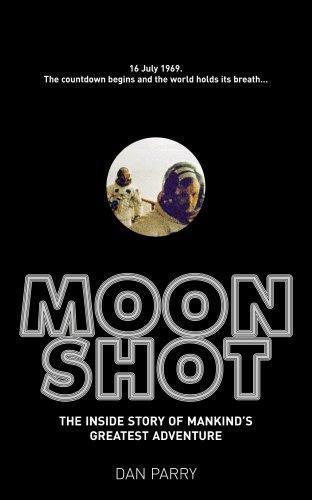
Moonshot: The Inside Story of Mankind's Greatest Adventure
by
Dan Parry
Published 22 Jun 2009
Soviet Union and see Soviet Union Apollo 1 Apollo 2 Apollo 3 Apollo 4 Apollo 5 Apollo 6 Apollo 7 Apollo 8 Apollo 9 Apollo 10 Apollo 11 abort procedures adapter alarms command module Columbia Command Module Pilot (CMP) see also Collins, Michael communications computers and computer programs conspiracy theorists and contractors, role in building of descent from lunar orbit to moon surface (DOI) (PDI) disaster, preparation for experiments, scientific flight-plan launch vehicle/fuel tanks joystick landing sites launch launch preparation life support system, portable (PLSS) lunar extra-vehicular visor assembly (LEVA) lunar orbit insertion (LOI) LOI-2 lunar orbit rendezvous (LOR) lunar orbit, getting into lunar orbit, leaving meals mission patch Mobile Quarantine Facility (MQF) modular equipment stowage assembly (MESA) Official Flight Kit 'parking orbit' passive thermal control (PTC) personal preference kits (PPKs) PR and press primary guidance and navigation system (PGNS) readiness review re-entry and landing rendezvous rest periods rockets see also Saturn V rules, mission selection process for mission service module solar wind collector (SWC) stack ('space vehicle') suits, pressure toilet facilities training for mission trans-lunar injection (TLI) pictures, TV and camera UFO sighting, possible water supply Apollo 12 Apollo 13 Apollo 14 Apollo 16 Apollo 17 Apollo Spacecraft Program Office Apollo-Soyuz Test Project Armstrong, Eric ('Ricky') Armstrong, Janet Armstrong, Karen Armstrong, Mark Armstrong, Neil Aldrin and ambition to be an astronaut Apollo 8 career post-Apollo college Collins and early life Ed White and Gemini flights heart rate on landing, Apollo 11 landing on/descent to the moon (DOI) (PDI), Apollo 11 launch, Apollo 11 launch preparation, Apollo 11 lunar landing research vehicle and lunar orbit insertion, Apollo 11 moon walk, Apollo 11 navy service on chances of survival, Apollo 11 'one small step' line pictures, TV and camera, Apollo 11 position in Apollo program PR duties, Apollo 11 quarantine, Apollo 11 re-entry and landing, Apollo 11 rendezvous techniques return to Eagle, Apollo 11 return to earth, Apollo 11 selected for Apollo 11 selected to be first man to walk on the moon test pilot training undocking, Apollo 11 view from Apollo 11 X-15 Armstrong, Stephen Armstrong, Viola Bales, Steve Bassett, Charlie Bassett, Jeannie Bean, Alan Bell Aerosystems Belyaev, Pavel Beregovoi, Georgi Bondarenko, Valentin Borman, Frank Braun, Dr Wernher von Brown, Dick Calle, Paul CapCom see also Mission Control Center, Houston Cape Kennedy see Kennedy Space Center Carlton, Bob Carpentier, Bill Cernan, Gene Chaffee, Roger Charlesworth, Cliff CIA Cobb, Jerrie Cold War see also Soviet Union Collins, Major General James Collins, Michael Air Force Apollo Project, position within Buzz Aldrin and career post-NASA childhood command module pilot (CMP) Gemini flights joins NASA launch preparation, Apollo 11 lunar orbit insertion (LOI), Apollo 11 LOI-2, Apollo 11 meals on Apollo 11 moon, on appearance of moon orbit, Apollo 11 Neil Armstrong and pictures, TV and camera, Apollo 11 pressure suits, hatred of quarantine, Apollo 11 re-entry and landing, Apollo 11 return to earth, Apollo 11 selected for mission, Apollo 11 task list, Apollo 11 trans-lunar injection (TLI), Apollo 11 training, Apollo 11 undocking, Apollo 11 views from Apollo 11 weightlessness, Apollo 11 Collins, Patricia command modules Block I Block II see also Apollo 11 Conrad, Pete Cooper, Gordon Cronkite, Walter Cunningham, Walter Day, Dick Deiterich, Chuck descent orbit insertion (DOI) direct ascent Duke, Charlie Early Apollo Scientific Experiments Package (EASEP) earth orbit rendezvous (EOR) Edwards Air Force Base Ellington Air Force Base extra-vehicular activities (EVAs) early NASA Apollo 11 Gemini Soviet Explorer 1 F-1 engine Faget, Max Fendell, Ed Feoktistiv, Konstantin Freeman, Ted free return Frick, Charles Gagarin, Yuri Garman, Jack Gemini, Project Gemini 4 Gemini 5 Gemini 6 Gemini 7 Gemini 8 Gemini 9 Gemini 10 Gemini 11 Gemini 12 Gemini 13 Gilruth, Dr Robert Glenn, John Goodard Space Flight Center, Maryland Goldstone communications station, California Gordon, Dick Greene, Jay Grissinger, John Grissom, Gus Grumman Corporation Haise, Fred Hamblin, Dora Jane Hatleburg, Lieutenant Clancy Hinch, Derryn Hirasaki, John Honeysuckle communications station Hornet, USS Houbolt, John Humphrey, Hubert In the Shadow of the Moon International Space Station Irwin, Jim Jodrell Bank Observatory Johnson, Lyndon Johnson, Sam Johnson Space Center, Houston see also Manned Spaceflight Center, Houston Jupiter booster Kelly, Tom Kennedy Space Center, Florida Kennedy, John F.
…
Soviet Union and see Soviet Union Apollo 1 Apollo 2 Apollo 3 Apollo 4 Apollo 5 Apollo 6 Apollo 7 Apollo 8 Apollo 9 Apollo 10 Apollo 11 abort procedures adapter alarms command module Columbia Command Module Pilot (CMP) see also Collins, Michael communications computers and computer programs conspiracy theorists and contractors, role in building of descent from lunar orbit to moon surface (DOI) (PDI) disaster, preparation for experiments, scientific flight-plan launch vehicle/fuel tanks joystick landing sites launch launch preparation life support system, portable (PLSS) lunar extra-vehicular visor assembly (LEVA) lunar orbit insertion (LOI) LOI-2 lunar orbit rendezvous (LOR) lunar orbit, getting into lunar orbit, leaving meals mission patch Mobile Quarantine Facility (MQF) modular equipment stowage assembly (MESA) Official Flight Kit 'parking orbit' passive thermal control (PTC) personal preference kits (PPKs) PR and press primary guidance and navigation system (PGNS) readiness review re-entry and landing rendezvous rest periods rockets see also Saturn V rules, mission selection process for mission service module solar wind collector (SWC) stack ('space vehicle') suits, pressure toilet facilities training for mission trans-lunar injection (TLI) pictures, TV and camera UFO sighting, possible water supply Apollo 12 Apollo 13 Apollo 14 Apollo 16 Apollo 17 Apollo Spacecraft Program Office Apollo-Soyuz Test Project Armstrong, Eric ('Ricky') Armstrong, Janet Armstrong, Karen Armstrong, Mark Armstrong, Neil Aldrin and ambition to be an astronaut Apollo 8 career post-Apollo college Collins and early life Ed White and Gemini flights heart rate on landing, Apollo 11 landing on/descent to the moon (DOI) (PDI), Apollo 11 launch, Apollo 11 launch preparation, Apollo 11 lunar landing research vehicle and lunar orbit insertion, Apollo 11 moon walk, Apollo 11 navy service on chances of survival, Apollo 11 'one small step' line pictures, TV and camera, Apollo 11 position in Apollo program PR duties, Apollo 11 quarantine, Apollo 11 re-entry and landing, Apollo 11 rendezvous techniques return to Eagle, Apollo 11 return to earth, Apollo 11 selected for Apollo 11 selected to be first man to walk on the moon test pilot training undocking, Apollo 11 view from Apollo 11 X-15 Armstrong, Stephen Armstrong, Viola Bales, Steve Bassett, Charlie Bassett, Jeannie Bean, Alan Bell Aerosystems Belyaev, Pavel Beregovoi, Georgi Bondarenko, Valentin Borman, Frank Braun, Dr Wernher von Brown, Dick Calle, Paul CapCom see also Mission Control Center, Houston Cape Kennedy see Kennedy Space Center Carlton, Bob Carpentier, Bill Cernan, Gene Chaffee, Roger Charlesworth, Cliff CIA Cobb, Jerrie Cold War see also Soviet Union Collins, Major General James Collins, Michael Air Force Apollo Project, position within Buzz Aldrin and career post-NASA childhood command module pilot (CMP) Gemini flights joins NASA launch preparation, Apollo 11 lunar orbit insertion (LOI), Apollo 11 LOI-2, Apollo 11 meals on Apollo 11 moon, on appearance of moon orbit, Apollo 11 Neil Armstrong and pictures, TV and camera, Apollo 11 pressure suits, hatred of quarantine, Apollo 11 re-entry and landing, Apollo 11 return to earth, Apollo 11 selected for mission, Apollo 11 task list, Apollo 11 trans-lunar injection (TLI), Apollo 11 training, Apollo 11 undocking, Apollo 11 views from Apollo 11 weightlessness, Apollo 11 Collins, Patricia command modules Block I Block II see also Apollo 11 Conrad, Pete Cooper, Gordon Cronkite, Walter Cunningham, Walter Day, Dick Deiterich, Chuck descent orbit insertion (DOI) direct ascent Duke, Charlie Early Apollo Scientific Experiments Package (EASEP) earth orbit rendezvous (EOR) Edwards Air Force Base Ellington Air Force Base extra-vehicular activities (EVAs) early NASA Apollo 11 Gemini Soviet Explorer 1 F-1 engine Faget, Max Fendell, Ed Feoktistiv, Konstantin Freeman, Ted free return Frick, Charles Gagarin, Yuri Garman, Jack Gemini, Project Gemini 4 Gemini 5 Gemini 6 Gemini 7 Gemini 8 Gemini 9 Gemini 10 Gemini 11 Gemini 12 Gemini 13 Gilruth, Dr Robert Glenn, John Goodard Space Flight Center, Maryland Goldstone communications station, California Gordon, Dick Greene, Jay Grissinger, John Grissom, Gus Grumman Corporation Haise, Fred Hamblin, Dora Jane Hatleburg, Lieutenant Clancy Hinch, Derryn Hirasaki, John Honeysuckle communications station Hornet, USS Houbolt, John Humphrey, Hubert In the Shadow of the Moon International Space Station Irwin, Jim Jodrell Bank Observatory Johnson, Lyndon Johnson, Sam Johnson Space Center, Houston see also Manned Spaceflight Center, Houston Jupiter booster Kelly, Tom Kennedy Space Center, Florida Kennedy, John F.
…
Sparks, Moon Landing, Project Apollo, Dodd, Mead, 1970 Glen Swanson (ed.), Before This Decade Is Out, University Press of Florida, 2002 Loyd Swenson, James Grimwood and Charles Alexander, This New Ocean, NASA, 1998 Guenter Wendt, The Unbroken Chain, Apogee Books, 2001 Websites history.nasa.gov/monograph4 history.msfc.nasa.gov/saturn_apollo/first_saturn_rocket.html history.nasa.gov/SP-4205 www.thespacereview.com/article/735/1 www.chron.com/content/chronicle/special/jfk/houston/stories/dinner.html www.britannica.com/eb/article-9057747/Outer-Space-Treaty#145193.hook www.lbjlib.utexas.edu/johnson/archives.hom/speeches.hom/670127.asp www.hq.nasa.gov/alsj/a11/a11.1201-fm.html en.wikipedia.org/wiki/Apollo_Guidance_Computer www.nasm.si.edu/exhibitions/attm/a11.jo.fc.1.html www.thespacereview.com/article/188/3 www.thespacereview.com/article/735/1 www.pbs.org/wgbh/amex/moon/peopleevents/p_wives.html news.bbc.co.uk/1/hi/magazine/7085003.stm www.hq.nasa.gov/pao/History/SP-4204 www.parkes.atnf.csiro.au/news_events/apollo11 www.uss-hornet.org/history/apollo www.lpi.usra.edu/lunar/missions/apollo/apollo_11/samples news.bbc.co.uk/1/hi/world/americas/2272321.stm news.bbc.co.uk/1/hi/sci/tech/2410431.stm Use the following NASA link to find out when the International Space Station can be seen with the naked eye above your home town: spaceflight.nasa.gov/realdata/sightings/index.html INDEX Aaron, John Abernathy, Reverend Ralph Agena target vehicle Air and Space Museum see Smithsonian Institution Aldrin, Buzz (Edwin Eugene Aldrin Jr) Apollo 8 career post-Apollo 11 childhood Gemini flights landing on the moon launch, Apollo 11 launch preparation, Apollo 11 MIT moon, on appearance of moon walk, NASA, joins Neil Armstrong and position in Apollo program PR duties, Apollo 11 quarantine, Apollo 11 re-entry and landing, Apollo 11 rendezvous expert return to Eagle, Apollo 11 return to earth, Apollo 11 selected for Apollo 11 selection for moon walk on surface of moon, Apollo 11 training undocking, Apollo 11 command and lunar modules US Navy Aldrin, Gene Aldrin, Joan Algranti, Joe Anders, Bill Apollo, Project Apollo 1 tragedy, effect upon costs of Kennedy and see Kennedy, John F. Soviet Union and see Soviet Union Apollo 1 Apollo 2 Apollo 3 Apollo 4 Apollo 5 Apollo 6 Apollo 7 Apollo 8 Apollo 9 Apollo 10 Apollo 11 abort procedures adapter alarms command module Columbia Command Module Pilot (CMP) see also Collins, Michael communications computers and computer programs conspiracy theorists and contractors, role in building of descent from lunar orbit to moon surface (DOI) (PDI) disaster, preparation for experiments, scientific flight-plan launch vehicle/fuel tanks joystick landing sites launch launch preparation life support system, portable (PLSS) lunar extra-vehicular visor assembly (LEVA) lunar orbit insertion (LOI) LOI-2 lunar orbit rendezvous (LOR) lunar orbit, getting into lunar orbit, leaving meals mission patch Mobile Quarantine Facility (MQF) modular equipment stowage assembly (MESA) Official Flight Kit 'parking orbit' passive thermal control (PTC) personal preference kits (PPKs) PR and press primary guidance and navigation system (PGNS) readiness review re-entry and landing rendezvous rest periods rockets see also Saturn V rules, mission selection process for mission service module solar wind collector (SWC) stack ('space vehicle') suits, pressure toilet facilities training for mission trans-lunar injection (TLI) pictures, TV and camera UFO sighting, possible water supply Apollo 12 Apollo 13 Apollo 14 Apollo 16 Apollo 17 Apollo Spacecraft Program Office Apollo-Soyuz Test Project Armstrong, Eric ('Ricky') Armstrong, Janet Armstrong, Karen Armstrong, Mark Armstrong, Neil Aldrin and ambition to be an astronaut Apollo 8 career post-Apollo college Collins and early life Ed White and Gemini flights heart rate on landing, Apollo 11 landing on/descent to the moon (DOI) (PDI), Apollo 11 launch, Apollo 11 launch preparation, Apollo 11 lunar landing research vehicle and lunar orbit insertion, Apollo 11 moon walk, Apollo 11 navy service on chances of survival, Apollo 11 'one small step' line pictures, TV and camera, Apollo 11 position in Apollo program PR duties, Apollo 11 quarantine, Apollo 11 re-entry and landing, Apollo 11 rendezvous techniques return to Eagle, Apollo 11 return to earth, Apollo 11 selected for Apollo 11 selected to be first man to walk on the moon test pilot training undocking, Apollo 11 view from Apollo 11 X-15 Armstrong, Stephen Armstrong, Viola Bales, Steve Bassett, Charlie Bassett, Jeannie Bean, Alan Bell Aerosystems Belyaev, Pavel Beregovoi, Georgi Bondarenko, Valentin Borman, Frank Braun, Dr Wernher von Brown, Dick Calle, Paul CapCom see also Mission Control Center, Houston Cape Kennedy see Kennedy Space Center Carlton, Bob Carpentier, Bill Cernan, Gene Chaffee, Roger Charlesworth, Cliff CIA Cobb, Jerrie Cold War see also Soviet Union Collins, Major General James Collins, Michael Air Force Apollo Project, position within Buzz Aldrin and career post-NASA childhood command module pilot (CMP) Gemini flights joins NASA launch preparation, Apollo 11 lunar orbit insertion (LOI), Apollo 11 LOI-2, Apollo 11 meals on Apollo 11 moon, on appearance of moon orbit, Apollo 11 Neil Armstrong and pictures, TV and camera, Apollo 11 pressure suits, hatred of quarantine, Apollo 11 re-entry and landing, Apollo 11 return to earth, Apollo 11 selected for mission, Apollo 11 task list, Apollo 11 trans-lunar injection (TLI), Apollo 11 training, Apollo 11 undocking, Apollo 11 views from Apollo 11 weightlessness, Apollo 11 Collins, Patricia command modules Block I Block II see also Apollo 11 Conrad, Pete Cooper, Gordon Cronkite, Walter Cunningham, Walter Day, Dick Deiterich, Chuck descent orbit insertion (DOI) direct ascent Duke, Charlie Early Apollo Scientific Experiments Package (EASEP) earth orbit rendezvous (EOR) Edwards Air Force Base Ellington Air Force Base extra-vehicular activities (EVAs) early NASA Apollo 11 Gemini Soviet Explorer 1 F-1 engine Faget, Max Fendell, Ed Feoktistiv, Konstantin Freeman, Ted free return Frick, Charles Gagarin, Yuri Garman, Jack Gemini, Project Gemini 4 Gemini 5 Gemini 6 Gemini 7 Gemini 8 Gemini 9 Gemini 10 Gemini 11 Gemini 12 Gemini 13 Gilruth, Dr Robert Glenn, John Goodard Space Flight Center, Maryland Goldstone communications station, California Gordon, Dick Greene, Jay Grissinger, John Grissom, Gus Grumman Corporation Haise, Fred Hamblin, Dora Jane Hatleburg, Lieutenant Clancy Hinch, Derryn Hirasaki, John Honeysuckle communications station Hornet, USS Houbolt, John Humphrey, Hubert In the Shadow of the Moon International Space Station Irwin, Jim Jodrell Bank Observatory Johnson, Lyndon Johnson, Sam Johnson Space Center, Houston see also Manned Spaceflight Center, Houston Jupiter booster Kelly, Tom Kennedy Space Center, Florida Kennedy, John F.
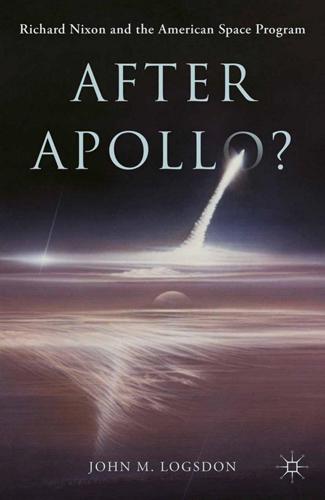
After Apollo?: Richard Nixon and the American Space Program
by
John M. Logsdon
Published 5 Mar 2015
You are welcome in our quarters at any time.” Instead of dining with the Apollo 11 crew on July 15, Richard Nixon called them as they were having dinner and sent them a telegram saying: “On the eve of your epic mission, I want you to know that my hopes and my prayers—and those of all Americans—go with you . . . It is now your moment.”17 Apollo 11, Richard Nixon, and John F. Kennedy There was little inclination on Richard Nixon’s part to acknowledge President John Kennedy’s role in initiating the lunar landing program as the launch of Apollo 11 approached. Indeed, throughout the many celebrations of the Apollo 11 achievement, Nixon never once publicly spoke Kennedy’s name.
…
In addition, the carrier Kennedy and her battle group were on a just-begun deployment as part of the Sixth Fleet in the Mediterranean Sea in mid-1969; it would have taken a major effort to re-deploy the Kennedy to the Pacific Ocean for the sole purpose of being the recovery ship for Apollo 11. So the notion that the Kennedy might have served as the Apollo 11 recovery ship if not for Nixon White House ill-will is almost certainly one of the long-standing inaccuracies in the history of Apollo 11. (The worst, of course, being that the mission never happened and that there has been since 1969 a well-orchestrated conspiracy to conceal this reality.) Final Preparations With most preparations for President Nixon’s involvement with Apollo 11 in place, Frank Borman in early July made a quick visit to the Soviet Union.
…
There was some concern that the trajectory of the Soviet mission might intersect with Apollo 11 while both were in lunar orbit, resulting in a collision. At NASA’s request, Borman used the White House–Kremlin “hot line” to send a message to Keldysh requesting the orbital parameters of the Soviet probe. On July 17, Keldysh replied with the requested information, saying that “the orbit of probe Luna-15 does not intersect the trajectory of Apollo-11 spacecraft.” Never before had the Soviet Union provided such detailed information on one of its ongoing space missions. While Luna-15 did reach lunar orbit, it crashed onto the Moon on July 21 as the Apollo 11 crew was preparing to lift off of the lunar surface.22 By July 14, Borman was back from his trip to the Soviet Union; he would stay involved with President Nixon until the Apollo 11 astronauts were safely back on Earth on July 24.
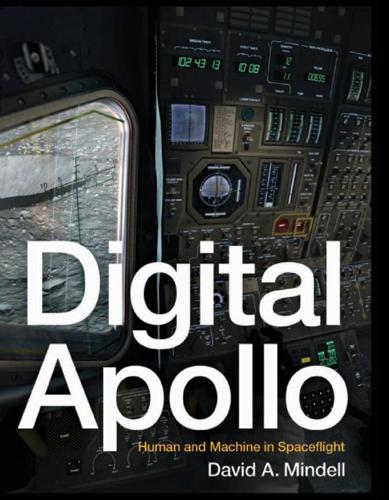
Digital Apollo: Human and Machine in Spaceflight
by
David A. Mindell
Published 3 Apr 2008
In any case, the P66 Auto function relied primarily on the inertial system and not on radar to measure velocity. 9 ‘‘Pregnant with alarm’’: Apollo 11 1. Numerous versions of the Apollo 11 landing exist in the literature but I have compiled this account from a few primary sources, and will cite the major ones here: NASA’s ‘‘Apollo 11 Mission Report’’; ‘‘Apollo 11 Technical Air-to-Ground Voice Transcription’’; ‘‘Apollo 11 On-Board Voice 296 Notes to Pages 220–227 Transcription’’; and ‘‘Apollo 11 Technical Debrief.’’ The best technical account is Floyd V. Bennett, ‘‘Apollo Experience Report: Mission Planning for Lunar Module Descent and Ascent,’’ by the man who planned the descent, for both Apollo 11 and 12 landings.
…
Inadvertent LPD in Bennett, ‘‘Apollo Experience Report.’’ 12. Bennett interview with Ross-Nazzal, 24; Bennett, ‘‘Apollo 11 LM Descent Postflight Analysis’’; figure 12 seems to show that Armstrong was well outside the abort boundary between 200 and 100 feet. 13. Mailer, Of a Fire on the Moon, 380. 14. Bennett, ‘‘Apollo 11 LM Approach and Landing Phase Groundtrack’’; and idem. ‘‘Apollo 11 LM Descent Postflight Analysis,’’ 6. 15. Bennett, ‘‘Apollo 11 LM Descent Postflight Analysis,’’ 9. 16. Hansen, First Man, 467. 17. Martin, ‘‘Apollo 11: 25 Years Later.’’ Notes to Pages 228–236 297 18. My explanation of the program alarms is based on: George Cherry, ‘‘Exegesis of the 1201 and 1202 Alarms Which Occurred During the Mission G Lunar Landing,’’ MIT Instrumentation Laboratory memo AG#370-69, August 4, 1969; Clint Tillman, ‘‘Program Alarms in Powered Descent, Apollo 11,’’ Grumman Aircraft Engineering Corporation Memo #LAV-500-940, July 31, 1969; Clint Tillman, ‘‘Simulating the RR-CDU Interfaces When the RR Is in the SLEW or AUTO (not LGC) Mode in the FMES/FCI Laboratory,’’ Grumman Aircraft Engineering Corporation Memo #LMO-500-723, August 13, 1969.
…
Real landings, with skilled but fallible people flying magnificent but imperfect machines in less than ideal circumstances, would begin to answer these questions. 9 ‘‘Pregnant with alarm’’: Apollo 11 Armstrong, sitting in the commander’s seat . . . is a man who is not only a machine himself in the links of these networks . . . a man somewhat more than a pilot, somewhat more indeed than a superpilot, is in fact a veritable high priest of the forces of society and scientific history concentrated in that mini-cathedral, a general of the forces of technology . . . of the vast multibillion dollar technological bands which belted the very economy of the nation . . . the methods of the hospital mixed with the methods of the football team. —Norman Mailer, Of a Fire on the Moon Apollo 11 was a test flight whose major goal was simply to prove the feasibility of lunar landing with the Apollo system. Most aspects of the flight to the moon had been tried before. Apollo 10 had gone right down to 50,000 feet and then returned home, only a PDI burn remaining between it and the lunar surface. Yet from that point downward everything was new on Apollo 11—accomplished many times before, but only in simulation. The Apollo 11 landing was the climax of the development program, of Apollo’s methods of integrating the efforts of diverse organizations into a flight system.

Shoot for the Moon: The Space Race and the Extraordinary Voyage of Apollo 11
by
James Donovan
Published 12 Mar 2019
The “Great Train Wreck”: the Apollo command-module simulator at the Cape. The traditional steak-and-eggs breakfast on the morning of the launch of Apollo 11 (left to right): Bill Anders, Armstrong, Collins, Aldrin, and Deke Slayton. Armstrong (foreground) and Collins, followed by a technician, cross the access walkway to the command module. Apollo 11 launches at 9:32 a.m. EDT on July 16, 1969, from pad A, launch complex 39. Thousands of reporters watched from the press site three miles away as Apollo 11 launched. The launch team rise to watch as Apollo 11 clears the tower. Deke Slayton is in the second row in the dark pullover shirt. At a July 18 pool party at the Armstrong house, (left to right) Jan Armstrong, Pat Collins, and Joan Aldrin meet the press on the front lawn.
…
The second evening on the carrier, Collins entered the command module through the tunnel connecting it to their trailer, and with a ballpoint pen, above the sextant mount on the wall of the lower equipment bay, he scrawled this legend: Spacecraft 107—alias Apollo 11 alias “Columbia” The Best Ship to Come Down the Line God Bless Her Michael Collins CMP Back in Houston, Steve Bales had left after the ascent shift, his last one on Apollo 11. He went home and slept for a long time. The next day, he drove back to work and walked into the staff support room. Jack Garman was there. Bales walked over to Garman, shook his hand, and said, “Jack, thanks for everything.” Then the two engineers got back to their jobs. At that point, the Apollo 11 crew was still in space, and Garman was providing backroom support for the onboard computer.
…
At a July 18 pool party at the Armstrong house, (left to right) Jan Armstrong, Pat Collins, and Joan Aldrin meet the press on the front lawn. (AP) Mission Control during the Apollo 11 landing. The flight dynamics staff-support room during Apollo 11. Jack Garman, wearing a dark jacket, sits second from left in the front row. Garman (shown here on the right receiving an award from Chris Kraft after Apollo 8) was a computer whiz kid, only twenty-four during Apollo 11. Though it had the equivalent of only 72 kilobytes of memory, the rope-wired Apollo guidance computer was extremely reliable. Jack Garman’s cheat sheet, which he consulted to make sure the 1201 and 1202 alarms would not impede the landing.
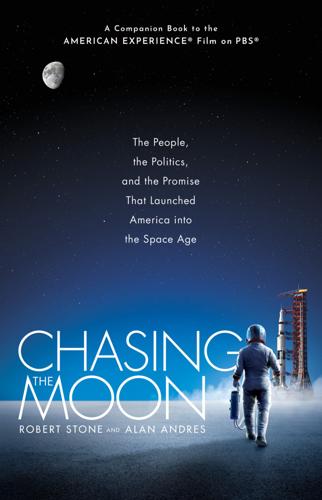
Chasing the Moon: The People, the Politics, and the Promise That Launched America Into the Space Age
by
Robert Stone
and
Alan Andres
Published 3 Jun 2019
Instead, NASA was introducing the newly named crew of what was expected to be the first mission to attempt a landing on the Moon in just six months. Designated Apollo 11, it would undertake the landing as long as Apollo 9—the debut flight of the lunar module in Earth’s orbit, in March—and Apollo 10—a test of the lunar module’s systems a mere ten miles above the Moon’s surface, two months later—were both successful. All three of the Apollo 11 astronauts were known to those who had covered the space program in recent years. The commander was Neil Armstrong, well remembered from the crisis on Gemini 8; the lunar-module pilot was Gemini 12’s ace spacewalker Buzz Aldrin; and the command-module pilot was Michael Collins, a veteran of Gemini 10.
…
And unlike the Apollo 8 crew, Armstrong, Aldrin, and Collins were fairly reserved when appearing in public. No one could argue with Deke Slayton’s selection of Armstrong to command this mission. He and Aldrin had just come from serving as part of the Apollo 8 backup crew, so their assignment to Apollo 11 followed Slayton’s normal rotation. Michael Collins, who had been replaced on Apollo 8 by Jim Lovell due to his surgery, had since returned to flight status and been reassigned by Slayton to Apollo 11’s third couch. The ungainly and dangerous Lunar Landing Research Vehicle was nicknamed the “Flying Bedstead.” In May 1968, Neil Armstrong narrowly escaped an LLRV accident in Houston when his vehicle suddenly became dangerously unstable, causing him to fire his ejection seat when only 200 feet above the ground.
…
And it had to have a sustainable cooling system that would prevent the person wearing it from overheating. Buzz Aldrin, Neil Armstrong, and Michael Collins, the “amiable strangers” of Apollo 11, photographed on the deck of a modified landing craft used for spacecraft water recovery training in the Gulf of Mexico. The preparations required the crew to practice changing into sealed garments, an attempt to keep the astronauts physically isolated in the event they returned to Earth infected with an extraterrestrial life form. Apollo 11’s chosen landing site was a relatively level and smooth area in the Sea of Tranquility, near the lunar equator. It had been photographed from orbit by the Lunar Orbiter mapping probe and later by the Apollo 8 crew.
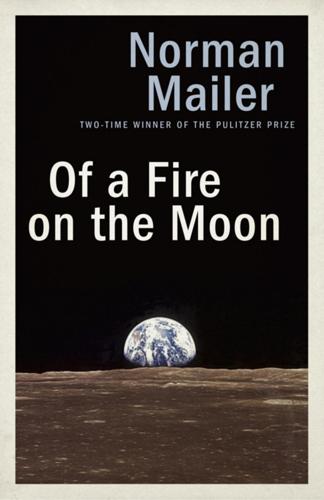
Of a Fire on the Moon
by
Norman Mailer
Published 2 Jun 2014
This is the transcript on that mighty event: CAPCOM: Apollo 11, this is Houston. We are slightly less than one minute to ignition and everything is GO. COLLINS: Roger. ARMSTRONG: Ignition. (The sound of rocket motors are faintly heard.) CAPCOM: We confirm ignition and the thrust is GO. CAPCOM: Apollo 11, this is Houston at 1 minute. Trajectory and guidance look good and the stage is good. Over. COLLINS: Apollo 11. Roger. CAPCOM: Apollo 11, this is Houston. Thrust is good. Everything is still looking good.… COLLINS: Roger. CAPCOM: Apollo 11, this is Houston. Around three and a half minutes.
…
Around three and a half minutes. You’re still looking good. Your predicted cutoff is right on the nominal. ARMSTRONG: Roger. Apollo 11’s GO. CAPCOM: Apollo 11, this is Houston. You are GO at five minutes. ARMSTRONG: Roger, we’re GO. CAPCOM: Apollo 11, this is Houston. We show cutoff and we copy the numbers in Noun 62 … COLLINS: Roger, Houston. Apollo 11. We’re reading the VI 35579 and the EMS was plus 3.3. Over. CAPCOM: Roger. Plus 3.3 on the EMS. And we copy the VI. ARMSTRONG: Hey Houston, Apollo 11. This Saturn gave us a magnificent ride. CAPCOM: Roger, 11, we’ll pass that on, and it looks like you are well on your way now.
…
, and worked their muscles with a spring exerciser in obedience to the depressing discovery by previous flights that muscles go slack in weightlessness at a much accelerated pace. There, all resemblance to America’s good morning could end—the radio was working. They were on. There would be voices in their ear for the next sixteen hours. CAPCOM: Apollo 11, Apollo 11, this is Houston. Over. ALDRIN: Good morning, Houston. Apollo 11. CAPCOM: Roger, Apollo 11. Good morning. When you’re ready to copy, 11, I’ve got a couple of small flight plan updates and your consumable updates, and the morning news, I guess. Over. COLLINS: Standing by for your updates. Over. CAPCOM: In your postsleep checklist and in all other postsleep checklists, we’d like you to delete the statement that says AUTO RCS jet select 16 to ON, and what we’re doing here is picking this up in the procedure for exiting PTC that’s in your CSM checklist and in the CSM checklist on page foxtrot 9-8—if you want to turn to that—we’d like to change the order of the steps in that.
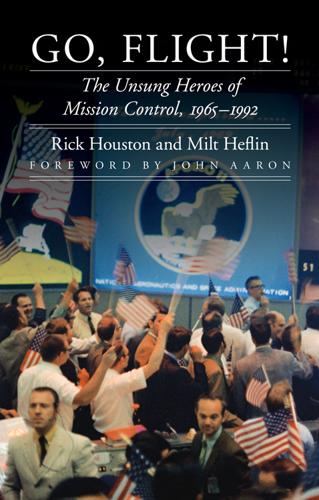
Go, Flight!: The Unsung Heroes of Mission Control, 1965-1992
by
Rick Houston
and
J. Milt Heflin
Published 27 Sep 2015
IEEE Spectrum 1 (April 2005). http://spectrum.ieee.org/aerospace/space-flight/apollo-13-we-have-a-solution/4. “Console Audio of Apollo 11 Landing.” NASA Office of Logic Design. http://www.klabs.org/history/apollo_11_alarms/console/. “Dallas Family’s Tradition Boosts NASA for 110 Flights, Says Thank You on Final Shuttle Flight.” NASA, 9 July 2011. http://www.nasa.gov/mission_pages/shuttle/shuttlemissions/sts135/135_roses.html. Dyson, Marianne J. “NASA’s First Women Flight Controllers.” Copyright 2012 by Marianne Dyson. Last updated 8 February 2014. http://mariannedyson.com/women.html. “Experience the Apollo 11 Lunar Landing.” Thamtech LLC. www.firstmenonthemoon.com.
…
When I called Steve Bales at the appointed time for our interview, he began the conversation by saying that he had already ordered a couple of the NASCAR-related books that I have written and asked if I would sign them for a friend of his. Wait a second. Steve Bales—the Steve Bales, of Apollo 11 lunar descent fame—was asking me for my autograph? Then, when Steve read a draft of the Apollo 11 chapter, he again surprised me by sending me a lengthy e-mail describing in detail what he had liked about it. I immediately printed it out and placed it next to my computer screen. Others dug into old mission reports and research material to refresh their memories.
…
The telemetry, electrical, and communications (telcom) position was renamed telmu following Apollo 11 when responsibility for the moonwalkers’ Extravehicular Mobility Unit (EMU) was added and communications moved to the consolidated INCO position. The EMUs had until then been monitored down on the far left-hand end of the Trench, after the spots were vacated by the booster controllers. William L. “Bill” Peters, Donald R. “Don” Puddy, Jack Knight Jr., W. Merlin Merrit, Gary C. Watros, and Robert H. “Bob” Heselmeyer all worked the console. Bill Peters sat the telcom console during the flights of Apollo 9 and 10, and then moved down a row to watch over Apollo 11 Lunar Module pilot Buzz Aldrin’s EMU during the first moonwalk.
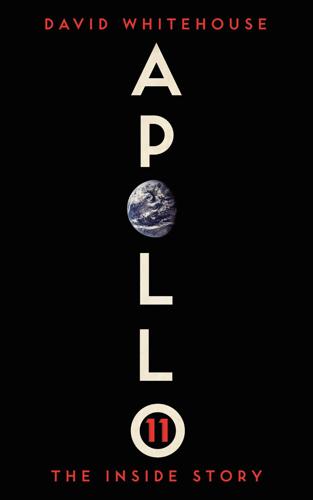
Apollo 11: The Inside Story
by
David Whitehouse
Published 7 Mar 2019
According to the capsule communicator for that phase of the mission, Michael Collins, soon to become a member of the historic Apollo 11 crew, Apollo 8 and the first leaving may in the long term be considered as more important than the first landing: I think Apollo 8 was about leaving and Apollo 11 was about arriving, leaving Earth and arriving at the moon. As you look back 100 years from now, which is more important, the idea that people left their home planet or the idea that people arrived at their nearby satellite? I’m not sure, but I think probably you would say Apollo 8 was of more significance than Apollo 11, even though today we regard Apollo 11 as being the showpiece and the zenith of the Apollo program but, as I say, 100 years from now, historians may say Apollo 8 is more significant; it’s more significant to leave than it is to arrive.
…
Index A Aaron, John 1 AFD Conference Loop 1 Agena target vehicle 1, 2, 3 Agnew, Spiro 1, 2 Aldrin, Edwin (Buzz) after Apollo program 1 Apollo 11 1, 2, 3, 4, 5 background 1 oldest moonwalker alive 1 and being first out of Lunar Module 1 Gemini 12 1 Moon landing 1, 2 quotes 1, 2, 3, 4, 5, 6 see also Apollo 11 Aldrin, Edwin Sr 1 Aldrin, Joan 1, 2 Aldrin, Lois 1 all-up testing 1 Allen, Harvey 1 ‘America’ (Apollo 17 Command Module) 1 Anders, William (Bill) 1, 2, 3, 4, 5, 6 quotes 1, 2 ‘Angry Alligator’ 1 Anikeyev, Ivan 1 ‘Antares’ (Apollo 14 Lunar Module) 1, 2 Apollo 1 1, 2 Apollo 4 1 Apollo 5 1 Apollo 6 1 Apollo 7 1, 2 Apollo 8 1, 2, 3, 4 Apollo 9 1, 2, 3, 4, 5 Apollo 10 1, 2, 3, 4, 5, 6, 7 Apollo 11 abort handle 1 Armstrong chosen as commander 1 astronauts on lunar surface 1 chosen for first lunar landing 1 descent towards lunar surface 1 first man on lunar surface issue 1 journey to the Moon 1 landing site search 1 launch 1 orbiting Moon 1 pre-launch preparation 1 radars 1 return to Earth 1 significance 1 timing of mission 1 touchdown 1 Apollo 12 1, 2, 3, 4, 5, 6 Apollo 13 1 abort decision 1 crew selection 1 oxygen tank problems 1, 2 preparation 1 re-entry 1 return to Earth 1 water problem 1 Apollo 14 1, 2 Apollo 15 1, 2 Apollo 16 1 Apollo 17 1 Apollo program announcement 1 as faltering 1 mission cancellations 1, 2, 3 planning for 1 summary 1 White House discussion 1 Apollo-Soyuz docking mission 1 Apollo-Saturn 500-F 1 ‘Aquarius’ (Apollo 13 Lunar Module) 1, 2, 3 Armstrong, Carol (née Knight) 1 Armstrong, Jan 1 Armstrong, Neil after Apollo program 1, 2 Apollo 11 1, 2, 3, 4, 5 chosen as commander 1 background 1, 2, 3 death and memorial 1 first Moon landing contender 1 and being first out of Lunar Module 1 first words on Moon 1 Gemini 8 1 LLRV incident 1 and Lovell 1 Moon landing 1, 2 quotes 1, 2, 3, 4 on Apollo 11 1, 2, 3, 4, 5, 6 recruitment 1, 2 see also Apollo 11 Armstrong, Stephen Koenig 1 Atlas rocket 1, 2, 3, 4 ‘Aurora 7’ (Mercury capsule) 1 B Babakin, Georgy 1 Babbitt, Don 1 Baikonur 1 Bales, Steve 1 Bassett, Charles 1 Bean, Alan 1 Becker, Karl 1 Belyayev, Pavel 1, 2, 3, 4, 5 Beregovoi, Georgi 1, 2, 3 Beriya, Lavrenti 1 Berlin Wall 1 Bibby, Cecilia 1 Blagonravov, Anatoli 1 Block D booster stage 1, 2 Blok E 1 Borman, Frank and Apollo 1 1, 2, 3 Apollo 8 1, 2, 3, 4, 5, 6 Gemini 7 1, 2 quotes 1, 2, 3, 4, 5, 6 recruitment 1 and returning Moon astronauts 1 Borman, Susan 1 Bourgin, Si 1 Brezhnev, Leonid 1, 2, 3, 4, 5, 6 Bykovsky, Valeri 1, 2, 3, 4, 5, 6 C capsules, design 1, 2 Carlton, Bob 1, 2 Carpenter, Scott 1, 2, 3, 4 Carr, Gerry 1 Cernan, Gene 1, 2, 3, 4, 5, 6 Apollo 10 1 Apollo 17 1 last words on Moon 1 quotes 1, 2, 3, 4 on special few who went to Moon 1 Cernan, Tracy 1, 2 Chaffee, Roger 1 ‘Challenger’ (Apollo 17 Lunar Module) 1, 2 Challenger Space Shuttle accident 1 ‘Charlie Brown’ (Apollo 10 Command Module) 1 Chekunov, Boris 1 Chelomei, Vladimir 1, 2 Chertok, Boris 1 chimpanzees, in space 1, 2 Churchill, Winston 1, 2 CIA 1 Clarke, Rosemary 1 Cobb, Geraldyn (Jerrie) 1 Collins, James L. 1 Collins, Michael after Apollo program 1, 2 on Aldrin 1 and Apollo 8 1, 2, 3, 4 Apollo 11 1, 2, 3, 4 on Armstrong 1, 2 background 1 Gemini 10 1 Paris Air Show 1 quotes 1, 2, 3, 4, 5, 6, 7 see also Apollo 11 Collins, Pat 1 ‘Columbia’ (Apollo 11 Command Module) 1, 2, 3, 4 Columbus, Christopher 1 Command Module (CM) 1, 2, 3 Apollo 1 1, 2, 3 Apollo 9 (‘Gumdrop’) 1 Apollo 10 (‘Charlie Brown’) 1 Apollo 11 (‘Columbia’) 1, 2, 3, 4 Apollo 12 (‘Yankee Clipper’) 1, 2 Apollo 13 (‘Odyssey’) 1, 2, 3 Apollo 14 (‘Kitty Hawk’) 1 Apollo 15 (‘Endeavour’) 1 Apollo 17 (‘America’) 1 redesign 1 test in space 1 Command and Service Module (CSM) 1, 2, 3, 4, 5 Apollo 8 1, 2 Cone crater 1 Conrad, Charles (Pete) 1, 2 Apollo 12 1, 2, 3 Gemini 11 1 quotes 1 recruitment 1 Cooper, Gordon 1, 2, 3, 4, 5, 6 Copernicus crater 1, 2 cosmonauts, first 1 Council for the Problems of Mastering the Moon 1 crawler 1 cryogenics 1, 2 Cunningham, Walter 1, 2, 3, 4 D Debus, Kurt 1 Descartes crater 1 Descartes highlands 1 Dezik (dog) 1 Disney, Walt 1 dogs, in space 1, 2, 3, 4, 5 Dönitz, Karl 1 Dornberger, Walter 1, 2 Dryden, Hugh 1, 2 Duke, Charlie 1, 2, 3, 4, 5, 6 E E-1 Moon probes 1 ‘Eagle’ (Apollo 11 Lunar Module) 1, 2, 3, 4 communication problems 1, 2 computer alarms 1 landing 1, 2 lift-off and docking 1 Earth, Lunar Orbiter 1 picture of 1 as spacecraft 1 ‘Earthrise’ picture 1 Einstein, Albert 1 Eisele, Donn 1, 2 Eisenhower, Dwight D. 1, 2, 3, 4, 5, 6, 7 ‘Endeavour’ (Apollo 15 Command Module) 1 Engel, Viola Louise 1 Engle, Joe 1 Evans, Ron 1 Explorer 1 1 F F-1 engines 1, 2, 3 Faget, Max 1, 2 ‘Faith 7’ (Mercury capsule) 1 ‘Falcon’ (Apollo 15 Lunar Module) 1 Feoktistov, Konstantin 1, 2, 3, 4 Filatev, Valentin 1 flags, on lunar surface 1, 2 Fra Mauro 1, 2, 3 ‘Friendship 7’ (Mercury capsule) 1 G G levels 1 Gagarin, Alexei 1 Gagarin, Anna 1 Gagarin, Boris 1 Gagarin, Valentin 1 Gagarin, Valya 1 Gagarin, Yuri background 1, 2, 3 chosen as first cosmonaut 1 disciplined 1 first space flight 1 in ground role 1, 2, 3, 4 and Soyuz program 1, 2, 3 and Vostok 6 1 Gagarin, Zorya 1 Gallay, Mark 1 Gazenko, Oleg 1, 2 Gemini program 1, 2, 3, 4, 5 Gemini 3 1 Gemini 4 1, 2 Gemini 5 1 Gemini 6 1 Gemini 7 1, 2, 3, 4 Gemini 8 1, 2 Gemini 9 1 Gemini 10 1 Gemini 11 1 Gemini 12 1 importance 1 German measles 1 ‘Giant Leap’ tour 1 Gilruth, Robert (Bob) 1, 2, 3, 4, 5, 6, 7 GIRD 1, 2 Glenn, Annie 1 Glenn, John at Armstrong memorial 1 first space flight 1, 2, 3 in Mercury Seven 1 quotes 1, 2 on Space Shuttle 1 on women astronauts 1 Glennan, T.
…
Index A Aaron, John 1 AFD Conference Loop 1 Agena target vehicle 1, 2, 3 Agnew, Spiro 1, 2 Aldrin, Edwin (Buzz) after Apollo program 1 Apollo 11 1, 2, 3, 4, 5 background 1 oldest moonwalker alive 1 and being first out of Lunar Module 1 Gemini 12 1 Moon landing 1, 2 quotes 1, 2, 3, 4, 5, 6 see also Apollo 11 Aldrin, Edwin Sr 1 Aldrin, Joan 1, 2 Aldrin, Lois 1 all-up testing 1 Allen, Harvey 1 ‘America’ (Apollo 17 Command Module) 1 Anders, William (Bill) 1, 2, 3, 4, 5, 6 quotes 1, 2 ‘Angry Alligator’ 1 Anikeyev, Ivan 1 ‘Antares’ (Apollo 14 Lunar Module) 1, 2 Apollo 1 1, 2 Apollo 4 1 Apollo 5 1 Apollo 6 1 Apollo 7 1, 2 Apollo 8 1, 2, 3, 4 Apollo 9 1, 2, 3, 4, 5 Apollo 10 1, 2, 3, 4, 5, 6, 7 Apollo 11 abort handle 1 Armstrong chosen as commander 1 astronauts on lunar surface 1 chosen for first lunar landing 1 descent towards lunar surface 1 first man on lunar surface issue 1 journey to the Moon 1 landing site search 1 launch 1 orbiting Moon 1 pre-launch preparation 1 radars 1 return to Earth 1 significance 1 timing of mission 1 touchdown 1 Apollo 12 1, 2, 3, 4, 5, 6 Apollo 13 1 abort decision 1 crew selection 1 oxygen tank problems 1, 2 preparation 1 re-entry 1 return to Earth 1 water problem 1 Apollo 14 1, 2 Apollo 15 1, 2 Apollo 16 1 Apollo 17 1 Apollo program announcement 1 as faltering 1 mission cancellations 1, 2, 3 planning for 1 summary 1 White House discussion 1 Apollo-Soyuz docking mission 1 Apollo-Saturn 500-F 1 ‘Aquarius’ (Apollo 13 Lunar Module) 1, 2, 3 Armstrong, Carol (née Knight) 1 Armstrong, Jan 1 Armstrong, Neil after Apollo program 1, 2 Apollo 11 1, 2, 3, 4, 5 chosen as commander 1 background 1, 2, 3 death and memorial 1 first Moon landing contender 1 and being first out of Lunar Module 1 first words on Moon 1 Gemini 8 1 LLRV incident 1 and Lovell 1 Moon landing 1, 2 quotes 1, 2, 3, 4 on Apollo 11 1, 2, 3, 4, 5, 6 recruitment 1, 2 see also Apollo 11 Armstrong, Stephen Koenig 1 Atlas rocket 1, 2, 3, 4 ‘Aurora 7’ (Mercury capsule) 1 B Babakin, Georgy 1 Babbitt, Don 1 Baikonur 1 Bales, Steve 1 Bassett, Charles 1 Bean, Alan 1 Becker, Karl 1 Belyayev, Pavel 1, 2, 3, 4, 5 Beregovoi, Georgi 1, 2, 3 Beriya, Lavrenti 1 Berlin Wall 1 Bibby, Cecilia 1 Blagonravov, Anatoli 1 Block D booster stage 1, 2 Blok E 1 Borman, Frank and Apollo 1 1, 2, 3 Apollo 8 1, 2, 3, 4, 5, 6 Gemini 7 1, 2 quotes 1, 2, 3, 4, 5, 6 recruitment 1 and returning Moon astronauts 1 Borman, Susan 1 Bourgin, Si 1 Brezhnev, Leonid 1, 2, 3, 4, 5, 6 Bykovsky, Valeri 1, 2, 3, 4, 5, 6 C capsules, design 1, 2 Carlton, Bob 1, 2 Carpenter, Scott 1, 2, 3, 4 Carr, Gerry 1 Cernan, Gene 1, 2, 3, 4, 5, 6 Apollo 10 1 Apollo 17 1 last words on Moon 1 quotes 1, 2, 3, 4 on special few who went to Moon 1 Cernan, Tracy 1, 2 Chaffee, Roger 1 ‘Challenger’ (Apollo 17 Lunar Module) 1, 2 Challenger Space Shuttle accident 1 ‘Charlie Brown’ (Apollo 10 Command Module) 1 Chekunov, Boris 1 Chelomei, Vladimir 1, 2 Chertok, Boris 1 chimpanzees, in space 1, 2 Churchill, Winston 1, 2 CIA 1 Clarke, Rosemary 1 Cobb, Geraldyn (Jerrie) 1 Collins, James L. 1 Collins, Michael after Apollo program 1, 2 on Aldrin 1 and Apollo 8 1, 2, 3, 4 Apollo 11 1, 2, 3, 4 on Armstrong 1, 2 background 1 Gemini 10 1 Paris Air Show 1 quotes 1, 2, 3, 4, 5, 6, 7 see also Apollo 11 Collins, Pat 1 ‘Columbia’ (Apollo 11 Command Module) 1, 2, 3, 4 Columbus, Christopher 1 Command Module (CM) 1, 2, 3 Apollo 1 1, 2, 3 Apollo 9 (‘Gumdrop’) 1 Apollo 10 (‘Charlie Brown’) 1 Apollo 11 (‘Columbia’) 1, 2, 3, 4 Apollo 12 (‘Yankee Clipper’) 1, 2 Apollo 13 (‘Odyssey’) 1, 2, 3 Apollo 14 (‘Kitty Hawk’) 1 Apollo 15 (‘Endeavour’) 1 Apollo 17 (‘America’) 1 redesign 1 test in space 1 Command and Service Module (CSM) 1, 2, 3, 4, 5 Apollo 8 1, 2 Cone crater 1 Conrad, Charles (Pete) 1, 2 Apollo 12 1, 2, 3 Gemini 11 1 quotes 1 recruitment 1 Cooper, Gordon 1, 2, 3, 4, 5, 6 Copernicus crater 1, 2 cosmonauts, first 1 Council for the Problems of Mastering the Moon 1 crawler 1 cryogenics 1, 2 Cunningham, Walter 1, 2, 3, 4 D Debus, Kurt 1 Descartes crater 1 Descartes highlands 1 Dezik (dog) 1 Disney, Walt 1 dogs, in space 1, 2, 3, 4, 5 Dönitz, Karl 1 Dornberger, Walter 1, 2 Dryden, Hugh 1, 2 Duke, Charlie 1, 2, 3, 4, 5, 6 E E-1 Moon probes 1 ‘Eagle’ (Apollo 11 Lunar Module) 1, 2, 3, 4 communication problems 1, 2 computer alarms 1 landing 1, 2 lift-off and docking 1 Earth, Lunar Orbiter 1 picture of 1 as spacecraft 1 ‘Earthrise’ picture 1 Einstein, Albert 1 Eisele, Donn 1, 2 Eisenhower, Dwight D. 1, 2, 3, 4, 5, 6, 7 ‘Endeavour’ (Apollo 15 Command Module) 1 Engel, Viola Louise 1 Engle, Joe 1 Evans, Ron 1 Explorer 1 1 F F-1 engines 1, 2, 3 Faget, Max 1, 2 ‘Faith 7’ (Mercury capsule) 1 ‘Falcon’ (Apollo 15 Lunar Module) 1 Feoktistov, Konstantin 1, 2, 3, 4 Filatev, Valentin 1 flags, on lunar surface 1, 2 Fra Mauro 1, 2, 3 ‘Friendship 7’ (Mercury capsule) 1 G G levels 1 Gagarin, Alexei 1 Gagarin, Anna 1 Gagarin, Boris 1 Gagarin, Valentin 1 Gagarin, Valya 1 Gagarin, Yuri background 1, 2, 3 chosen as first cosmonaut 1 disciplined 1 first space flight 1 in ground role 1, 2, 3, 4 and Soyuz program 1, 2, 3 and Vostok 6 1 Gagarin, Zorya 1 Gallay, Mark 1 Gazenko, Oleg 1, 2 Gemini program 1, 2, 3, 4, 5 Gemini 3 1 Gemini 4 1, 2 Gemini 5 1 Gemini 6 1 Gemini 7 1, 2, 3, 4 Gemini 8 1, 2 Gemini 9 1 Gemini 10 1 Gemini 11 1 Gemini 12 1 importance 1 German measles 1 ‘Giant Leap’ tour 1 Gilruth, Robert (Bob) 1, 2, 3, 4, 5, 6, 7 GIRD 1, 2 Glenn, Annie 1 Glenn, John at Armstrong memorial 1 first space flight 1, 2, 3 in Mercury Seven 1 quotes 1, 2 on Space Shuttle 1 on women astronauts 1 Glennan, T.
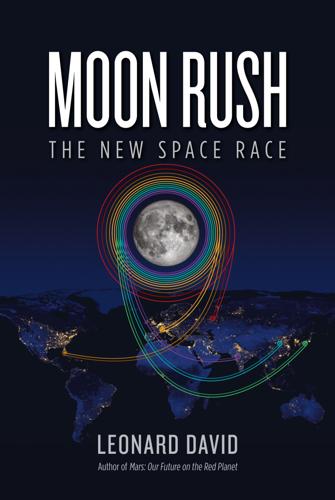
Moon Rush: The New Space Race
by
Leonard David
Published 6 May 2019
Schmitt APPENDIX Lunar Exploration Time Line Acknowledgments Further Reading Photo Credits About the Author FOREWORD LET’S GET OUR GLOBAL SPACE ACT TOGETHER BY BUZZ ALDRIN LUNAR MODULE PILOT, APOLLO 11 FIFTY YEARS AGO, ON JULY 20, 1969, I know exactly where I was standing. I was well suited for where I was, but without a tie. On the Moon, my get-down-to-business attire weighed 180 pounds. After stepping down from the Eagle lander, I stood there with my fellow space traveler, Neil Armstrong. High above the barren lunar scenery that I viewed as “magnificent desolation” was our Apollo 11 partner, Mike Collins, orbiting the Moon. America’s Apollo program was an impressive team effort.
…
Consider this futuristic outlook. If preservation advocates are successful, the Apollo 11 Tranquility Base touchdown zone where Neil Armstrong and Buzz Aldrin landed 50 years ago could become the number one tourist hot spot, a mecca for rubbernecking, camera-toting visitors. Encompassed within a large transparent protective dome, onlookers would take in the celebrated landing site, gaze upon still visible footprints stamped in the lunar dust, and witness hardware left behind from that first human sortie to the Moon in July 1969. In this not-so-distant future, Apollo 11’s Tranquility Base is just one of many sightseeing attractions, a consequence of nations that cross the void between Earth and our neighboring Moon to image, survey, land upon, and attempt to maintain an enduring foothold on the lunar globe.
…
“Even though we were all farther away than humans had ever been, we always felt connected to home,” Aldrin has since remembered. That feeling seemed mutual. Back on Earth, an estimated 600 million people witnessed on television the momentous Apollo 11 landing. Ninety-four percent of American televisions tuned in to view the historic event, which took place just before 11 p.m. eastern daylight time. That fact made President John F. Kennedy’s proclamation eight years earlier even more prophetic: “It will not be one man going to the Moon, it will be an entire nation.” The voyage of Apollo 11 was a product of nearly a decade of work, hardships, tragedy, and awe. It all began earlier, with a plan. President John F.
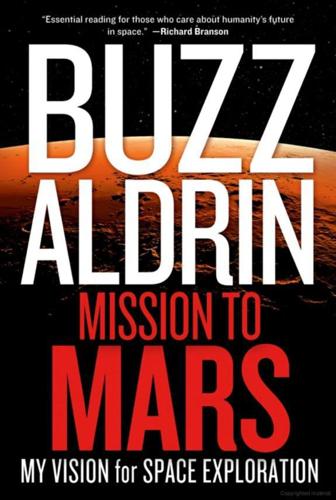
Mission to Mars: My Vision for Space Exploration
by
Buzz Aldrin
and
Leonard David
Published 1 Apr 2013
Buzz presents his Unified Space Vision during the 40th anniversary celebration of Apollo 11. (Illustration Credit 1.12) We can dare to dream again and to lead. Let us challenge NASA, challenge the White House to think bigger, challenge ourselves to look beyond the moment, and inspire again an entire nation in a way that is evocative, at a time when our country is ready for real inspiration, challenge, leadership, and achievement. I hold dear my litmus test for the country’s space future: timeliness, affordability, and popularity. Apollo 11 symbolized the ability of this nation to conceive a truly pathbreaking idea, prioritize it, create the technology to advance the idea, and then ride it to completion.
…
And if we persevere on this path, we can reach out some 200 million miles to Mars before 2035—66 years after Neil Armstrong and I flew the quarter-million miles through the blackness of space to touch down onto Tranquillity Base. There’s a historical milestone in the fact that our Apollo 11 landing on the moon took place a mere 66 years after the Wright brothers’ first flight. But to realize the dream of humans on Mars, we need a unified vision. We need to focus on a pathway while keeping an ever vigil eye on the prize. Several years ago NASA was put on a technical trajectory to resume lunar exploration, duplicating, albeit in more complicated ways, what the Apollo 11 flight did some four decades ago. The looming dilemma that stemmed from that approach then—called the Vision for Space Exploration—was a five-year gap between the shuttle program’s slated retirement in 2010 and the debut of the Ares I rocket and the new Orion spacecraft in 2015.
…
Homesteading our solar system is a reach outward to what lies beyond—and beyond to the stars. I was deeply saddened by the passing of my good friend, and space exploration companion, Neil Armstrong, in 2012. As Neil, Mike Collins, and I trained together for our momentous Apollo 11 expedition, we knew of the technical challenges we faced as well as of the magnitude and weighty implications of that historic journey. We will now always be connected as the crew of the Apollo 11 mission to the moon in 1969. Yet for the many millions who witnessed that remarkable achievement for humankind, we were not alone. An estimated 600 million people back on Earth, at that time the largest television audience in history, watched Neil and me walk on the moon.
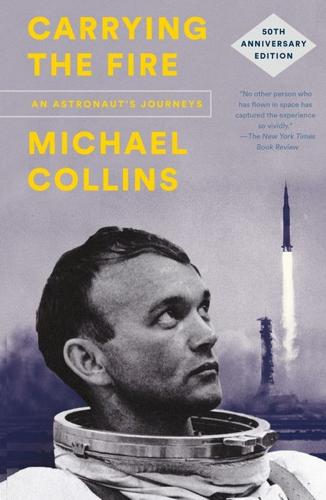
Carrying the Fire: An Astronaut's Journeys: 50th Anniversary Edition
by
Michael Collins
and
Charles A. Lindbergh
Published 15 Apr 2019
There are many, many links in the daisy chain which may yet break, but at least three of the biggest and most fragile ones (launch, TLI, transposition and docking) are behind us. We are on our way, and it is necessary that we sleep. * * * The next thing I hear is Houston’s insistent call, summoning the faithful to the temple for another day. “Apollo 11, Apollo 11, this is Houston. Over.” “Good morning, Houston, Apollo 11.” “Roger, Apollo 11. Good morning. When you’re ready to copy, 11, I’ve got a couple of small flight-plan updates and your consumable update, and the morning news, I guess. Over.” Jesus, no coffee, no amenities, simply pull out pen and paper and copy what they say. The news is pretty thin: the Russian space probe, Luna 15, has preceded us to the moon by a couple of days.
…
He also had a great impassive dignity, and seemed surprised at nothing, not even the news that we were practicing in his jungle so as to be able to fly to the moon. Perhaps he did not believe it. Years later, in Washington, I met Antonio again, at the Smithsonian, in the hall containing the original Wright Brothers airplane and, almost directly below it, the Apollo 11 command module. I patiently explained to Antonio about Apollo 11, about flying to the moon, and I learned from his interpreter that he was not particularly interested in the Apollo 11 craft. He didn’t disbelieve my story, he simply could not relate it to the ugly triangular chunk of heat-shield-covered machinery. He liked the idea of flight to the moon, and obviously knew a lot about it—that it was a satellite of earth, and so forth—but the machinery he was interested in was the Wright Flier.
…
Not that I disapproved, quite the contrary, but I simply was putting too much of myself into Apollo 11 to consider doing it all over again at a later date; besides, the strain on my wife was not good and should end as soon as possible. Consequently, one day when Deke and I shared a T-38 for the Houston-to-Cape run, and he said he wanted to “plug me in” to the sequence of later flight assignments, I politely declined. I told him if Apollo 11 aborted and fell into the ocean after takeoff, I would be back knocking on his door, but if we were able to fly it as planned, Apollo 11 would be my last space flight. I didn’t have the foggiest notion what I would do after that, nor did I know what seat I might have later occupied.
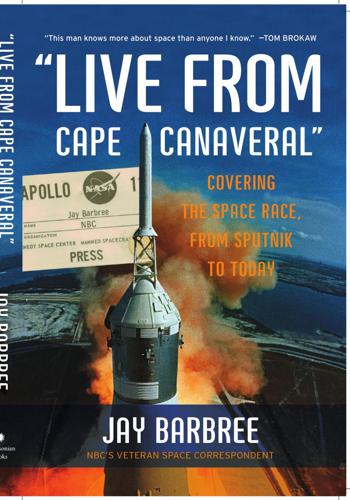
"Live From Cape Canaveral": Covering the Space Race, From Sputnik to Today
by
Jay Barbree
Published 18 Aug 2008
Twenty-eight thousand gallons of water smashing into curving flame buckets to absorb the mighty rocket’s fire. Apollo 11’s Saturn V roared to life, but it was anchored to its launch pad by huge hold-down arms, chaining it to Earth until computers judged it was howling with full energy. “SIX, FIVE, FOUR…” And chunks and sheets and flakes of ice fell steadily from the coatings formed by the super-cold oxidizers and propellants on the huge fuel tanks. Apollo 11 was ready to leave, Saturn V’s mighty engines were screaming, get the hell outta the way… “THREE, TWO, ONE, ZERO, all engines running, LIFTOFF. We have a liftoff, thirty-two minutes past the hour. Liftoff of Apollo 11. Tower cleared.”
…
It shook for all to feel, and in a firestorm of flame and crackling thunder Apollo 11 began its journey. Birds flew for safety, wildlife fled for shelter, and Apollo 11’s Saturn V slammed shock waves into the chests of the million-plus pressed against the moonport’s fences and gates. Suddenly their teeth were rattling and their skin and clothes were fluttering. They were forced to lean into the powering wave of thundering air now splitting the launch center. Saturn V had in fact created its own earthquake. It generated seven-and-a-half million pounds of thundering energy and headed skyward on its hunt for the moon. From atop its gantry, Apollo 11 is seen beginning its journey to the moon.
…
Deke Slayton got on with the job of picking the astronauts for the first landing attempt. The normal rotation of crews was playing right in his hands. The way it was working out, Neil Armstrong would command Apollo 11 and Pete Conrad would be at the helm of Apollo 12. Deke had long ago made the decision to have either Neil or Pete land the first lunar module on the moon. Neil was learned, experienced, and had the moxie to get out of a harrowing situation. As NASA’s own test pilot, he had survived potential tragedies time and again. Apollo 11 would get the first shot, but the odds were very high something would go wrong and 11 would have to abort. Deke realized there was no other feasible plan, and he called Neil Armstrong and crew into a private room.
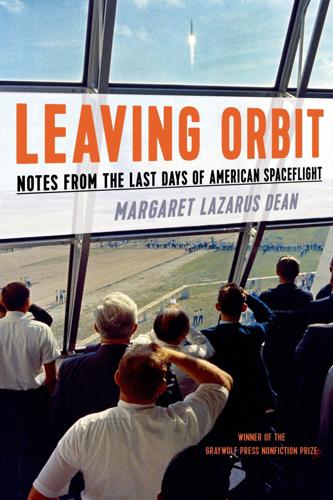
Leaving Orbit: Notes From the Last Days of American Spaceflight
by
Margaret Lazarus Dean
Published 18 May 2015
It can’t be a coincidence that the sixties era of creative nonfiction overlaps so perfectly with the heroic era of American spaceflight, the big egotistical voices turning journalism inside out at the same time the innovators in Houston and Huntsville and the Cape were redefining what machines were capable of, what human beings were capable of. Norman Mailer’s book is about witnessing the launch of Apollo 11—Life magazine had commissioned him to go to the Cape to write about the launch in exchange for a sum of money rumored to be somewhere between extraordinary and obscene. I hadn’t known, before I came across it, that Norman Mailer had written a book about Apollo 11—I knew him for having written the best-selling novel The Naked and the Dead, for cofounding the Village Voice and helping to spearhead New Journalism, for winning both the Pulitzer Prize and the National Book Award for The Armies of the Night, for running for mayor of New York and finishing fourth out of a field of five in the Democratic primary, and for stabbing his second wife, nearly to death, at a dinner party.
…
All of them disgusted that the future they worked so hard to understand and to put on the page has been canceled. What would it mean to go to the last launch and write about it the way Mailer wrote about the launch of Apollo 11? To spend time with the people involved and write about them the way Fallaci did? The last launch of the space shuttle would unfold with all the glory and boredom and strangeness of Apollo 11, would provide an ending to the story. I think about how time-consuming and expensive it would be to try to do this—after all, fewer than half of shuttle missions launch on the first attempt; some have taken as many as seven attempts (separated by days or weeks or months) to get off the ground.
…
When I’d finally called, the harassed-sounding woman on the phone promised to e-mail me, and when she did, saying that my application for credentials had been accepted, I burst into tears of relief at my computer. The Press Site is closer to the launchpad than I’ve ever been: the site from which Norman Mailer watched the launch of Apollo 11, the site from which Walter Cronkite narrated the moon landings, the site from which all the space journalists have watched all the launches. Over twenty-seven hundred journalists from all over the world are expected to cover this launch (also a record unmatched since Apollo 11), and I hope not to get caught in the line for badges behind too many of them. The press badging office turns out to be a tiny shack on State Road 3, a fluorescent-lit Apollo-era building staffed by a few slightly harried but extremely competent middle-aged women, the same women who spoke to everyone’s editors on the phone.
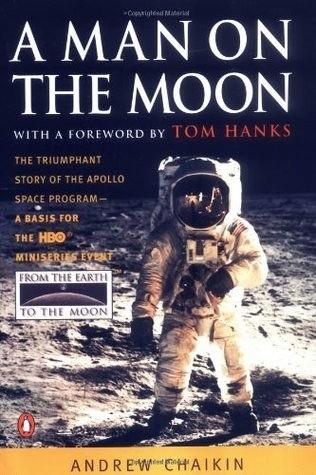
A Man on the Moon
by
Andrew Chaikin
Published 1 Jan 1994
By comparison, Apollo 8 had almost been simple. Both would have to be nearly perfect for Apollo 11 to attempt a landing in July. Attempt was really the right word; there was no assurance that the first mission assigned to land would succeed. Nevertheless, as 1969 opened there was more than a little speculation, both inside and outside the Astronaut Office, on who would get the chance to try. Of course, anyone who went through the arithmetic of Slayton's crew rotation had a good idea of who it would be. The crew that backed up Apollo 8 would skip 9 and 10 and fly the next mission, Apollo 11. Pete Conrad had figured that out some time ago, and he didn't like the answer.
…
In Collins’s mind, the eighteen rendezvous scenarios and the probe and drogue swirled around twin responsibilities: He must get his crewmates back to earth safely, and he must not do anything to screw up the mission. During the spring of 1969 Collins felt the eyes of the world upon him as he never had before, and his labors were tinged with anxiety. He also knew that Apollo 11 was putting a great strain on his wife, and that was something he wanted to stop as soon as possible. One day when they were flying a T-38 to the Cape together, Deke Slayton offered to put Collins back in the rotation after Apollo 11. Collins knew he’d probably command one of the later lunar landings, but he declined Slayton’s offer. He had already decided that, assuming it was successful, this flight would be his last.
…
Even on the morning of July 16, 1969, as Armstrong led his crew out into the TV lights and onto the transfer van, with an old comb and a package of Life Savers in the pocket of his space suit, he had little doubt they would make it safely back to earth. But the landing, in his mind, was still a fifty-fifty proposition. CHAPTER 5 The First Lunar Landing APOLLO 11 I: The Eagle Has Landed Saturday, July 19, 1969 5:30 A.M., Houston time 2 days, 21 hours Mission Elapsed Time Aboard Apollo 11, 177,000 miles from earth Buzz Aldrin opened his eyes and floated in the darkness, collecting his thoughts, remembering where he was. All was still inside the command module Columbia; only the hum of the cabin fans broke the total silence of the void.
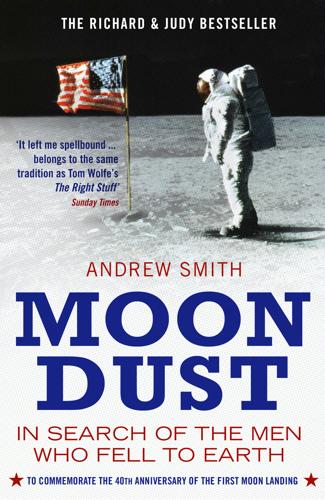
Moondust: In Search of the Men Who Fell to Earth
by
Andrew Smith
Published 3 Apr 2006
Apollo 9 then tested the Lunar Module in Earth orbit, Apollo 10 did the same in lunar orbit, and finally Apollo 11 set down. Ten such landings were planned, but the last three (18, 19, 20) were cancelled as the programme’s budget was progressively slashed. Furthermore, Apollo 13 nearly ended in disaster when an explosion in an oxygen tank crippled the Command Module, forcing the landing to be abandoned and the LM to be used as a makeshift life raft to get the crew home. Thus, only six ships reached the surface, between July 1969 and December 1972, each with two astronauts aboard. Those astronauts were: APOLLO 11 Neil Armstrong and Buzz Aldrin (CM pilot Michael Collins) APOLLO 12 Pete Conrad and Alan Bean (CM pilot Richard Gordon) APOLLO 14 Alan Shepard and Edgar Mitchell (CM pilot Stu Roosa) APOLLO 15 David Scott and James Irwin (CM pilot Al Worden) APOLLO 16 John Young and Charles Duke (CM pilot Ken Mattingly) APOLLO 17 Gene Cernan and Jack Schmitt (CM pilot Ron Evans) Irwin, Shepard and Conrad are gone (heart attack, cancer, motorcycle accident), so nine of the Moon men remain.
…
His pulse at takeoff was 110 bpm, the lowest of any Apollo astronaut, but around the Astronaut Office he was considered to be an agitator and political game-player, though he certainly wasn’t the only one and looks actually to have been rather clumsy and unskilled at manoeuvring in the subtle, back-slapping, one-of-the-guys way that men like David Scott and Gene Cernan excelled at. He wasn’t one of the guys and nor, for that matter, were either of his Apollo 11 crewmates. The German-born Pad Leader Guenter Wendt (known to the astronauts as Pad Führer, ruler of the launchpad) will tell you that, for all Deke Slayton’s efforts, the Apollo 11 crew never gelled, and remained remote from each other throughout. You’ll still find Apollo vets muttering darkly about Aldrin, though. Wendt is not courting controversy when he avers that “some considered him to be arrogant … he became quite a bit of a loner and not too many people cosied up to him.”
…
Conspiracy theorists like to imagine that he was assassinated. Finally, a year after Gagarin’s death and just three weeks before Apollo 11 flew in July 1969, a gigantic N-1 Moon rocket, the largest ever built, exploded twelve seconds into its flight, finishing off Soviet lunar ambitions for good. The rocket stages and fuel tanks of leftover N-1s were reportedly hammered into storage sheds and playgrounds for children. The Space Race had a winner. The point is that there was nothing inevitable about the safe return of Armstrong’s Apollo 11 crew. Most of the astronauts privately rated its chances of success at between 50 and 30 per cent, with a 30 per cent likelihood of the unthinkable happening.

The Ultimate Engineer: The Remarkable Life of NASA's Visionary Leader George M. Low
by
Richard Jurek
Published 2 Dec 2019
Low, Glynn Lunney, and Chris Kraft discussing Apollo 8’s progress, 1968 19. Low and Chris Kraft congratulating each other, 1968 20. Low conducting a meeting in his office as Apollo program manager, 1969 21. Low monitoring progress during the Apollo 11 lunar landing, 1969 22. Low expressing his delight during the first steps on the moon, 1969 23. Chris Kraft, Low, and Bob Gilruth during the Apollo 11 splashdown, 1969 24. Low accompanying the first Apollo 11 sample return container, 1969 25. Low at his desk at the MSC, 1969 26. Low and other NASA officials applauding the splashdown of Apollo 13, 1970 27. Low wearing his T-38 flight jacket, 1970s 28.
…
The moon race, which Low had helped define back in 1961, had been won. Throughout the preparation and lead-up to the flight, Low stayed close to the Apollo 11 crew, as he had with all the preceding crews. They were as much the designers and engineers of their mission as Low, Kraft, Slayton, or anyone else. “I spent considerable time today with the newly named Apollo 11 crew in talking to them about all of the things that might be of concern at the press conference,” he noted for example in January 1969. “We touched all sorts of subjects from the probability of Apollo 11 actually being a G mission [lunar landing] to weights, delivery schedules, lunar surface timelines, the requirement of the F mission, etc.
…
Courtesy of the Institute Archives and Special Collections, Rensselaer Polytechnic Institute, Troy, New York. 21. Low intently monitoring progress in mission control during the Apollo 11 lunar landing on 20 July 1969. Courtesy of NASA. 22. Low expressing his delight in mission control during the first steps on the moon by Neil Armstrong on 20 July 1969. Courtesy of NASA. 23. Chris Kraft, Low, and Bob Gilruth in mission control during the Apollo 11 splashdown on 27 July 1969. Courtesy of NASA. 24. Low smiling broadly while accompanying the first Apollo 11 sample return container with lunar surface material at Ellington Air Force Base, 25 July 1969. Happily posing for photographs with the rock box are (left to right) George M.
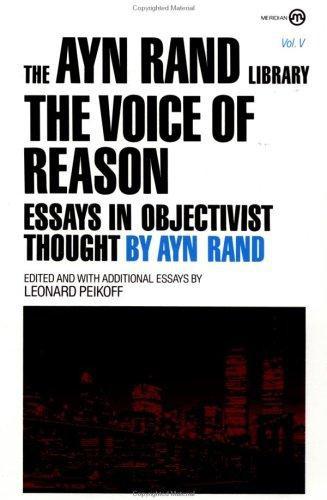
The Voice of Reason: Essays in Objectivist Thought
by
Ayn Rand
,
Leonard Peikoff
and
Peter Schwartz
Published 1 Jan 1989
(The Lessons of Vietnam) The Death of Marilyn Monroe: “Anyone who ever felt resentment against the good for being good and has given voice to it, is the murderer of Marilyn Monroe.” (Through Your Most Grievous Fault) Apollo 11: “For once, if only for seven minutes, the worst among those who saw the lift-off had to feel—not ‘How small is man by the side of the Grand Canyon!’—but ‘How great is man and how safe is nature when he conquers it!’ ” (Apollo 11) DR. LEONARD PEIKOFF worked closely with Ayn Rand for many years and was designated by her as heir to her estate. He has taught philosophy at Hunter College, Long Island University, and New York University, and he lectures on Ayn Rand’s philosophy throughout the country.
…
Anyone who has ever felt resentment against the good for being the good and has given voice to it, is the murderer of Marilyn Monroe. 17 Apollo 11 by Ayn Rand This article was published in The Objectivist, September 1969. “No matter what discomforts and expenses you had to bear to come here,” said a NASA guide to a group of guests, at the conclusion of a tour of the Space Center on Cape Kennedy, on July 15, 1969, “there will be seven minutes tomorrow morning that will make you feel it was worth it.” It was. The tour had been arranged for the guests invited by NASA to attend the launching of Apollo 11. As far as I was able to find out, the guests—apart from government officials and foreign dignitaries—were mainly scientists, industrialists, and a few intellectuals who had been selected to represent the American people and culture on this occasion.
…
(The fact that man is the only species capable of transmitting knowledge and thus capable of progress, the fact that man can achieve a division of labor, and the fact that large numbers of men are required for a large-scale undertaking, do not mean what some creeps are suggesting: that achievement has become collective.) I am not implying that all the men who contributed to the flight of Apollo 11 were necessarily rational in every aspect of their lives or convictions. But in their various professional capacities—each to the extent that he did contribute to the mission—they had to act on the principle of strict rationality. The most inspiring aspect of Apollo 11’s flight was that it made such abstractions as rationality, knowledge, science perceivable in direct, immediate experience. That it involved a landing on another celestial body was like a dramatist’s emphasis on the dimensions of reason’s power: it is not of enormous importance to most people that man lands on the moon, but that man can do it, is.
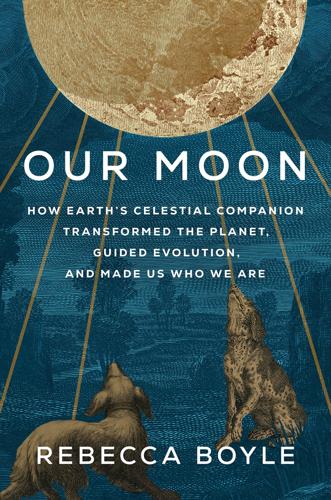
Our Moon: How Earth's Celestial Companion Transformed the Planet, Guided Evolution, and Made Us Who We Are
by
Rebecca Boyle
Published 16 Jan 2024
He described the dust, called regolith, as “very finely powdered carbon, but really [garbled] looking.” Some transcript writers heard “sooty-looking,” while others heard “dirty-looking.” The official edited transcript, which is protected by copyright, has Aldrin saying “pretty-looking.” See Eric M. Jones, “One Small Step,” in Apollo 11 Lunar Surface Journal, https://history.nasa.gov/alsj/a11/a11.step.html. See also “Apollo 11 Technical Air-to-Ground Transcript,” Apollo 11 Lunar Surface Journal, https://www.hq.nasa.gov/alsj/a11/a11trans.html. This is the raw transcript as it was provided to the news media in 1969. Another, even better example is the most famous utterance ever made on the Moon. Some experts still debate whether Neil Armstrong said, or at least meant to say, “that’s one small step for a man,” versus “one small step for man.”
…
Sitting in the capsule moments before launch, he thought to himself, “Here I am, a white male, age thirty-eight, height 5 feet 11 inches, weight 165 pounds, salary $17,000 per annum, resident of a Texas suburb, with black spot on my roses, state of mind unsettled, about to be shot off to the Moon. Yes, to the Moon.”8 As the Apollo 11 crew waited, perched on their Saturn V, thousands of people working in Florida and in Houston checked screens and ticked boxes. They each reported “GO” as they checked and rechecked the status from every handwoven computer wire, every carefully molded rubber hose, every solid bit of fuel. GO. Apollo 11 was ready. Humanity was ready. “The time for farewells had come.”9 At 9:32 in the morning Florida time, on July16, 1969 C.E., the Saturn V rocket ignited.
…
Armstrong’s afterthought rocks were anorthosite, that low-density material that forms when minerals crystallize within molten rock. Their existence hinted that the Moon was once bathed in an ocean of magma. “We knew right there that the Moon would be a record of the early history of the Earth,” Schmitt explained to me. “That was not clearly understood before Apollo 11, but it was understood afterward, and now.” After Apollo 11’s triumph, NASA’s confidence grew and later missions lasted many days. The last three missions even sent a car so astronauts could drive farther and collect more unusual rocks. Apollo 15 astronauts Dave Scott and Jim Irwin, the one who later dedicated himself to Christ, went to the Moon with a wish list.

Failure Is Not an Option: Mission Control From Mercury to Apollo 13 and Beyond
by
Gene Kranz
Published 7 Jan 2000
Cliff walked into my office, stood at the window, stared out for a moment, and then turned with a smile on his face. He knew that I wanted to get down to business, but he just toyed with me for a few moments, passing the time of day, then abruptly said, “I think it’s time to decide on the Apollo 11 phase assignments.” With no further preliminaries, he continued, “I think I should launch Apollo 11 and do the EVA. Milt [Windler] will take the entry. This leaves Glynn for the lunar ascent . . . and you with the landing. Is that okay with you?” I nodded, and the meeting was over. The entire session had taken less than sixty seconds. I had drawn the flight director assignment to put the first man on the Moon.
…
Kennedy Space Center, Florida LM lunar module, previously called lunar excursion module (LEM) LMP lunar module pilot LOI lunar orbit injection (maneuver to enter into lunar orbit) LOS loss of signal LRC Langley Research Center (Langley Field, Virginia) MA- Mercury-Atlas-(followed by mission number) Mach ratio of airspeed to the speed of sound at a given altitude MCC Mercury Control Center at Cape 1960-65 or Mission Control Center at Houston 1965-1972 MET mission elapsed time (time since liftoff) MPAD Mission Planning and Analysis Division—responsible for analytic trajectory design MR- Mercury-Redstone-(followed by mission number) MSC Manned Spacecraft Center, Houston, Texas, used through 1973 MSFC Marshall Space Flight Center (Huntsville, Alabama) NACA National Advisory Committee for Aeronautics NASA National Aeronautics and Space Administration NoGo the decision to cancel a planned event OD operations director position in Mercury Control, changed to FOD for Gemini and Apollo PAO public affairs officer—position in the MCC to release mission information POGO rapid up-and-down maneuver that if continued would destroy launch vehicle psi pounds per square inch PTC passive thermal control RCS Reaction Control System—small propulsion jets for attitude control and small maneuvers Refsmmat reference to stable member matrix—technique for conversion between coordinate systems RETRO retrofire officer—the MCC specialist in reentry trajectories RSO range safety officer—responsible for protecting landmass across the world from errant rockets SCE signal conditioning electronics SimSup simulation supervisor—the leader of the training team in the MCC SM service module—portion of Apollo CSM that contained main engines and power systems SPAN spacecraft analysis team—small group in MCC to access design and manufacturing SPC stored program command, a command stored in a computer or program that will activate a function at a specific clock time Stay NoStay Time-critical decision to remain on the Moon or lift off at the next opportunity SYSTEMS Mercury control center engineer responsible for electrical, attitude control, display, and structural systems TEC trans-Earth coast TEI trans-Earth injection (maneuver to return the spacecraft to Earth from the Moon) TELMU Lunar Module engineer responsible for electrical, environmental, communications, pyrotechnic, structural, and EVA systems TLC translunar coast TLI translunar injection (the maneuver to take the spacecraft to the Moon) TM telemetry Trench the MCC trajectory team consisting of the RETRO, FIDO, and GUIDO TVC thrust vector control (rocket steering mechanism) Z Zulu—shortened term for Greenwich Mean Time used in logs and messages Manned Mercury Remote Sites BDA Bermuda ATS/RKV Atlantic Tracking Ship/Rose Knot Victor—designation changed in middle of the program CYI Canary Islands KNO Kano, Nigeria ZZB Zanzibar IOS/CSQ Indian Ocean Ship/Coastal Sentry Quebec—designation changed in middle of program MUC Muchea, Australia WOM Woomera, Australia—tracking station in a remote desert location on a military test range CTN Canton Island—FAA ground beacon for aircraft navigation in South Pacific HAW located at edge of Waimea Canyon on Hawaiian island of Kauai CAL California, site located at Point Arguello GYM Guaymas, Mexico TEX Corpus Christi, Texas Manned Gemini Remote Sites CYI Canary Islands CRO Carnarvon, Australia HAW located at edge of Waimea Canyon on Hawaiian island of Kauai GYM Guaymas, Mexico CSQ Coastal Sentry Quebec ship RKV Rose Knot Victor ship TEX Used as a training site only INDEX Aaron, John and Apollo 1 fire and Apollo 11 and Apollo 12 and Apollo 13 crisis Abort in mission rules training sessions Abort command Abort switch problem Agena Africa tracking sites Air Force Agena upper-stage rocket Atlas program Fighting 69th man in space program satellite missions 6555th test wing Aldrich, Arnold (Arnie) and Apollo 13 crisis Aldrin, Edwin (Buzz) Apollo 11 as CapCom EVA training America American flag on Moon American public and space program Anders, William Apollo Anderson Anderton, David Antares Apollo 1 fire Apollo 4 Apollo 5 Apollo 6 Apollo 7 Apollo 8 Apollo 9 Apollo 10 Apollo 11 astronaut badge phase assignments Apollo 12 lightning strike Apollo 13 explosion reentry Apollo 14 Apollo 15 Apollo 16 Apollo 17 Apollo 18 Apollo 19 Apollo Application Program Apollo missions canceled duration of final splashdown parties unmanned Apollo program final missions first manned missions guidance and navigation systems and software leaders in problems in Apollo spacecraft Apollo Saturn Aquarius “Aquarius/Let the Sun Shine In,” Arabian, Don Armed Forces Judo Association Armstrong, Neil Apollo 11 Gemini 8 remote site assignment Army Redstone Arsenal Astronauts in Apollo 13 crisis resolution ejection expected loss of experiments performed by food hands-on control of spacecraft and Mercury Control Mercury Seven and Mission Control relationship with ground control remote site CapComs right stuff second group seven original training for Apollo program training for lunar exploration Atlas rocket blockhouses failures MA-3 Atlas/Agena Attitude control problem Attitude control systems Attitude control tests Augmented target docking adapter (ATDA) Aurora 7 Australia tracking station Aviation Week magazine Avro Arrow (aircraft) Avro flight test and design team B-52 Bales, Steve Ballistic missions Bassett, Charlie Bay of Pigs Bean, Alan Apollo 12 Beck, Hal Bendix (Co.)
…
Borman, Frank Apollo 8 Gemini 7 Bostick, Jerry Bowen, Maureen Brand, Vance Bray, Don Bronze Team Brooks, Mel Brotherhood Brown, Bob Bucholz, Bill (Big Shoes) Burke, Walter Burton, Clint Burton, Mary Shep Byrd, Richard Caidin, Martin California tracking station Canary Islands tracking site Canin, Larry Canton Island CapCom (CTN) Canton Island tracking site CapCom(s) remote site Cape Canaveral, Florida Capsule systems, handbooks for Capsules problems recovering “Captain Refsmmat” Cargill, Eugene Carlton, Bob Carnarvon, Australia Carpenter, Scott as CapCom second Mercury orbital mission Carr, Gerry Carroll, Harry Casey, Chuck Casper Castro, Fidel Cernan, Gene Apollo 17 Gemini 9 Chaffee, Roger Apollo 1 death of Challenger Charlesworth, Cliff Earth Resources Project Office flight director in management Charlie Brown Chimpanzees Coastal Sentry Quebec (CSQ) tracking ship Cocoa Beach Coen, Gary Cohen, Aaron Cold War Coleman, Jack Collins, Mike Apollo 11 Columbia Columbus, Christopher Command and control principle Command and Service Module (CSM) Apollo 7 Apollo 9 Apollo 11 Apollo 12 Apollo 13 Apollo 14 Apollo 15 Apollo 17 “funnies” in modifications to power provided by qualifying testing Command module Apollo missions Communications blackout(s) Communications system remote site Communications technology Computer program alarms Computers in Apollo program crashing digital in dual launch lunar module new software in onboard simulation trajectory software Congress funding for space program and future of space program Conrad, Charles (Pete) Apollo 12 Gemini-Titan 5 Contractors Control systems Controllers background of culture of debriefings FCD failures information available to knowledge level of learning by doing Mercury program new post-Apollo relations among relationship with astronauts responsibilities Cook, James Coons, Dwight Cooper, Gordon (Gordo) final Mercury mission Gemini-Titan 5 one-day mission Craven, Jack Critzos, Chris Cryogenics Cuba Cunningham, Walt Daley, Richard Dana, Bill De Atkine, Joe Decision making Decision process Deiterich, Chuck Docking Apollo 14 Apollo 15 Gemini missions by Russians Doctors see also Flight surgeons Doerner, George Douglas, Bill Dowling, Jack Dual launch capability Dual launch missions Duke, Charlie Apollo 11 Apollo 13 Apollo 16 “Dumb shit medals” (DSM) E mission Eagle Earth Resources Project Office Echo check Eisele, Donn Eisenhower, Dwight Ejection seats Electrochemistry Ellington Air Force Base Officers Club Endeavour Engineering Directorate Engineers Apollo and Apollo 13 crisis based at Space Task Group headquarters becoming operators recruiting and rockets Enos (chimpanzee) Ernull, Bob Ernst, Jack Erwin, Sue Escape tower Eshelman (Teletype operator) EVA (extravehicular activity) Apollo 9 Apollo 11 Apollo 13 Apollo 15 Apollo 16 Apollo 17 Apollo missions Gemini 4 Gemini 9 Evans, Ron Apollo 17 Experiment Packages Experiment Systems Branch Experiments F-86F Sabre jets F-100 Super Sabres Faget, Max Failure not an option Faith 7 Falcon Fendell, Ed Fenner, Will Field geology trip Fire-in-the-hole “Firefly” phenomenon Flight Control Air Force officers assigned to beer mug systems team toughness and competence turning point in Flight Control Branch Flight Control Division (FCD) Experiment Packages Kranz made chief of operations branches Simulation Branch Flight Control Operations Branch Flight control team Apollo 11 emblem training of Flight directors colors retired debates among dual honorary title honored for Apollo 13, crisis resolution identifying colors job description lead mandate need for information pre-mission period and NASA management new generation of press conferences role of training Flight Dynamics Flight dynamics team see also Trench, The Flight Operations Flight Operations Directorate Flight Operations Division (FOD) Flight Readiness Review Apollo 11 Flight rules Flight surgeons and EVA Flight tests manned Four-inch Flight Frank, Pete Freedom 7 Freeman, Ted Frenchman’s Flat Friendship 7 Fucci, Jim Fuel cells Apollo 12 Apollo 13 “Funnies” (anomalies, glitches) Gagarin, Yuri Gardner, Spencer Garman, Jack Gemini 1 Gemini 2 Gemini 3 Gemini 4 Gemini 5 Gemini 6 second launch attempt Gemini 7 Gemini 8 Gemini 9 Gemini 9A second launch attempt Gemini 10 Gemini 76 Gemini missions duration of first manned Gemini program human factor in leadership of Gemini spacecraft German rocket scientists Gilruth, Robert became director of Manned Spacecraft Center Gimbal lock Glenn, John as CapCom orbital flight Go NoGo criteria for Go NoGo decisions Apollo 11 Apollo 13 reentry Gemini-Titan Mercury-Atlas 6 Mercury-Atlas 9 Go NoGo mission rules EVA Go NoGo points Goddard, Robert Goddard Space Flight Center “Goddard voice” Goett, Harry Gold Team Goldin, Daniel Gordon, Dick Apollo 12 Gordon Highlanders Green Team Greene, Jay Greenwich mean time Griffin, Gerry field geology trip flight director handing over to new generation of flight directors Griffith, Gerry Grissom, Virgil I.

In the Shadow of the Moon: A Challenging Journey to Tranquility, 1965-1969
by
Francis French
,
Colin Burgess
and
Walter Cunningham
Published 1 Jun 2010
Without it, Aldrin might not have been considered experienced enough to be assigned to Neil Armstrong’s Apollo 11 crew. “A lot of fate determines where you fit into the puzzle,” he later reflected. There would only be one other American spacewalk mission flown before Aldrin was in space again and once more making an eva. His next one would be on the surface of the moon. After their Gemini 11 flight, Dick Gordon and Pete Conrad served as the backup crew for Apollo 9, along with another old naval aviator friend, Alan Bean. As was customary, the backup crew flew three flights later, as the Apollo 12 moon landing mission. Since there had been no guarantee that Apollo 11 would be the first landing mission and as Apollo 9’s mission was originally planned as the second manned Apollo flight instead of the third, Conrad and Bean could easily have been the first people to land on the moon.
…
On the morning of launch Eisele was in the command module for several hours, thoroughly checking all the systems. But then he was required to carefully climb out, to allow the prime crew to enter and journey to the moon. He would never fly in space again. By the time of the next mission, Apollo 11, the divorce became front-page news. “It was rough when the rumors of the divorce triggered constant phone calls from reporters,” Harriet remembers, “with some even knocking on the door. The divorce became final during the Apollo 11 mission. I watched the news come over the wire in the cbs office in Houston where I was working. I felt publicly humiliated, being plastered in newspapers, magazines, and tv news reports all over the country.”
…
Everything had worked so well that there would be no need to schedule any more Apollo test flights in Earth orbit. In fact, the euphoria over Apollo 9 even led to talk that the Apollo 10 mission, then scheduled for May, could be bypassed and replaced by Apollo 11. However, most nasa officials considered that to be a remote possibility, as the Apollo 11 spacecraft was still being assembled and was unlikely to be ready before June. Lt. Gen. Sam Phillips, the Apollo program director, said that a decision would be made before the end of March but that any alternatives to the set flight plan “stand small chance” of being accepted.
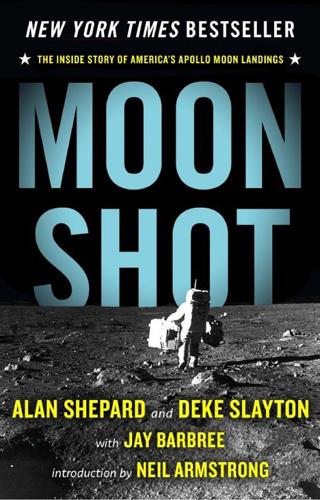
Moon Shot: The Inside Story of America's Apollo Moon Landings
by
Jay Barbree
,
Howard Benedict
,
Alan Shepard
,
Deke Slayton
and
Neil Armstrong
Published 1 Jan 1994
If nothing went awry, if the two missions were successful, if the next great booster was ready, if the Apollo spaceships were ready to go, if no one broke a toe or came down with the flu at the last moment, if, if, if, then the first landing assignment would go to the crew of Neil Armstrong, who had pulled Gemini 8 out of its deadly spin; Buzz Aldrin, who had solved the problems of space-walking on the very last Gemini mission; and Mike Collins, the space walker of Gemini 10. Mike didn’t think they would avoid all the potential pitfalls. He figured that if the Las Vegas bettors were brought in, they’d say the odds of Apollo 11 getting the choice plum would be only one in ten, and the odds would improve to four in ten for Pete Conrad’s Apollo 12 crew. Deke Slayton was staying with a tried-and-proven system in selecting these three for Apollo 11. His strategy, which he employed with Alan Shepard, was to select three astronauts who had skills that complemented one another’s, and who would serve as a team—commander, command module pilot, and lunar module pilot—and assign them as a backup crew.
…
Investigators said the fire was caused by defective electrical wiring. The Apollo 11 crew: Commander Neil Armstrong, Command Module Pilot Mike Collins, and Lunar Module Pilot Buzz Aldrin. On July 16, 1969, Astronauts Neil Armstrong, Mike Collins, and Buzz Aldrin rocketed away from earth and four days later Armstrong and Aldrin rode the Lunar Module Eagle to a touchdown on the moon’s Sea of Tranquility while Collins stood watch in lunar orbit aboard the Command Module Columbia. Aldrin (shown here) and Armstrong were on the moon more than 21 hours and spent two hours exploring outside their lander. President Richard M. Nixon greeted Apollo 11 astronauts Neil Armstrong, Mike Collins, and Buzz Aldrin aboard the aircraft carrier USS Hornet in the Pacific Ocean following the spacemen’s return from man’s first moon-landing mission.
…
Charles (Chuck), 167, 262-63, 329, 330-31, 332 Boeing Aircraft, 37-38 Bonney, Walt, 50 Borman, Frank, 146, 365 Apollo 8 mission, 210, 216, 217, 218, 219, 220 Gemini 7 mission, 167-68, 198 Brand, Vance: Apollo-Soyuz Test Project mission, 12, 337, 343, 346, 347, 348, 350, 351, 355, 357, 380 Braun, Wernher von, 182 and Apollo-Saturn program, 123, 156, 164, 193, 195, 199, 206, 207, 213 and Juno 1 (Explorer 1) launch, 32-33 and Redstone/Jupiter-C program, 17-22, 26-27, 33 and Redstone-Mercury program, 77-78, 95 Brezhnev, Leonid, 336, 346 Brown & Root, 154-55 Brucker, Wilber, 32, 33 Bykovsky, Valery F., 155, 217 Byrd, Harry, 151 B-25 bombers, 37, 283 B-26 Invader bombers, 88 C Caidin, Martin, 361 Cape Canaveral, Florida, 57 Atlas testing, 57-58, 126 candidate for new Manned Spacecraft Center, 152-53 crew quarters, 72-73 lighthouse, 69 preparations for first manned flight, 57-58, 69-78 Redstone testing, 31, 58 Vanguard explosion, 30-31 Carpenter, Malcolm Scott, 50, 65, 133, 285, 365, 367, 368 Aurora Seven mission, 144-45, 146 Carr, Jerry, 219 carrier pilots, 42-47 Casper (Apollo 16 command module), 334 Castro, Fidel, 86, 88 “celestial fireflies,” 135-36, 144 centrifuge training, 58-59, 60 Cernan, Gene, 365 Apollo 10 mission, 12, 229, 231, 345 Apollo 17 mission, 338, 339 Gemini 9 mission, 12, 172-74 Chaffee, Martha, 191, 196 Chaffee, Roger, 197, 365 Apollo 1 mission, 177, 179, 186, 188, 190, 192, 196, 197, 201, 372-73 Apollo 1 mission and death of, 185-92, 194-97, 252 Challenger (Apollo 17 lunar module), 338 Charlie Brown (Apollo 10 command module), 229, 229-32 Chauvin, Skip, 181, 182-83, 186 chimpanzees, 72, 73, 76-77, 132 CIA, 87, 213-14, 223 circumlunar missions Apollo 8 possibility, 215, 217, 218 Soviet plans for, 164, 213-14, 345 Clark, Sumner, 55 Clear Lake, Texas, 154 Cocoa Beach, Florida, 73, 101 cold war, 335, 340, 344, 344-45 See also U.S.-Soviet competition Cold war, 12, 335, 340, 344, 344-45, 346-47 Collins, Michael, 212 Apollo 11 mission, 233-47, 374-76 Gemini 10 mission, 174 Columbia (Apollo 11 command module), 234, 239, 243, 253, 375 “common docking device,” 336, 346 See also Apollo-Soyuz Test Project communications satellite system, 123 computers, 7, 9 lunar descent problems, 192, 224, 305-6 Concert of the Spacecraft, 105 Cone Crater, Moon, 311, 313, 322 Connelly, Phil, 38 Conrad, Charles (“Pete”), 146, 365 Apollo 12 mission, 226, 258, 260-61, 262 Gemini 5 mission, 217 Convair, 56, 131-32 Cooper, Leroy Gordon, Jr.
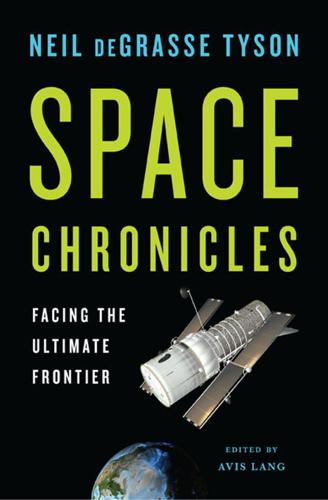
Space Chronicles: Facing the Ultimate Frontier
by
Neil Degrasse Tyson
and
Avis Lang
Published 27 Feb 2012
Nixon’s signature is on the plaque left on the Moon in 1969 by the Apollo 11 astronauts. And maybe it’s just coincidence, but twenty-four astronauts hail from the swing state of Ohio—more than from any other state—including John Glenn (America’s first to orbit Earth) and Neil Armstrong (the world’s first to walk on the Moon). If partisan politics ever leaked into NASA’s activities, it tended to appear on the fringes of operations. For example, President Nixon could, in principle, have dispatched the newly commissioned USS John F. Kennedy aircraft carrier to pluck the Apollo 11 command module from the Pacific Ocean. That would have been a nice touch.
…
Given sufficient political will, this step should enable its aerospace engineers, assembly lines, and funding streams to focus on a new suite of launch vehicles designed to do what the shuttles can’t: take us beyond low Earth orbit, with sights on farther frontiers. • • • CHAPTER TWENTY HAPPY ANNIVERSARY, APOLLO 11* The National Air and Space Museum is unlike any other place on this planet. If you’re hosting visitors from another country and they want to know what single museum best captures what it is to be American, this is the museum you take them to. Here they can see the 1903 Wright Flyer, the 1927 Spirit of St. Louis, the 1926 Goddard rocket, and the Apollo 11 command module—silent beacons of exploration, of a few people willing to risk their lives for the sake of discovery.
…
Fact is, a lot of image reconnaissance goes into planning these journeys. For example, in 1966–67 five Lunar Orbiter spacecraft were sent to study the Moon and photograph possible landing sites. The photograph of what became Apollo 11’s landing site is now part of the Lunar Orbiter Image Recovery Project at the NASA Ames Research Center. Fast forward four decades, and the NASA’s Lunar Reconnaissance Orbiter, the LRO, returned its first images of the Apollo 11 landing site, with the lunar module still sitting right there, casting a long, distinctive shadow. LRO is the next step in returning astronauts to the Moon—it’s a robotic scout that’s helping to find the best places to explore.
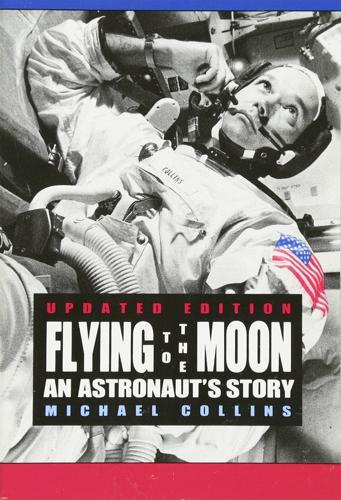
Flying to the Moon: An Astronaut's Story
by
Michael Collins
Published 1 Jan 1976
The news was not long in coming, and it was all good. I was assigned to the Apollo 11 crew, with Neil Armstrong and Buzz Aldrin! We were to be the first crew to attempt a lunar landing, provided everything went well. By that I mean that Apollos 9 and 10 must make near-perfect flights before us. Apollo 9 was the first test flight of the lunar module, in earth orbit, and Apollo 10 was to be a dress rehearsal in lunar orbit, involving a rendezvous but not a landing. I figured the chances were about fifty-fifty for Apollo 11 to be the first flight to try a landing. I would know in six months’ time, but meanwhile it was back into the simulator for me, because that is where I would get the knowledge I needed to fly safely and well.
…
NASA wasn’t too fond of names for spacecraft, and during the Gemini program we had used numbers only (like Gemini 10), but now we had two spacecraft, and we couldn’t call them both Apollo 11 on the radio, so we needed names. Apollo 9 had called theirs Gumdrop and Spider, which I thought were neat names because the command module was shaped like a gumdrop and the lunar module did look sort of like a spider. But for Apollo 11 we wanted something which sounded a little more important. We also wanted an emblem which didn’t show the spacecraft themselves but which somehow said our country was making a peaceful landing on the moon.
…
The idea was to expose the mice to the moon rocks. If the mice stayed healthy, then the moon rocks must be safe and we were free to rejoin our families without fear of infecting anyone. As the days passed and the mice stayed healthy, our spirits rose, and finally, on August 10, 1969, the flight of Apollo 11 ended and we were released to the world. 12 The flight of Apollo 11 ended a remarkable part of my life. For quite a while afterward, my life really was different than it had been before. I received mail from all over the world, from common people and from kings, from a few people I knew and from thousands I did not know. I got a nice letter from Charles Lindbergh, who thought that my flight around the moon by myself must have been similar to his solo flight across the Atlantic Ocean.
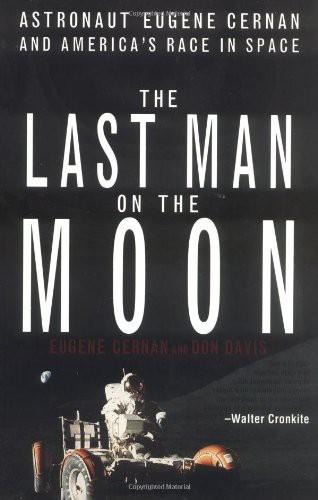
The Last Man on the Moon: Astronaut Eugene Cernan and America's Race in Space
by
Eugene Cernan
and
Donald A. Davis
Published 1 Jan 1998
The choices made at that point also contributed to the string of historic circumstances which led to Neil Armstrong taking the first steps on the Moon. McDivitt’s backup on the original Apollo 8 was Pete Conrad, who would have rotated three missions later to command Apollo 11. Instead, when Jim passed on the Moon ride, and was bumped back to Apollo 9, his backup team, with Pete in command, shifted back along with him. Pete eventually commanded Apollo 12. Neil, who was Borman’s backup on the original Apollo 9, moved ahead by one important notch when Borman did, and three missions later, he flew Apollo 11. VIETNAM DID IN PRESIDENT Johnson, and Richard Nixon squeaked by Hubert Humphrey and George Wallace in the November presidential election.
…
He came flapping into my office at the Manned Spacecraft Center one day like an angry stork, laden with charts and graphs and statistics, arguing what he considered to be obvious—that he, the lunar module pilot, and not Neil Armstrong, the mission commander, should be the first one down the ladder on Apollo 11. Since I shared an office with Neil, who was away training that day, I found Aldrin’s arguments both offensive and ridiculous. Ever since learning that Apollo 11 would attempt the first Moon landing, Buzz had pursued this peculiar effort to sneak his way into history, and was met at every turn by angry stares and muttered insults from his fellow astronauts. How Neil put up with such nonsense for so long before ordering Buzz to stop making a fool of himself is beyond me.
…
Neil, Buzz and Mike had blasted off from Earth without incident four days earlier, and an incredible sense of worldwide anticipation grew as Apollo 11 rushed through space. Thanks to the advent of global communications, this would be the most-watched event in history, and when the lunar lander Eagle uncoupled from the command module Columbia, the world held its breath as the two spacecraft zipped into a tandem orbit around the far side of the Moon. When they reappeared, the impossible would be about to happen, although the men actually flying the machines that day put their chances of actually landing on the Moon at no better than fifty-fifty. I was in Mission Control, watching and sweating with everyone else, as Apollo 11 went out of radio contact.
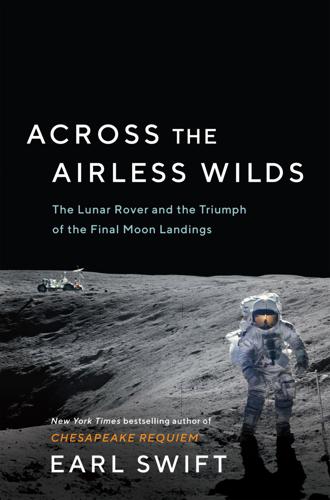
Across the Airless Wilds: The Lunar Rover and the Triumph of the Final Moon Landings
by
Earl Swift
Published 5 Jul 2021
Charlie Duke described an astronaut’s limited visibility in a telephone interview on August 27, 2020. Jerry Schaber, who mapped the Apollo 11 traverses, described the limited range of the crew’s travels in an interview at his home in Flagstaff on October 11, 2019. The white-knuckle moments before Apollo 11’s landing are so well known it seems silly to cite a source here, but if you haven’t seen the amazing 2019 CNN Films picture Apollo 11, here’s your kick in the pants. The July 29, 1969, debriefing was described in the weekly notes of August 4, 1969. The Apollo 11 crew made the twenty-foot-wheel suggestion in an August 7, 1969, meeting chronicled by George M.
…
“He wound up on an airplane runway about a quarter of a mile off, and the men in the control tower had to stop air traffic so he wouldn’t be hit by an incoming 707.” 33 ON JULY 16, 1969, FIVE DAYS AFTER MOREA RELEASED THE REQUEST for proposals, Apollo 11 launched for the moon from an oceanfront pad at the Kennedy Space Center. When the lunar module Eagle touched down, and Neil Armstrong and Buzz Aldrin stepped from its relative safety into the Sea of Tranquility’s “magnificent desolation,” rover teams at companies scattered across the United States were racing to assemble proposals by the August deadline. Apollo 11’s brief lunar visit offered a strong argument for the LRV project. Moving in a space suit proved tiring and clumsy: the outer garment was twenty-one layers thick and resisted bending as a matter of course, but when pressurized, it blew into a stiff balloon that required real muscle to flex.
…
Officials in Houston, especially Jim McDivitt—a Gemini 4 and Apollo 9 astronaut who now led Houston’s Lunar Landing Operations office—argued in the name of safety that hover time was too dear to trade away. The Apollo 11 experience seemed to back him up. So, even as NASA ploughed ahead with the procurement, the rover remained a fragile addition to the Apollo program. This became all too evident five days after Apollo 11’s splashdown, when Armstrong and Aldrin sat down with NASA officials for their technical debriefing. The two “were questioned about using a roving vehicle,” read a summary prepared for von Braun.
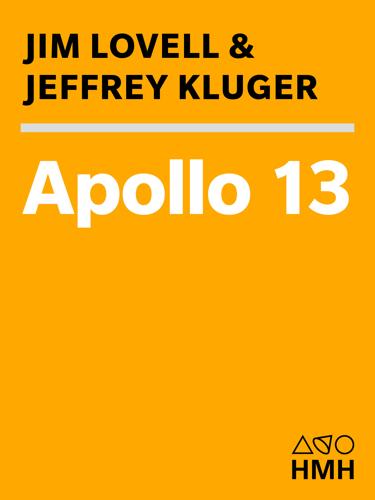
Apollo 13
by
Jim Lovell
and
Jeffrey Kluger
Published 14 Jun 2000
In the wake of the mission’s triumph, the Agency decided that it would need just two more warm-up flights to prove the soundness of its equipment and its flight plan. Then, sometime in July, Apollo 11—the lucky Apollo 11—would be sent out to make the descent into the ancient lunar dust. Neil Armstrong, Michael Collins, and Buzz Aldrin would make the trip, and at the moment it looked like it would be Armstrong who would take the historic first step. Following Apollo 11, there would be nine more lunar landings, and Lovell, now one of the most experienced men on the astronaut roster, figured he had a pretty good shot at commanding one of them.
…
If the schedule ran the way it was supposed to run—and there was no reason to assume it wouldn’t—April 21 was the day they would splash down in the Pacific Ocean and climb aboard the deck of the helicopter carrier Iwo Jima, having just completed humanity’s third and most ambitious landing on the moon. Unlike Apollos 11 and 12, which had been sent to the glass-smooth plains of the Sea of Tranquillity and the Ocean of Storms, Apollo 13 would be heading for a high-wire touchdown in the moon’s Fra Mauro highlands. Negotiating a terrain that treacherous would require some sublimely good piloting, the kind that would prove not only the soundness of the translunar ships but the skill of the men who had been tapped to fly them.
…
The fact that they did escape was the longest of piloting long shots, and a space agency surviving on public goodwill was not about to push things now, packing the same three men into the same sort of ship, flinging them back into the void, and inviting fate to have a go at them again. If the astronauts could not rewrite their personal story, however, they could still tell the one they had. Apollos 11 and 12 might have landed on the moon a year earlier; Apollos 8 and 10 might have orbited it before them. But no other crew—no Americans, no Soviets, not a soul who had ridden a rocket into space before—had ever come so heartstoppingly close to cashing it in out there and yet somehow managed to make it home.
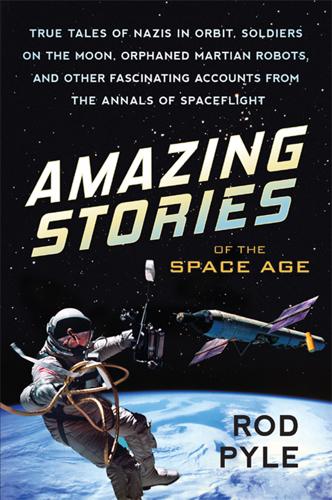
Amazing Stories of the Space Age
by
Rod Pyle
Published 21 Dec 2016
See low Earth orbit Leonard Mason (destroyer), 128 Leonov, Alexi, 186 Lewis Research Center, 107 Ley, Willy, 85 life, search for, 222–24 Life (magazine), 83 Limited Test Ban Treaty (1963), 66 liquid-fueled rockets, 11, 12, 24, 284 LK lander, 191 Lockheed Corporation, 93, 101, 113 Loewy, Raymond, 236–37 Los Alamos National Laboratory, 59, 96 Lost in Space (TV series), 292 Lovell, Jim, 118, 124–25 low Earth orbit (LEO), 211, 217, 251 and commercial space enterprises, 296 dangers of debris found in, 258–59, 263 rescue plans for, 214–15 Lowell, Percival, 36–42, 222, 223 low-energy routes between planets, 93 Lunar Expedition Plan. See LUNEX Project lunar flyby mission of Soviet Union, 202–210 lunar landing program (Apollo 11). See Apollo program, Apollo 11 lunar module used in Apollo program, 34, 77, 94, 102, 147–56, 154, 204, 214, 236, 307n5 LK lander compared to, 191 supposed to be tested before Apollo 11, 206, 209 lunar pressure suit design for Project Horizon, 33 LUNEX Project, 8, 69–79, 70, 72, 99, 109–119, 308n7 compared to Apollo programs, 74–78, 308n7 compared to Project Horizon, 69, 71–72, 73–74, 78 Lunar Based Earth Bombardment system, 71, 307n2 Lunar Launching Stage of, 76–77 M-18 Claymore mine, 32 M-29 Davy Crockett Tactical Nuclear Recoilless Gun, 32, 275 Manhattan, scenario of a Nazi attack on.
…
The Gemini capsule has a hatch in its heatshield to allow the crew to transit from the capsule into the MOL without having to open hatches and conduct an EVA (“spacewalk”). Image from NASA. Fabrication of the MOL mock-up at the McDonnell plant. MOL never flew with a crew aboard. Image from NASA/USAF. Buzz Aldrin in the lunar module as Apollo 11 heads to the moon. Within hours he and Neil Armstrong would be standing on the lunar surface. Image from NASA. Apollo 11's lunar module, taken shortly after landing. Inside the lower half, an ice plug that formed in a fuel line, causing excess pressure, had briefly threatened the mission. Image from NASA. Artist's impression of the X-20 Dyna-Soar launching on a Titan II booster.
…
See ARPA African American astronaut in Matt Mason toy line, 292 Agena rocket and Gemini missions, 117–18, 119, 122 docking mission with Gemini 8, 122–26, 123, 128 Agnew, Spiro, 250 AK-47, 263–77 Aldrin, Buzz, 35, 118, 243 and Apollo, 11, 147, 148–49, 150, 151, 152–53, 154–55 honoring Komarov, Gagarin, and Apollo 1 crew, 198 Almaz space stations. See Salyut space stations Amazon (company), 216 Amerika Bomber. See Silverbird, Project Ames Research Center, 52 AM General, 52 AMU. See Astronaut Maneuvering Unit “antipodal bomber.” See Silverbird, Project Apollo 13 (movie), 297 Apollo Applications Program (AAP), 234–35 Apollo Extension Series, 234 Apollo program, 25, 65, 100, 201 abort capabilities, 76 Apollo 1 fire, 190, 198, 308n8 Apollo 7, 138, 142, 189, 209 Apollo 8, 187, 206, 209–210 Apollo 11 (lunar landing program), 44, 50, 52, 56–57, 107, 114, 123, 128, 140, 147–56, 204.
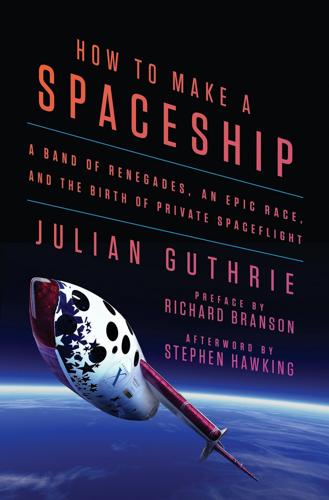
How to Make a Spaceship: A Band of Renegades, an Epic Race, and the Birth of Private Spaceflight
by
Julian Guthrie
Published 19 Sep 2016
Peter, with the camera on, read the words “MAN ON THE MOON: THE EPIC JOURNEY OF APOLLO 11.” He listened to a clip from a speech given by President Kennedy in May 1961: “I believe that this nation should commit itself to achieving the goal, before this decade is out, of landing a man on the Moon and returning him safely to the Earth. No single space project in this period will be more impressive to mankind, or more important for the long-range exploration of space; and none will be so difficult or expensive to accomplish.” The onscreen countdown began for Apollo 11 astronauts Neil Armstrong and Edwin “Buzz” Aldrin to park their lunar lander on the surface of the Moon, a quest for the ages, a Cold War imperative, and a high-stakes contest between nations that had begun when the Soviet Union launched Sputnik, the world’s first artificial satellite, on October 4, 1957.
…
Peter left Montrose suffused with the feeling of certainty and promise, the way he’d felt as a child when he watched Apollo 11. Part Two THE ART OF THE IMPOSSIBLE 11 Eyes on the Prize Peter stood between Friendship 7, the titanium-skinned capsule that took the first American, John Glenn Jr., into orbit, and a display of a lunar rock sample said to be four billion years old. Not far away were the Wright Flyer from 1903 and the Voyager, the spindly winged Rutan flying machine that made it around the world in 1986 without stopping or refueling. Next to Peter was the one and only Apollo 11 command module, Columbia, and directly above was the international orange Bell X-1, the first plane to exceed the speed of sound.
…
There was a rocket in the Mojave Desert in California called the Roton, which promised to “put NASA out of business.” But the rocket appeared impossible to control, and looked quite perilous to me. So I kept looking. Space was something that I had dreamed of for decades. I can still clearly remember sitting with my mum and dad and my two sisters watching Apollo 11 land on the Moon. I was nineteen years old and spellbound by these men who had traveled to another world. It went without saying that in my lifetime ordinary people would get to travel beyond the Earth’s atmosphere. Then decades passed and governments were not sending the general public to space.
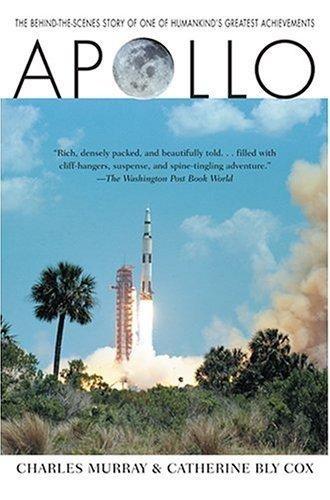
Apollo
by
Charles Murray
and
Catherine Bly Cox
Published 1 Jan 1989
(NASA) The man who forced all-up on everybody and made it possible to get to the moon before the decade was out. George Mueller watches the Apollo 11 launch. (NASA) “A voice in the wilderness.” Trying to land the whole spacecraft assembly on the lunar surface would have been like trying to back an Atlas back down on the pad, and no one had figured out how to do that. But there was a strange and probably crazy idea called lunar-orbit rendezvous, promulgated relentlessly by this man, John Houbolt. (NASA) The consequence of Houbolt’s crazy idea was this unearthly machine, the Lunar Module. This one is Apollo 11’s Eagle, showing Buzz Aldrin with his back to the picture.
…
Their account of the little-known problem with the blocked fuel line, pp. 166–68, is by far the most complete ever published, and is the main source for our description. Additional technical information was obtained from Donald Arabian et al., Mission Evaluation Report: Apollo 11. Such a report was prepared by the Test Division for each of the flights, and was provided to the authors courtesy of Robert Fricke. Neil Armstrong breaking the arming switch: Pellegrino and Stoff, Lunar Module, pp. 168–69. Additional technical information from Arabian et al., Mission Evaluation Report: Apollo 11. Mike Collins awaiting Eagle’s liftoff: Collins, Carrying the Fire, p. 418. Display on the MOCR’s screens after splashdown: Baker, History of Manned Space Flight, p. 358. 26.
…
When he was once asked what the highlight of the Apollo Program had been for him, his answer had nothing to do with honors or awards or the moment of his own most personal triumph, the successful flight of the first Saturn V. The most memorable moment of all his years on Apollo, George Mueller said, had been the surprise birthday party that his staff gave him after Apollo 11. Or there would be the night after the Apollo fire, when the supposedly implacable Mueller would twice put aside technical arguments in order to help a troubled Joe Shea. The people who saw Mueller at closest hand seem to have admired him the most, which is one of the ultimate compliments. But at least this much may be said without qualification: He was the undisputed boss of manned space flight from the day he walked into the office in 1963 until the day he left six years later. 2 Mueller didn’t so much sell the all-up idea as dictate it.
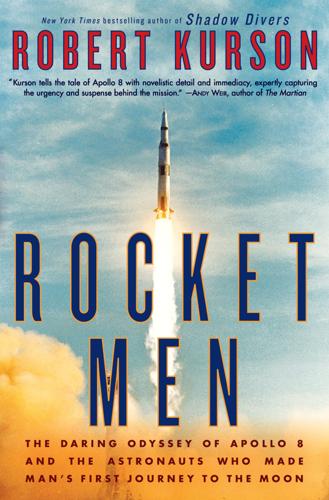
Rocket Men: The Daring Odyssey of Apollo 8 and the Astronauts Who Made Man's First Journey to the Moon
by
Robert Kurson
Published 2 Apr 2018
the reporter asked. “Apollo 11,” Borman said. What Borman didn’t say was that he, Lovell, and Anders might have been the crew for Apollo 11—if only Borman had wanted it. Deke Slayton, who assigned crews, thought that the Apollo 8 astronauts were best positioned to train for the first Moon landing, since they’d already made a lunar orbit flight. But given Borman’s decision that Apollo 8 would be his last trip in space, Slayton didn’t need to further consider Borman and his crew. In the end, Slayton decided to stay with the planned rotation, with Neil Armstrong as commander of Apollo 11. The day after the press conference, the astronauts were honored with a ticker tape parade in New York City, an appearance at the United Nations, and a party at the Waldorf Astoria with Mayor Lindsay and Governor Rockefeller.
…
When asked to compare Apollo 8 to his historic flight, astronaut Mike Collins said, “I think Apollo 8 was about leaving and Apollo 11 was about arriving, leaving Earth and arriving at the Moon. As you look back one hundred years from now, which is more important? I’m not sure, but I think probably you would say Apollo 8 was of more significance than Apollo 11.” Astronaut Ken Mattingly said, “Of all of the events to participate in, you know, I was lucky because I could do Apollo 11 as well as 8 and then 13. But being part of Apollo 8, it made everything else anticlimactic.” For Chris Kraft, it was simple: “It took more courage to make the decision to do Apollo 8 than anything we ever did in the space program
…
* * * — On January 20, following Richard Nixon’s inauguration, NASA announced that Lovell and Anders would be on the backup crew for Apollo 11, the mission expected to make the first lunar landing. That meant if the primary crew—Neil Armstrong, Buzz Aldrin, and Mike Collins—made the trip, Lovell and Anders likely would be primary crew for another lunar landing, Apollo 14. However, Slayton had made Anders the backup command module pilot for Apollo 11, which meant Anders would be the one who stayed with the orbiting spacecraft while his two crewmates flew the lunar module to the Moon’s surface and back.
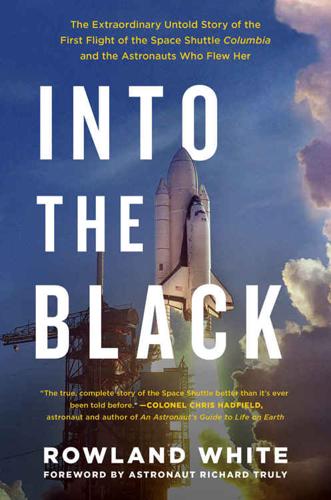
Into the Black: The Extraordinary Untold Story of the First Flight of the Space Shuttle Columbia and the Astronauts Who Flew Her
by
Rowland White
and
Richard Truly
Published 18 Apr 2016
As the MOL group pressed their case in interviews with Deke Slayton, the director of Flight Crew Operations, in July 1969, Neil Armstrong, Mike Collins and Buzz Aldrin were already on their way to the moon aboard Apollo 11. TWELVE Houston, 1969 With Neil Armstrong’s descent to the lunar surface on July 20, 1969, NASA, after an extraordinary eight-year campaign, had succeeded in “putting a man on the moon.” Inside Mission Control, John Young wasn’t sure anyone was following the journey with deeper interest than he and his Apollo 10 comrades were. Been there, done (almost) that, he thought as he layered his own insights and feelings over what was unfolding. He regarded the Apollo 11 crew as very atypical. The command module pilot, his good friend Mike Collins, whom he’d flown with on Gemini X, he regarded as one of the Astronaut Office’s outstanding characters.
…
H., 126 McBride, Jon applies to NASA, 196–97 Chase Air Force, 215, 216–17, 232–33, 245 STS-1 launch, 263, 267, 271 STS-1 reentry and landing, 342, 347, 349, 351–53, 355–56, 361–68 Vietnam War, 195–96 McCall, Roy, 303 McDonnell F-4H-1 Phantom II, 9–10, 11 F-101 Voodoo, 20 McDonnell-Douglas, 230 Apollo 1 fire, 53–54 bids to build Shuttle, 106 DC-10, 158 F-4 Phantom II, 9–10, 11, 195, 196, 216 F-15 Eagle, 136, 143, 222 F/A-18, 136 MOL space station, 40 Skylab, 113, 114 McLucas, John, 115, 116 McMurtry, Tom, 167, 172 McNamara, Robert, 28, 31, 72 Mercury program, 12, 23–24, 47, 50, 92, 164 Mercury Seven, 12, 13–14, 24, 29, 107, 164 Merritt Island, Florida, 237, 306–7 Messerschmitt Me-163 Komet, 71 Michener, James A., 180 Mikoyan-Gurevich design bureau (MiG), 142, 143, 204, 205 MiG-25 “Foxbat,” 143 MiG 105.11 “Lapot,” 204 Milky Way, 340 Mill, Jerry, 157, 171 missiles Atlas, 11 ICBMs, 219 Minuteman ballistic program, 193 Polaris, 47 R-7 intercontinental, 11, 262 Redstone missile, 24 Tomahawk, 268 V-2 ballistic, 56, 88, 141 Mission Control Apollo 13, 76–79, 80, 348 Apollo 16, 95 Columbia’s auxiliary power units (APUs), 337–39, 342 Columbia’s damaged heat shield, 277, 278, 282, 293, 301, 335–37 Columbia’s malfunctioning flight recorder, 325–26, 329–31 Columbia’s reaction control system burns, 304–5, 309–15, 317–22 development flight instrumentation (DFI), 284 loss of Columbia, 392 Shuttle Approach and Landing tests, 165, 172 Skylab, 112, 119 STS-1, 235, 249, 290, 295, 298, 304–15 STS-1 launch, 245, 260, 262, 267, 268, 270, 303 STS-1 reentry and landing, 343, 345, 347–49, 352, 353, 355–56, 359, 361–62, 366, 368, 369, 371–72, 373 wake-up music, 303, 341 missions. See specific STS mission Moffett Field, California, 341 Mojave Desert, California, 165–77, 368 moon missions, 46, 142 Apollo 8, 55 Apollo 11, 62–65, 100–101, 246 Apollo 16, 94–95 Apollo 17, 121 landing simulations, 135 Moonraker (film), 212–14 Morgenstern, Oskar, 89, 90 Moser, Tom, 102 airframe testing, 207–8 Apollo 11 flag, 100–101 Columbia’s damaged heat shield, 279, 280, 285, 294, 300, 301, 324–25, 327, 328, 335, 350 John Houbolt’s concern over Columbia, 246–47, 250 on-orbit tile repair kits, 235 searches for solution to heat shield concerns, 212, 218, 221, 222–23, 229, 235 Shuttle’s heat shield development, 102–3, 211 Shuttle’s payload bay doors, 276 STS-1 launch, 266, 275 STS-1 reentry and landing, 374 Mueller, George, 66, 67, 69–70 Mullane, Mike, 389–90 Mullite, 133 Mullon, Nick, 243, 244 Multimission Modular Spacecraft, 189 NACA (National Advisory Committee for Aeronautics).
…
Now, thirty years later, she was working as an engineer at Houston’s Manned Spacecraft Center and the prospect of Neil Armstrong and Buzz Aldrin realizing that goal was just months away. After graduating with a degree in mathematics in 1948, Lee had trained on the job under Houston’s chief engineer, Max Faget. Part of the team working on the heat shield that would protect the Apollo 11 crew as they returned to Earth, she was already anticipating the celebrations that would mark their safe return. On April 1, 1969, Lee took a phone call from Faget’s office asking her to report to a room on the third floor of Houston’s Building 36. She was told not to tell anybody where she was going.
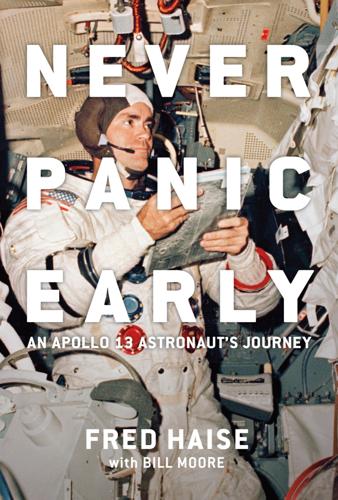
Never Panic Early: An Apollo 13 Astronaut's Journey
by
Fred Haise
and
Bill Moore
Published 4 Apr 2022
I took a week’s vacation to recharge my batteries, just spending time at home with my family. Bill Anders let me know that our new assignment was with Jim Lovell as the backup crew for Apollo 11. The Apollo 11 training ahead offered a few new things to prepare for, and now I was back with a familiar friend—the LM. It was the LM-5 that I spent quite a few hours testing at Grumman in 1967. Traveling to the Moon, getting into its lunar orbit, and reaching home through a Mach 36 entry are all of the mission phases that had been proven valid with Apollo 8. However, Apollo 11 covered new training for LM operations at the Moon, including landing on the Moon, subsequent extravehicular activity (EVA), and walking on the lunar surface.
…
When I joined the Astronaut Office at the Manned Spacecraft Center (MSC), which is now known as the Johnson Space Center (JSC), Warren North headed the Crew Training and Procedures Division, and Joe Algranti headed the Aircraft Operations Division. I served on the backup crew with Neil Armstrong for the Apollo 8 Mission and as the backup lunar module (LM) pilot for his Apollo 11 Mission. I was impressed with the array of aircraft on the hangar floor. I saw a Navy R4D and a USAF C-47 that served as our transport aircraft for personnel and cargo. The Air Force had offices on the first floor of the hangar, facing the runways. A colonel was in charge of several personnel to oversee and observe specific aircraft engine tests of interest to the USAF.
…
I looked forward to flying the lunar landing training vehicle because of the potential that I would enjoy it, but management decided that only commanders on designated landing missions would fly the vehicle. My turn came when I served as Apollo 16’s backup commander. Bill left the training cycle for Apollo 11, despite the fact that he wanted to make a landing on the Moon. I think he figured that he would never pass through the mission cycles to have that opportunity. I also think Bill was smarter than I about the political world and its conceivable effect on NASA’s budget. No one really knew if the space program would always be funded at the same level.
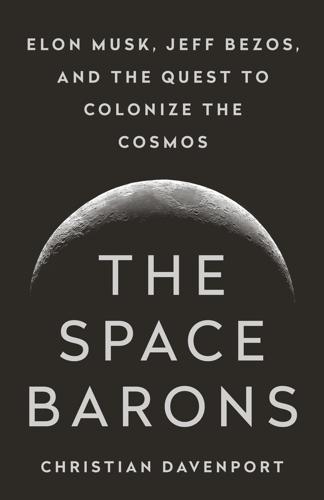
The Space Barons: Elon Musk, Jeff Bezos, and the Quest to Colonize the Cosmos
by
Christian Davenport
Published 20 Mar 2018
“Between the third”: Hans Koenigsmann, NASA Oral History, January 15, 2013. “We wanted to keep”: https://www.nasa.gov/feature/the-making-of-the-apollo-11-mission-patch. And when the NASA officials: “Tesla and SpaceX: Elon Musk’s Industrial Empire,” 60 Minutes, March 30, 2014. Goddard was derided: “Apollo 11: How America Won the Race to the Moon,” Associated Press, August 21, 2016. “That Professor Goddard”: “A Severe Strain on Credulity,” New York Times, January 13, 1920. Goddard responded by saying that: https://www.nasa.gov/missions/research/f_goddard.html. “How many more years”: “Apollo 11.” “Further investigation”: “A Correction,” New York Times, July 17, 1969. 9.
…
Knowing the importance that symbolism and superstition had for its astronauts, NASA allowed its crews to design their own patches. For Apollo 11, which would become one of the most recognizable, the astronauts decided to omit their names in a self-effacing gesture, though listing the crew members had been the practice in the past. “We wanted to keep our three names off it because we wanted the design to be representative of everyone who had worked toward a lunar landing,” said Michael Collins, a member of the Apollo 11 crew. “And there were thousands who could take a proprietary interest in it, yet who would never see their names woven into the fabric of a patch.
…
But the landings were reminiscent of Neil Armstrong and Buzz Aldrin’s touching down on the surface of the moon in the lunar module. Or the “seven-minutes of terror” landing of the Curiosity rover on the surface of Mars. The sight of the boosters standing on terra firma, scorched but triumphant, portended a sense of arrival, and offered hope for another Apollo 11 moment, the next giant leap many had felt they were promised but had never come. Even more impressive was that the landings had been accomplished not by nations—not even NASA had pulled off such a feat—but by a pair of private companies. Backed by billionaires intent on developing reusable rockets, which could fly, land, then fly again, they were pursuing a holy grail—a technology with the potential to dramatically lower the cost of space travel.

Apollo 8: The Thrilling Story of the First Mission to the Moon
by
Jeffrey Kluger
Published 15 May 2017
But the odds of that happening were slim: Collins kept exceedingly fit and did not do a lot of the hard drinking and fast driving some of the other astronauts did. If he was assigned to fly a mission, there was very little chance he wouldn’t go. That meant that Lovell would get a starting spot on a later, distinctly better, flight: the center seat on Apollo 11, between Neil Armstrong on the left and Buzz Aldrin on the right. Apollo 11 might or might not be a lunar landing, and even if it was, Lovell would have to wait overhead in lunar orbit while Armstrong and Aldrin flew down in the LEM and got their boots covered with moon dirt. Still, 11 could easily be a bona fide moon shot, an adventure that looked a lot better than the Earth-orbit dog-paddling Borman had been assigned.
…
So the first-man-on-the-moon profiles of Stafford were shelved, to be replaced by stories about Apollo 11 commander Neil Armstrong—and those were the stories that ultimately ran. Initially, Armstrong’s assignment had not been a sure thing. NASA, reflexively risk averse, was always looking for ways to improve the reliability of the hardware and the skill of the crews. After Apollo 8 returned to Earth, Deke Slayton and a few others in the flight planning office began talking quietly about the possibility of giving Borman, Lovell, and Anders a few weeks off to rest, then putting them right back into training and sending them off to fly Apollo 11. The crew was uniquely qualified for lunar flight, after all, and they would have at least seven months to prepare for their new assignment.
…
When Lovell heard that the crew assignments would not change, he was as delighted as Borman. Had the crew been assigned to Apollo 11, he would have occupied the center seat again, meaning that he would once again orbit the moon but not land on it. That held almost no appeal. He would much prefer to pass up an immediate return, put his name back into the flight rotation, and take his chances on commanding a later mission. Anders, however, was not the least bit pleased when he heard that he wouldn’t be flying on Apollo 11. He had lost his chance to fly a LEM once, and now, with a trip scheduled for just seven months later, he had had a shot at a new one.
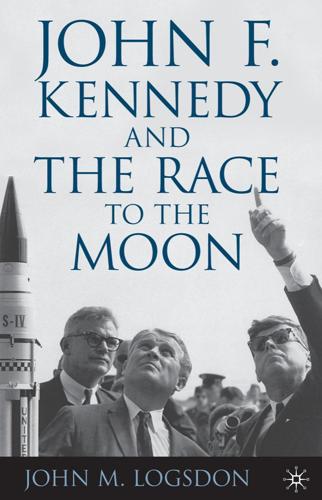
John F. Kennedy and the Race to the Moon (Palgrave Studies in the History of Science and Technology)
by
John M. Logsdon
Published 15 Dec 2010
To reinforce his commitment to President Kennedy’s space legacy, less than a week after the assassination Johnson announced that Cape Canaveral would be renamed Cape Kennedy and that the space launch facilities located there would be called the John F. Kennedy Space Center.1 In the more than five-and-a-half years between Kennedy’s death and the July 20, 1969 landing of Apollo 11 astronauts Neil Armstrong and Buzz Aldrin on the Moon, dedication to Kennedy’s commitment to achieving that feat “before this decade is out” sustained the program through delays and difficult times, including the death of three Apollo 1 astronauts in a launch pad accident on January 27, 1967. When the Apollo 11 command module Columbia returned to Earth, landing in the Pacific Ocean at dawn on July 24, 1969, a large video screen in Apollo Mission Control in Houston displayed these words: I believe that this nation should commit itself to achieving the goal, before this decade is out, of landing a man on the moon and returning him safely to earth.
…
As I moved from Catholic to The George Washington University in 1970, the MIT Press brought out a hardcover edition of the dissertation as The Decision to Go to the Moon: Project Apollo and the National Interest. The University of Chicago Press published a paperback edition in 1976. (As a side note, working on the study of the Apollo decision provided an opportunity to be present at the July 16, 1969, launch of the Apollo 11 mission, and also the Apollo 14 and Apollo 17 launches. Those experiences alone were worth the effort that went into research and writing the dissertation and subsequent book.) My detailed study of the decision-making process by which President Kennedy became convinced that it was in the national interest for the United States to enter, with the intent of winning, the space race with the Soviet Union has been described as “classic” and “powerful and seminal” by leading space historian Roger Launius.1 Such an assessment is, of course, very gratifying.
…
As Johnson addressed the Senate’s Democratic caucus on January 7, 1958, in an address Reedy characterized as having “compelling power,” he claimed that “control of space means control of the world.”51 As the Senate organized itself to deal with space issues, Johnson named himself chairman of the new Committee on Aeronautical and Space Sciences, even as he maintained his position as majority leader. In a 1969 interview with veteran television journalist Walter Cronkite on the occasion of the launch of the Apollo 11 mission to the Moon, Lyndon Johnson told Cronkite that president-elect Kennedy had asked him whether there was anything “that I thought I could be helpful to the Administration on.” Johnson replied that “I would like to work in the field of space,” and that Kennedy had replied that “a President had all a person could do and the Law provided that the President would be Chairman of the Space Council.”
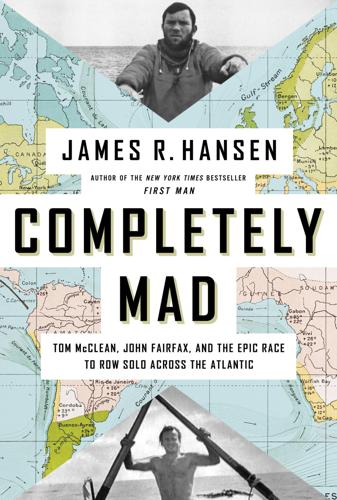
Completely Mad: Tom McClean, John Fairfax, and the Epic of the Race to Row Solo Across the Atlantic
by
James R. Hansen
Published 4 Jul 2023
In Memory of the Great Ocean Rower Don Allum (1937–1992) And all the other “completely mad” adventurers who bless and honor the human experience From the Apollo 11 Astronauts To John Fairfax: May we of Apollo 11 add our sincere congratulations to the many you have undoubtedly already received for your bold and courageous feat of rowing alone across the Atlantic. We who sail what President Kennedy once called “The new ocean of space” are pleased to pay our respects to the man who, single handedly, has conquered the still formidable ocean of water. We find it an interesting coincidence that you completed your arduous voyage here on earth at a spot very near the one from which we started our voyage to the moon.
…
And that you arrived at your destination quite near the time that we reached ours. Yours, however, was the accomplishment of one resourceful individual, while ours depended upon the help of thousands of dedicated workers in the United States and all over the world. As fellow explorers, we salute you on this great occasion. The Apollo 11 Astronauts Neil Armstrong Michael Collins Edwin A Aldrin Jr. —Telegram from the Apollo 11 astronauts in quarantine inside the Lunar Receiving Laboratory at the Manned Spacecraft Center in Houston, Texas, to ocean rower John Fairfax, July 30, 1969 “More than twice as many people have walked on the Moon as have soloed the Atlantic Ocean in a rowboat.”
…
“John Fairfax, who crossed oceans in rowboats dies,” Sydney Morning Herald, February 21, 2012, accessed at https://www.smh.com.au/world/john-fairfax-who-crossed-oceans-in-rowboats-dies-20120220-1tjg3.html. “John Fairfax, who rowed Atlantic alone, dies,” CBS News, February 19, 2012, https://www.cbsnews.com/news/john-fairfax-who-rowed-atlantic-alone-dies/. Lange, Jeva. “The forgotten adventurer who made history in Apollo 11’s shadow,” The Week, July 18, 2019, https://theweek.com/articles/853544/forgotten-adventurer-who-made-history-apollo-11s-shadow. Long, Brent. “Why Hollywood Should Make a Movie About John Fairfax—Rower, Pirate’s Apprentice and Gambler,” Reuters, February 19, 2012, https://www.reuters.com/article/idUS258393619220120219. “Man who crossed oceans, dead at 74,” UPI, February 19, 2012, https://www.upi.com/Top_News/US/2012/02/19/Man-who-crossed-oceans-dead-at-74/55251329672731/?
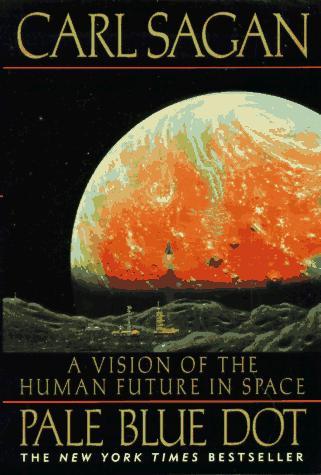
Pale Blue Dot: A Vision of the Human Future in Space
by
Carl Sagan
Published 8 Sep 1997
For me, the most ironic token of that moment in history is the plaque signed by President Richard M. Nixon that Apollo 11 took to the Moon. It reads: "We came in peace for all mankind." As the United States was dropping 7½ megatons of conventional explosives on small nations in Southeast Asia, we congratulated ourselves on our humanity: We would harm no one on a lifeless rock. That plaque is there still, attached to the base of the Apollo 11 Lunar Module, on the airless desolation of the Sea of Tranquility. If no one disturbs it, it will still be readable a million years from now. Six more missions followed Apollo 11, all but one of which successfully landed on the lunar surface.
…
SPACECRAFT EXPLORATION OF THE SOLAR SYSTEM NOTABLE EARLY ACHIEVEMENTS UNITED STATES 1958 First scientific discovery in space-Van Allen radiation belt (Explorer 1) 1959 First television images of the Earth from space (Explorer 6) 1962 First scientific discovery in interplanetary space -direct observation of the solar wind (Mariner 2) 1962 First scientifically successful planetary mission (Mariner 2 to Venus) 1962 First astronomical observatory in space (OSO-1) 1968 First manned orbit of another world ( Apollo 8 to the Moon) 1969 First landing of humans on another world ( Apollo 11 to the Moon) 1969 First samples returned to Earth from another world ( Apollo 11 to the Moon) 1971 First manned roving vehicle on another world ( Apollo 15 to the Moon) 1971 First spacecraft to orbit another planet (Mariner 9 to Mars) 1973 First flyby of Jupiter (Pioneer 10) 1974 First dual-planet mission (Mariner 10 to Venus and Mercury) 1974 First flyby of Mercury (Mariner 10) 1976 First successful Mars landing; first spacecraft to search for life on another planet (Viking 1) 1977 First flybys of Saturn (Pioneer 11) 1981 First manned reusable spacecraft (STS-1) 1980- First satellite to be retrieved, repaired, 1984 and redeployed in space (Solar Maximum Mission) 1985 First distant cometary encounter (International Cometary Explorer to Comet Giacobini-Zimmer) 1986 First flyby of Uranus (Voyager 2) 1989 First flyby of Neptune (Voyager 2) 1992 First detection of the heliopause (Voyager) 1992 First encounter with a main-belt asteroid (Galileo to Gaspra) 2 1994 First detection of a moon of an asteroid (Galileo to Ida) SOVIET UNION/RUSSIA 1957 First artificial satellite of the Earth ( Sputnik 1) 1957 First animal in space ( Sputnik 2) 1959 First spacecraft to escape the Earth's gravity ( Luna 1) 1959 First artificial planet of the Sun ( Luna 1) 1959 First spacecraft to impact another world ( Luna 2 to the Moon) 1959 First view of the far side of the moon ( Luna 3) 1961 First human in space ( Vostok 1) 1961 First human to orbit the Earth ( Vostok 1) 1961 First spacecraft to fly by other planets ( Venera 1 to Venus; 1962 Mars 1 to Mars) 1963 First woman in space ( Vostok 6) 1964 First multi-person space mission ( Voskhod 1) 1965 First space "walk" ( Voskhod 2) 1966 First spacecraft to enter the atmosphere of another planet ( Venera 3 to Venus) 1966 First spacecraft to orbit another world ( Luna 10 to the Moon) 1966 First successful soft landing on another world ( Luna 9 to the Moon) 1970 First robot mission to return a sample from another world (Luna 16 to the Moon) 1970 First roving vehicle on another world (Luna 17 to the Moon) 1971 First soft landing on another planet (Mars 3 to Mars) 1972 First scientifically successful landing on another planet (Venera 8 to Venus) 1980 First approximately year-long manned spaceflight 1981 (comparable to Mars flight time) (Soyuz 35) 1983 First full orbital radar mapping of another planet (Venera 15 to Venus) 1985 First balloon station deployed in the atmosphere of another planet (Vega 1 to Venus) 1986 First close cometary encounter (Vega 1 to Halley's Comet) 1986 First space station inhabited by rotating crews (Mir) 3 CONTENTS WANDERERS: AN INTRODUCTION 5 1.
…
OTHER WORLDS, OTHER SKIES: Mercury, the Earth's Moon, and most satellites of the other planets are small worlds; because of their feeble gravities, they are unable to retain their atmospheres—which instead trickle of into space. The near-vacuum of space then reaches the ground. Sunlight strikes their surfaces unimpeded, neither scattered nor absorbed along the way. The skies of these worlds are black, even at noon. This has been witnessed firsthand so far by only 12 humans, the lunar landing crews of Apollos 11, 12, and 14-17. A full list of the satellites in the Solar System, known as of this writing, is given in the accompanying table. (Nearly half of them were discovered by Voyager.) All have black skies— except Titan of Saturn and perhaps Triton of Neptune, which are big enough to have atmospheres.

Working in Public: The Making and Maintenance of Open Source Software
by
Nadia Eghbal
Published 3 Aug 2020
But not all old code is actively depended upon, even if it continues to exist. For example, the code used to manage Apollo 11’s command and lunar modules, first written in 1969, was published on GitHub in 2016, meaning that it is still publicly accessible today.193 We can view, fork, and modify Apollo 11’s code, but it’s widely understood that the code is archival. The code that is available on GitHub was digitized from a hard copy that lives in the MIT Museum; it’s not expected that anyone will run it today. Apollo 11’s code is roughly the same age as C, a programming language first released in 1972, three years after Apollo 11’s code was written. C still powers much of our underlying software and hardware today, including the Windows, Linux, macOS, iPhone, and Android kernels.
…
C still powers much of our underlying software and hardware today, including the Windows, Linux, macOS, iPhone, and Android kernels. Both C’s and Apollo 11’s code were written around the same time, but while we understand that Apollo 11’s code is a historical exercise, we actually do need C to keep working, because so much of our daily life depends on it. The difference between these two codes highlights an important characteristic of code, which is that it can exist in either static or active state. Apollo 11’s code lives in static state: It’s a commodity, like lumber. When we treat code as a commodity, we’re thinking about it on the basis of pure consumption.
…
Howison, “Assessing the Health of Open Source Communities,” Computer 39, no. 5 (May 2006): 89–91, https://doi.org/10.1109/mc.2006.152. 177 Nadia Eghbal, “What Success Really Looks Like in Open Source,” Medium, February 5, 2016, https://medium.com/@nayafia/what-success-really-looks-like-in-open-source-2dd1facaf91c. 178 Nadia Eghbal, “Methodologies for Measuring Project Health,” Nadia Eghbal, July 18, 2018, https://nadiaeghbal.com/project-health. 179 Brooks, The Mythical Man-Month, 16. 180 Richard Schneeman, “Saving Sprockets,” Schneems, May 31, 2016, https://www.schneems.com/2016/05/31/saving-sprockets.html. 181 “Open Source Metrics,” Open Source Guides, n.d., https://opensource.guide/metrics/. 182 Eghbal, “Methodologies for Measuring Project Health.” 04 183 Kevin Kelly, “Immortal Technologies,” The Technium, February 9, 2006, https://kk.org/thetechnium/immortal-techno/. 184 Nathan Ensmenger, “When Good Software Goes Bad: The Surprising Durability of an Ephemeral Technology,” Indiana University, September 11, 2014, http://homes.sice.indiana.edu/nensmeng/files/ensmenger-mice.pdf. 185 Fergus Henderson, “Software Engineering at Google,” ArXiv, February 19, 2019, https://arxiv.org/pdf/1702.01715.pdf. 186 Alex Handy, “Ruby on Rails 3.0 Goes Modular,” SD Times, February 12, 2010, https://sdtimes.com/ruby-on-rails/ruby-on-rails-3-0-goes-modular. 187 Yehuda Katz, “Rails and Merb Merge,” Katz Got Your Tongue, December 23, 2008, https://yehudakatz.com/2008/12/23/rails-and-merb-merge/. 188 Byrne Hobart, “The Case for Subsidizing, or Banning, COBOL Classes,” Medium, March 29, 2019, https://medium.com/@byrnehobart/you-cant-reduce-all-economic-decisions-to-a-series-of-financial-bets-but-it-s-a-good-way-to-d40e88e89e17. 189 Chris Zacharias, “A Conspiracy To Kill IE6,” Chris Zacharias (blog), May 1, 2019, http://blog.chriszacharias.com/a-conspiracy-to-kill-ie6. 190 Jacob Friedmann, “SmooshGate: The Ongoing Struggle between Progress and Stability in JavaScript,” Medium, March 10, 2018, https://medium.com/@jacobdfriedmann/smooshgate-the-ongoing-struggle-between-progress-and-stability-in-javascript-2a971c1162dd. 191 Michael Ficarra (michaelficarra), “Rename Flatten to Smoosh,” Tc39 / Proposal-flatMap Pull Requests, GitHub, March 6, 2018, https://github.com/tc39/proposal-flatMap/pull/56. 192 Neal Stephenson, In the Beginning . . . Was the Command Line (New York: William Morrow Paperbacks, 1999), 88. 193 Chrislgarry / Apollo-11, GitHub, accessed March 31, 2020, https://github.com/chrislgarry/Apollo-11. 194 Nadia Eghbal, “The Hidden Costs of Software” (lecture, the Web Conference, San Francisco, May 16, 2019). 195 Free Software Foundation, “What Is Free Software?,” GNU Operating System, July 30, 2019, https://www.gnu.org/philosophy/free-sw.en.html, 196 Jacob Thornton, “What Is Open Source & Why Do I Feel So Guilty?
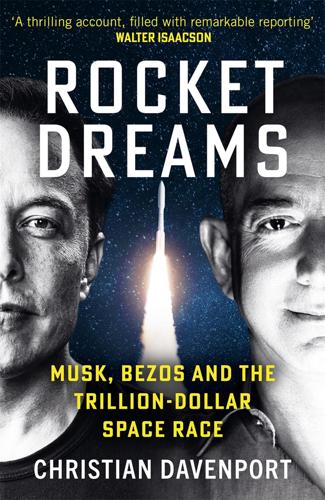
Rocket Dreams: Musk, Bezos and the Trillion-Dollar Space Race
by
Christian Davenport
Published 6 Sep 2025
Walter Cronkite, the CBS news anchor who had provided the play-by-play of the Apollo 11 moon landing, was considered the favorite. He never flew, of course. NASA canceled the program after Challenger exploded, killing McAuliffe and the six others also on board. Space travel, NASA decided, was far too new and too dangerous to be opened up to the masses. “Anyone who has lived with large rocket engines understands that their awesome power is produced by machinery churning away at very high temperatures, pressures and velocities. A thin and fragile barrier separates combustion from explosion,” Michael Collins, the command module pilot during Apollo 11, wrote in The Washington Post two days after the disaster.
…
Senate Committee on Commerce, Science and Transportation, nomination hearing, November 1, 2017, https://www.commerce.senate.gov/2017/11/nomination-hearing-11-01-2017. 89 “The NASA administrator”: Christian Davenport, “Trump’s Nominee for NASA Administrator Comes Under Fire at Senate Hearing,” The Washington Post, November 1, 2017, https://www.washingtonpost.com/news/the-switch/wp/2017/11/01/trumps-nominee-for-nasa-administrator-comes-under-fire-at-senate-hearing/. 90 “devastating for the space program”: Jeff Foust, “Bridenstine Faces Obstacles to Senate Confirmation,” SpaceNews, September 3, 2017, https://spacenews.com/bridenstine-faces-obstacles-to-senate-confirmation/. 91 Flake was placated: Connor O’Brien, “Senate Advances Bridenstine to Lead NASA,” Politico, April 18, 2018, https://www.politico.com/story/2018/04/18/jim-bridenstine-nasa-senate-492565. 91 Bridenstine was confirmed: Seung Min Kim and Christian Davenport, “Senate Confirms Trump Pick for NASA Administrator Over Democratic Objections,” The Washington Post, April 19, 2018, https://www.washingtonpost.com/politics/senate-confirms-trump-pick-as-nasa-administrator-over-democratic-objections/2018/04/19/58692c6a-43f2-11e8-baaf-8b3c5a3da888_story.html. 92 “Administrator Bridenstine”: “Remarks by President Trump at a Meeting with the National Space Council and Signing of Space Policy Directive-3,” June 18, 2018, https://trumpwhitehouse.archives.gov/briefings-statements/remarks-president-trump-meeting-national-space-council-signing-space-policy-directive-3/. 92 “very soon we’re going to Mars”: “Trump: ‘We May Even Have a Space Force,’ ”The Washington Post, March 13, 2018, https://www.washingtonpost.com/video/politics/trump-we-may-even-have-a-space-force/2018/03/13/9dcd9f9c-270b-11e8-a227-fd2b009466bc_video.html. 93 “Space Pearl Harbor”: Report of the Commission to Assess United States National Security Space Management and Organization, January 11, 2001, https://aerospace.csis.org/wp-content/uploads/2018/09/RumsfeldCommission.pdf. 93 “create enormous upheaval”: Christian Davenport, “Some in Congress Are Pushing for a ‘Space Corps,’ Dedicated to Fighting Wars in the Cosmos,” The Washington Post, September 15, 2017, https://www.washingtonpost.com/news/checkpoint/wp/2017/09/15/some-in-congress-are-pushing-for-a-space-corps-dedicated-to-fighting-wars-in-the-cosmos/. 93 In reality, the White House: Christian Davenport, “The White House Was Seriously Considering a ‘Space Force’ Long Before Trump Talked About It Publicly,” The Washington Post, August 21, 2018, https://www.washingtonpost.com/technology/2018/08/21/white-house-was-seriously-considering-space-force-well-before-trump-talked-about-it-publicly/. 95 “Everyone who was alive”: Mary Louise Kelly, “50 Years After Apollo 11 Moon Landing, NASA Sets Its Sights on Mars,” NPR, July 15, 2019, https://www.npr.org/2019/07/15/741281881/50-years-after-apollo-11-moon-landing-nasa-sets-its-sights-on-mars. 96 recalculated the odds: Jeff Foust, “Recalculating Risk,” The Space Review, February 13, 2017, https://www.thespacereview.com/article/3171/1. CHAPTER 7 101 “This is a rocket of truly huge scale”: Seth Borenstein, “Giant Rocket Being Planned,” Associated Press, April 6, 2011, https://www.heraldtribune.com/story/news/2011/04/06/giant-rocket-being-planned/29008129007/. 101 “At first it sounds real easy”: William Harwood, “SpaceX Shows Off Powerful Falcon Heavy Rocket Ahead of First Launch,” CBS News, December 22, 2017, https://www.cbsnews.com/news/spacex-shows-off-powerful-falcon-heavy-rocket/. 102 “We were pretty naïve”: Christian Davenport, “Elon Musk Is Set to Launch His Falcon Heavy Rocket, a Flamethrower of a Different Sort,” The Washington Post, January 30, 2018, https://www.washingtonpost.com/news/the-switch/wp/2018/01/30/elon-musk-is-set-to-launch-his-falcon-heavy-rocket-a-flamethrower-of-another-sort/. 102 Even Musk said the odds: William Harwood, “Elon Musk Giddy Ahead of SpaceX’s Historic Falcon Heavy Launch,” CBS News, February 6, 2018, https://www.cbsnews.com/news/elon-musk-giddy-ahead-of-spacexs-historic-falcon-heavy-launch/. 102 “more than a fully loaded Boeing”: SpaceX Next: Falcon Heavy Press Conference, April 5, 2011, https://www.youtube.com/watch?
…
The Moon Could Be Next,” The Washington Post, January 14, 2020, https://www.washingtonpost.com/lifestyle/2020/01/14/nasaastronautjonnykim/. 136 “I’d like to see kids growing up”: Christian Davenport, “Why NASA’s Next Rockets May Say ‘Budweiser’ on the Side,” The Washington Post, September 10, 2018, https://www.washingtonpost.com/technology/2018/09/10/why-nasas-next-rockers-might-say-budweiser-side/. 136 Even the astronauts groused: Christian Davenport, “As the Possibility of Going to Space Grows, Astronauts Still Don’t Know How They Get Picked to Fly,” The Washington Post, September 15, 2020, https://www.washingtonpost.com/technology/2020/09/15/with-more-chances-fly-space-than-ever-before-us-astronauts-are-still-unsure-how-they-get-picked/. 136 When it came time: Graham Southorn, “The Apollo 11 Mission Patch: How It Came to Be,” BBC Sky at Night Magazine, July 10, 2019, https://www.skyatnightmagazine.com/space-missions/the-apollo-11-mission-patch-how-it-came-to-be. 137 “For some of you”: “Commercial Crew Program Crew Assignment Announcement,” NASA, August 3, 2108, https://images.nasa.gov/details/Commercial_Crew_Program_Crew_Assignment_Announcement_August_3_2018_686042. 139 “This year, American”: “Apollo Astronaut Buzz Aldrin at the 2019 State of the Union,” NASA, February 6, 2019, https://www.nasa.gov/image-article/apollo-astronaut-buzz-aldrin-2019-state-of-union/. 140 By March 2019: Jaret Matthews, Caitlin Driscoll, Edward Fouad, Andrew Welter, Marc Jarmulowicz, and Jessica Ipnar, “Design, Development, Testing, and Flight of the Crew Dragon Docking System,” IEEM Paper, 2020, https://esmats.eu/amspapers/pastpapers/pdfs/2020/matthews.pdf. 141 “I don’t think it’ll be a problem”: Loren Grush, “NASA Gives SpaceX the OK to Launch New Passenger Spacecraft on Uncrewed Spaceflight,” The Verge, February 22, 2019, https://www.theverge.com/2019/2/22/18236771/nasa-spacex-dragon-commercial-crew-dm-1-test-flight. 141 “If something goes wrong”: NASA & SpaceX: Journey to the Future, Discovery and Science Channels, May 2020, https://www.amazon.com/NASA-SpaceX-Journey-Future-Special/dp/B0896Q52L5. 142 “I can’t believe how well”: Marie Lews, “Demo-1 Post-Splashdown Comments from Benjo Reed,” NASA Commercial Crew Program Blog, March 8, 2019, https://blogs.nasa.gov/commercialcrew/2019/03/. 143 “I don’t think we really”: Michael Sheetz, “SpaceX Completes Historic Crew Dragon Test Flight for NASA with Splashdown in the Atlantic,” CNBC, March 8, 2019, https://www.cnbc.com/2019/03/08/spacex-crew-dragon-splashdown-in-the-atlantic-ocean-for-nasa.html.
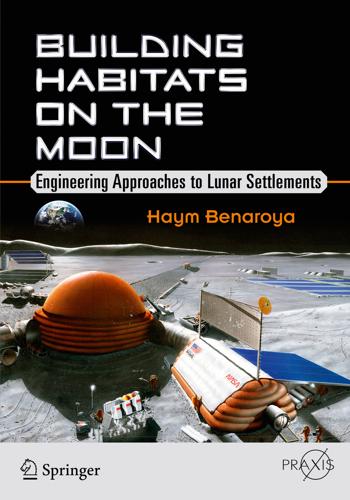
Building Habitats on the Moon: Engineering Approaches to Lunar Settlements
by
Haym Benaroya
Published 12 Jan 2018
An interesting example of the difficulty of site characterization on the Moon takes us back to the Apollo era. There was little knowledge of the regolith properties where Apollo 11 was to land, and therefore much uncertainty about how deep the lander would sink into the regolith. Figure 3.8 shows one of the lander’s legs, with the large saucer at the base designed to distribute the lander weight. Figure 3.8.Astronaut Edwin E. Aldrin, Jr. walks on the surface of the Moon near a leg of the Lunar Module during the Apollo 11 extravehicular activity. Astronaut Neil A. Armstrong, Apollo 11 commander, took this photograph with a 70-mm lunar surface camera. The astronauts’ footprints are clearly visible in the foreground.
…
Kennedy announces his intention to put a man on the Moon before a joint session of Congress on May 25 1961. “10, 9, ignition sequence start, 6, 5, 4, 3, 2, 1, zero. All engines running. Liftoff! We have a liftoff! Thirty-two minutes past the hour. Liftoff on Apollo 11!” Jack King, NASA Chief of Public Information, on the launch of the Apollo 11 over a live television broadcast on July 16, 1969. “Houston, Tranquility Base here. The Eagle has landed.” Neil Armstrong tells NASA’s Mission Control base in Texas that the Eagle landing module has reached the Moon’s surface on July 20, 1969. “This is the LM pilot.
…
Quotes “We would like to give special thanks to all those Americans who built the spacecraft; who did the construction , design, the tests, and put their hearts and all their abilities into those craft. To those people tonight, we give a special thank you, and to all the other people that are listening and watching tonight, God bless you. Good night from Apollo 11.” Neil Armstrong concludes the final television broadcast from Apollo 11 on the night before splashdown, July 23, 1969. “Whoopee! Man, that may have been a small one for Neil, but it’s a long one for me!” Charles Conrad Jr., Commander of Apollo 12, on becoming the third man to walk on the Moon on November 20, 1969. “There’s a need for accepting responsibility – for a person’s life and making choices that are not just ones for immediate short-term comfort.
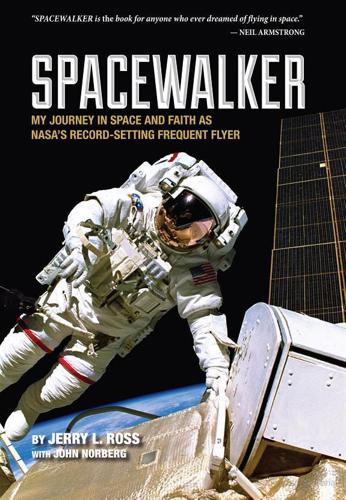
Spacewalker: My Journey in Space and Faith as NASA's Record-Setting Frequent Flyer
by
Jerry Lynn Ross
and
John Norberg
Published 31 Jan 2013
–Neil ArmStroNg, Commander of Apollo 11 “this is the story of one man’s lifelong quest to explore the unknown, overcome setbacks and obstacles, and keep the beacon of space shining in the hearts of all people, young and old. this book is about an American Dream.” –eugeNe CerNAN, NASA gemini and Apollo astronaut “this book is the story of a common man from the midwest who became an American hero . . . a model for the youth of our nation and for those who will accept the challenge to follow in his footsteps.” –geNe KrANz, NASA Flight Director for gemini and Apollo, including Apollo 11 and 13 From the age of ten, looking up at the stars, Jerry ross knew that he wanted to journey into space. this autobiography tells the story of how he came not only to achieve that goal, but to become the most-launched astronaut in history, as well as a NASA veteran whose career spanned the entire uS Space Shuttle program.
…
The most senior person in the Astronaut Office when I arrived was John Young.John is one of the most amazing people to ever fly into space. He is also one of my personal heroes.John flew on the first manned Gemini flight with Gus Grissom. Then he flew on Gemini 10 with Michael Collins, who would later serve as Command Module Pilot on Apollo 11—the first mission to land on the Moon. John flew on Apollo 10 with Gene Cernan and Tom Stafford. Apollo 10 did everything Apollo 11 accomplished, except for landing and walking on the lunar surface. Additionally, Captain Young commanded Apollo 16 and walked on the Moon. He also commanded the first and ninth Shuttle missions. That totals six missions for John,including two that went to the Moon and one that landed.
…
“As an astronaut for over three decades, one who participated in some of the most challenging and exciting Shuttle missions, Jerry Ross knows spaceflight. In Spacewalker, he details the exultation of actually being in space and brings to life the realities of preparing for and executing one of the most difficult of all human endeavors. Spacewalker is the book for anyone who ever dreamed of flying in space.” –Neil Armstrong, Commander of Apollo 11 “I have known Jerry Ross for many years, as an astronaut, a friend, and as a fellow alumnus of Purdue University. We’ve had many opportunities to share our experiences and our dreams for space exploration. We share a passion for inspiring young people.This is the story of one man’s lifelong quest to explore the unknown, overcome setbacks and obstacles, and keep the beacon of space shining in the hearts of all people, young and old.
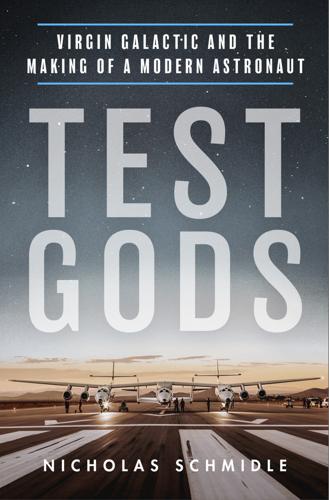
Test Gods: Virgin Galactic and the Making of a Modern Astronaut
by
Nicholas Schmidle
Published 3 May 2021
AAA guns Above & Beyond Abu Ghraib Aerion Agin, Cheryl Chihuahuas and crash of SpaceShipTwo and at Disneyland at first rocket-powered test flight of SpaceShipTwo first space flight of SpaceShipTwo and in Idaho looks at real estate in New Mexico meets with Saling moves to New Mexico orders a bidet at SETP at Space Mirror Memorial at SpaceShipTwo’s first space flight Stucky moves in with Stucky’s convalescence and Stucky’s 2019 paragliding accident and Air Force Air Force reserves Aldrin, Buzz Allen, Paul Alsbury, Ainsley Alsbury, Liam Alsbury, Mike added to Space Mirror Memorial crash of SpaceShipTwo and death of first rocket-powered test flight of SpaceShipTwo legacy of memorial for not mentioned often by Branson and Whitesides as Siebold’s copilot altitude discrepancy, SpaceShipTwo and “angel’s wings”. See also feather Antares rocket Apollo 11 (film) Apollo program Apollo 1 Apollo 7 Apollo 11 Apollo 15 Area 51 Armstrong, Neil Associated Press Astronaut Memorial Foundation Attenborough, Stephen Avila, Steven Bahrain Basic School, The Basra, Iraq Bassett, Mark BBC Beal, Andrew Beechcraft Behind the Mask beta dot technique Bezos, Jeff Binnie, Brian bin Salman, Mohammad Bissinger, Buzz Blackwell, Eric Blue Origin Blue Zebra Boeing Bowie, David Branson, Holly Branson, Richard accused of hucksterism ambitions of attends ceremony commemorating SpaceShipOne at ceremony honoring Stucky and Sturckow crash of SpaceShipTwo and criticisms of dolls based on donates rocket motor to National Air and Space Museum first space flight of SpaceShipTwo and funding and giving flight attendants tour of hangar in Helsinki invites Schmidle (author) to Virgin Islands IPO and media and Moses and at National Air and Space Museum “overview effect” and party in 2009 and personality contrasted with Whitesides press coverage and registers Virgin Galactic renegade credentials of restlessness of rumor about pulling out of project Rutan and in Saudi Arabia sees Virgin Galactic as a movement SpaceShipTwo flight with Beth Moses and SpaceShipTwo’s first foray into space and at SpaceShipTwo’s first rocket-powered flight test support for human rights thanks Schmidle (author) for “Rocket Man” profile of Stucky at 2016 SpaceShipTwo rollout Branson, Sam Braun, Wernher von Brenner, Joël Glenn Brightman, Sarah burn time Bush, George H.
…
FORGER STUCKY SURVIVED OFFICER candidate school in Quantico but not the medical exams that followed: his heartbeat was testing lower than the doctors liked. Stucky insisted that it was always slow, but the medics wanted to wait before clearing him for flight school. Stucky took advantage of the downtime. He flew his hang glider and read a lot of books, including one by Michael Collins, the third and often forgotten member of the Apollo 11 crew. Stucky appreciated Collins’s sense of humor; when asked how he felt on the dark side of the moon while Neil Armstrong and Buzz Aldrin were making cosmic history, Collins joked, “I just kept reminding myself that every single component in this spacecraft was provided by the guy who submitted the cheapest tender.”
…
He couldn’t believe they were conducting their first mated taxi with SpaceShipTwo in such horrid weather—a violation of all the core tenets of flight test. Easing the jet into its slip, Stucky could hear the thumping music and see the strobes out of the corner of his eye. When he shut down the engines, an audio clip from the Apollo 11 mission crackled over the speakers: “The Eagle has landed.” Branson came out and met the mated airplanes on the runway. “Isn’t that the sexiest spaceship ever?” he asked. Branson urged Schwarzenegger and Richardson to smash bottles of champagne on the nose of SpaceShipTwo, before they all made haste for the warm tent.
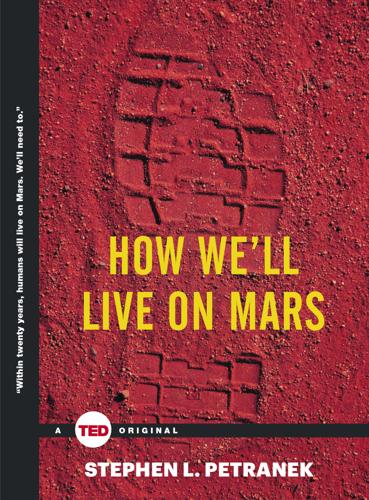
How We'll Live on Mars (TED Books)
by
Stephen Petranek
Published 6 Jul 2015
The intention is to create a viable population of 50,000 within a few decades. They can preserve the collective wisdom and achievement of humanity even if those of us back on Earth are annihilated. The truth is that it has been possible to reach Mars for at least thirty years. Within a decade or so of the Apollo 11 mission that landed the first humans on Earth’s moon, we could have landed humans on the Red Planet. Almost every technology required has long been available. We simply have not chosen to pursue the opportunity. The backstory of that mistake is worth understanding—how a single decision by one US president stunted space travel for decades, how we might have inspired two generations of earthlings with humankind’s ability to deliver on almost anything our brains can imagine.
…
Unfortunately, both von Braun and Robert Goddard were so far ahead of their time that they suffered a great deal of bad publicity, criticism, and abuse from authority figures who simply didn’t get it. When Goddard said that a rocket could reach the moon, the news made the front page of the New York Times, but on its editorial page, the paper mocked his vision. (Nearly five decades later, and a day after Apollo 11 took off for the moon, the Times printed a correction.) In the early 1950s, when von Braun proposed a serious plan for going to Mars, his vision must have been experienced as absurd—even by scientists and engineers. Hundreds of rockets sent into low Earth orbit to build ten giant interplanetary spacecraft filled with tens of millions of pounds of fuel and oxygen and food?
…
And although there is no shortage of private projects intending to send people to Mars, only one company can currently make a realistic promise to deliver human bodies to the Red Planet before NASA finally gets around to it. • • • In the same way we can draw a line from Wernher von Braun straight to Apollo 11, when a spaceship carrying astronauts lands on Mars in 2027, we may well be able to draw a line straight to Elon Musk—because that Mars lander will most likely have the SpaceX logo on it. Musk is arguably the most visionary entrepreneur of our time. Seven years after he quit a PhD program in applied physics at Stanford University, he sold his share of PayPal and Zip2, companies he cofounded, giving him a reported net worth of $324 million.
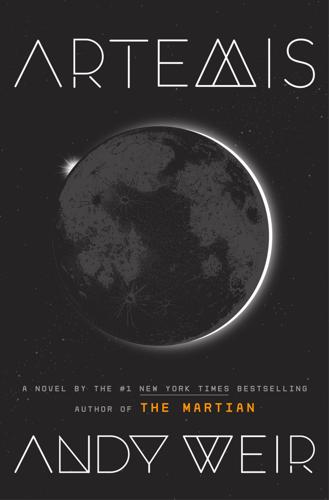
Artemis
by
Andy Weir
Published 14 Nov 2017
My dress and hijab might not be enough of a disguise. He stepped through the aperture and adjusted his uniform—a silly, nineteenth-century-style, navy-blue outfit with brass buttons and a conductor’s cap. Giddy folks returning from the Apollo 11 site exited the train. Many of them carried souvenirs from the Visitor Center: lunar modules carved from local rocks, Apollo 11 mission patches, and so on. Once everyone de-trained, Raj called out in a clear, loud voice, “This is the 2:34 p.m. traaaain to Apollo Eleeeeeven! All aboooooard!” He held out a vintage-looking brass ticket shredder. Of course, there were no paper tickets to shred.
…
Most were headed to the city reactors and Sanchez Aluminum’s smelter, a kilometer south of town. The smelter uses insane amounts of heat and extremely nasty chemicals, so everyone agrees it should be far away. As for the reactors…well…they’re nuclear reactors. We like those far away too. Dale slithered over to the train platform. He’d be going to the Apollo 11 Visitor Center. Tourists love it. The half-hour train ride provides stunning views of the moon’s terrain, and the Visitor Center is a great place to look at the landing site without ever leaving pressure. And for those who do want to venture outside to get a better view, Dale and other EVA masters are ready to give them a tour.
…
“Actually”—Jin Chu held up a finger—“Kirk only had sex with three alien women in the entire classic series. And that number assumes he slept with Elaan of Troyius, which was implied but never made clear. So it might just be two.” Trond bowed in supplication. “I will no longer challenge you on anything Star Trek–related. Are you going to the Apollo 11 site while you’re here?” “Absolutely,” Jin said. “I hear there are EVA tours. Should I do one, you think?” I piped in. “Nah. There’s an exclusion perimeter around the whole site. The Viewing Hall in the Visitor Center gets you just as close.” “Oh, I see. Guess there’s no point, then.” Suck it, Dale.
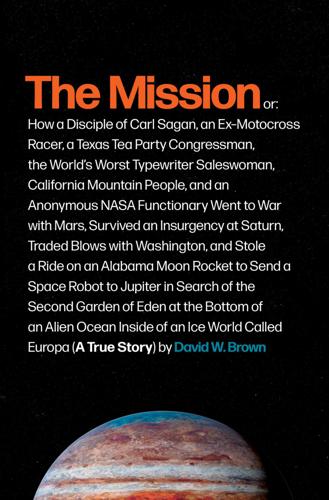
The Mission: A True Story
by
David W. Brown
Published 26 Jan 2021
Clarke, 2010: Odyssey Two (New York: Ballantine Books, 2001). 42.Ibid. 43.“NASA Anniversary: Apollo 11 Moon Landing, July 20, 1969,” NASA, last modified July 20, 2010, https://www.nasa.gov/news/media/audiofile/Apollo_11_Moon_Landing.html. See also “Apollo 11 Mission Logs, July 20, 1969,” NASA, accessed May 22, 2019, https://spaceflight.nasa.gov/history/apollo/apollo11/july20.htm. Much as Hamlet might have said “Oh, that this too, too sullied flesh would melt . . .” or maybe “solid flesh,” or maybe “sallied flesh,” depending on the folio, the Apollo 11 transcripts are in a constant state of historical reevaluation. For example, did Neil Armstrong say “One small step for a man” or “One small step for man”?
…
Garver, interview by author, August 2, 2016. 388.White House, “President Bush Announces New Vision for Space Exploration Program,” news release, January 14, 2004, https://history.nasa.gov/Bush%20SEP.htm. 389.B. Weinraub, “Bush May Back Manned Flights to Moon and Mars,” New York Times, July 18, 1989, A14. See also G. H. W. Bush, “Remarks on the 20th Anniversary of the Apollo 11 Moon Landing,” American Presidency Project, accessed March 12, 2020, https://www.presidency.ucsb.edu/documents/remarks-the-20th-anniversary-the-apollo-11-moon-landing. In 1989, on the twentieth anniversary of Apollo 11, newly elected president George H. W. Bush wanted to get the space program back on track, and he wanted to do it in a major address. He didn’t run for office as a “space president,” but the problem had festered long enough—the dearth of science missions (not a single science spacecraft launched during the Reagan administration), the shuttle hemorrhaging billions, and NASA still space-station-less and thus devoid of purpose—it was as good a time as any to get things back in order.
…
“Hubble Space Telescope Sees Evidence of Water Vapor Venting off Jupiter Moon,” NASA, last modified August 7, 2017, http://www.nasa.gov/content/goddard/hubble-europa-water-vapor. 475.Wright Brothers National Memorial North Carolina, “Announcing Details of the 50th Anniversary of the Apollo 11 Moon Landing Event,” press release, July 16, 2019, https://www.nps.gov/wrbr/planyourvisit/apollo-11-50th.htm. 476.A. Hamer, “Neil Armstrong Took a Piece of the North Carolina Outer Banks to the Moon,” Curiosity, last modified October 13, 2018, https://curiosity.com/topics/neil-armstrong-took-a-piece-of-the-north-carolina-outer-banks-to-the-moon-curiosity. 477.W.

Visual Thinking: The Hidden Gifts of People Who Think in Pictures, Patterns, and Abstractions
by
Temple Grandin, Ph.d.
Published 11 Oct 2022
Hal Laning, a computer scientist with degrees in chemical engineering and applied mathematics, worked in a messy office at MIT, and out of an aversion for the spotlight rarely published a paper. You would never know that his invention cleared the way for Apollo 11’s successful lunar launch. Like Katherine Johnson, Laning was obsessed with numbers from the time he was very young. Every Sunday, he used the hymn numbers on the signboard outside the church to make up math problems. Colleague Donald Fraser said, “He could read a hexadecimal dump of data as easily as I could read a novel. At any time challenged, he could recite at least the first thirty digits of pi.” In the case of Apollo 11, two innovations were mission-critical. Laning employed silicon integrated-circuit chips, which were small and lightweight (their advent would speed up the microchip technology that we all take for granted).
…
Sperry Gyroscope Company ad, 1945 (Gyrosyn Compass Flux Valve Repeater Aviation Instrument). https://www.periodpaper.com/products/1945-ad-sperry-gyrosyn-compass-flux-valve-repeater-aviation-instrument-wwii-art-216158-ysw3-34. Teitel, A. S. “Hal Laning: The Man You Didn’t Know Saved Apollo 11.” Discover Magazine, May 23, 2019. https://www.discovermagazine.com/the-sciences/hal-laning-the-man-you-didnt-know-saved-apollo-11. Thompson, C. Coders. New York: Penguin Press, 2019. Thompson, C. “The Secret History of Women in Coding.” New York Times Magazine, February 13, 2019. U/Entrarchy. “Mechanical Engineering vs Industrial Design.” Reddit, May 3, 2013. https://www.reddit.com/r/IndustrialDesign/comments/1dmuoa/mechanical_engineering_vs_industrial_design/.
…
Journal of Animal Science 42 (1976): 831–37. Whitman, A. “Richard Rodgers Is Dead at Age 77; Broadway’s Renowned Composer.” New York Times, December 31, 1979. https://www.nytimes.com/1979/12/31/archives/richard-rodgers-is-dead-at-age-77-broadways-renowned-composer.html/. Witt, S. “Apollo 11: Mission Out of Control.” Wired, June 24, 2019. https://www.wired.com/story/apollo-11-mission-out-of-control/. Woolley, A. W., et al. “Evidence for a Collective Intelligence Factor in the Performance of Human Groups.” Science 330, no. 6004 (September 30, 2010): 686–88. Woolley, A. W., et al. “Using Brain-Based Measures to Compose Teams.”
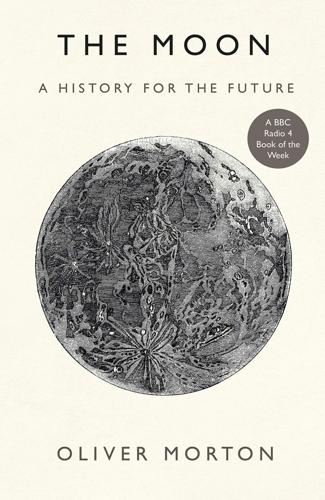
The Moon: A History for the Future
by
Oliver Morton
Published 1 May 2019
disturbingly real but oddly indistinct. In the 40-minute periods they spent over the daylit surface they tried—and, frequently, failed—to pick out the features —Hey, you know something; it’s gray, huh? of the strangely lit sideways-seen land below—features which, a few months later, would guide their comrades on the Eagle, Apollo 11’s lunar module, down to the first landing. In the 40-minute nights they attended to their own needs, and those of their vessel. It was only on the fourth orbit, when the spacecraft’s orientation had changed, that they had the vision for which their mission will always be remembered. Shortly after they had swept from night to day, a bright, colourful complexity came past the limb of the Moon and into view —Oh my God!
…
Sixty ambassadors, half of Congress and about a quarter of America’s governors, watching with awe, shaken by “a sound that became your body”, as the artist Robert Rauschenberg put it. The roar lasted less than three minutes. But by the time the F-1s fell silent, the rocket was travelling at over 8,000kph and was 600km from Cape Kennedy. Apollo 11 was on its way to the Moon. Gene Shoemaker was not aboard. He had not been able to become an astronaut; Addison’s disease had put paid to the Moonshaker’s dreams of being a Moonwalker. The astrogeology programme that he had created, though, shaped where the astronauts would go on the Moon and what they would do there.
…
In her book “The Planets” (2005), Dava Sobel recalls hearing that her friend Carolyn, on being presented with a speck of moondust by a planetary scientist boyfriend, impulsively ate it. The Apollo astronauts ingest it without choosing to. In their dust-dirtied LM tiny particles move through the alveoli of their lungs and across the microvilli of their guts into their blood, tissues and cells. They bring the Moon home incorporated. They bring themselves home changed. APOLLO 11: SEA OF TRANQUILITY On the Moon: Neil Armstrong and Buzz Aldrin In lunar orbit: Michael Collins TIME SINCE LAUNCH 102:45:58 —Engine arm is off. Houston, Tranquility Base here. The Eagle has landed. —Roger, Twan . . . Tranquility. We copy you on the ground. You got a bunch of guys about to turn blue.
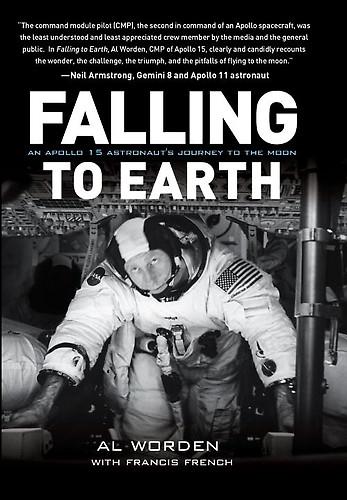
Falling to Earth
by
Al Worden
Published 26 Jul 2011
Some spectacular test piloting proved that NASA was ready to go all the way on the next flight: a lunar landing. Apollo 11 was in many ways the whole point of NASA’s efforts over the preceding eight years. The Apollo program had been created to land humans on the moon and return them safely to Earth. I wasn’t going to get an opportunity to fly until after that mission had taken place at least once. Although NASA still had an ambitious schedule of lunar landing missions, I had noticed how politicians were still whittling back the budget. Rather than the fulfillment of an ambition, I hoped that Apollo 11 would be the beginning of sustained exploration of the moon.
…
The American public was losing interest in Apollo, even as NASA grew in confidence and carried out some amazing lunar exploration. People would ask me, “We landed on the moon once on Apollo 11, so why bother doing it again?” NASA had flown missions repeatedly, and they had been generally successful. When you do that often, people lose interest. Strangely, the rest of the world still seemed fascinated by Apollo’s continued explorations. They bought into the concept of Apollo 11 being just a first step and loved the idea of extended explorations on the moon. But back at home, interest waned sharply. The American public thought if they had seen one moon flight, they had seen them all.
…
I vividly remember the moment in July 1969 when mission commander Neil Armstrong and Buzz Aldrin, his lunar module pilot, touched down on the moon. I had been on yet another trip to the North American plant and was in the cockpit of my T-38 at El Toro Marine Corps Air Station in Orange County, south of Downey, preparing to fly home. The tower at the airfield told me that Apollo 11 was about to land and asked me if I would like them to relay the audio coverage. “Absolutely,” I replied. “I am staying right here.” So I sat in the aircraft and listened to the magical, nail-biting, unreal moment as guys I knew gingerly guided a spacecraft to the lunar surface. We had done it. Humans were on the moon.
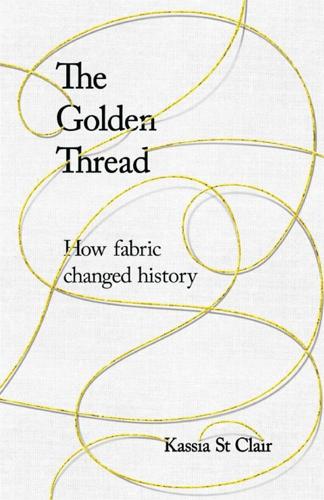
The Golden Thread: How Fabric Changed History
by
Kassia St Clair
Published 3 Oct 2018
Precisely two hours and eighteen minutes later, Armstrong closed the hatch behind him and prepared to return to orbit and then to the Earth itself.3 These hours had been the result of many years of training and preparation. In the run-up to Apollo 11, each of the aspiring astronauts4 had taken on a different area to focus on. Buzz Aldrin – who also walked on the moon that day – had studied mission planning; Ted Freeman – who did not – looked into boosters. The third man chosen for the Apollo 11 mission, Michael Collins, who stayed in orbit as his fellows cavorted in the lunar dust, had taken responsibility for the pressure suits that the astronauts would wear. ‘I made this choice slightly hesitantly,’ he later wrote.
…
Timothy, et al., ‘The Earliest Surviving Textiles in East Asia from Chertovy Vorota Cave, Primorye Province, Russian Far East’, Antiquity, 86 (2012), 325–37 <https://doi.org/10.1017/S0003598X00062797> Kvavadze, Eliso, Bar-Yosef, Ofer, Belfer-Cohen, Anna, et al., ‘30,000-Year-Old Wild Flax Fibres’, Science, 325 (2009), 1359 Kyle, Donald G., Sport and Spectacle in the Ancient World, II (Chichester: Wiley Blackwell, 2015) L Lacemaker, The, Louvre <http://www.louvre.fr/en/oeuvre-notices/lacemaker> Larsen, Paul, ‘Re: Clothes, Clothes, Clothes’, 24 June 2017 Laskow, Sarah, ‘How Gore-Tex Was Born’, The Atlantic, 8 September 2014 <https://www.theatlantic.com/technology/archive/2014/09/how-gore-tex-was-born/379731/> Lavoie, Amy, ‘Oldest-Known Fibers to Be Used by Humans Discovered’, Harvard Gazette, 2009 <http://news.harvard.edu/gazette/story/2009/09/oldest-known-fibers-discovered/> [accessed 16 February 2017] Lazurus, Sydney, ‘Viscose Suppliers to H&M and Zara Linked to Severe Health and Environmental Hazards’, Spend Matters, 2017 <http://spendmatters.com/2017/06/22/viscose-suppliers-hm-zara-linked-severe-health-environmental-hazards/> [accessed 19 September 2017] Ledford, Adam, ‘Spiders in Japan: The Tiniest Kaiju’, Tofugu, 2014 <https://www.tofugu.com/japan/spiders-in-japan/> [accessed 11 January 2017] Lee Blaszczyk, Regina, ‘Styling Synthetics: DuPont’s Marketing of Fabrics and Fashions in Postwar America’, The Business History Review, 80, 485–528 ‘Leeds Woollen Workers Petition’, Modern History Sourcebook (Leeds, 1786) <https://sourcebooks.fordham.edu/halsall/mod/1786machines.asp> Leggett, Hadley, ‘1 Million Spiders Make Golden Silk for Rare Cloth’, Wired, 2009 Leggett, William F., The Story of Linen (New York: Chemical Publishing Company, 1945) Lenzing Group, The Global Fibre Market in 2016 (Lenzing Group, 2017) <http://www.lenzing.com/en/investors/equity-story/global-fiber-market.html> [accessed 19 September 2017] Levey, Santina M., Lace: A History (London: W. S. Maney and Son, 1983) Lewis, Cathleen, ‘What Does Alan Shepard’s Mercury Suit Have to Do with Neil Armstrong’s Apollo 11 Suit?’, National Air and Space Museum, 2015 <https://airandspace.si.edu/stories/editorial/what-does-alan-shepard%E2%80%99s-mercury-suit-have-do-neil-armstrong%E2%80%99s-apollo-11-suit> [accessed 9 December 2017] Lewis, David, The Voyaging Stars: Secrets of the Pacific Island Navigators (Sydney: Collins, 1978) Lewis, Randy, Molecular Biologist at the University of Utah, interview with author, September 2016 Lightfoot, Amy, ‘From Heather-Clad Hills to the Roof of a Medieval Church: The Story of a Woollen Sail’, Norwegian Textile Letter, II (1996), 1–8 Linden, Eugene, ‘The Vikings: A Memorable Visit to America’, Smithsonian, December 2004 <http://www.smithsonianmag.com/history/the-vikings-a-memorable-visit-to-america-98090935/> [accessed 18 October 2017] Litherland, Piers, ‘Re: Egyptian Linen’, 12 June 2017 Litsky, Frank, ‘El-Guerrouj Sets Record in Mile’, New York Times, 8 July 1999, section Sports, pp. 56, 60 Lu, Yongxiang (ed.), A History of Chinese Science and Technology, trans. by Chuijun Qian and Hui He (Shanghai: Springer, 2015), ii Lucas, A., and Harris, J.
…
‘Clearly this was not the largest piece of the pie: it was not in the thick of things, such as cockpit design, or guidance and navigation, and therefore it might cause me to be overlooked as an early candidate for flight.’ It is odd that he saw it this way: as trivial or even as a hindrance. On the contrary, spacesuits – or pressure suits as they referred to them – are critical to survival in space and therefore to the success of the Apollo 11 mission.5 Space is the most alien environment in which a human being has survived. The dangers faced there are legion. In space, temperatures fluctuate between -157ºC in the shade and as high as 154º in a sunny spot. Because there is no atmosphere through which it is being filtered, there is a great deal of ultraviolet radiation from the sun, which is harmful to our eyes and skin.
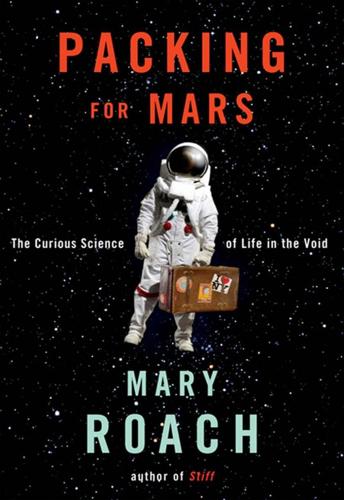
Packing for Mars: The Curious Science of Life in the Void
by
Mary Roach
Published 1 Jan 2010
OF THE MILLIONS of pages of documents and reports generated by the first moon landing, none is more telling, to me anyway, than an eleven-page paper presented at the twenty-sixth annual meeting of the North American Vexillological Association. Vexillology is the study of flags, not the study of vexing things, but in this case, either would fit. The paper is entitled “Where No Flag Has Gone Before: Political and Technical Aspects of Placing a Flag on the Moon.” It began with meetings, five months before the Apollo 11 launch. The newly formed Committee on Symbolic Activities for the First Lunar Landing gathered to debate the appropriateness of planting a flag on the moon. The Outer Space Treaty, of which the United States is a signer, prohibits claims of sovereignty upon celestial bodies. Was it possible to plant a flag without appearing to be, as one committee member put it, “taking possession of the moon”?
…
America’s first astronauts were selected by balls and charisma. All seven Mercury astronauts, by requirement, were active or former test pilots. These were men whose nine-to-five involved breaking altitude records and sound barriers while nearly passing out and crashing in screaming-fast fighter jets. Up through Apollo 11, every mission included a major NASA first. First trip to space, first orbit, first spacewalk, first docking maneuver, first lunar landing. Seriously hairy shit was going down on a regular basis. With each successive mission, space exploration became a little more routine. To the point, incredibly, of boredom.
…
Mental as opposed to written, because the last thing you want to be doing when you’re fighting off motion sickness is reading. In particular, avoid reading papers such as “Analysis of Vomitus and Contents of Gastrointestinal Tract.” RUSTY SCHWEICKART DID everything wrong. Schweickart was an astronaut on Apollo 9, charged with testing the life-support backpack that the Apollo 11 crew would wear on their history-making stroll on the moon. Schweickart was to put it on, power it up, and head into the depressurized Lunar Module. Because he’d been sick during parabolic-training flights, he’d been exceedingly cautious the three days leading up to the spacewalk. “My whole modus operandi…” he said in his NASA oral history, “was to keep my head as still as possible and not to move around a lot.”
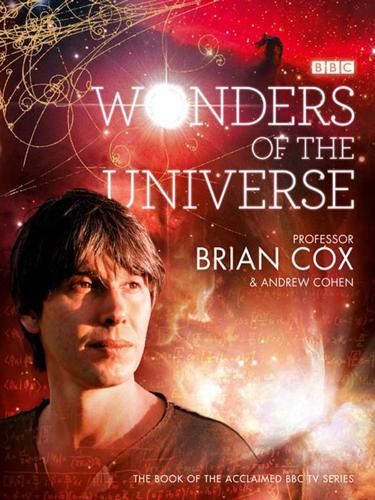
Wonders of the Universe
by
Brian Cox
and
Andrew Cohen
Published 12 Jul 2011
For one rare moment, a political victory was also a triumph for all mankind. However, it is not widely known that as the Apollo 11 lunar module rested on the Moon, a Soviet spacecraft was also in lunar orbit. The unmanned Luna 15 was the Soviets’ third attempt to land on the Moon and collect lunar rock samples. Launched three days before Apollo 11, Luna 15 was a last-ditch attempt to win the scientific race to return rock samples from another world. Unfortunately, although Luna 15 successfully began its descent to the Moon’s surface, it crashed into it shortly afterwards. Only Apollo 11 returned with moon rocks, which continue to be analysed to this day in the high-security labs of the lunar sample building in Houston, Texas.
…
Despite forty years of study, one thing has been clear pretty much from the start: these priceless examples of alien geology are remarkably similar to rocks found on Earth. In the main, they are composed of the common rock-forming elements oxygen, silicon, magnesium, iron, calcium and aluminium, but there is absolutely nothing on the Moon’s surface that couldn’t be found here on Earth. Since Apollo 11’s success, we have landed on Mars and Venus, parachuted into Jupiter’s atmosphere, touched down on Saturn’s moon Titan, and visited asteroids Eros and Itokawa and the comet Tempel 1. Each time the story is the same; the Solar System is made of the same stuff as we are. To date, eight landings on our nearest neighbour, Mars, have allowed us to explore the planet’s geology in intimate detail.
…
On 21 July 1969, Neil Armstrong and Buzz Aldrin became the first humans to set foot on the Moon. This successful landing also opened up infinite possibilities for scientists to understand the formation of the lunar landscape. This photo shows Aldrin collecting some of the lunar rock samples that they took back to Earth for analysis. NASA The Apollo 11 lunar mission was launched from the Kennedy Space Center, Florida, on 16 July 1969 and safely returned to Earth on 24 July 1969, complete with its priceless cargo of samples from the Moon’s surface. The first container was transferred to Ellington Air Force Base and was taken directly to the Lunar Receiving Laboratory at the Manned Spacecraft Center (MSC) in Houston, Texas.
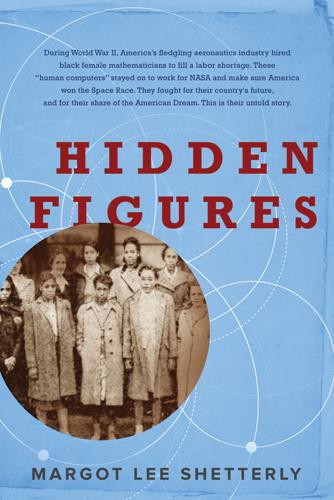
Hidden Figures
by
Margot Lee Shetterly
Published 11 Aug 2016
CHAPTER 23: TO BOLDLY GO 235 a hundred or so black women: Johnson interview, September 27, 2013. 236 groups of them perching in front of the screen: Ibid. 236 a total of six hundred million people: Scott Christianson, “How NASA’s Flight Plan Described the Apollo 11 Moon Landing,” Smithsonian.com, November 24, 2015, http://www.smithsonianmag.com/us-history/apollo-11-flight-plan-180957225/?no-ist. 236 four hundred thousand: “NASA Langley Research Center’s Contributions to the Apollo Program,” n.d., http://www.nasa.gov/centers/langley/news/factsheets/Apollo.html. 237 the weekend leadership conference: “Alpha Kappa Alpha’s 39th Mid-Western Regional Conference at LU,” Langston University Gazette, July 1969. 237 96 degrees in Hampton: Weather History for Hampton, Virginia, Farmer’s Almanac (accessed via Almanac.com). 237 a car full of sorority members: Johnson interview, September 15, 2015. 237 pink-and-green-clad women: Pink and green are the official colors of Alpha Kappa Alpha. 237 the most promising young women: 237 a full-time job training center: Ibid. 237 Hillside’s thirty-three rooms: Matt Birkbeck, Deconstructing Sammy: Music, Money and Madness (New York: HarperCollins, 2008), 162. 238 bought the land with his Jewish business partner: Wendy Beech, Against All Odds: Ten Entrepreneurs Who Followed Their Hearts and Found Success (New York: Wiley, 2002), 204. 238 The Hillside advertised: The Hillside was a mainstay of these black publications, its small black-and-white ad appearing regularly: “Pennsylvania’s Famous Resort Hotel HILLSIDE INN in the Heart of the Poconos Mountains Air Conditioned Rooms, Swimming Pool.
…
Most of them joined their friends and families in gathering around the televisions as well. Among the black women watching the television, far from Mission Control, tucked away at a resort in the Poconos, Katherine Johnson divided her attention between the weekend leadership conference being held by her sorority, Alpha Kappa Alpha, and the fortunes of the Apollo 11 astronauts on their way to becoming the three most solitary beings in the history of humanity. As she watched the delicate dance of physics that propelled the Apollo capsule forward toward the Moon, her mind’s eye superimposed equations and numbers upon each stage of the craft’s journey, from launch to Earth orbit, from translunar injection to lunar orbit.
…
Who among them would have ever imagined, however, that Katherine’s future, and their country’s future, and the future, as imagined by the likes of H. G. Wells and Jules Verne, would converge to be one and the same? Yet four days earlier, on July 16, 1969, fifty-year-old Katherine Johnson had been part of that group of insiders when the three-hundred-foot Saturn V rocket boosted the Apollo 11 craft and its three human occupants down the road to history. Mission Control set the candle on fire at 9:37 a.m., early enough for the East Coast brain busters to take in the big event and get to work, then spend the rest of the day getting the color commentary. If the space shots hadn’t exactly become commonplace since Alan Shepard’s first foray, they happened often enough for talking heads like CBS’s Walter Cronkite to wield the jargon of max Q and apogee and trans-Earth injection with the same nonchalance as the flight operations crew in the trenches of Mission Control.
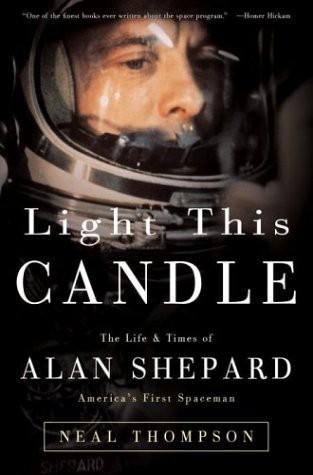
Light This Candle: The Life & Times of Alan Shepard--America's First Spaceman
by
Neal Thompson
Published 2 Jan 2004
Then the two men walked off along the sand, to talk alone as the countdown to Apollo 11’s blastoff continued. Shepard told Lindbergh how his 1927 flight had inspired him as a three-year-old boy, had planted the seeds of his future and boosted him toward a career as a Navy pilot. Lindbergh told Shepard that his 1961 space flight had been pretty heroic, too. They talked about the similarities between the early days of aviation and the genesis of the space race—the danger, the media crush, the politics. The two men talked for thirty minutes and then watched as a river of fire trailed behind Apollo 11 as it began its 250,000-mile journey.
…
In a way, Shepard wanted to be an amalgam of all three, but it was Lindbergh first and foremost who inspired the dozens of balsa-wood, rubber-band-powered model airplanes dangling from his bedroom ceiling. “He was always my hero,” Shepard once said, never dreaming that he’d meet Lindbergh, would stand by his side the morning Apollo 11 launched to the moon. “I was just fascinated by planes. They were going somewhere. They were doing things. They were getting faster every year and they were flying higher every year.” Human flight had begun just twenty years before Shepard’s birth, when the Wright brothers first caught air on December 17, 1903.
…
Two months later Apollo 10 performed a dress rehearsal of the moon landing that was planned for mid-July. During Apollo 10’s flight to and around the moon, astronauts Tom Stafford and Gene Cernan flew their lunar module down to within nine miles of the moon’s surface. The final step would be taken later that summer by Apollo 11. By mid-1969 Slayton—with Shepard’s help—had adopted a fairly consistent method of choosing astronaut crews for the Apollo flights. First a three-man crew would serve as another crew’s backup. Three flights later that backup crew would become the prime crew. The three men who backed up Apollo 7, for example—Tom Stafford, Gene Cernan, and John Young—became the prime crew for Apollo 10.
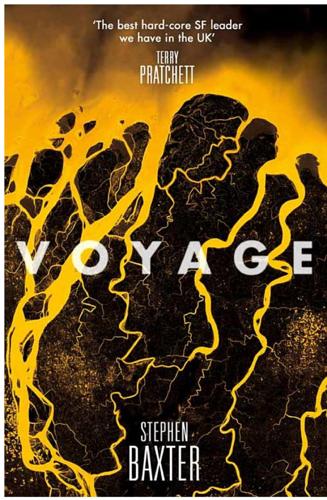
Voyage
by
Stephen Baxter
Published 23 May 2011
It is typically hot, humid Florida weather here, on this historic day, Thursday, March 21, 1985. T minus three minutes forty seconds and counting. I am told that there are an estimated one million here with us today, the largest turnout for a launch since Apollo 11. Welcome to all of you. You might like to know that among the celebrities watching the launch today in the VIP enclosure are Apollo 11 astronauts Neil Armstrong, Joe Muldoon, and Michael Collins, cosmonaut Vladimir Viktorenko, along with Liza Minnelli, Clint Eastwood, Steven Spielberg, George Lucas, William Shatner, sci-fi authors Arthur C. Clarke, Ray Bradbury, and Isaac Asimov, and singer John Denver.
…
I had those put there for you to find.” York studied the bags. “Beef and potatoes. Butterscotch pudding. Brownies. Grape punch.” She looked at Stone. “What’s this? None of this was in my personal preference. In fact, I hate butterscotch pudding.” “I thought it was kind of appropriate. This was the first meal the Apollo 11 crew ate in space. Straight after translunar injection, after they left Earth orbit for the Moon.” “All right,” Ralph Gershon said, and he pulled a hose out of the potable water tank and squirted the spigot into his bags with enthusiasm. York looked at the bags again. Butterscotch pudding, in memoriam.
…
Almost every one of the J-class mission’s innovations — the upgraded LM, the Rover, the orbiting Service Module’s instrument pallet — had worked without a hitch. Apollo 14 had been the biggest success since the first landing: even skeptics among the scientists were applauding the mission. But it was done. Seger’s footsteps echoed in the quiet. It was just two years since Apollo 11, he thought, and yet the first age of lunar exploration was already over. Damn it, Seger thought. We’ve just gotten good at this stuff, and now we have to stop. He stopped at the door of the MOCR, Mission Control, and stepped in. The MOCR was deserted; everybody had already left for the splashdown party, some almighty gumbo affair the Mission Evaluation guys were holding over in Building 45.
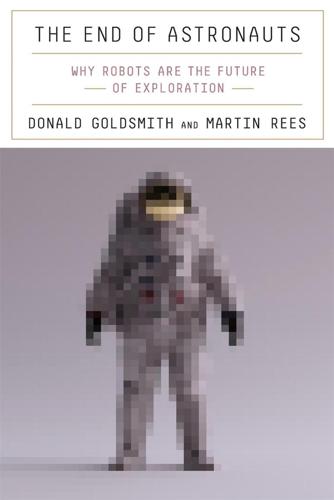
The End of Astronauts: Why Robots Are the Future of Exploration
by
Donald Goldsmith
and
Martin Rees
Published 18 Apr 2022
During the early 1970s, each of three Soviet Luna missions drilled about fourteen inches into the lunar soil, placed its haul into a capsule, and brought it back to Earth, where they parachuted their precious cargo into Kazakhstan for easy recovery. The three missions brought a total of 325 grams (about 11 ½ ounces) to Earth. The six Apollo missions brought about 1200 times more than this, some 845 pounds of material, home with them. The amounts from the individual missions ranged from 49 pounds from Apollo 11’s first landing on the moon to 211 pounds from the final lander, Apollo 17. Today some of this moon matter appears on the open market at impressively high prices, not least because ownership of rock from the moon remains illegal in the United States (if you did not gather it on the moon yourself).
…
For understandable reasons, primary attention within the media, along with concern among scientists, put a spotlight on the danger that lunar pathogens could arrive with the astronauts. In response to this concern, as well as from the less-publicized fear of contaminating the lunar soil, NASA decided that the three Apollo 11 astronauts would spend three weeks in quarantine both before their journey and afterward. The quarantines aimed mainly to ensure that the astronauts would leave in perfect health, thus eliminating the possibility of returning with an illness that could cause the public to panic over “moon germs” reaching the Earth, and to demonstrate, after the journey, that this had not occurred.
…
This approach should work as well around Mars as around the moon; its drawback lies only in the extra mass for the entire transport system. At present, NASA’s plans track those of the Apollo program, setting an initial goal of placing astronauts in orbit around Mars before attempting a landing, as Apollo 8 and Apollo 10 did before Apollo 11’s first lunar landing. HOW MUCH WILL AN ASTRONAUT MISSION TO MARS COST? One factor in our attempt to determine the costs of robotic and human exploration to Mars is that we already have a good grasp of the costs of robotic missions from actual experience. In recent decades, each major mission has cost from $1 billion to several billion dollars.
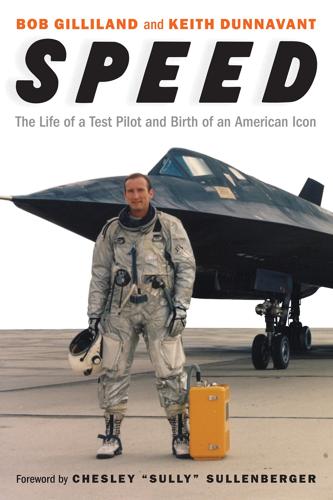
Speed
by
Bob Gilliland
and
Keith Dunnavant
.: air strikes of, against Libya, 207–8; and Berlin Airlift resupply mission, 55; and the Blackbird program, 126, 133, 135–36; and CL-400 “Project Suntan,” 142; during the Cold War, 58, 202–7; and deaths during supersonic testing, 88–89; and deaths during transition to jets, 68; 86th Fighter-Bomber Wing of, 66–74; establishment of, 47; high-altitude testing programs of, 123–24; and missile-bomber debates, 134–35; 9th Reconnaissance Wing of, 189–90, 207; RJG commissioned as second lieutenant in, 52; and RJG requesting assignment to Eglin, 83; RJG resigning from, 94–95; and RJG’s flight training at Randolph, 57–62; and RJG’s flight training at Williams, 62–66; RJG’s impact on SR-71 program of, 176–78; rules of, on fighter pilot height, 60–62; and rushed testing and development programs, 88–89; and SR-71 reconnaissance capabilities, 182; and SR-71 reconnaissance missions, 189–90, 203–8; at SR-71’s first test flight, 152–53, 155–56, 161–71; and SR-71’s phasing out, 209; and SR-71’s unmasking by Lyndon Johnson, 135–36; and struggle with CIA for primacy, 135, 190; and testing airsickness pill, 58–59; and testing operational aircraft at Eglin, 92–93; and testing to break the sound barrier, 84–88; 36th Fighter-Bomber Wing of, 66; transitional strategy of, for officer corps training, 47–49; during Vietnam War, 190; and X-1 program, 84–85, 87–88; and X-2 program, 91; YF-12A for, 131, 134 Alford, Billy, 191 American Legion (Memphis), 12, 49 Anderson, Bud, 221 Anderson, Rudolph, 135 Andonian, Harry, 90, 93, 139, 230 Andre, George, 165 Andre, Lenene, 165 Apollo 8, 69, 197 Apollo 11, 198, 217, 225 Apollo 13, 69, 197 Apollo 15, 194–95 Apt, Milburn “Mel,” 91 Arceneaux, Tom, 201 Arctic Circle missions (SR-71), 205 Area 51. See Groom Lake Arkansas farm (Gilliland family farm), 14–15 Armstrong, Neil: and Apollo 11, 198, 217, 225; awards and honors of, 131, 225; friendship of, with RJG, 221; and “Legends of Aerospace” goodwill tour, 197–200, 215–20 Army, U.S., 3, 5–7, 47–48 Arnold, Henry “Hap,” 86 astronauts: Jim Irwin, 194–95; Jim Lovell, 69, 197–200, 215–19; on the “Legends of Aerospace” goodwill tour, 197–200, 214–20; of the Mercury missions, 122–24, 140; Neil Armstrong, 131, 197–200, 215–20, 221; RJG’s admiration of, 194–95, 217 atomic bombs, 34, 66, 115, 117 Australian infantry (World War I), 6 automobiles: of the Jordan family, 7–8; RJG’s Ford convertible, 62, 63–64; RJG’s Ford Mustang, 174–75; RJG’s Mercedes Benz, 1; RJG’s specially designed red SUV, 224 aviation industry: and commercial industry growth, 34, 140; Lockheed’s impact on, 97–98; and propeller-powered aircraft, 34, 63, 74; supersonic age of, 76, 88–89, 102; and technological advancements, 140; transition to jet-powered, 63, 74.
…
So as it got very, very bumpy when he tried one approach . . . and he pulled off and tried another and it was bumpy as hell, I thought for sure we were going to Montreal.” Among the other passengers of this very special flight was David Hartman, the affable longtime host of ABC’s Good Morning America, who happened to be sitting next to Armstrong, the calculating engineer turned astronaut who had pushed the Apollo 11 lunar module to within seconds of running out of gas while searching for Tranquility Base on that memorable July night in 1969, when the world held its collective breath. Like the other aviators surrounding him, Armstrong was trained to view the severe turbulence through a detached, scientific lens.
…
Among his most vivid childhood memories was sneaking in under the ropes to visit with his dad’s buddy Greenamyer on the day in 1969 when he shattered the speed record for a piston engine airplane (483.04 miles per hour) in his F8F-2 Bearcat, Conquest I. For this he shared the Kincheloe Award with the Apollo 11 astronauts. The distinctive yellow plane is now on display at Udvar-Hazy. The son grew up hearing tales about daring men who ventured off on dangerous missions. Learning to appreciate the delicate balance between risk and reward, he met many of his father’s colleagues, including NASA test pilot Bruce Peterson, who had been lucky to survive the crash of his wingless M2-F2 craft at Edwards in 1967.
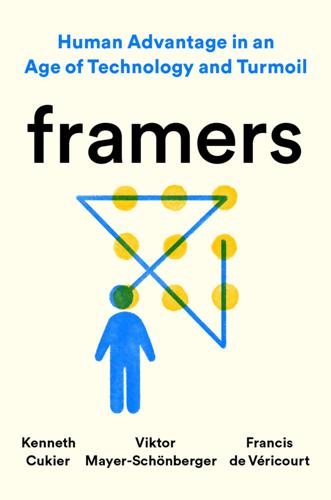
Framers: Human Advantage in an Age of Technology and Turmoil
by
Kenneth Cukier
,
Viktor Mayer-Schönberger
and
Francis de Véricourt
Published 10 May 2021
“The surface is fine and powdery,” the thirty-eight-year-old captain radioed to his crew and ground control. “I only go in a small fraction of an inch, maybe an eighth of an inch.” But that was about the extent of the surprises for Apollo 11. The rest of the humans on Earth, hundreds of thousands of miles away, and months and years earlier, had successfully applied frames to understand what would be needed to bring the astronauts to the moon and back. Being able to conceive of what we’ve never experienced doesn’t come naturally all the time. The day after the Apollo 11 launch, the New York Times ran what might be considered the best newspaper “correction” ever—some forty-nine years after the original article.
…
They extend our ability to reach decisions by harnessing our imagination, letting us transcend the immediate and embrace ideas that are more general and abstract. This empowers us to put our intellect to uses that we could have only dreamed of. To appreciate how frames can be used to fill in the blanks, consider the moon landings. When the Apollo 11 lunar module touched down on the surface of the moon in the summer of 1969, it was a remarkable achievement. But neither the thundering Saturn V engines nor the novel, rudimentary digital computers got the astronauts to the moon. Rather, in many ways, it was the ability to use frames to “see” what wasn’t there.
…
They found that people rapidly shifted their focus to visually imagine the possible trajectories of the ball. In other words, they applied counterfactual reasoning to anticipate what might happen. Recall that NASA’s engineers were able to predict (almost) everything that would happen during the Apollo 11 moon landing, despite never having been on the moon. They were following the footsteps of generations of scientists before them. Galileo is famously said to have let two objects fall from the Tower of Pisa to refute a theory advanced by the ancient Greeks that heavier things fall faster than lighter ones.
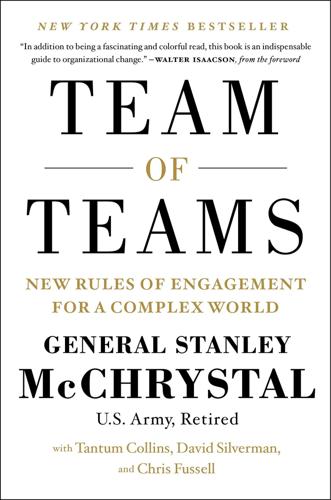
Team of Teams: New Rules of Engagement for a Complex World
by
General Stanley McChrystal
,
Tantum Collins
,
David Silverman
and
Chris Fussell
Published 11 May 2015
The ridged imprints from Armstrong’s rubber soles—tiny, perfectly geometric mountain ranges—still stand, preserved in the windless stasis of our favorite celestial boulder. No matter what happens on frenzied Earth, the traces of Apollo 11 should serve as a testament to human ingenuity for millions of years. Almost as significant as what happened in space exploration in July 1969, however, is what did not happen. Two weeks before the Apollo 11 launch, on the other side of the Atlantic, the F-8 rocket assembled by ELDO, the European Launcher Development Organisation, failed on the launch pad. It was ELDO’s fifth consecutive total failure.
…
“240,000 miles away” . . . “Address at Rice University on the Nation’s Space Effort,” John F. Kennedy Presidential Library & Museum, July 21, 2014, http://www.jfklibrary.org/Asset-Viewer/MkATdOcdU06X5uNHbmqm1Q.aspx. 600 million . . . “Apollo 11 Moon Landing: Ten Facts About Armstrong, Aldrin and Collins’ Mission,” Telegraph, July 18, 2009, http://www.telegraph.co.uk/science/space/5852237/Apollo-11-Moon-landing-ten-facts-about-Armstrong-Aldrin-and-Collins-mission.html. bleached white . . . Clara Moskowitz, “American Flags Planted on the Moon Are Still Standing Decades Later,” Business Insider, July 30, 2012, http://www.businessinsider.com/american-flags-planted-on-the-moon-still-stand-2012-7.
…
On the other side of the pond, Secretary of Defense Robert McNamara concurred that Europe suffered from a managerial deficit: “The technological gap was misnamed.” It was a space age Tower of Babel: the countries’ inability to speak to one another obstructed their joint effort to reach the heavens. • • • Like Taylor’s world’s fair exhibition in Paris, the success of Apollo 11 and the concurrent shambles of Europa I shone a spotlight on the role of management in large-scale endeavors. Congress held hearings to study NASA’s managerial secrets. The systems management put in place at NASA became a core process of aerospace research and development, essential to everything from the International Space Station to the Boeing 777.

Boom: Bubbles and the End of Stagnation
by
Byrne Hobart
and
Tobias Huber
Published 29 Oct 2024
As with other bubbles we cover, the Apollo program was able to synthesize multiple goals: pure scientific curiosity, a novel engineering challenge, and a desire to demonstrate military superiority over an adversary. The program was named after the Greek god of, among other things, knowledge, prophecy, the sun, and archery. But it didn’t just share its name with Greek mythology. On a more fundamental level, the towering Saturn V rocket, which jolted the Apollo 11 crew to the Moon, can be compared to the perfectly sculpted marble statues of ancient Greece. These mythologically imbued sculptures, which the ancient Greeks sometimes melted down to make weapons, became a symbol of the dawn of Western civilization. Now, more than a century after its closure, Apollo became a reminder of its potential decline.
…
As sci-fi writer Robert Heinlein put it shortly after the Moon landing, Apollo’s success was “the greatest event in all the history of the human race up to this time.” 203 The symbolic meaning of the program’s end shouldn’t be underestimated. Apollo was nothing less than an instance of the technological sublime. The Apollo 11 mission, and the technological mastery a successful Moon landing represented, elicited a cross-cultural spiritual reaction. Images from the mission were “surrounded with the aura of religion,” 204 from the silvery Saturn V rocket, which towered against the darkness of space before it lifted off and sent the first humans to another world, to the Apollo 8 crew’s reading from the Book of Genesis on Christmas Eve 1968, to Armstrong’s footprints on the lunar surface.
…
Rather, we need to consider the “real reason”—a drive that is unquantifiable, intuitive, compelling, and represents “inventiveness, competitiveness, and boldness.”207 Apollo’s backers won support by emphasizing geopolitical competition and useful spillover technologies. But these factors do not represent the mission’s essence. Apollo built a monument to the human drive for greatness. Its end, therefore, has an enduring civilizational significance. 208 172 In 1989, on the 20th anniversary of the Apollo 11 lunar landing, President George H. W. Bush declared that America was going back to the Moon—“this time to stay”—and afterward to Mars. In 2006, the George W. Bush administration put forward a plan to return to the Moon called the Constellation Program. The Trump administration authorized NASA’s Artemis Program with the goal of landing “the first woman and the next man on the Moon” by 2024.
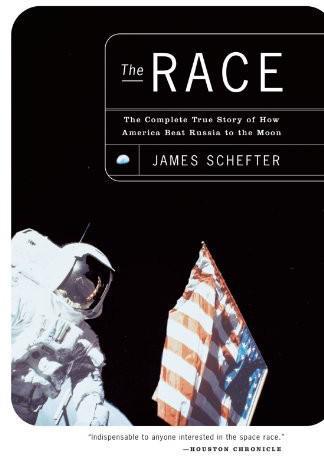
The Race: The Complete True Story of How America Beat Russia to the Moon
by
James Schefter
Published 2 Jan 2000
But if the first lunar sample came home to Mother Russia, that would be a major victory. He launched Luna 15 on July 13, 1969. Three days later, the same day Apollo 11 was launching from Kennedy Space Center, it braked into lunar orbit. The Russian space team was taking its last, best shot. Luna 15’s mission was to land on the moon, scoop up a sample of moon dirt, then blast off and return to Earth. Moon samples would be in Russian science laboratories long before anything came home from Apollo 11. Twice Mishin’s control team sent commands to lower Luna 15’s orbit and it responded. Quiet back-channel communications between the American State Department and its Soviet counterpart brought assurances: Luna 15 in no way intended to interfere with Apollo 11.
…
Quiet back-channel communications between the American State Department and its Soviet counterpart brought assurances: Luna 15 in no way intended to interfere with Apollo 11. Its assignment at the moon, though, was obvious. American officials quietly worried that it would land, scoop up some dirt, and bring it back to Earth before Apollo 11 could complete its mission. Moon rocks in Russia next week? The thought was chilling. At midafternoon on July 20, 1969, the command module Columbia and the lunar module Eagle were separately on the back side of the moon. Columbia, with Mike Collins watching his crewmates fall away, was in a stable circular orbit.
…
Soyuz was almost certainly aiming for something other than the moon. If they wanted to put up a space station, so be it. Still, it wouldn’t hurt to keep one eye on the Russians while the Americans got ready for the final rush to the lunar surface. Deke Slayton called Neil Armstrong into his office in January and gave him the Apollo 11 mission, the one likely to be first on the moon. His crew was Buzz Aldrin and Mike Collins. Armstrong and Aldrin had been backups on Apollo 8. In Deke’s way of doing things, backup crews rotated ahead three missions to become prime crews. Collins was fresh on duty after recovering from his back surgery.

Beyond: Our Future in Space
by
Chris Impey
Published 12 Apr 2015
Professor Goddard . . . does not know the relation of action and reaction, and of the need to have something better than a vacuum against which to react. . . . Of course he only seems to lack the knowledge ladled out daily in high schools.”17 Forty-nine years after ripping Goddard, and a day after the launch of Apollo 11, the paper issued a brief correction: “Further investigation and experimentation have confirmed the findings of Isaac Newton in the 17th Century and it is now definitely established that a rocket can function in a vacuum as well as in an atmosphere. The Times regrets the error.”18 The apology was too late for Goddard, who died of throat cancer in 1945.
…
The five massive engines gulped 15 tons of fuel each second and produced eight million pounds of thrust. The giant rocket was 60 feet taller than the Statue of Liberty (Figure 10). In July 1969, there were plenty of white knuckles at Mission Control in Houston when Neil Armstrong assumed manual control of the Apollo 11 landing module, after a series of technical glitches, and guided it over a field of rugged boulders to a soft landing on the Moon with less than a minute of fuel left. Back in Houston, Charles Duke radioed him: “You got a bunch of guys about to turn blue. We’re breathing again.”9 Figure 10. A comparison of the Soviet N1/L3 rocket (left) and the US Saturn V rocket (right).
…
However, the Space Shuttle did provide case studies in the importance of having astronauts rather than robots work in space. Robots are not versatile or reliable enough to match a well-trained astronaut. We can all admire the “seat-of-the-pants” problem-solving skills demonstrated by Neil Armstrong as he guided Apollo 11 over a boulder field with hardly any fuel left, and by the Apollo 13 crew as they nursed their crippled spacecraft around the Moon and home to safety. In particular, the five servicing missions of the Hubble Space Telescope defined the state of the art for astronauts, with multiple long space walks, challenging technical jobs, and difficult decisions made under time pressure.
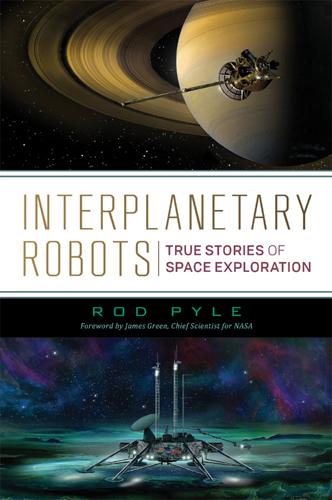
Interplanetary Robots
by
Rod Pyle
The increasingly closer images taken in those last few moments revealed that the large craters evident from Soviet probes and from telescopic images taken from Earth simply scaled to smaller and smaller ones as the probe got closer to the moon…there were craters within craters within craters. It was a rougher surface than most had suspected, and this was valuable data for those planning the Apollo lunar landings. There was more to come. In February 1965, Ranger 8 swept across the lunar nearside, crashing near the eventual Apollo 11 landing site in the Sea of Tranquility. The 7,000 images returned showed the same general surface as had been seen with Ranger 7—a devastated, densely cratered swath. A month later, Ranger 9, the last flight of the project, sent back 5,800 images of another part of the lunar surface, this time lit at a more extreme angle, with the sun lower in the lunar sky.
…
Upon return to Earth, the camera was analyzed to see what changes had occurred from a couple of years on the moon—they were minor, though it was noted that some bacteria, which had been resident on the camera at launch in 1967, appeared to have survived its time on the moon.2 Surveyor 3 operated for about two weeks. Surveyor 4 failed in flight, but Surveyor 5 landed in Mare Tranquillitatis, the Sea of Tranquility, where Apollo 11 would land less than two years later. It returned over 19,000 images and carried the first true scientific instrument to be used on the lunar surface, an alpha-backscatter device that had the ability to do basic chemical analysis of the nearby terrain. This Surveyor also survived a lunar night, operating for another twenty-two hours after the return of the scorching sun.
…
My interest in all things space had been sparked by the Gemini and Mariner flights, and I was hooked, so of course I followed the development of the Viking Mars lander program closely. After all, JPL was just up the street from my home…and maybe, if I worked hard enough, I'd snag a job there in a few years. It ended up taking many decades, but not through any fault of my astronomy professors. That warm July night was the seventh anniversary of the landing of Apollo 11, a pleasant conjunction with the landing of Viking 1. This concluded weeks of the lander waiting in orbit—it had arrive a month earlier—while the science teams at JPL fretted over the landscape they saw below. It was far from a welcoming view. The twin Viking spacecraft, the intelligent successors to the confusion of Voyager Mars, were well-designed and highly capable.
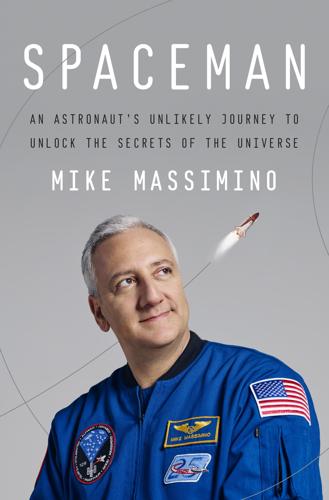
Spaceman: An Astronaut's Unlikely Journey to Unlock the Secrets of the Universe
by
Mike Massimino
Published 3 Oct 2016
Those men became my heroes. They were the epitome of cool. I turned seven in 1969, and there’s something about that age that makes it a formative year in one’s life. Two things happened for me that year: Apollo 11 landed on the moon and—even more improbable than that—the Mets won the 1969 World Series. Space and Major League Baseball became my two greatest passions. The Mets’ ace pitcher, Tom Seaver, was right behind my father and the Apollo 11 astronauts on my list of childhood heroes. But on that night of the moon landing, the World Series was still months away. On that night I said to myself, Nothing else matters. This is it.
…
But one of the instructors in my mechanical engineering lab, Professor Kline, started talking to us about how private aerospace contractors—companies like Lockheed, Grumman, McDonnell Douglas, Martin Marietta—were getting big government contracts to work on the space shuttle systems. I thought maybe I could work as an engineer for those contractors, supporting the astronauts as a part of the bigger dream. Back when the Apollo 11 guys landed on the moon, I believed what they were doing was the most important work of our time: exploring space, pushing the boundaries of human knowledge about the universe. I never stopped believing that. If there’s one thing I got from my father and his job, it was understanding the importance of public service.
…
People could see my excitement, and with me being a Columbia graduate and an MIT student, they knew I had potential. My dream didn’t feel so crazy anymore, but the reality was sometimes mind-blowing. One afternoon I walked into the cafeteria and Michael Collins was there having lunch; he was in town for a meeting to discuss a possible mission to Mars, where I’d seen him earlier that day. Here was one of the Apollo 11 astronauts, a guy I’d read about and idolized for years, and he was sitting at a table eating by himself. I was beyond intimidated, but I knew if I didn’t approach him I would regret it for the rest of my life. I took a deep breath and walked over and asked if I could join him. “Sure,” he said, “have a seat.”
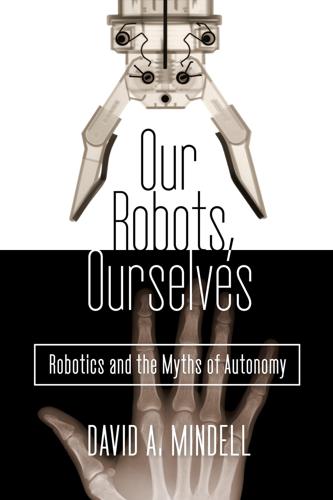
Our Robots, Ourselves: Robotics and the Myths of Autonomy
by
David A. Mindell
Published 12 Oct 2015
The onboard computer read out a number on an LED-like display, and if Armstrong positioned his head correctly he could look through that angle marked on the window. Directly behind the indicated number, then, he saw the actual spot on the moon that the computer was flying him toward. Computer graphic depiction of Neil Armstrong’s view out the window from a few hundred feet above the moon during the Apollo 11 landing. Armstrong’s right hand is reaching up to turn off the automatic targeting and autoland features to land in a semimanual mode. Note the Apollo Guidance Computer on the lower right, which could indicate an angle for Armstrong to look through the passive HUD inscribed as a reticle on the window.
…
The computer would then recalculate the trajectory it would use to guide the landing, and give him a new number for where to look. Armstrong could redesignate the landing zone as many times as he liked in a human/machine collaboration that allowed the two to converge and agree on the ideal landing zone, whence the autoland would bring the craft safely down. But Armstrong never used the autoland. On Apollo 11, he didn’t like the spot the computer had selected for him because there was a crater, and rocks were in the way. Rather than redesignate, a few hundred feet above the moon’s surface he turned off the automated feature and landed in a less automated mode. (His actions were echoed by Luke Skywalker in the original Star Wars movie: he also turned off his computer and relied on The Force to guide his aim to destroy the Death Star.)
…
Abbott, Kathy, 75–76 ABE (autonomous benthic explorer), 54, 191–96 acoustic communications and, 195–96 geological mapping by, 192–93, 194 loss of, 191–92 nature of autonomy of, 194–97 original mission of, 192 acoustic communications, and AUVs, 195–96 acoustic transponder networks, for navigation, 29 Afghanistan, 139 Airbus, 86–87 A-310, 82 Flight QF32, 71–72, 77 aircraft/aviation, 69–111, 226–29 adding unmanned automation technology to, 215–18 Automated Labor In-cockpit System (ALIAS), 217–18 drones (See drones) FAA survey of technology and pilot skill, 2013, 75–76 future of, 110–11 heads-up display (HUD) and, 88–108, 225 history of, 77–84 landings and, 84–88 optionally piloted aircraft (OPAs), 213–15 pilots role in flying modern aircraft, 69–72, 75–77 synthetic vision and, 108–9, 225 technological change and increasing automation, effect of, 72–75 unmanned helicopters, 210–13 Air France Flight 447, 1–2, 1–4, 69–70, 72, 73, 81, 162, 196 Akers, Thomas, 170, 171–72 Alaska Airlines, 92 Alvin (deep-sea submersible), 26–30, 33–34, 35, 45–51, 57, 59–66, 176, 194, 197, 225 ABE’s geological mapping and, 192–93, 194 acoustic navigation system of, 29 arguments and justifications for new, 63–65 hydrogen bomb recovery effort using, 27 Jason, differences between and rivalry with, 59–62 plate tectonics evidence gathered by, 28–29 Titanic wreck and, 45–51 Amber, 126 amphoras, 23–24 AMUVS (Advanced Maneuverable Underwater Vehicle System), 43–44 ANGUS (Acoustically Navigated Geologic Underwater Survey System), 30–34 Apollo missions, 225 Apollo 11, 159–61 Apollo 13, 72 Apollo 15, 178 Apollo 17, 177, 179 field geology and, 176–79 Argo (tethered sled), 35–36, 41–43 Armstrong, Neil, 77, 78, 159–61, 221 Asiana Airlines, 106–7 Flight 214, 72, 106 Association for Unmanned Vehicle Systems International (AUVSI), 219 Atlantis II (research vessel), 45 Aurora Flight Sciences, 211, 214, 217 Automated Labor In-cockpit System (ALIAS), 217–18 automatic landing systems (autoland) Apollo landings and, 159–61 in commercial aviation, 86–88, 94, 97 space shuttles and, 161–63 automation, 4–6, 10, 11 automation bias, 74 automation dependency, 74 automation surprise, 74 automobiles, driverless.
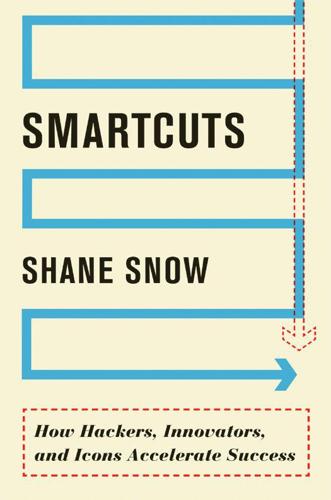
Smartcuts: How Hackers, Innovators, and Icons Accelerate Success
by
Shane Snow
Published 8 Sep 2014
If you want to get really depressed about success, look at what happened to the heroic astronauts of the 1960s and ’70s. Buzz Aldrin, the second man to set foot on the moon, returned home from the historic Apollo 11 mission and became an alcoholic. Severely depressed, his life unraveled. Aldrin burned through three marriages and wrote two memoirs about his misery. Neil Armstrong, the man who stepped out of Apollo 11 just ahead of Aldrin, spent his next few decades figuring out what to do with his life. He briefly taught some small classes at a university, then quit unexpectedly. He consulted a little for NASA and some random companies, and did a commercial for Chrysler, and quit all those things, too.
…
Two major magazine profiles of Musk provide further biographical details: Chris Anderson, “The Shared Genius of Elon Musk and Steve Jobs,” Fortune, November 2013, and Tom Junod, “The Triumph of His Will,” Esquire, November 2012. 171 “I didn’t think there was anything I could do”: Chris Anderson, “Elon Musk’s Mission to Mars,” Wired, October 21, 2012, http://www.wired.com/wiredscience/2012/10/ff-elon-musk-qa/all/ (accessed February 15, 2014). 172 NASA employed about 18,000: NASA’s headcount comes from “Space Organizations Part 1: NASA—Nasa’s Workforce,” Library Index, http://www.libraryindex.com/pages/987/Space-Organizations-Part-1-NASA-NASA-S-WORKFORCE.html, and the catalog of collaborators on the Apollo project is documented by Catherine Thimmesh, Team Moon: How 400,000 People Landed Apollo 11 on the Moon (Houghton Mifflin Company, 2006). 172 “To make life multiplanetary” and the continuation of “human consciousness”: Musk often repeats these phrases in interviews, such as David Pescovitz, “Elon Musk on Making Life Multi-Planetary,” Boing Boing, April 10, 2012, http://boingboing.net/2012/04/10/elon-musk-on-making-life-multi.html (accessed February 15, 2014), and Junod, “The Triumph of His Will.” 174 over-the-top demonstration to create buzz: For more on Lady Gaga, Baumgartner, Alexander the Great, and 10x Storytelling, visit shanesnow.com/10xstorytelling. 175 “We choose to go to the moon”: John F.
…
The 20% Doctrine: How Tinkering, Goofing Off, and Breaking the Rules at Work Drive Success in Business. HarperBusiness, 2012. The World Factbook. Central Intelligence Agency, 2011. https://www.cia.gov/library/publications/the-world-factbook/fields/2103.html Thimmesh, Catherine. Team Moon: How 400,000 People Landed Apollo 11 on the Moon. Houghton Mifflin, 2006. Thomas, Hugh. Cuba: La lucha por la libertad 1762–1970. Grijalbo, 1973. Thomas, Mike. The Second City Unscripted: Revolution and Revelation at the World-Famous Comedy Theater. Villard, 2009. Thomke, Stefan. “Unlocking Innovation through Business Experimentation.”
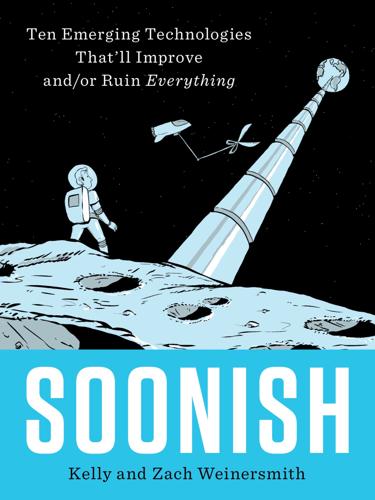
Soonish: Ten Emerging Technologies That'll Improve And/or Ruin Everything
by
Kelly Weinersmith
and
Zach Weinersmith
Published 16 Oct 2017
.* The moment you leave home, you’re getting bombarded by radiation. The crewed missions to the moon were reasonably safe,* since the trips were very short, and the risks from radiation increase with the amount of exposure. But the asteroid mission will take a lot longer. Apollo 11 took a little over three days to get to the moon. Ceres, the largest object in the asteroid belt, is about 1,100 times farther away. Assuming we go just as fast as Apollo 11 (which, as lunar missions go, was quite fast), it’ll take about ten years. That said, for longer-distance missions, you can probably get to a higher speed. For instance, NASA’s uncrewed Dawn mission made the trip to the asteroid belt in about four years.
…
This disappointment is not always due to scientists who overpromise the future; often books like this one omit the economic and technical challenges that stand between us and the future as depicted in fiction. We don’t know why these challenges are so often left out of books. Would the story of Apollo 11 be better if getting to the moon were easy? To our way of thinking, part of what makes the idea of a brain-computer interface so exciting is that right now we have almost no clue how to decode thoughts. There is an unlimited frontier of questions to be asked, discoveries to be made, glory to be won, and heroes to be garlanded.
…
In short, you have all the stuff for a successful settlement—oxygen to breathe, dirt to grow plants, metal to build, and water to make water balloons. Let’s talk about financing. As discussed in the previous chapter, it currently costs about $10,000 per pound to send something to space. That Big Gulp you’re planning to take with you will run you about $20K. The Apollo 11 spacecraft, which only went as far as the moon, weighed over 100,000 pounds. So, not counting all the engineering, permitting, and staff required to build and operate a spaceship, you’re starting this venture at roughly negative $1 billion. That’s not great, but remember, buying an Airbus A380 costs about $400 million, so we’re not entirely outside the realm of possibility.
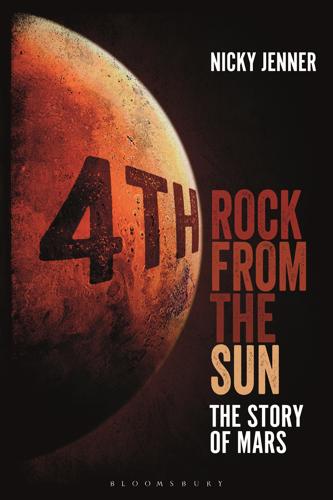
4th Rock From the Sun: The Story of Mars
by
Nicky Jenner
Published 5 Apr 2017
Many were so sure of this that the Pierre Guzman Prize, a 100,000-franc prize established in 1889 and awarded by the French Academy of Sciences to one recipient each in the fields of astronomy and medicine, was offered to the first scientist to find a way to communicate with another ‘heavenly body’ … other than Mars. Mars was considered simply too easy a target, and ‘sufficiently well known’. The prize fund was eventually cleared by the Apollo 11 astronauts in 1969 following their landing on the Moon – but if they’d landed on Mars, they wouldn’t have received a cent. Later observations showed bizarre shapes sculpted out of red rock, humanoid faces and structures akin to the ancient Egyptian pyramids, and even the potential ruins of a once-thriving city.
…
Many prominent scientists and engineers believe that, all things considered, Mars is simply the best place to go to next. These include Stephen Hawking (‘Mars is the obvious next target’), Bill Nye, Elon Musk, Neil deGrasse Tyson, Carl Sagan (‘The next place to wander to is Mars’), NASA administrator Charles Bolden (‘Mars is a stepping stone to other solar systems’), and more. Former NASA Apollo 11 astronaut Buzz Aldrin even created his own line of ‘Get Your Ass to Mars’ T-shirts, based on Arnold Schwarzenegger’s famous line in the 1990 Mars-related film Total Recall. The aforementioned Elon Musk (former PayPal magnate, now of SpaceX and Tesla fame) has been outspoken about how humans need to explore and colonise other worlds, working towards the goal of becoming ‘a multi-planet species’.
…
He settled on the latter, and in May 1961 delivered a speech to Congress in which he stated that the US ‘should commit itself to achieving the goal, before this decade is out, of landing a man on the Moon and returning him safely to the Earth’. The race was on! The following years saw various achievements – and, sadly, casualties – on both sides. The race came to a head in July 1969 when Neil Armstrong, commander of Apollo 11, stepped out on to the lunar Sea of Tranquillity, becoming the first human to set foot on not only the Moon, but any rock other than Earth. While the Space Race is often thought of in terms of a desperate battle over the Moon, it also drove a number of missions destined for other targets – most prominently, Mars.
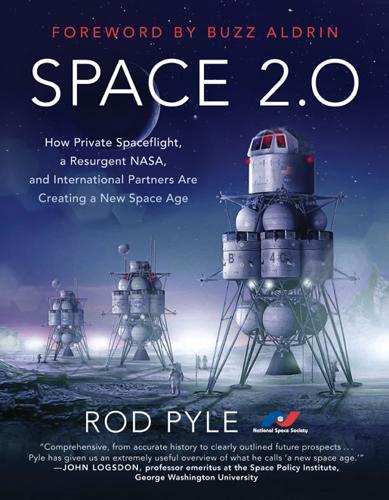
Space 2.0
by
Rod Pyle
Published 2 Jan 2019
While successful, it almost cost him his life when his space suit ballooned up and he was barely able to reenter the capsule. Image credit: NASA A Saturn V rocket the night before launch. The streak to the left is lightning. Image credit: NASA Gemini 7 in orbit as seen from Gemini 6, during the first rendezvous in space in December 1965. Image credit: NASA Possibly the most memorable image from the Apollo 11 mission. Neil Armstrong is reflected in Buzz Aldrin’s visor during their moonwalk. Image credit: NASA A mockup of Viking 1 in a test bay on Earth. Viking was the first spacecraft to successfully land and operate on Mars. Image credit: NASA Skylab, the US’s first space station, orbited in 1973.
…
NASA was spared the expense of developing a number of modules for the ISS, at the very least, and ongoing operational costs—such as ground control and astronaut training—are shared by the US, Europe, and Russia. This international effort has also generated much goodwill. After the success of the ISS, many pundits knowledgeable about space, including Apollo 11 moonwalker Buzz Aldrin and Mars exploration advocate Robert Zubrin, noted that internationalization is the only reasonable road ahead for human spaceflight. They cite the ISS as an example of how such cooperation can be effective—not just in cost sharing, but leveraging the expertise of many technologically advanced nations.
…
Image credit: NASA •First images of lunar farside—Luna 3, 1959 (robotic) •First Venus flyby—Venera 1, 1961 (robotic) •First human in space and Earth orbit—Vostok 1, 1961(human) •First Mars flyby—Mars 1, 1963 (robotic; spacecraft failed before flyby but managed to pass the planet) •First woman in space—Vostok 6, 1963 (human) •First spacewalk—Voskhod 2, 1965 (human) •First completely automated rendezvous and docking in space, 1967 (robotic) •First circumlunar flight—Zond 5, 1968 (robotic, but carried reptiles and insects) •First successful landing on Venus—Venera 7, 1970 (robotic) •First robotic rover on the moon, Lunokhod 1, in 1970 •First crewed orbital space station—Salyut 1, 1971 (human) •First soft landing on Mars—Mars 3, 1971 (robotic; operated for less than a minute after landing) •First cargo supply missions to a space station, 1978 (robotic) •First long-term, modular space station—Mir, 1986 (human, operated for a decade) •First fully automated flight of a space shuttle—Buran, 1988 (robotic, but human-rated) •Development of multiple large launch systems, a number of which continue to operate today, delivering both Russian and international payloads107 (human and robotic) Russia has had its share of disappointments as well. While its early human spaceflight accomplishments were impressive, its massive attempt to beat the Americans to the moon—either by sending cosmonauts to loop the moon before the US Apollo 8 orbited that body in 1968, or landing a lone cosmonaut there before Apollo 11 arrived in 1969—was plagued by a series of disastrous launch failures. The successes outlined above occurred largely in the Soviet era, which ended before the Mir space station—launched in 1986 while the USSR still existed—ceased operations in 1996. As the country transitioned to the Russian Federation, many space program plans from the Soviet era were carried forward and new ones added, while others were abandoned outright.

Goddess of the Market: Ayn Rand and the American Right
by
Jennifer Burns
Published 18 Oct 2009
More substantively Rand’s patriotism and her reverence for the Founding Fathers were controversial in a movement that considered the Constitution a coercive document (because it claimed jurisdiction over even those who had not signed).41 Rand’s account of the Apollo 11 launch crystallized this difference for many. In the Objectivist she described how she had been invited to a VIP viewing of the rocket launch. Shepherded past the masses to within three miles of the take-off, Rand was awe-struck. Apollo 11 was “the concretized abstraction of man’s greatness,” and as she saw the rocket rise she had “a feeling that was not triumph: but more: the feeling that that white object’s unobstructed streak of motion was the only thing that mattered in the universe.”42 It was a masterful piece of writing that became one of Rand’s personal favorites.
…
To Tuccille NASA was a bunch of “bandits operating with billions of dollars stolen from the taxpayer—’rational’ bandits, perhaps, achieving a superlative technological feat—but bandits nevertheless.”43 Libertarians might make peace with Rand’s endorsement of limited government, but singing the praises of NASA made Rand’s antistatism seem superficial, a belief to be cast aside when convenient. Nor was the article an isolated incident. Apollo 11 became an encouraging sign of the times for Rand, who referred to the launch repeatedly in the years that followed. What libertarian critics of the “moon jaunt” missed was how Rand’s appreciation of Apollo 11 was tied to her ever-present worry that the United States was going backward, regressing to Petrograd circa 1920. Her fears were stirred anew by the emergence of the environmental movement, which she viewed as a virulent atavism that would drag mankind back to primitive existence.
…
Petrograd under the Communists had fallen to nature, regressing from a citadel of European culture to a city stalked by starvation, where survival was a daily struggle. Now environmentalists seemed to be questioning the basic achievements of industrialization and commerce, the discoveries that had lifted man above the beasts. Collectivists, previously focused on inequality and injustice, were “now denouncing capitalism for creating abundance.” In this context Apollo 11 stood out for Rand as a bright sign of hope; it was not the powers of the state that she celebrated, but the wonders of technology and human achievement.45 Rand missed the fact that environmentalism was yet another arena of thought powered by selective appropriation of her work. She focused relentlessly on what historians call conservation environmentalism, which emphasized the dangers of technology and was resolutely anti-growth.
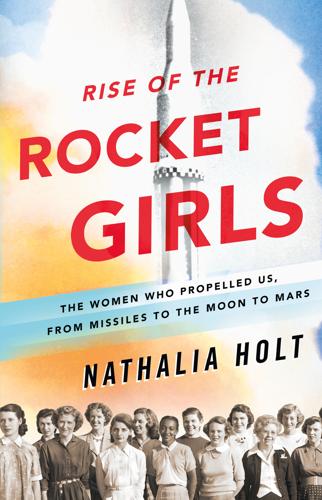
Rise of the Rocket Girls: The Women Who Propelled Us, From Missiles to the Moon to Mars
by
Nathalia Holt
Published 4 Apr 2016
And when Neil Armstrong stood on the surface of the moon and said, “That’s one small step for man, one giant leap for mankind,” the voice transmission back to Earth was received because of tracking stations in California and Australia, part of the Deep Space Network that the computers had worked on so faithfully. Apollo 11 was the culmination of a thousand successes, each one building on the next, stretching up into the beyond. The women watched the first steps on the moon with the same mixture of awe and wonder as millions of other Americans. Yet modestly, they didn’t think about their own handiwork in making it happen.
…
The famous photograph, The Blue Marble, was taken during Apollo 17, the last manned lunar mission, in 1972. Despite Apollo’s accomplishments, public support for it had never been particularly strong. During the 1960s, most Americans didn’t believe the manned lunar program was worth the cost, with the exception of one poll taken immediately after Apollo 11. In 1965, only 39 percent of Americans thought that the United States should do whatever necessary, regardless of cost, to be the first nation on the moon. Now, with victory behind them, support waned further. The Apollo program was seen as expensive and unnecessary, especially with the country plunging deep into debt from the ongoing Vietnam War.
…
The Atlas-Agena rocket is described in Lewis Research Center, ed., Flight Performance of Atlas-Agena Launch Vehicles in Support of the Lunar Orbiter Missions III, IV, and V (Washington, DC: National Aeronautics and Space Administration, 1969). The Ranger failures are detailed in David M. Harland, NASA’s Moon Program: Paving the Way for Apollo 11 (New York: Springer, 2009); Koppes, JPL and the American Space Program; and R. Cargill Hall, Project Ranger: A Chronology (Pasadena, CA: JPL/California Institute of Technology, 1971). The thrilling 1960 World Series is chronicled in Michael Shapiro, Bottom of the Ninth: Branch Rickey, Casey Stengel, and the Daring Scheme to Save Baseball from Itself (New York: Henry Holt, 2010).

Sex on the Moon: The Amazing Story Behind the Most Audacious Heist in Histroy
by
Ben Mezrich
Published 11 Jul 2011
One of the brightest stars in the astromaterials research office, he was the epitome of the old-school NASA scientist. After attaining a master’s in physical chemistry and a Ph.D. in geochemistry, he had gone to work for the JSC—or, as it was called at the time, the Manned Spacecraft Center—in July of 1969, just as the Apollo 11 capsule first returned from space. Thad was already in awe of the man. Gibson wasn’t an astronaut, but he was the closest thing a laboratory scientist could ever dream of becoming. It was fitting that he would be giving his lecture in the life sciences building, where Thad worked. Gibson had spent almost all of his thirty-plus years at NASA stationed in that building because—as Thad had learned only the day before, during a bull session with Helms and a couple of other co-ops—Building 31 had once housed the lunar receiving laboratory.
…
But it was still amazing to see this gray-haired, slightly balding, bespectacled scientist—a genius who had taken part in the greatest adventure in modern human history—so enthusiastically involved in something new, something that would take at least a quarter of a century to become real. At the beginning of the speech, Gibson talked about the first samples he’d ever seen when he started at NASA—the Apollo 11 samples, which were collected by Neil Armstrong, the first man on the moon. Gibson went on to describe how different the samples were from each successive moon mission, how each of the six landing spots had been chosen to study different areas of the moon’s topography. The results were startlingly different types of rock, from the very fine-grained materials brought back from the valley of Taurus Littrow, a deep mountain valley in the northeastern part of the moon—a material that was made up of little tiny beads commonly known as “orange glass,” to the gray, almost black Apollo 17 samples—the very last samples ever collected by human beings, from the dark portion of the moon.
…
“It’s like stepping into a submarine,” Cooper said as she led them into a stairwell with cement walls. She was carrying a sheaf of computer printouts, which contained the list of random lunar samples that they would have to check and inventory. The samples were cataloged by mission; samples brought back by Apollo 11 began with the number 11, followed by the catalog number—the first Apollo sample was therefore 110001. The second, 110002. And so on. “And I don’t just mean the decor,” Cooper continued, taking them up the flight of stairs. “The place was designed to be an entirely self-contained, atmosphere-regulated building.
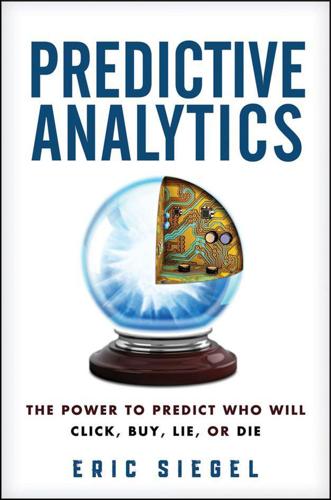
Predictive Analytics: The Power to Predict Who Will Click, Buy, Lie, or Die
by
Eric Siegel
Published 19 Feb 2013
broadcast pitted man against machine just as publicly, and with a renewed, healthy dose of bravado. A national audience of Jeopardy! viewers awaited on the horizon. As with all grand challenges, success was not a certainty. No precedent or principle had ensured it would be possible to fly across the Atlantic (Charles Lindbergh did so to win $25,000 in 1927); walk on the moon (NASA’s Apollo 11 brought people there in 1969, achieving the goal John F. Kennedy’s set for that decade); beat a chess grandmaster with a computer (IBM’s Deep Blue in 1997); or even improve Netflix’s movie recommendation system by 10 percent (2009, as detailed in the previous chapter). Reproduced with permission.
…
producers for do-overs in the case of a hardware crash (the show was taped, not broadcast live, and, like any computer, sometimes you need to turn off Watson and then start it back up again), if Watson spat out an embarrassing answer due to a software bug without crashing, nothing could be done to take it back. This was going to national television. Groundbreaking deployments of new technology—whether destined to be in orbit or intelligent—risk life and limb, not only because they boldly go where no one has gone before, but because they launch a prototype. Moon-bound Apollo 11 didn’t roll off the assembly line. It was the first of its kind. The Watson system deployed on Jeopardy! was beta. Rather than conducting the established, sound process of “productizing” a piece of software for mass distribution, this high-speed, real-time behemoth was constructed not by software engineers who build things, but by the same scientific researchers who designed and developed its analytical capabilities.
…
See black box trading Allen, Woody Allstate AlphaGenius Amazon.com employee security access needs machine learning and predictive models Mechanical Turk personalized recommendations sarcasm in reviews American Civil Liberties Union (ACLU) American Public University System Ansari X Prize Anxiety Index calculating as ensemble model measuring in blogs Apollo 11 Apple, Inc. Apple Mac Apple Siri Argonne National Laboratory Arizona Petrified Forest National Park Arizona State University artificial intelligence (AI) about Amazon.com Mechanical Turk mind-reading technology possibility of, the Watson computer and Asimov, Isaac astronomy AT&T Research BellKor Netflix Prize teams Australia Austria automobile insurance crashes, predicting credit scores and accidents driver inatentiveness, predicting fraud predictions for Averitt aviation incidents Aviva Insurance (UK) AWK computer language B backtesting.

Empire of the Sum: The Rise and Reign of the Pocket Calculator
by
Keith Houston
Published 22 Aug 2023
Somewhere between five and ten N600-ESs were fired into space, with one or two examples flying on each of the first five Apollo missions as backups for the electronic computers that guided and controlled the spacecraft.89 “No modifications were needed for use in space,” the Smithsonian notes drily of the space-flown N600 in its collection, because, let us not forget, the twenty-two scale, double-sided, trigonometric Pickett N600-ES was scarcely more complex than an elementary school ruler.90 It is not known whether Neil Armstrong or Buzz Aldrin ever had to break out their slide rules while aboard Apollo 11 (Pickett Corporation, who crowed mightily about their lunar rules, would certainly have let their customers know about it), but that did not stop Aldrin’s rule from fetching $77,675 at auction in 2007.91 From such dizzying heights, the slide rule had plenty of time to watch the ground rush up to meet it.
…
They looked for a cable connecting it to the computer they assumed must be hidden elsewhere, but they did not find one.75 The Programma 101 was also the first Olivetti product launched not in its home country but rather in the computer-hungry United States.76 The decision was amply rewarded: the P101 would go on to sell 44,000 units during its lifetime, with 9 out of every 10 going to American customers.77 Olivetti had imagined the P101 being used in business, engineering, banking, and science—and to be sure, it found customers in all of those industries—but its inherent power and flexibility also led to roles in two of the most consequential American projects of the decade.78 First, the Programma 101 joined the race to the moon. NASA’s engineers found the P101 to be perfect for one very specific job, as related in a 2006 interview with David W. Whittle, the flight controller in charge of the communications equipment installed aboard the Apollo 11 lunar module: [T]he Lunar Module high-gain antenna was not very smart. It didn’t know where Earth was. So you would have to call up and give the astronauts some—we had two knobs, a pitch and yaw knob, but you have to give him some angles to put it at. [ . . . ] We would have to run four separate programs on this Programma 101, and then in between those programs, we’d have to get out our manuals [ . . . ] we’d have to look up trigonometric functions and input the data, which today your calculator does that. [ . . . ] Then we would read out the angles that we came up with to the crew, and they would dial them in, look at the signal strength, the signal strength there.79 Olivetti’s “supercalculator,” as Whittle called it, was a vital cog in the effort to keep Neil Armstrong and Buzz Aldrin in touch with their home planet.
…
James, “The Deaths of the Slide Rule,” Journal of the Oughtred Society 23, no. 2 (2014): 6–17. 88 Michael Freudiger et al., “Mathematics on the Moon: The ‘Apollo’ Pickett,” Journal of the Oughtred Society 10, no. 2 (2001): 15–18. 89 Freudiger et al., “Mathematics on the Moon.” 90 “Slide Rule, 5-Inch, Pickett N600-ES, Apollo 13,” National Air and Space Museum, accessed August 17, 2020, https://airandspace.si.edu/collection-objects/slide-rule-5-inch-pickett-n600-es-apollo-13/nasm_A19840160000. 91 “Pickett N600-ES”; Peter D. Kramer, “Moon Landing: No Small Step, No Giant Leap Without NJ Slide Rules,” NorthJersey, December 10, 2019, https://eu.northjersey.com/story/news/2019/07/19/apollo-11-slide-rules/1742820001/. 92 Cliff Stoll, “When Slide Rules Ruled,” Scientific American 294, no. 5 (2006): 80–87. 93 James, “Deaths of the Slide Rule.” 4. the clockwork age 1 Elizabeth King, “Clockwork Prayer: A Sixteenth-Century Mechanical Monk,” Blackbird 1, no. 1 (2002), https://blackbird.vcu.edu/v1n1/nonfiction/king_e/prayer_introduction.htm; Clare Vincent and J.
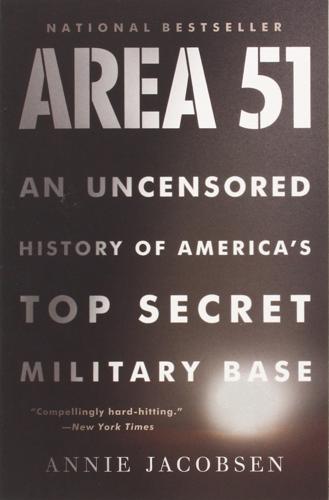
Area 51: An Uncensored History of America's Top Secret Military Base
by
Annie Jacobsen
Published 16 May 2011
Chapter Nineteen: The Lunar-Landing Conspiracy and Other Legends of Area 51 Interviews: Buzz Aldrin, Colonel Slater, Ernie Williams, Richard Mingus, Michael Schratt, Bill Irvine, James Oberg 1. July 20, 1969: For details regarding Apollo 11, “Humankind’s first steps on the lunar surface,” http://nasa.gov; for transcripts of the first lunar landing, visit “Apollo 11 Lunar Surface Journal,” by Eric M. Jones, http://history.nasa.gov/alsj/a11/a11.landing.html. 2. Armstrong’s hundreds of hours flying: Jenkins, Hypersonics before the Shuttle, appendix 9. 3. astronauts visited the Nevada Test Site: NASA, Appendix E.
…
Practice makes perfect, and no doubt Armstrong’s hundreds of hours flying experimental aircraft like the X-15 rocket ship—in dangerous and often death-defying scenarios—helped prepare him for piloting a safe landing on the moon. As with most seminal U.S. government accomplishments, particularly those involving science, it took thousands of men working hundreds of thousands of hours inside scores of research centers and test facilities—not to mention a number of chemical rockets designed by Wernher Von Braun—to get the Apollo 11 astronauts and five additional crews (Apollos 12, 14, 15, 16, and 17) to the moon and back home. A little-known fact is that to prepare for what it would actually be like to walk around on the geology of the moon, the astronauts visited the Nevada Test Site. There, they hiked inside several atomic craters, learning what kind of geology they might have to deal with on the lunar surface’s inhospitable terrain.
…
For these naysayers, Schmitt’s telemetry tapes, the moon photographs, the moon rocks—everything having to do with the Apollo moon missions would become grist for a number of ever-growing conspiracies that have been tied to man’s journey to the moon. Just two months after Armstrong and Aldrin returned home, a UFO-on-the-moon conspiracy was born. On September 29, 1969, in New York City, the newest installment of National Bulletin magazine rolled off the printing press with a shocking headline: “Phony Transmission Failure Hides Apollo 11 Discovery. Moon Is a UFO Base,” it read. The author of the article, Sam Pepper, said he’d been leaked a transcript of what NASA had allegedly edited out of the live broadcast back from the moon, namely, that there were UFOs there. Various UFO groups pressed their congressmen to take action, several of whom wrote to NASA requesting a response.
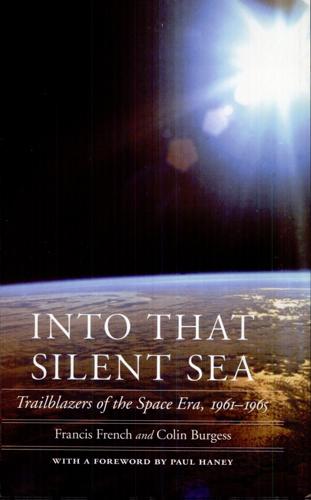
Into That Silent Sea: Trailblazers of the Space Era, 1961-1965
by
Francis O. French
,
Colin Burgess
and
Paul Haney
Published 2 Jan 2007
The Eisenhower administration, like so many real-life fathers, wasn't sure what it had sired, so it was understandably reluctant to take too much credit. In 1961 when Houston was selected as the home of what is now the Johnson Space Center, it was the last time in the modern era that cities bid for the right to be home to a new national facility. Houston's psychic payoff for volunteering came when Apollo 11 landed on the moon, and Neil Armstrong's first words back to mother earth were: "Houston . . . the Eagle has landed." In the course of 1961-63, everyone eventually "transitioned" to Houston and the new home the human spaceflight program was building on a swampflood plain twenty miles south of the city.
…
No answer. So I had an option: I quit. The following day, I went to London at the invitation of the bbc. After a week of negotiation, I went to work for 1tn, the commercial network in England, as commentator for manned spaceflights. As I commuted between London and Houston, Apollo 10 flowed into Apollo 11. The whole world stood still listening to Neil Armstrong and Buzz Aldrin land on the lunar surface on 20 July 1969. In time for Apollo 12, 1tn opened a new broadcast center in downtown London. Queen Elizabeth herself showed up to dedicate the new facilities. During a break, the queen walked up to me and asked: "Mr.
…
That was the entire conversation. Several weeks later, back in Houston, I ran into Armstrong at lunch. "A lady in London was asking about your health during Apollo 12" I told him. His face went whiter than usual as he said, "That must have been the queen!" I felt like I was being caught, but I couldn't tell by whom. After Apollo 11, Armstrong explained, he and his crew started a one hundred-day tour of all the world's capitals. By the time they got to London, about the fifth stop, Armstrong had an old-fashioned cold, so thick he couldn't talk. He thought about canceling a visit to Buckingham Palace to load up on cold medicine and sleep, but his wife Jan had other ideas.
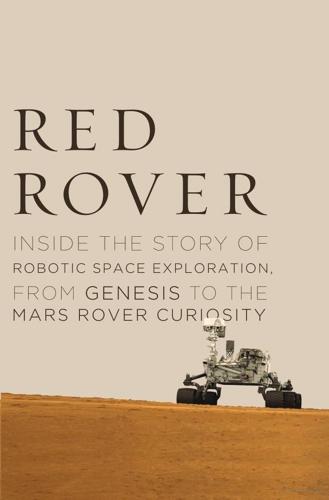
Red Rover: Inside the Story of Robotic Space Exploration, From Genesis to the Mars Rover Curiosity
by
Roger Wiens
Published 12 Mar 2013
The window-shade experiment, as it was dubbed, was flown on all but one of the Apollo missions to the lunar surface. It was one of the first experiments to be deployed by each pair of astronauts on the Moon, and its removal was one of the last things they did at the end of their stay. The first such experiment was deployed for only about two hours by the Apollo 11 astronauts. By the time of Apollo 16, the astronauts stayed on the surface long enough to expose the foil for forty-four hours. Because the solar wind is so diffuse, less than a billionth of a gram embedded itself in a square inch of exposed material on the Apollo foils. Thus, even by using the dedicated collectors, only the most abundant elements could be analyzed.
…
The laser altimeter accurately measures distances using the speed of light. Modern electronics can time signals with an accuracy of better than a billionth of a second, which is the time it takes light to travel about 1 foot. An accurately timed laser pulse can be bounced off of a surface to determine the distance between the origin and the surface. The Apollo 11 astronauts had placed a reflector on the Moon, allowing Earth-based laser systems to study the Moon’s precise orbit by accurately timing the reflected light. Later Apollo missions had been equipped with laser altimeters on board the spacecraft, permitting them to map the topography of parts of the Moon.
…
Accelerometers, 60 Aerogel collectors, 87 Aerogel, described, 86 Alpha-particle x-ray spectrometer (APXS), 109–110, 160, 171, 212 Aluminum, 17, 162, 174 American Association of Variable Star Observers, 9 Ames Research Center, 76, 77, 101, 169 Anders, William, 7–8 Antenna motor, 146 Apollo 7 mission, 6 Apollo 8 mission, 6, 7–8 Apollo 11 mission, 17, 71–72 Apollo 16 mission, 17 Apollo missions, 4 aim of, 6 capsules used for, 144 cost of, 20 costs since, 15 and Earth-based laser systems, 71–72 first of, to the moon, as a manned mission, 7–8 first planned return of a capsule since, 30, 47 laser altimeters on, 72 lunar soil from, 17 next logical step following, 87 as sample-return missions, 18, 20 and XRD instruments, 169 Apollo-Soyuz project, 95–96 Argonne National Laboratory, 27, 71 Arizona State University, 85 Arm motors, 145–146 Arm, rover unit, 75, 98, 99, 107, 109, 110, (ins. img. 15), 127, 142, 145, 162, 164, 171, 175, 195, 196, 212, 214 Arvidson, Ray, 77, 177 Assembly, test, and launch operations (ATLO) phase, 139–140, 146–147 Asteroids, 14 Atlantis, space shuttle, 188 Atlas rockets, 187–188 Atlas V, 187, 188, 191, 201 Baldonado, Juan, (ins. img. 3) Balloon tanks, 187 Barefield, James, 174 Barraclough, Bruce, 35–36, 38, (ins. img. 6), 130, 134, 186, 206 Basalts, 173–174, 213, 214 Baumgartner, Eric, 75 Bender, Steve, 153, 157–158, 162 Bernardin, John, 126 Beryllium, 126, 138 Bibring, Jean-Pierre, 180–183 Blake, Dave, 133, 169–170 Blaney, Diana, 106, 141 Boeing, 24, 96 Bolden, Charles, 209 Borman, Frank, 8 Bradbury Landing Station, (ins. img. 16), 211 Bridges, Nathan, 101 Burnett, Don, 4, 16–17, 18, 19, 21, 24, 25, 27, 33, 35, 47, 49, 57, 59 Calcium, 174, 175 California Institute of Technology (Caltech), 3, 12, 13, 18, 26, 73, 85, 182 Caltech Division of Geology and Planetary Sciences, 26, 27, 172 Canada, 107, 171, 204 Cape Canaveral celestial mechanics involved in launching from, 41 first major launch at, since last shuttle launch, 188 launch of Genesis at, 185 space shuttle at, 45 Capsule Curiosity, (ins. img. 12), 161, 164, 188, 189, 193, 194, 203, 206, 208, 210, 217 Genesis, 30, 35, 39, 47, 48, 49, 51, 52–53, 54, 55, 56, 57, 60, (ins. img. 1, 2), 193 Mars Science Laboratory, 144, 145 SCIM, 93 Stardust, 60 Capsules on the Apollo missions, 6, 18, 30, 144 for Mars Exploration Rovers, 145 reentry, 18, 19, 20, 23, 24, 47, 51, 52, 53 Carbon, 47, 64, 73, 175 Carbon dioxide, 146 Carbonates, 174, 175, 176 Cassini, mission to Saturn, 14, 160 Challenger disaster, 13, 92 Charge-coupled devices (CCDs), issues with, as detectors, 117–120, 137–138, 151, 152–153, 154, 155 ChemCam advantage held by, 106 ATLO phase and, 139–140 box protecting, on the Curiosity rover, (ins. img. 15) and budget issues, 110, 126, 130 cancellation of, 130–134, 135, 160, 172, 191, 192 CCD detectors for, issues with, 117–120, 137–138, 151, 152–153, 154, 155 challenge of interfacing, with the rover, 112–113 cold-temperature communication problem, 151 continued funding of, 135 cost review, 140–141 cost-cutting actions to stop cancellation of, 133, 135, 138, 152 deciding on naming LIBS instrument project as, 102 delivery date to JPL, 138, 139, 140 delivery review and performance of, 159–160 design review, 116 electrical cable damaging parts in, effect of, 134–135 French collaboration on, 102, 103, 108, 116–117, 122–123, 126, 129, 130, 131, 132, 133, 134, 138, 139, 159, 160, 161 halfway into developing, euphoria wearing off during, 121–122 initial turn-on and electrical checkout after landing, 210 installation of, on Curiosity, 158, 161 instruments complementing, 109–110 laser accident and work on, 106 laser instrument testing, (ins. img. 6), 129 letter-writing campaign to save, 132, 135 likelihood of success of, presentations on, 191–193 Mars landing-site meetings and, 177, 181 mast and voltage issues, 126 and the MSL launch delay, 148 and the MSLICE program, 195 nearly finishing the prototype for, 124 new detectors for, 120, 153, 155, 156 optical fiber issues, 113–116, 120–121, 122, 126, 138 optical lens design and, 156, 157–158 potential disaster scenarios involving, and impact, 193–194 projected performance of, review of, 115–116 proposal for, submission of, 102–103 radiation and, 154 rebuilt demux for, 156, 157 restoring full funding of, 141 selection of, as a MSL rover instrument, 108–109 as a sentry, 109 “shake and bake” tests involving, 138, 156, 163–164 and simulations using a mirror, 123, (ins. img. 7) Slow Motion Field Test and, 173, 174 spark produced by the laser from, (ins. img. 8) team members of, gathering to watch Curiosity’s landing, 206 temperature issues facing, 151, 154, 155–156 testing, after installation on Curiosity, 161–164 total cost of, 160 turn-on and testing after landing, 212–213 weight issue involving, 126 whole team for operating, 196, 205 See also Laser-induced breakdown spectroscopy (LIBS) CheMin XRD instrument, 133, 169, 170, 212 Chen, Allen, 207 China, 96 “Christmas tree” spacecraft, 15, 18, 20 Clark, Ben, 101 Clegg, Sam, 130, 173, 174, 175, 197, 204 Cold War, 28, 30, 188 Columbia Space Shuttle disaster, 55, 92, 93, 94, 185, 193 Comet Rendezvous and Asteroid Flyby (CRAF) mission, 14 Comets, 14, 19, 20 See also Stardust Compact Reconnaissance Imaging Spectrometer for Mars (CRISM), 179 Contamination from an aeroshell, 89, 90 on Apollo missions, 17 from Earth, 19 Genesis mission and, 47, 52, 61 incoming, checking for, 139 COTS (commercial, off-the-shelf) parts, 78, 113 Cremers, Dave, 69, 70, 72, 73, 74, 75, 76, 78, 79, 80, 81, 102 Cronkite, Walter, 7 Curiosity anomalies present during the landing rehearsal for, 198–199 answering old and new questions with, 214 box protecting ChemCam on, (ins. img. 15) communications with, during landing, 203–204 complicated operating procedure for, 195–196 countdown to launch of, 188 delayed launch of, effect of, 160, 179 EDL stage of, 161–162, 164, 203, 208 electrical motors for, 154–155 firing on a Mars rock outcrop, (ins. img. 5) first images of Mars from, 208–209 gravel damage to, 213–214 heat source for, 154, 178 imagining potential disaster scenarios involving, 193–194 impending launch of, 187 installation of ChemCam on, 158, 161 instrument turn-on and testing after landing of, 211–212 kickoff meeting for, 167–172 and the landing ellipse, (ins. img. 11), 202 landing of, 191, 193, 208 landing publicity for, 205 landing risk for, 192 landing site selected for, (ins. img. 11, 12, 16), 183, 201, 202 landing time for, by time zone, 203 landing trajectory for, 202, 203, 204 landing window for, 201 and landing-site meetings, 177–183 latest batch of images and spectra from, analyzing and discussing, 211 launch of, 188–189 launch rocket for, 187, 188, 191 launch stages for, 188 launch window for, 188, 201 lifespan of, 213 lowering of, by Sky Crane, (ins. img. 13), 162 naming MSL as, 148 and new questions arising from Glenelg site, 214 news about the landing of, 203 next set of Mars images from, 209–210 operating temperatures for, 154–155 operational readiness tests for, 194–195, 194–195, 196–199 parachute for, (ins. img. 12), 194, 204, 207, 210 at Paris air show, (ins. img. 9) press conference after landing of, 209 program for operating, 195 reinstalling RTG on, 164 remote operations of, preparing for, 213 revelations from first few sols of driving, 213 route for, 201–202 RTG-powered, 164, 178 “shake and bake” tests for, 163–164 simulated view of, as it approached Mars, 206, 207 Slow Motion Field Test for, 172–176 team leadership of, 167–172 testing ChemCam after installation on, 161–164 thermal mismatch in design of, addressing, 153–156 total cost of, 160 view of Mount Sharp from, (ins. img. 14) weight of, (ins. img. 10) See also Mars Science Laboratory (MSL) Delapp, Dot, 212 Delta II rocket, 45 Descopes, 125–126, 128, 129, 132 Discovery missions approach to, 15, 16 competing for, 20–22, 27, 31, 34, 35, 85–86, 91 cost cap for, 20 fitting a sample-return mission into, 18 See also Genesis Disney, 148 Doppler tone, 198 Downlink leads, 195, 196, 197 Dugway Proving Ground, 52, 53 Dust-collection concept, 86, 87 See also Sample Collection for Investigation of Mars (SCIM) Dynamic Albedo of Neutrons (DAN), 212 Earth close approach of Mars to, 8, 9, 94, 147, 149 dominant rock types on, 174 gravity of, 19 half-ellipse configuration involving Mars and, 201 land area equal to, 177 magnetic fields surrounding, 19 nitrogen isotopes of, 64 orbiting the Sun, 8, 147 oxygen isotopes of, 62, 63 passing Mars, cycle of, 87, 147, 149 rock under the oceans of, 173 tilt of, for launching missions, 41, 45 Earth-to-Mars communications, simulating, 78 Eberswalde site, 181, 182 Edgett, Ken, 168 Elachi, Charles, 132 Electrical leads, 118–119 Engineering models, 111–112, 122, 124, (ins. img. 7), 125, 129, 134, 135, 137, 138, 142 Engineering teams, 112 England, London, 205 Entry, descent, and landing (EDL) stage activation of, 208 command for, 203 described, 161–162 rover mated with, 164 team involved with, 203, 205, 207–208, 209, 210 European Space Agency, 191 European spacecraft, Halley and, 14 Ferris, Monty, 78, 79, 80, 83, 98 FIDO (Field-Integrated Design and Operations) rover, 77 First Lagrangian (L1) point, 19 Fleming, Cliff, 52–53 Foehlinger, Chuck, (ins. img. 3) France proposals from, for the mobile laboratory, 107 Toulouse, people in, watching Curiosity’s landing, 205 French scientists, collaboration with, 98, 100–101, 102, 103, 106, 108, 116–117, 122–123, 126, 129, 130–131, 132, 133, 134, 138, 139, 159, 160, 161, 179, 180, 212, 213 See also specific scientists Gale Crater, (ins. img. 11, 12, 14), 179, 181, 182, 183, 202, 207, 210, 211, 213, 214 Galileo probe, 14 Gamma-ray detectors, 141 Gamma-ray spectrometers, 107 Gellert, Ralf, 171 Genesis, 8, 74, 79, 86, 87, 90, 93, 95, 118, 206 analysis of the samples from, 62, 63 attachment points of the capsule for, 53–54 building the prototype for, 27 contamination of samples from, 61 contingency measures for, 57, 59 crash landing of, and impact of the capsule, 55–56, (ins. img. 2), 193 delayed launch of, 42–43, 45, 46 designing improvements to the model for, 27–28 dry run presentations on, 28–29 and extraction of the solar sample canister, 57–58 failing final selection for first Discovery mission, 31–32 finessing the concept for, period of, 33, 35 first long-term countdown to the launching of, 45–46 full deployment of, (ins. img. 1) giving pre-launch interviews on, 41–43 good solar-wind samples from, obtaining, 58, 59 as a historic mission, 45 and the instrument used to collect oxygen and nitrogen, (ins. img. 3) launch of, 46, 98, 185, 188 launch readiness review of, 44 launch window of, 41 and locating the concentrator target, 58 main goal of, 62 measurement of solar-wind oxygen from, 63, 64 midair capture of reentry capsule planned for, 30, 51, 52–53, 54 month after launch of, 47–48 negative chute for, 55 nitrogen studies from, 64 opening of the capsule for, 47 overheating problem facing, 47–48 picked for the next Discovery mission, 35 planned trajectory of, and reentry sequence, presenting, 29–31 possible disaster scenarios considered in planning, 55–56 potential reentry wind issue and, 30–31, 35 presentation of, before NASA review board, 29–31 press conferences on, 53, 55, 56, 57, 58–59 proposal submitted for, as finalist selection, 27 purpose of, 42 reason for the crash of, 59, 60 and recovering the samples from the sample canister, 59, 61 and recovery of the capsule pieces, 56–59 representing, before a different NASA review board, 35 resonance ionization mass spectrometry and, 27, 71 resubmitting a proposal of, for the next Discovery mission, 34 results from, 63, 64 reviews of, prior to launch date, 44 sample canister lid from, (ins. img. 1) selected by NASA again as a mission finalist, 34 solar-wind concentrator for, 27, 35, 36, 37–38, 39, 58, 63, (ins. img. 1) as a success, 64–65 testing the prototype for, 28 time period to fully develop and test instruments for, 35 two years leading up to the launch of, 43–44 See also Solar-wind sample-return mission Geomorphologists, perspective of, 179–180 Germany, 107, 171 Getting-acquainted process, 112 Gibson, Bill, 140, 141 Glenelg, 211, 214 Goddard Space Flight Systems, 122, 168 Goldin, Daniel, 14–15, 20, 87 Grotzinger, John, 172, 181, 182, 206, 207 Gusev Crater, 214 Gypsum, 175, 176 Halley, comet, 14 Hassler, Don, 171 Hazcams (Hazard Avoidance Cameras), 204, 209 Heat shield, 53, 57, 145, 193, 208, 210 Herkenhoff, Ken, 101 HiRISE instrument, images captured by, (ins. img. 12), 199 Hohmann transfer, 201–202 Horz, Fred, 37 Hubble Space Telescope (HST), 14 Hughes, 96 Imagers, 102, 109, (ins. img. 14, 16), 160, 168, 212, 214 Infrared spectroscopy, 106, 110, 154, 179, 180 Intercontinental ballistic missile (ICBM), 28, 96, 187, 188 Iron, 173 Isotope ratios, 62, 63, 64, 87, 99, 109 James Webb Space Telescope, 127–128 Jet Propulsion Laboratory (JPL), 26, 37, 41, 47, 59, 101 assisting in planning solar-wind sample-return mission, 20, 23–24, 25 ChemCam and, 114, 116, 119, 120, 122, 126, 131, 132, 134, 137, 138, 139, 140, 153, 155–156, 157, 158, 159, 160, 161 dry run presentations by, involving Genesis, 28–29 first woman scientist at, 18 infrared spectrometers and, 106 and the landing of Curiosity, 191, 206 landing publicity videos released by, 205 and the launch of Curiosity, 189 Mars yard at, (ins. img. 10), 212 media relations at, 56 and the MSL engineering model, 112, 142 operational readiness tests at, 194–195, 196, 197, 198 operations hub at, 203 origins of, 74 payload managers at, 108, 120, 130, 137, 140, 156 press area at, 209 rovers and, 74, 75, 76, 77, 146, 147, 148, 167, 170, 173, 202 satellites and, 74 Slow Motion Field Test and, 174 thermal chamber at, 163 wooing scientists as possible leaders at, 18 See also specific JPL projects and personnel Johnson Space Center, 11, 37, 39, 92 Juno spacecraft, 188 Jupiter, 14, 20, 149, 168, 188 K-9 rover, 77, 113 Kennedy, John F., 6 Kennedy Space Center.

Future Crimes: Everything Is Connected, Everyone Is Vulnerable and What We Can Do About It
by
Marc Goodman
Published 24 Feb 2015
Osawa, “As Sony Counts Hacking Costs, Analysts See Billion-Dollar Repair Bill,” Wall Street Journal, May 9, 2011. 14 In that incident, data: “Target Now Says up to 110 Million Customers Victimized in Breach,” MercuryNews.com, Feb. 5, 2014; “Pictured: Russian Teen Behind Target Hacking Attack,” Mail Online, Feb. 5, 2014. 15 As incredible as the Target hack: Nicole Perlroth and David Gelles, “Russian Hackers Amass over a Billion Internet Passwords,” New York Times, Aug. 5, 2014. 16 Physicians can even perform: Jacques Marescaux et al., “Transatlantic Robot-Assisted Telesurgery,” Nature, May 29, 2001. 17 For example, the 1969 Apollo 11: Phil Johnson, “Curiosity About Lines of Code,” IT World, Aug. 8, 2012; Saran, “Apollo 11.” 18 By the early 1980s: Steven Siceloff, “Shuttle Computers Navigate Record of Reliability,” NASA, Jan. 20, 2011. 19 Today, the software required: David McCandless, “Codebases,” Information Is Beautiful, Oct. 30, 2013; “KIB—Lines of Code (Public),” Google.doc, https://docs.google.com/; Pollwatcher, “Healthcare.gov: 500 Million Lines of Code!
…
As information technologies continue to double in their price performance, capacity, and bandwidth, amazing things become possible. Take, for example, the iPhone that hundreds of millions of users carry in their pockets today. Incredibly, it literally has more computer processing power than that which was available to all of NASA during the Apollo 11 moon landing forty years ago. The modern smart phone is more than “a million times cheaper and a thousand times faster than a supercomputer of the ’70s.” As a result of mathematical repercussions of exponentials and Moore’s law, “we won’t experience a hundred years of progress in the twenty-first century; it will be more like twenty thousand years of progress (at today’s rate).”
…
While there are obvious cost, efficiency, and capability advantages to these transformations, they add tremendous complexity to our world. One very rough approximation by which to examine these complexities is by considering the number of lines of computer code (LOC) required to make a particular piece of software or system function. For example, the 1969 Apollo 11 Guidance Computer that safely guided astronauts the 356,000 kilometers from earth to the moon and back only contained 145,000 LOC, a ridiculously paltry sum and a remarkable achievement by today’s standards. By the early 1980s, when the space shuttle became operational, its primary flight software had grown to a relatively slim 400,000 LOC.
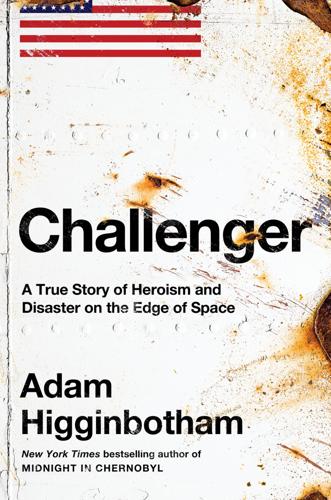
Challenger: A True Story of Heroism and Disaster on the Edge of Space
by
Adam Higginbotham
Published 14 May 2024
Nixon had little interest in the space program, and was alert to the danger that NASA might ride a wave of global euphoria over the moon landing into an ever-more spendthrift future. And, even amid the patriotic enthusiasm surrounding the lunar triumph, the American public had scant appetite for sending men to Mars, an exploit that one congressman told the press could cost as much as $200 billion. In a Gallup poll taken immediately after the Apollo 11 mission, 53 percent of respondents said they opposed a Mars landing; a Newsweek survey revealed that more than half of the public wanted the President to spend less on space exploration. When Armstrong, Aldrin, and Collins were feted at a celebrity-packed gala dinner in Los Angeles less than a month after returning from their flight, and hosted by Nixon himself, protesters hung a banner from the office building opposite the venue that simply read: FUCK MARS.
…
I’ve applied to NASA,” she told her father over the phone. “Good,” he said. “So you’ll become an astronaut.” Resnik prepared for her application with typical thoroughness: she interviewed former Mercury astronaut—and now senator—John Glenn; visited the newly opened Air and Space Museum in Washington, DC, to track down Apollo 11 pilot Michael Collins, who had taken a job there; and devised a new regimen of nutrition and exercise to meet the demands of the physical. At first, she believed she had little chance of making the final cut, but soon learned she was through to the last two hundred of the more than one thousand women who had applied.
…
After the first few minutes of genial banter—discussing her students, the idea of the Space Flight Participant Program, and the elimination process that led to her selection—the host turned to more serious matters. Carson, a keen amateur astronomer, had begun at The Tonight Show in the same year that John Glenn became the first American to orbit the Earth, watched the liftoff of Apollo 11 from the bleachers at Cape Canaveral, and interviewed the crew of Apollo 13 from behind the same desk at which he sat now; he understood the risks of space flight only too well. “When is this scheduled for?” he asked. “Do they have a target date for you to, as they say, blast off?” “The target date is January 22,” McAuliffe said.
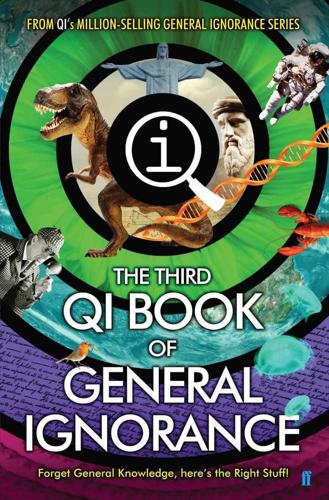
QI: The Third Book of General Ignorance (Qi: Book of General Ignorance)
by
John Lloyd
and
John Mitchinson
Published 28 Sep 2015
The most famous flag on the Moon – the one carried by Apollo 11 and erected during the first Moon landing – is the only one not standing. Buzz Aldrin saw it being blown over by the rocket blast as he and Neil Armstrong left for home. Given the extremes of heat, cold and radiation it will have been subjected to, it’s very likely to have disintegrated. Dennis Lacarrubba, whose New Jersey-based company made the flag, has been quoted as saying, ‘I can’t believe there would be anything left.’ Conspiracy theorists who believe the Moon landings were a hoax often cite the flag in the Apollo 11 photographs and ask how it could be waving when there is no wind on the Moon.
…
INDEX Abbotsbury Swannery 1 abductive reasoning 1, 2 Abyss of Ophir 1 acacia trees 1 Accession Council 1 Adams, John 1 Addis, William 1 Addis Brush Company 1 Addison, Joseph 1 Adonis 1 Advent 1, 2, 3 Africa 1, 2, 3, 4, 5, 6, 7, 8, 9, 10 African Queen, The (film) 1 Afrikaans language 1 Agnes of Assisi, St 1 Aitken, John 1 Alaric the Goth 1 albatrosses 1, 2 Albert, Prince 1, 2, 3, 4 Alcatraz 1 alcohol 1, 2, 3, 4, 5, 6, 7 Aldrin, Buzz 1, 2 Alexander, Jason Allen 1 Alexander the Great 1 Alexandra, Princess 1 algae 1, 2, 3 Allahakbarries 1 allergies 1 al-Qaeda 1 Altamura 1 aluminium 1 Amazon, River 1, 2 Amazon rainforest 1, 2 America 1, 2, 3, 4, 5, 6 American Civil War 1, 2 American Declaration of Independence 1, 2 American War of Independence 1 amoebas 1 Anaya, Ignacio 1 ANCONA, RONNIE 1 ANDERSON, CLIVE 1, 2 Anderson shelters 1 Andes 1, 2 Andrew, St 1 Angel, Jimmie 1 Angel Falls 1 Angel of the North 1 Anglo-Saxon period 1, 2 Antarctica 1, 2, 3, 4, 5, 6 Antonine Wall 1 ants 1, 2, 3 Aphrodite 1, 2 Apollo 11 1 Apollo 17 1 apples 1, 2 apriums 1 aquifers 1 Arabic language 1, 2 Aramaic language 1 Arctic 1, 2, 3, 4 Argentina 1 Arles 1 arm wrestling 1 arms 1, 2 Armstrong, Neil 1, 2 Asher, Jane 1 Asia 1, 2, 3, 4, 5, 6 Asquith, Herbert 1 Assal, Bahr al, Lake 1 Assissi 1 asteroids 1, 2, 3 Astor, Nancy 1 astronauts 1, 2, 3 Athena 1 Atlantic Ocean 1, 2, 3, 4, 5 atmospheric rivers 1 Aubers Ridge, Battle of 1 Augustus, Emperor 1 Australia 1, 2, 3, 4, 5, 6, 7, 8, 9, 10, 11, 12, 13 avalanches 1 Avicenna 1 Aztecs 1, 2 B & Bs 1 ba birds 1 Baal 1 Babylon 1, 2 backbones 1 Bacon, Francis 1 bacteria 1, 2, 3, 4, 5 Badger Day 1 bagpipes 1 bags for life 1 baguettes 1 BAILEY, BILL 1, 2, 3, 4, 5 Baja 1000 Rally 1 Bak 1 Baldur 1 baleen 1 Balmoral 1 Bamiyam 1 bananas 1, 2 Barbados 1 Barber, David 1 Barclay Allardice, Capt.
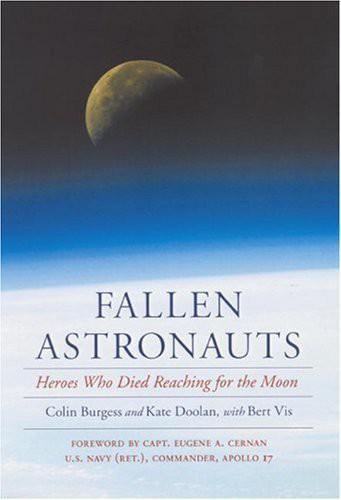
Fallen Astronauts: Heroes Who Died Reaching for the Moon
by
Colin Burgess
and
Kate Doolan
Published 14 Apr 2003
There were gyration problems, and Stafford had to fly the Lm through some difficult maneuvers, but they finally docked, and after the crew had transferred, the Lm's ascent stage was jettisoned. The three astronauts completed a final lunar orbit, and then began the long flight home. Apollo 10 had blazed a trail to the moon, and it was confirmed that Apollo 11 would follow as the first lunar landing. The flight of Apollo 11 stands as one of the greatest achievements in human history and fulfilled the pledge made by President Kennedy back in 1961 to land a man on the moon and return him safely to the Earth. Launched on 16 July 1969, astronauts Neil Armstrong, Buzz Aldrin, and Mike Collins flew to the moon aboard Command Module Columbia.
…
Most Naa officials successfully kept their jobs when they agreed under pressure with the findings and recommendations of the review board, although some privately disagreed that their company should shoulder the entire blame for the fire. It would be some twenty-two months after the fire that another manned American spacecraft, Apollo 7, was launched into orbit. Barely ten months later Apollo 11, commanded by Neil Armstrong, landed on the moon. Left behind on the lunar surface was an Apollo i patch belonging to Scott Grissom, in recognition of the crew members who had given their lives to make a safe program possible. The aftermath of the Apollo i fire had left Nasa emphasizing crew safety before everything else, and this remained the policy until the mid-1980s, when Nasa was once again inflicted with a spaceflight accident that nearly saw the end of the space agency and all human spaceflight activity by the United States.
…
Maneuvering exercises, rendezvous, and docking were carried out in orbit in a vital test of the craft that was intended to land men on the moon later that year. The flight was a complete success. Now just one more mission remained—a final bold test flight, a precursor to the actual moon landing. Apollo 10 was designated as a full dress rehearsal for the first lunar landing. Its goal was to duplicate every step of the upcoming Apollo 11 flight, with one exception—the astronauts would not touch down on the lunar surface. On 18 May 1969 a Saturn rocket rose slowly off the pad and lifted the Apollo 10 spacecraft into earth orbit at the beginning of its eight-day mission. Once all the systems had been checked, the S-ivb third stage rocket was reignited, and Apollo 10 was propelled away from Earth.
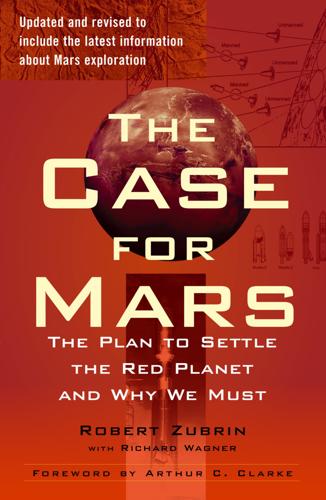
Case for Mars
by
Robert Zubrin
Published 27 Jun 2011
If Mars is to be made to give up its secrets, “people who do not shrink from the dreary vastness of space” will have to go there themselves. 3: FINDING A PLAN MARS THE HARD WAY On July 20, 1989, President George Bush stood on the steps of the National Air and Space Museum in Washington, D.C. Behind him, within the cool halls of the museum, rested artifacts from America’s greatest space explorations, among them a gumdrop-shaped spacecraft named Columbia, the Apollo 11 command module. The men who rode the Columbia home from lunar orbit—Neil Armstrong, Mike Collins, and Buzz Aldrin, the Apollo 11 crew—now flanked Bush as the president prepared to announce a bold new venture in space on this the twentieth anniversary of humanity’s first landing on the Moon. Bush spoke of the challenges and allure of space exploration, of committing the nation to a sustained program of human exploration of the solar system and even of the permanent settlement of space.
…
If we then assume total system operation cost is seven times propellant costs (roughly double the total cost/fuel cost ratio of airlines), then the cost of delivery to LEO could be about $100 per kilogram. Let’s assume that there is operating between Earth and Mars a spacecraft in a permanent cycling orbit which has the ability to recycle water and oxygen with 95 percent efficiency. Such interplanetary “cyclers,” proposed by Apollo 11 pilot Buzz Aldrin as the basis of a permanent Earth—Mars transportation system, could efficiently provide ample quarters for many immigrants, as they only have to be launched once but keep flying a 2.2-year round-trip journey between Earth and Mars virtually forever. Taking passage on such cyclers, each passenger (100 kilograms with personal effects) will have to bring about 400 kilograms of supplie to provide him or herself with food, water, and oxygen during a two-hundred-day outbound trip to Mars.
…
You can oin the Planetary Society by sending a check for $35 to: The Planetary Society, 65 North Catalina Avenue, Pasadena, CA 91106. The National Space Society is the second largest, with 25,000 members. Founded by Wernher von Braun and Princeton space visionary Professor Gerard O’Neill, it is led today by Apollo 11 astronaut Buzz Aldrin, Shuttle astronaut Dan Brandenstein, and Executive Director Pat Dasch. The primary interest of the National Space Society (NSS) is to promote the human settlement of space, including the Moon, Mars, the asteroids, and free-floating space colonies. The NSS would be equally happy supporting a Mars (or Moon) program based on any of the J.F.K., Sagan, or Gingrich models.
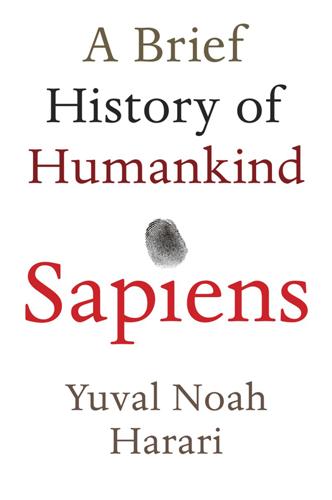
Sapiens: A Brief History of Humankind
by
Yuval Noah Harari
Published 1 Jan 2011
As mentioned earlier, there is also firm evidence for regular sea trade between some of these islands, such as New Ireland and New Britain.1 The journey of the first humans to Australia is one of the most important events in history, at least as important as Columbus’ journey to America or the Apollo 11 expedition to the moon. It was the first time any human had managed to leave the Afro-Asian ecological system – indeed, the first time any large terrestrial mammal had managed to cross from Afro-Asia to Australia. Of even greater importance was what the human pioneers did in this new world. The moment the first hunter-gatherer set foot on an Australian beach was the moment that Homo sapiens climbed to the top rung in the food chain on a particular landmass and thereafter became the deadliest species in the annals of planet Earth.
…
The captain spent his time on the voyage drawing military maps while Darwin collected the empirical data and formulated the insights that would eventually become the theory of evolution. On 20 July 1969, Neil Armstrong and Buzz Aldrin landed on the surface of the moon. In the months leading up to their expedition, the Apollo 11 astronauts trained in a remote moon-like desert in the western United States. The area is home to several Native American communities, and there is a story – or legend – describing an encounter between the astronauts and one of the locals. One day as they were training, the astronauts came across an old Native American.
…
The idea that he had discovered a completely unknown continent was inconceivable for him and for many of his generation. For thousands of years, not only the greatest thinkers and scholars but also the infallible Scriptures had known only Europe, Africa and Asia. Could they all have been wrong? Could the Bible have missed half the world? It would be as if in 1969, on its way to the moon, Apollo 11 had crashed into a hitherto unknown moon circling the earth, which all previous observations had somehow failed to spot. In his refusal to admit ignorance, Columbus was still a medieval man. He was convinced he knew the whole world, and even his momentous discovery failed to convince him otherwise. 36.
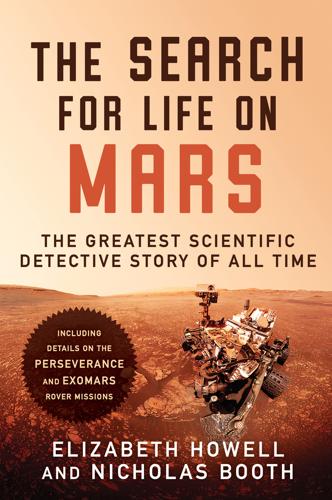
The Search for Life on Mars
by
Elizabeth Howell
Published 14 Apr 2020
* * * When Neil Armstrong and Buzz Aldrin became the first human beings to walk on another world, in July 1969, Malin, then a nineteen-year-old undergraduate, was allowed into the inner sanctum of Mission Control in Houston to witness the events firsthand. It was a unique experience for anyone, let alone a Berkeley physics student. He had also been invited to witness the launch, and then a week later, the splashdown of Apollo 11 in the Pacific Ocean aboard the recovery ship. The young Michael Malin was granted this extraordinary privilege because of his abiding interest in space and a certain naive chutzpah. “I was a true child of the Space Age,” Malin reflects, “and I had bombarded NASA with letters to let me witness this astounding event in history.”
…
Unfortunately, Malin had the misfortune to develop pneumonia. Not wanting to miss a true chance of a lifetime, Malin later wrote to Paine asking to attend the launch of the first attempted Moon landing. By that time Paine had taken over as NASA administrator. Malin was amazed to find himself invited out to the launch of Apollo 11 in July 1969. The Berkeley undergraduate gamely caught the cheapest flight he could find down to Florida. When he checked in to register at Cape Canaveral, Malin was momentarily scared. His name did not appear on the official invitees list. To his and the protocol people’s mutual astonishment, he was listed with the Very Very Important Personnel.
…
In the way of all space agencies, the Mars Rover program, which Shirley joined in 1987, grew very fast. Two years later, the Red Planet briefly flowered as a grand national goal after President George H. W. Bush made an ill-starred attempt to invoke Kennedyesque rhetoric. On July 20, 1989, the twentieth anniversary of Apollo 11’s landing on the Moon, Bush vowed to return astronauts there and also to Mars. Within two years, the initiative was dead, as were various options for supporting it by means of roving vehicles and robotic precursors. The eventual cost of JPL’s contribution alone was estimated at $6 billion (two billion for its orbiters, another couple for the rovers, and a further two for the sample return).
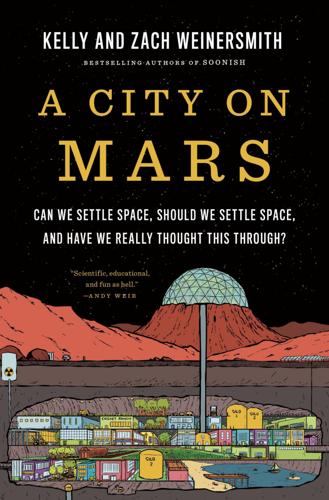
A City on Mars: Can We Settle Space, Should We Settle Space, and Have We Really Thought This Through?
by
Kelly Weinersmith
and
Zach Weinersmith
Published 6 Nov 2023
GO TO NOTE REFERENCE IN TEXT details are scarce: Scott Gleeson, “Elon Musk Says SpaceX Inspiration4 Crew Had ‘Challenges’ with Toilet,” USA Today, September 23, 2021, https://www.usatoday.com/story/tech/news/2021/09/23/elon-musk-says-spacex-inspiration-4-crew-had-challenges-toilet/5825068001/. GO TO NOTE REFERENCE IN TEXT “Tang sucks.”: Mark Memmott, “Now He Tells Us: ‘Tang Sucks,’ Says Apollo 11’s Buzz Aldrin,” NPR, June 13, 2013, https://www.npr.org/sections/thetwo-way/2013/06/13/191271824/now-he-tells-us-tang-sucks-says-apollo-11s-buzz-aldrin. GO TO NOTE REFERENCE IN TEXT Pilot Sid Gutierrez: Sid Gutierrez, “Rice Krispies and taco sauce,” in Space Shuttle: The First 20 Years—The Astronauts’ Experiences in Their Own Words, ed. Tony Reichhardt (London: DK Publishing, 2002): 219.
…
In a fight to achieve a technical goal thought impossible just one generation earlier, some of the smartest engineers in the world built some of the most complex machines ever devised and then flew men, who would all become culture heroes, into danger in order to save civilization. This is why if you browse a bookstore, you’ll find most books about space are about the Moon Race, and about Apollo 11 in particular. The problem for our purposes is that if you’ve only read about the heroic deeds of astronauts and agencies, you miss a lot of the context that led to space law as we have it. Here, we want to look outside the agencies and focus on the behavior of politicians and militaries. Doing so will give you a sense of both the unique conditions that created today’s Outer Space Treaty, and why it’s been relatively hard to get major new agreements ever since.
…
A B C D E F G H I J K L M N O P Q R S T U V W X Y Z A Abdel-Motaal, Doaa, 286 access, to space, 2, 6–9, 18, 157, 262, 314, 362, 366 Accessory to War (Lang and Tyson), 368 Adams, Douglas, 53 advertisements, in space, 167–70 Africa, 159 Air Law, 236 air/atmosphere, 34, 257 and astronauts, 48–50 in biospheres, 187 need to construct it, 27–28, 193 control over, 9, 50, 341–42 on Earth, 47, 358 on Mars, 2, 139, 356 on the Moon, 23, 118, 122, 125 as radiation shield, 122, 148 in space, 11, 47–48 for space settlements, 12, 27–28, 50–51, 97, 187, 200 on Venus, 161 Albanians, 324–25 alcohol, 32, 179–80, 190, 191, 201, 330 Alcohol in Space (Weir), 179 Aldrin, Buzz, 45, 104, 121, 161, 179, 269 alien life, 145–46, 163–64 Allen, John, 184 Allison, Graham, 369–70 All-Terrain Hex-Limbed ExtraTerrestrial Explorer (ATHLETE), 205 American Civil War, 295–96, 369 American West, 16–17, 34, 39, 256–57, 296, 369 Amundsen, Roald, 29, 282 animals research on, 57–58, 66, 79–82, 384–85 sent to space, 43, 44, 45, 384–85 Antarctic Treaty System (ATS), 282–89 Antarctica, 86, 154 a “managed commons,” 271, 279–80, 287–88 Moon is colder than, 125, 131 other countries’ bases in, 283–86, 288 a precedent for space, 14, 285, 287–89 priority via childbirth in, 280, 286 research stations in, 90, 106–8, 134, 144 resources regime of, 286–90 Russian bases/stations in, 284, 329–31 US bases in, 284 violent incidents in, 329–31 Antarctica: The Battle for the Seventh Continent (Abdel-Motaal), 286 Apollo missions, 68, 98, 216 Apollo 11, 219 Apollo 17, 58–59, 122 collect Moon rocks, 249, 302 disasters on, 49, 141 experiments of, 181, 196 images from, 130, 297–98 landing sites of, 122, 267 leave detritus on Moon, 122, 132 length of time on Moon, 42, 58, 123, 134 to the Moon, 50, 58–59, 104, 122 Argentina, 261, 282–83, 284, 285–86 Armstrong, Neil, 45, 104, 113, 228, 251, 269 Artemis Accords (2020), 264, 266–71 “Artemis Plan,” 135 Ashurbeyli, Igor, 309–10 Asimov, Isaac, 38 AST & Science, 244 asteroids, 22, 153 deflection of, 15, 377 economics of mining on, 158–60, 289 Japan collects from, 249–50 laws concerning, 236, 264–65 main belt of, 8–9, 144, 158–59, 160 and materials for space stations, 149 space settlements on, 158–60 and space war, 373 See also mining of minerals, in space: on asteroids astronauts, 25, 30, 91 amusing names of, 379 behaving badly, 32, 98 day-to-day life of, 92, 96–98 death of, 46–47, 49–50 definition of, 237–38 early ones, 41, 43, 45, 50, 228 fib about health issues, 32, 103–5, 108 health issues of, 61–64, 77–78 length of time in space, 42, 45, 58–59, 63, 68, 90 lust for taco sauce, 177 psychological profile of, 93–95 report “flashes of light,” 54 screening of, 94–95, 102–4, 108 training of, 41–42, 104 women, 10–11, 80–81, 213–16 See also specific names Atlas Obscura, 72 atomic bombs, 52, 58–59, 224, 231, 345 autarky, 356–58, 367 B babies, in space, 15, 18–19, 135, 288 biotech solutions for, 84–86 conception stage, 70, 71, 72–75, 79, 87 ethics/morality and, 82, 85–87 and Mars, 77, 83–86, 138, 344 and mental health, 95 and the Moon, 77, 83, 344, 385 pregnancy and, 11, 75–79, 83 “pregnodrome” for, 83, 83–84 and radiation, 83–84 and rotating space stations, 155 SpaceLife Origin’s plans for, 10–11 tech challenges of, 10–12, 87–88 Bangladesh, 318–20, 322 Bartlett, Roscoe, 359, 367, 374 bastardocracy, 5–6, 15–20 Baudry, Patrick, 179 Bay of Pigs Invasion (Cuba), 227–28 behavioral health, 92–95, 98, 103, 105–8.

The Fourth Age: Smart Robots, Conscious Computers, and the Future of Humanity
by
Byron Reese
Published 23 Apr 2018
And yet we could mirror it with ones and zeros inside a tiny processor. This suggests a profound truth, that anything that can be modeled in a computer is occurring via computation in the real world as well. In other words, Apollo 11’s launch was computational. It didn’t merely involve computation, its launch was computation. Its entire mission was computation. Where it gets interesting are the edge cases. Are we computation? Are our minds giant clockworks that follow the same basic rules as Apollo 11 did? Those are the questions that we need to answer in order to understand the limits, if there are any, of computers. This is why I say that computers are philosophically significant devices.
…
The point of the Turing machine was not “Here’s how you build a computer” but rather, “This simple imaginary device can solve an enormous range of computational problems. Almost all of them.” In fact, anything a computer can do today, you could theoretically do on a Turing machine. And Turing not only conceived of the machine but figured all this out. Consider that simple machine, that thought experiment with just a handful of parts: Everything Apollo 11 needed to do to make it to the moon and back could be programmed on a Turing Machine. Everything your smartphone can do can be programmed on a Turing machine, and everything IBM Watson can do can be programmed on a Turing machine. Who could have guessed that such a humble little device could do all that?
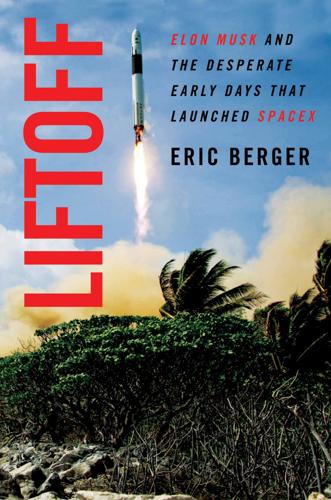
Liftoff: Elon Musk and the Desperate Early Days That Launched SpaceX
by
Eric Berger
Published 2 Mar 2021
“The sun was setting, so I went out to the beach,” Buzza said. “I lay down and fell asleep for hours, and woke up in the dark and salty chill.” When Neil Armstrong took humanity’s first step on another world in 1969, Anne Chinnery’s parents woke the sleeping three-year-old to experience the moment. The only conscious memory she retains of the Apollo 11 Moon landing is confusion, but it might nonetheless have proven formative. Throughout her childhood, she maintained an interest in space, and aspired to fly there one day. It became more than a theoretical idea in the early 1980s; as Chinnery neared high school graduation, NASA sent Sally Ride into space.
…
“Young girls need to see role models in whatever careers they may choose, just so they can picture themselves doing those jobs someday,” Ride said. “You can’t be what you can’t see.” Shotwell had a similar experience with engineering. In 1969, her father gathered five-year-old Gwynne and her siblings around the TV to watch the Apollo 11 landing on the Moon. She has fuzzy memories of the experience, recalling it as rather boring, and not as “good looking” as the childrens’ shows she was familiar with. The rest of the Apollo program passed her by unheeded, never really sparking an interest in science. Growing up in Libertyville, a smallish town north of Chicago near the border with Wisconsin, Shotwell’s life revolved around extracurricular activities as well as work in the classroom.
…
AAE Aerospace, 146–47 Ablation, 146–50, 177 Aerojet Rocketdyne, 108, 228 Aerospace Corporation, 102 Air Force, U.S., 23, 59, 111, 112, 169 Chinnery and, 50–51, 62 Falcon 1 first-stage C-17 transport, 185–92 military culture of, 61 NASA partnership with, 64–65 relationship with SpaceX, 61–62, 65–67, 91, 164, 224, 235 Vandenburg site, 47, 48, 51, 52, 53 Air Force Academy, U.S., 50, 90, 99, 164 Air Force One, 186 Air Force Research Laboratory, 79 AirLaunch, 99 Allen, Joe, 45–46, 143, 144, 262 Altan, Bulent, 242–43, 262 background of, 21–22 Falcon 9 launch, 225–26 Flight One, 76, 77, 86, 118–19 capacitors, 82–85 Flight Three, 178–79 Flight Four first-stage C-17 transport, 185, 187–89 hiring of, 21–22, 23 Turkish goulash, 168, 197, 242 Amador, Ray, 184 American Airlines Flight 77, 98 American Rocket Company (Amroc), 62–64, 142 Anderson, Chad, 113 Antitrust law, 111 Antonio’s Nut House, 129 Apocalypse Now (movie), 57 Apollo program, 7, 108–9 Apollo 11, 49–50, 99–100, 234 Ariane, 93 Armstrong, Neil, 45, 49–50 Army Space and Missile Defense Command, U.S. (USASMDC), 55–57 Astra, 242 ATK Aerospace, 228 Atlas rockets, 48, 65, 93, 111, 112, 229, 236 Atomic weapons tests, 55, 70 Aviation Week, 227–28 Aykroyd, Dan, 63 Barber-Nichols, 38 Barn owls, 60 Bassett, George “Chip,” 53, 262 Battle of Guam, 55 Beal, Andy, 142–43, 218 Beal Aerospace, 44–46, 142–43 Beck, Peter, 236 Bezos, Jeff, 35, 36, 154 Bigej Island, 79 Bismarck, HMS, 70 Bjelde, Brian, 253–54, 262 background of, 6, 7 Flight Four, 207 first-stage C-17 transport, 185, 190–91 hiring of, 5–9, 15–16, 17–18 Musk management style and, 108 at NASA, 6, 8, 15 Omelek site, 73 everyday life, 165–66 Black widow spiders, 145 Blue Engine 4 (BE-4), 35, 36 Blue Origin, 35, 154, 241, 245 Blue Planet (movie), 129 Blues Brothers, The (movie), 63 B-nut, 119–20, 121–22 Boeing, 12, 26, 43 Delta IV rocket, 33, 39, 41, 48, 65, 66, 111, 236 United Launch Alliance, 110–11, 112, 228 Boeing C-17 Globemaster, transport of Falcon 1 first-stage, 185–92 Bolden, Charles, 71 Borescope, 192 BremSat, 70–71 Brown, Mary Beth, 8, 17, 18, 27, 41, 117, 120, 261 Bruno, Tory, 255 Bush, George W., 145, 220 Buzza, Tim, 246–48, 262 Falcon 1, 28–29, 247 first-stage C-17 transport, 191 static fire test, 49, 59, 66 Washington, D.C. debut, 106 Falcon 9, 225–26, 247 family life and children, 149–50 fifth and final flight of Falcon 1, 222–23 Flight One, 77, 85, 87, 123, 124 Flight Two, 134–37 aborted January launch date, 131–32 countdown and launch, 135–37 LOX machine, 132–33 Flight Three, 162, 163, 175 Flight Four, 199–200 Falcon 1 refurbishment after transport, 193, 194–95, 196 launch, 201–2, 204–5 success, 212–13 highway incident, 28–29 McGregor test site, 44, 45–46, 143 Merlin engine, 131, 150–51 Mojave test site, 39–40, 44 Omelek site, 67, 222–23 everyday life, 170–71 Vandenburg site, 52–53, 67 Cameron, Steve, 186–87 Cantrell, Jim, 11, 13, 96 Capacitors, 83–85 Cape Canaveral Air Force Station, 224–26, 233 Cargo Dragon.
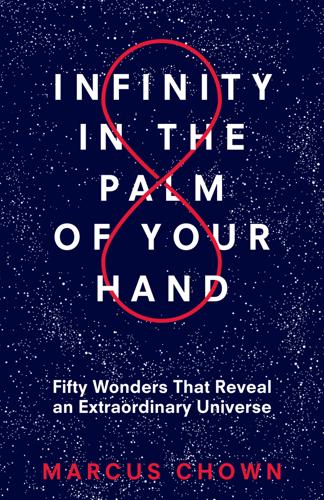
Infinity in the Palm of Your Hand: Fifty Wonders That Reveal an Extraordinary Universe
by
Marcus Chown
Published 22 Apr 2019
It was a Hasselblad Electric Data Camera, specially adapted from the motorized Hasselblad 500 EL.2 It used seventy-millimeter film and a polarizing filter. The astronauts carried the camera mounted on their chest. It had no viewfinder, and they had to guess what was visible through the lens. Before the Apollo 11 moon mission, Armstrong and Aldrin had each been given a camera to practice with at home. Nevertheless, the surface of the moon poses unique challenges for photography. Whereas on Earth sunlight is scattered by air molecules, softening its harshness and spreading it even into the shadows so they are not completely black, there is of course no air on the moon.
…
So, if the time of a flight of light from the earth to the moon is known, it is possible to deduce the distance of the moon by knowing the speed of light. The corner-cubes left on the lunar surface fly in the face of the conspiracy theorists’ claim that humans have never visited the moon. They were left by the manned American spacecraft Apollo 11, 14, and 15 and the unmanned Russian rovers Lunokhod 1 and 2. The Lunokhod 2 reflector works occasionally but the one on Lunokhod 1 was lost for almost forty years. However, relatively recently its landing site was imaged by the Lunar Reconnaissance Observer. The coordinates were then passed to scientists in New Mexico.
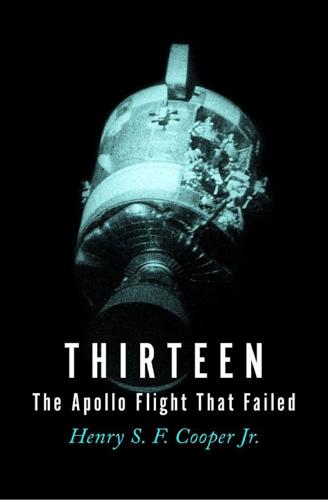
Thirteen: The Apollo Flight That Failed
by
Henry S. F. Cooper
Published 31 Dec 2013
However, as spacecraft began going all the way to the moon the number of ships had been reduced, on the theory that in the event of trouble there was more chance to guide a spacecraft to a specific landing site, fewer degrees of latitude on which to spread out the ships, and more time to dispatch a recovery force to meet it; airplanes could drop frogmen to open the capsule’s hatch at any point on earth in a matter of hours. No one seriously believed that a crippled spacecraft falling from the moon might need more than frogmen to meet it. By the time Apollo 11 made the first landing on the moon, the number of recovery sites had been cut down to four—what Recovery Officers called the Mid-Pacific Line, the West-Pacific Line, the Atlantic Ocean Line, and the Indian Ocean Line. By the time of Apollo 13, all four of these stations still existed in the minds of Recovery Officers, but only one of them, the Mid-Pacific Line, had any ships at it.
…
At the moment, it was moving so quickly that Haise felt as if he were in a jet plane taking off from a short runway; when he stole a glance out the window, the spacecraft seemed to be rising straight up from the moon. Immediately below, he could see Censorinus, a crater so sharp that it seemed the spacecraft might have just been ejected from it. To the west of Censorinus he could make out Tranquillity Base, where the Apollo 11 astronauts had landed nine months before. He couldn’t see the Fra Mauro hills, where he and Lovell had been supposed to land the next day, nor was he ever able to see the crater that Lovell and the other Apollo 8 astronauts had named for him. Brand’s voice came in over the crackling radio to report that the booster had hit the moon and made a crater that (on the basis of seismic data) was probably a hundred and twenty feet in diameter, but Haise couldn’t see that, either.
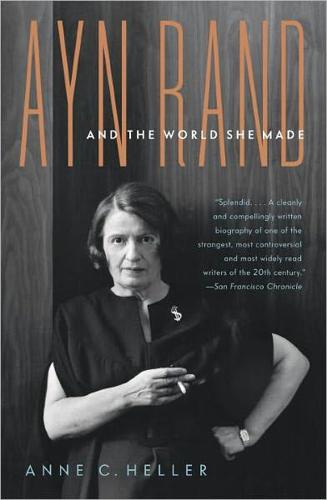
Ayn Rand and the World She Made
by
Anne C. Heller
Published 27 Oct 2009
“It is not coercion, not the physical force”: Rand seems to have forgotten, or overlooked, the fact that NASA had been formed by an act of Congress in 1958 in response to the Soviet Union’s successful, and, to Americans, shocking, launching of Sputnik I and II into space and the consequent fear that America had fallen behind in its technological battle with Russia. In 1960, NASA appointed former Nazi rocket scientist Wernher von Braun to lead the American effort to reach the Moon (Ayn Rand, “Apollo 11,” The Objectivist, September 1969, p. 709). a new diamond-and-ruby ring: 100 Voices, the Vaught family, pp. 414–21. On Rand’s return to New York: Taped, unpublished interview with Barbara Weiss, conducted by BB, September 23, 1983. “Those who suggest we substitute”: “Apollo 11,” p. 717. She spoke at the invitation of Colonel Herman Ivey: 100 Voices, Brigadier General Jack Capps, p. 496. The speech she gave: Philosophy: Who Needs It (New York: Bobbs-Merrill, 1982).
…
She almost surely encountered their work, both published and unpublished, in an underground network connected to one of her writers’ clubs. Aircraft always fascinated Rand, although until late in her life she was too fearful to fly in a plane. In Atlas Shrugged, Dagny Taggart and John Galt both fly solo through Colorado. In a 1969 essay, Rand described watching in “exaltation” as Apollo 11 streaked skyward from Cape Kennedy. And in “Philosophy: Who Needs It,” her famous speech to the 1974 senior class of West Point, she narrates a parable of an astronaut whose spaceship veers off course and crashes on a strange planet. The astronaut, who doesn’t understand his craft or its instruments, merely waits passively, hoping that something will intercede to save him, as aliens approach.
…
She continued to present her popular annual lectures at the Ford Hall Forum in Boston but accepted few other public engagements. There were memorable exceptions. In July 1969, Alan Greenspan, then a member of President Nixon’s Gates Commission on the draft, arranged for her to be present for NASA’s launch of Apollo 11 at Cape Kennedy, Florida, an event that for the first time placed men on the surface of the moon. She was thrilled by the sight of the powerful rocket lifting into the sky. “What we had seen, in naked essentials, was the concentrated abstraction of man’s greatness,” she wrote in The Objectivist.
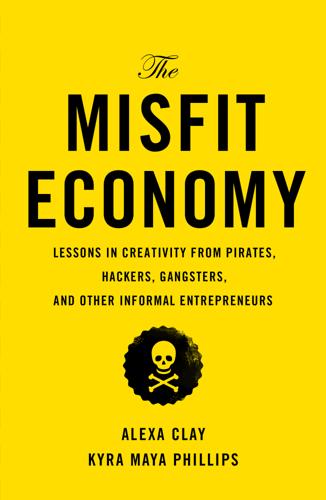
The Misfit Economy: Lessons in Creativity From Pirates, Hackers, Gangsters and Other Informal Entrepreneurs
by
Alexa Clay
and
Kyra Maya Phillips
Published 23 Jun 2015
The name comes from the recognition that certain stories serve as “hieroglyphs” or symbols—like Isaac Asimov’s robot—that activate the minds of engineers, entrepreneurs, and scientists around how an innovation can come to be. In other words, the platform fosters an appetite among innovators to bring science fiction “hieroglyphs” into reality. When astronaut Neil Armstrong returned from the moon as part of the Apollo 11 expedition, he referenced Verne’s novel in a television broadcast before reflecting on his own time in space. Without Poe and Verne creating the imaginative possibility of traveling to the moon, Armstrong might never have gone. In this way, art is a powerful tool in opening up our consciousness to new possibilities.
…
Aaron, Baillie, 62–63 Abdi (Somali pirate), 13 Abdul-Wahab, Walid, 7–10, 11, 72, 73–75 Accenture, 161–69, 202, 214 Accenture Development Partnerships (ADP), 166–68 Aera Energy, 90 Afweyne (“Big Mouth”) (Somali pirate), 14–15 Agency for International Development, U.S., 200 Airbnb, 65, 83, 124 airline industry, copying in, 84–85 Alando, 84 alien abduction, 187–92 Allen, Robert C., 88–89 Almighty Latin King Nation (ALKN), 170, 171 Al Qaeda, 124 Amazon Basin, 180–84, 200, 209 American Express, 85 Amish, 3–4, 6, 9, 74 Anderson, Sherwood, 212 Anonymous, 111, 112 Anti Hacker Toolkit, The, 109 Apollo 11, 149 Apple, 30, 64, 81 Apte, Mandar, 204–5, 206 Ariel School, 188 Armstrong, Neil, 149 Arreguín-Toft, Ivan, 123 Asimov, Isaac, 149 ASOS, 85 Asperger’s syndrome, 36 attention deficit disorder (ADD), 36 Austen, Jane, 143 autism, 36 camel milk and, 5, 74 automobile industry, 39, 40–43 copying in, 78–79 hacking of, 124 success of, 39, 41–42 Bachmann, Michel, 184 Bahadur, Jay, 28–29 Bali, 184 Balkans, 162, 165, 168, 169 bartering, 65 Battle of the Overpass, 40 Battlestar Galactica, 147 Beach, Sylvia, 212, 213 Beck Hansen’s Song Reader, 98 Beijing, China, 81 Ben & Jerry’s, 200, 201 Ben-Atar, Doron S., 79 Berdish, David, 40–43, 202, 205–6 Berlin, Germany, 83, 221 Bichlbaum, Andy, 153–55 Black Panthers, 173 Black Rock City, Nev., 156 blast furnace industry, 88 Bloomberg, Michael, 63 Body Shop, 201 Bonanno, Mike, 153, 154–55 Borderland, 156 Borenstein, Nathaniel, 92 Boston, Mass., 62, 80–81 Boston Globe, 80–81 Botsman, Rachel, 65 Boulevard Raspail, 213 Boulton, Matthew, 89 Bountra, Chas, 101–2, 204 Brand, Stewart, 141 Branson, Richard, 30, 31–32, 34 Brazil, 94, 95–96, 99, 181, 199–200, 215–16 Brazil House of Representatives, 95 Brooklyn Joe Painters, 61 Brown University, 180, 181 buccaneers, 118 Bulloch, Gib, 161–69, 179, 184, 192, 202, 214 Burning Man, 149, 156 BYD, 78, 79 Callimanopulos, Dominique, 188, 191 camel milk, 4–10 health benefits of, 5, 73–74 Middle East and, 5, 7–8 raw form of, 5, 6, 7, 9 retail business of, 7, 9 selling of, 6–7, 9 U.S. industry of, 5–7, 8, 9, 72, 74–75 camels, 4–5, 6 milking of, 3, 4, 6, 8 in United States, 7, 72–73 Camp Grounded, 185 Canada, 80 Cannes Film Festival, 152 capitalism, 56–57 Cartegena, William (“Lil Man”), 171 Carter, Troy, 90 Chanel, Coco, 143 Chicago, Ill., 131–33, 170 China, 77–79, 81–82, 102–3 cholera, 128 Chongqing, China, 81 Chungking Mansions, 82, 83 Church of Scientology, 111 “Cinco de Mayo” competition, 56 civic consciousness, 173–78 civil rights, 115, 176 Civil War, U.S., 73 Clay, Alexa, 197, 220 Clay, Jason, 197–203, 204, 210 Coachella, 156 Coca-Cola, 91, 198 Coffin, Alice, 152–53 Cohen, Ben, 200 Coleman, Gabriella, 111 collaborative consumption, 65 collaborative innovation, 86, 88–91, 93, 98–102, 105 Colton, Charles Caleb, 80 common councils, 119 community building, 67–72 Community Links, 66 Congress, U.S., 73, 113 contraception, 21 Coppola, Francis, 32 Copycats (Shenkar), 83–84 copying, 77–106 in airline industry, 84–85 in automobile industry, 78–79 benefits of, 85–87, 94, 98–102 of business models, 83–85 in China, 77–79, 81–82, 102–3 collaborative innovation and, 86, 98–102, 105 collective invention and, 88–91 downloading and, 96–98 etiquette of, 103, 105 innovation fostered by, 85, 94, 96–98, 105 intellectual property law and, 79, 80 intellectual property theft and, 77, 85, 93, 105 in music industry, 90 open-source and, 99, 102–3 patents and, 91–93 in pharmaceutical industry, 94–95 research and development and, 88–89, 91, 101–2 timing and, 102–5 see also counterfeit goods; shanzhai Copyleft, 100 Cornell University, 199 Cornwall, England, 89 corporate sabotage, 154 corporations, 39 innovation in, 167 patents and, 92, 93 Costa Rica, 180 counterfeit goods, 82 food as, 80–81 global trade of, 81 Coursera, 23 Cowan, Matt, 84 Creative Commons, 113 Crick, Francis, 86 Cruise, Tom, 111 Cuban, Mark, 91 Cultural Survival, 200, 201 Culture Club, 31 Cure Violence, 131–35, 207 Dallas Buyers Club, 8 Darwin, Charles, 86–87 Davis, Jefferson, 73 Defy Ventures, 55–56, 58, 60–62, 64, 207–8, 209 Demand Progress, 113 DemoHour, 102 de Pree, Maggie, 220 Dershowitz, Alan, 190 Desert Farms, 7, 9, 72, 74 development industry, 161–69 DHL, 67, 69 Dickens, Charles, 80 digital photography, 104–5 Diners Club, 85 Disney, 97 Doctorow, Cory, 149 “Does Entrepreneurship Pay?
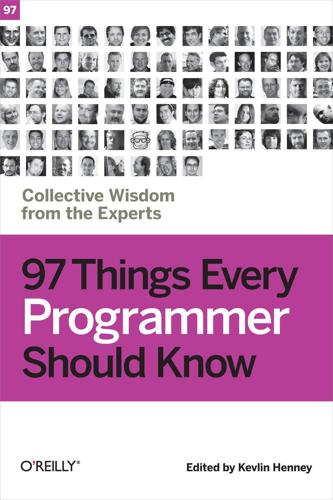
97 Things Every Programmer Should Know
by
Kevlin Henney
Published 5 Feb 2010
Two Wrongs Can Make a Right (and Are Difficult to Fix) Allan Kelly CODE NEVER LIES, BUT IT CAN CONTRADICT ITSELF. Some contradictions lead to those "How can that possibly work?" moments. In an interview,[12] the principal designer of the Apollo 11 Lunar Module software, Allan Klumpp, disclosed that the software controlling the engines contained a bug that should have made the lander unstable. However, another bug compensated for the first, and the software was used for both Apollo 11 and 12 Moon landings before either bug was found or fixed. Consider a function that returns a completion status. Imagine that it returns false when it should return true. Now imagine that the calling function neglects to check the return value.
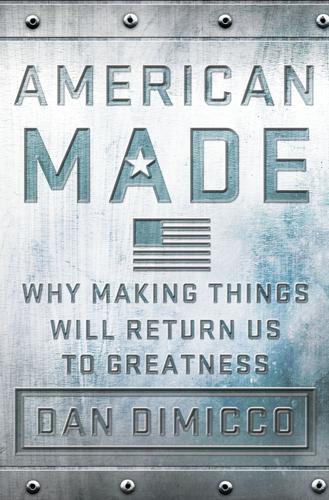
American Made: Why Making Things Will Return Us to Greatness
by
Dan Dimicco
Published 3 Mar 2015
Bankrupting America, September 28, 2010, http://www.bankruptingamerica.org/public-pulse-does-your-opinion-match-the-publics/#.VBM6TktFYpE. 4. “The American Recovery and Reinvestment Act,” Recovery.gov, http://www.recovery.gov/arra/Pages/default.aspx; “Apollo 11 Moon Landing: Ten Facts about Armstrong, Aldrin and Collins’ mission,” Telegraph, July 18, 2009, http://www.telegraph.co.uk/science/space/5852237/Apollo-11-Moon-landing-ten-facts-about-Armstrong-Aldrin-and-Collins-mission.html. 5. David Barboza, “Bridge Comes to San Francisco With a Made-in-China Label,” New York Times, June 25, 2011, http://www.nytimes.com/2011/06/26/business/global/26bridge.html?
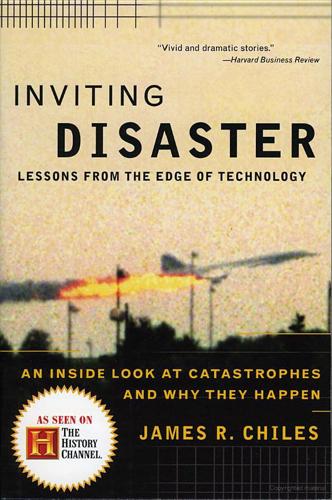
Inviting Disaster
by
James R. Chiles
Published 7 Jul 2008
America had promised to put a man on the moon before 1970. The first flight put two men there months before the deadline, with no apparent difficulty. America recovered so quickly from its moon fever that just a week after the Apollo 11 landing, an opinion poll showed a solid majority of Americans believing that NASA was getting too much money. At the time of the Apollo 11, a presidential panel headed by Vice President Spiro T. Agnew was finishing up work on a post-Apollo plan. The report came in September 1969: Given a reusable space shuttle and a space station, NASA could launch an atomic-powered Mars mission before 1986, maybe as soon as 1981.
…
Aberdeen Testing Center, 247 AeroPeru 757 Flight 603 airliner, crash of, 56, 310 Aerospatiale ATR-42 transport airplane, crash of, 254–55 Airbus airliners, 3, 255 Air France Concorde, crash of, 4–5, 312 Airship Guarantee Company, 69–70 Albin, Fred, 191–92 Alexander, Dick, 194–95 Aloha Airlines 737 airliner, blowout of upper fuselage skin of, 7, 307 Altair Engineering, 184–85 American Airlines, 120–21, 124 American Airlines DC-10 Flight 96 airliner, cargo-door blowout of, 117–18, 123, 125–28, 134, 248, 253, 286, 302 American Society of Mechanical Engineers, Boiler Code of the, 60 American Trans Air DC-10 airliner, oxygen canister fire on, 153 ammonium nitrate, 208, 215–22 in BASF factory explosion, 218–19, 298 in Texas City docks explosions, 216–17, 219–21, 299 ammonium perchlorate (AP), 136, 308 Anderson, Warren M., 260–61 Andersonville, prison at, 271 Ansoff, Igor, 4 Apollo 1, 142–50 casualties of, 142–43, 149, 301 construction of, 146–47 oxygen-enriched fire in command module of, 91, 111, 142–45, 147, 149–50, 188, 286, 288–89, 301 testing of, 147–49, 301 Apollo 7, 278 Apollo 10, 186 Apollo 11, 70 Apollo 12, 183 Apollo 13, 108, 179 fire in command module of, 188–89 liquid oxygen tank problem of, 143, 181–83, 185–90 overheating of oxygen tank in service module external bay of, 70, 143, 183, 187, 189, 302 thermostat problem of, 186–89, 302 training for near disasters on, 119–20 Apollo program, 92, 230 Atomic Energy Commission (AEC), 43–44, 101 AT-6 trainer airplanes, communication errors in, 243–44 Audi 5000 sedan, alleged sudden-acceleration problem of, 237–39 Aviation Safety Reporting System, 292 Babcock & Wilcox, 52, 54–55, 61, 119 Badische Anilin und Soda Fabrik (BASF), explosion at, 218–19, 298 Baldwin Hills Dam, collapse of, 190–91, 301 “Ballad of Casey Jones,” 257, 296 Banqiao and Shimantan Dams, failure of, 13, 277, 303 Barber, Jonathan, 275–76 barrage-balloons, flying airplanes into cables hung from, 208 Beauvais Cathedral, collapse of choir vaults of, 89 Beech Aircraft, 186 Bell, Arthur, 89–90 Belle Memphis, 270 Bell JetRanger helicopters, 223–24 Bell 206 medevac helicopter, crash of, 144 Benet, Stephen Vincent, 176 Berkun, Mitchell, 177–78 Bhopal disaster: casualties in, 259, 261, 263, 266–67, 306 cause of, 259–60, 263–68, 274, 306 release of toxic chemicals in, 166, 259–68, 274, 281, 286, 306 BHP Port Kembla Steelworks, damage caused by short circuit at, 141–42 Binks, Joe, 89–90 Black, Ken, 225–26 Black Sea port, explosion of fertilizer-carrying ship at, 221 Blandy, W.
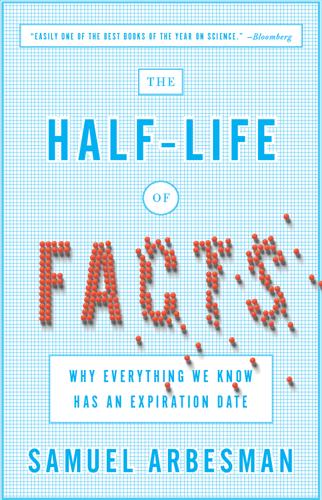
The Half-Life of Facts: Why Everything We Know Has an Expiration Date
by
Samuel Arbesman
Published 31 Aug 2012
But could this phase transition have been predicted as growing out of some underlying regular change? Yes. There were underlying quantifiable patterns occurring over the previous decade that would have allowed the prediction of this phase transition in humanity’s place in the solar system. Prior to Apollo 11, multiple unmanned and manned Apollo missions had been launched. Apollo 10 actually did everything but land on the Moon—it left the earth’s orbit, circled the moon, and returned home. It even came within fifteen kilometers of the moon’s surface. Despite what appears to be an abrupt transition in what we know, there was a steady progression of underlying changes that can explain the jump.
…
Nonetheless, the Gray Lady argued in an editorial that thinking that any sort of rocket could ever work in the vacuum of space is essentially foolishness and a blatant disregard for a high school understanding of physics. The editors even went into reasonable detail in order to debunk Goddard. Luckily, the Times was willing to print a correction. The only hitch: They printed it the day after Apollo 11’s launch in 1969. Three days before humans first walked on the moon, they recanted their editorial with this bit of understatement: Further investigation and experimentation have confirmed the findings of Isaac Newton in the 17th century and it is now definitely established that a rocket can function in a vacuum as well as in an atmosphere.

12 Bytes: How We Got Here. Where We Might Go Next
by
Jeanette Winterson
Published 15 Mar 2021
And then they got smaller and smaller and smaller, like something out of the genie world. So small that your iPhone 12 has 11.8 billion of them. * * * I think that needs a pause. 6 transistors on the 1957 Sony portable TR-63. 11.8 billion in your hand right now. * * * But in between then and now, quite a bit has happened – including the moon landing. In 1969 Apollo 11 landed on the moon. Michio Kaku, theoretical physicist and author, put it like this: ‘Today, your cell phone has more computer power than all of NASA back in 1969, when it placed two astronauts on the moon.’ That doesn’t mean your phone can fly you to the moon – but it is a useful comparison when thinking about the exponential increase in computing capacity in such a small amount of time
…
It was Grace Hopper who pulled a moth out of Harvard’s malfunctioning room-sized computer back in 1947 and who wrote in her notes, ‘First actual case of bug being found.’ And the first time a computer glitch was called a bug. The term ‘debugging’ soon followed. Women have a way with words. Margaret Hamilton, who headed the 350-person team that developed the software system for the Apollo 11 project, coined the term ‘software engineer’ to describe her work role. It hadn’t been described before because it hadn’t been done before. * * * Thanks to movies like Hidden Figures, the world is now more aware of the role played by women in the early years of computing, and crucially in the Space Programme.
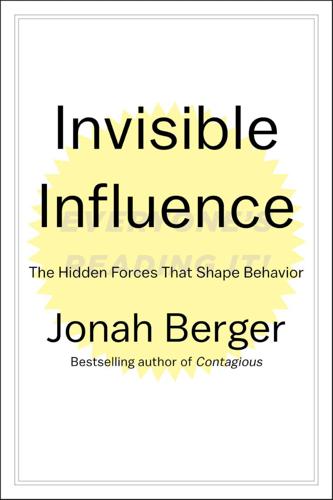
Invisible Influence: The Hidden Forces that Shape Behavior
by
Jonah Berger
Published 13 Jun 2016
More than one hundred thousand attendees come to view the industry’s latest and greatest innovations, from the newest Rolexes to breakthroughs in multifunction operability. In 2008, Baselworld visitors were treated to a special announcement. Renowned Swiss watchmaker Romain Jerome was releasing something unique. As part of its DNA of Famous Legends collection, Jerome had previously offered a Moon Dust–DNA watch made from fragments of the Apollo 11 and Soyuz space shuttles. Each watch dial featured tiny craters, filled with dust from actual moon rocks and the watch straps were made of fibers from spacesuits worn on the international space station. At more than $15,000, the Moon Dust watches were not cheap. But Romain Jerome’s new watch topped that by a hefty margin.
…
Abacus watch, 124 Abercrombie & Fitch, 101, 107, 108, 110 Academic performance birth order and, 66 race and, 16, 117–20, 141–42 “Acting white,” 117–20, 121, 141–42 Adoption studies, 68 Advertising signaling used in, 140 social class and, 94–95 African Americans, 117–20, 121, 141–42 Afunctionality, 124–27 Aguilera, Christina, 44 Ahrendts, Angela, 143–44 AIDS/HIV transmission, signaling and, 121 Allen, Ray, 207 Ants, social facilitation and, 189 Apollo 11 space shuttle (watches made from fragments of), 123 Apple, 97, 103, 184n, 185 Arpa, Yvan, 128 Art preferences, 16, 70–71, 72, 73 Asch, Solomon, 20, 22–24, 29, 58 Assortive mating, 31 Athletics. See Sports/athletics Audience effects, 189n Autokinetic effect, 21 Automobiles, 2–4, 15, 16 differentiation of, 83 introduction of, 182–83 logos on, 133 optimal distinction in, 177–79 signals conveyed by, 107–8, 122, 123, 144 similarity of, 156–57 social class and preferences in, 86–87, 90–91 Avis, 220 Babies mimicry in, 33 naming (see Names) perceived differences in, 16, 85 Baby One More Time (album), 43 Babysitters, ice cream preferences in, 103–4 Baseball, 204 Baselworld, 123–24 Basketball, 17, 204, 207–8, 214 Beckham, David, 127 Beer preferences, 71–72, 73 Beetle (Volkswagen), 157 Berra, Yogi, 73 Bicycles, single-speed or fixed gear, 125 Binge drinking, discouraging, 140–41 Birth order, 16, 64–70 Blockbusters, 42–55 music website experiment, 46–49, 52–53 parking preference experiment, 49–52, 53 quality and, 53–54 BMWs, 2–4, 83, 180 Bon Appétit, 94 Boredom, 167–69 Bottega Veneta, 134, 135 Bradlow, Eric, 150 Branding.
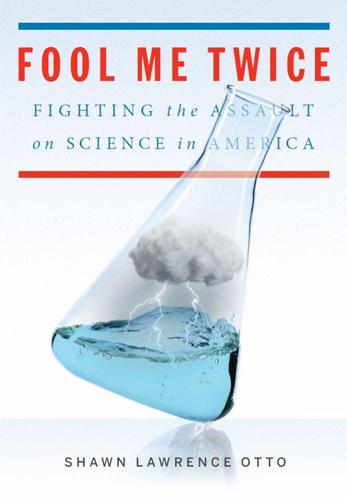
Fool Me Twice: Fighting the Assault on Science in America
by
Shawn Lawrence Otto
Published 10 Oct 2011
The Peanuts comic strip character Snoopy, a beagle, wore a spacesuit on the popular Snoopy the Astronaut pins and was the most popular cartoon character of the day—so much so that it became the symbol of the Apollo Program. The journey of Apollo 8 set up the nation for the incredible dramatic climax of Apollo 11 less than seven months later, when American astronauts would actually land and walk on the Moon, fulfilling Kennedy’s goal before the decade was out. But in the months leading up to the grandest of all human adventures, voices of concern began to be heard anew. Despite the incredible successes of the Apollo Program and the spiritual sense of wonder and moment its narrative generated, the growing distrust of the quasi-military organization and culture that NASA had adopted to get the job done recalled Eisenhower’s warning of eight years before.
…
The Reverend Ralph Abernathy, who had cofounded the Southern Christian Leadership Conference with the Reverend Dr. Martin Luther King Jr., carried on with King’s new focus on economic justice for the poor of all races after King’s assassination on April 4, 1968. In 1969, Aber-nathy led a national march against the Apollo 11 Moon launch, criticizing the incredible spending as an “inhuman priority”17 at a time when so much suffering existed in the nation. “One fifth of the population lacks adequate food, clothing, shelter, and medical care,”18 he argued. A society that can resolve to conquer space; to put man in a place where in ages past it was considered only God could reach; to appropriate vast billions; to systematically set about to discover the necessary scientific knowledge; that society deserves both acclaim and our contempt … acclaim for achievement and contempt for bizarre social values.
…
For though it has the capacity to meet extraordinary challenges, it has failed to use its ability to rid itself of the scourges of racism, poverty and war, all of which were brutally scarring the nation even as it mobilized for the assault on the solar system.19 NASA administrator Thomas O. Paine met with Abernathy on the eve of the Apollo 11 launch and eloquently said that if he could alleviate the suffering by not pressing the launch button he would, but that sending three men to the Moon was “child’s play” compared to “the tremendously difficult human problems” Abernathy and his people were concerned with.20 Incredibly, the exchange ended agreeably, with Abernathy agreeing to pray for the lives of the astronauts.
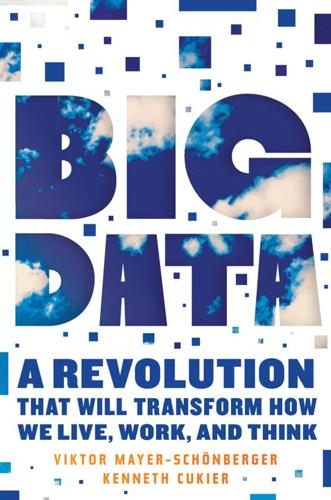
Big Data: A Revolution That Will Transform How We Live, Work, and Think
by
Viktor Mayer-Schonberger
and
Kenneth Cukier
Published 5 Mar 2013
Society has always been hobbled by the limitations of the tools we use to measure and know reality, from compass and sextant to telescope and radar to today’s GPS. Our tools may be twice or ten times or a thousand times as powerful tomorrow as they are today, making what we know now seem minuscule then. Our current big-data world will, before long, look as quaint as the four kilobytes of writeable memory in Apollo 11’s guidance control computer does now. What we are able to collect and process will always be just a tiny fraction of the information that exists in the world. It can only be a simulacrum of reality, like the shadows on the wall of Plato’s cave. Because we can never have perfect information, our predictions are inherently fallible.
…
.” [>] Big data’s use in slums and in modeling refugee movements—Nathan Eagle, “Big Data, Global Development, and Complex Systems,” http://www.youtube.com/watch?v=yaivtqlu7iM. Perception of time—Benedict Anderson, Imagined Communities (Verso, 2006). [>] “What’s past is prologue”—William Shakespeare, “The Tempest,” Act 2, Scene I. [>] CERN experiment and data storage—Cukier email exchange with CERN researchers, November 2012. Apollo 11’s computer system—David A. Mindell, Digital Apollo: Human and Machine in Spaceflight (MIT Press, 2008). Bibliography Alter, Alexandra. “Your E-Book Is Reading You.” Wall Street Journal, June 29, 2012 (http://online.wsj.com/article/SB10001424052702304870304577490950051438304.html). Anderson, Benedict.

The Globotics Upheaval: Globalisation, Robotics and the Future of Work
by
Richard Baldwin
Published 10 Jan 2019
Take computer processing speeds, for example: they are doubling every 18 months or so. The iPhone 6s, which came out in 2015, processes information about 120 million times faster than the mainframe computer that guided Apollo 11 to the moon in 1969. That is amazing. But it gets more amazing. The iPhone X, which came out in 2017, is about three times faster than the iPhone 6s. That means the increment in processing speed between 2015 and 2017 was 240 million times the speed of the Apollo 11 computer. Think about that. The increment in power in the two years after 2015 was twice as large as all the progress between 1969 and 2015. Twice as much progress in two years as there was in the 46 previous years.
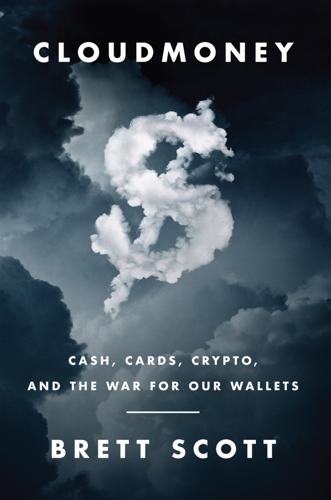
Cloudmoney: Cash, Cards, Crypto, and the War for Our Wallets
by
Brett Scott
Published 4 Jul 2022
It touts itself as a ‘privately funded lunar transportation and data services company establishing new avenues for commercial space activities beyond Earth’. Further on is a huge skeleton of a structure that once housed the USS Macon airship, and an old McDonald’s now serving as a centre for digitising photos of the 1969 moon landing. I look through its window and see Apollo 11 images above a disused burger grill, while F-16 fighter jets land behind me on Moffett airfield, part of which is leased from NASA by Google. Here too, in this sprawling compound, is the Singularity University campus, founded by space entrepreneur Peter Diamandis and Ray Kurzweil, Google’s prophet of the coming technological ‘Singularity’.
…
Aadhar system, 44, 97, 169 abacuses, 159 ‘Abracadabra’, 50 accelerators, 17 active choice, 125 Acxiom, 109 Adventures of a Banknote, The (Bridges), 65 Aesop, 45–6 AirBnB, 150 Alameda, California, 102 alcohol, 102, 118, 170 Alexa, 147, 150 Alibaba, 2, 7, 114, 150, 178 Alipay, 114 Alphabet, see Google alt-coins, 13, 217–18 Althusser, Louis, 86 Amazon, 1, 2, 7, 133, 147, 149, 150, 174, 177, 249–50 Alexa, 147, 150 anti-cash lobbying, 41–2, 254 CBDCs and, 243, 244 Coin, 236 Pay, 150 Amazon region, 130, 176, 247, 249 American Revolutionary War (1775–83), 60 Ames Research Center, 153 Amnesty International, 222 Amsterdam, Netherlands, 128–9 Amy, 147 anarchism, 7, 14, 106, 183, 191, 193, 215 anarcho-capitalism, 14, 184 Andes, 96, 129 anthropology, 124 anti-feminism, 226 anti-Semitism, 225, 262 anti-statism, 42, 184, 215–16 antidotes, 52–4 Apollo 11 mission (1969), 153 Apple, 7, 125 apps and, 141 Card, 150 data, 108 Pay, 78, 125, 130 Super Bowl advert (1984), 8 apps, 1, 2, 7, 17, 27, 40, 125, 139–51, 232 data collection, 165–6 interfaces, 139–51 ArcelorMittal, 24 Aria, 169 Armer, Paul, 105–6 Art of Not Being Governed, The (Scott), 228 artificial intelligence (AI), 8, 11, 17, 108, 114, 147, 153–72, 175, 252 biases, 167 credit-scoring, 17, 160, 162–3, 167, 168, 170 data analysis, 108, 153–72 interfaces, 146–8 Asimov, Isaac, 161, 170 Assange, Julian, 183 Assemblage, New York City, 226 Astana, Kazakhstan, 227–9 Athens, Greece, 131 ATMs (automatic teller machines), 32, 34, 35, 36, 39, 48, 61, 62, 248 CIT industry, 62 closure of, 32, 39, 48, 83, 84, 85, 132 crises and, 36, 244 note denominations, 62 profitability, 39 Atwood, Margaret, 117 austerity, 193 Australia, 118 Austria, 7, 109 authoritarianism, 111, 118, 168 automatic payments, 149 automation, 9, 10, 33, 41–2, 99, 123, 126, 133, 137, 142–3, 232 apps, 139–51, 232 artificial intelligence, 153–72 automation of, 153–4 surveillance, 112, 114, 153–72 aviaries, 171 Azure cloud, 233 Back to the Future (1985 film), 198 Baidu, 7, 178 Bangladesh, 32 Bank for International Settlements, 79 Bank Identification Codes (BIC), 76 Bank of America, 38, 75, 147 Bank of England, 40, 242, 243 banking sector, 38–9, 65–82 accounts, 31, 35, 46, 66, 132, 205–6 artificial intelligence, 153–72 ATMs, see ATMs bailouts, 113 centralisation of power, 15, 180–83 closures of ATMs/branches, 32, 39, 48, 83, 84, 85, 132 cloudmoney, 64, 66–82 data, 108–9, 156–7 deposits, 66–7, 69 electronic trading platforms, 158 exiting, 39, 48, 61, 63, 68, 83 federated frontline, 136–8, 147 high-street banks, 39–40, 158 interbank markets, 138, 231 interfaces, 138–51 international transfers, 74–6, 108, 179 Internet banking, 76–7, 139 investment banks, 6, 17, 22–3, 26, 113, 157–8 loans, 70–71, 107, 159 money creation, 59–63, 67–72, 202 operating system, 141–2 secondary system, 50, 63–4 sub-currencies, 72–3 transfers, 72–8 banknotes, 59–63 cash-in-transit companies, 62 counterfeiting of, 60–61 denominations, 62 polymer, 65 Bannon, Steve, 225, 234 Barclays, 38, 72–3, 116 base money, 69 beggars, 115 Better Than Cash Alliance, 34–5, 37, 45, 93, 96, 131 biases, 167 bicycles, 89, 90 Big Bouncers, 114, 170 Big Brother, 113–15 Big Butlers, 114, 170–71 Bill & Melinda Gates Foundation, 44–5 biometrics, 44, 150, 169 biotechnology, 10, 11 Bitcoin, 13–15, 16, 184–5, 187–210, 211–18 blockchain technology, 13–15, 185, 189–90, 195, 197–202 Cash fork (2017), 214, 217 climate change and, 226 as commodity, 206–10, 213–14, 217, 246, 256 countertradability, 209–10, 213, 256–7 decentralisation, 14, 15, 189–94, 196, 258 fixed supply, 191–3, 206 gold comparison, 192–3, 207, 214 millenarianism and, 212, 213 mining, 203–4, 212–13 politics and, 191–3, 211–12, 215–17 proof-of-work, 203–4 public addresses, 194–5 speculation on, 213 syncing, 195–7, 200–202, 231 techno-clerks, 194–5, 196–7, 202–4, 212–13 wallets, 194–5 White Paper (2008), 13, 184–5, 187, 191 Bitcoin Cash, 214–15, 217, 226 Bitcoin Gospel, The (2015 film), 211 Blade Runner 2049 (2017 film), 10 blockchain, 13–15, 185, 189–90, 195, 197–202, 219–26, 258–60 decentralisation, 14, 15, 189–94, 196, 230, 234, 255, 258–60 distributed ledger technology (DLT), 229–46, 258 mutual credit systems and, 260 blood diamonds, 222 Bloomberg, 109 Body of Glass (Piercy), 150 BP, 24, 26, 28 bread-making machine, 164 Bridges, Thomas, 65 British Airways, 29–30 British Bankers Association, 83 Brixton Market, London, 177 Bulgaria, 13 Bundesbank, 35, 47 bureaucracy, 179 Burning Man, 101 busking, 90–91 Buterin, Vitalik, 221, 223 California Ideology, 180 Camberwell, London, 128 Cambridge Symposium on Economic Crime, 111 Cambridge University, 97 Canada, 35 Canary Wharf, London, 17–18, 20, 41, 62, 211 cannabis, 101–3 capitalism, 2, 10, 47, 65, 98–9, 173–4 blockchain and, 15–16, 231–46, 256, 258 charging up, 22–5 core vs. periphery, 28, 248 giant parable, 54–5, 63–4, 188 growth, 123, 126–7, 249 surveillance, 33, 114, 180, 250 carbon credits, 222 CARE, 131 cargo cults, 255–6 Caritas, 131 carnivals, 257 cars, 87–90 cash, 22, 29–48 banking sector and, see banking sector banknotes, 59–63 central banks and, 42–5, 254 crime and, 36, 42–3, 45, 81, 112 crises and, 36, 61 cycle, 63, 68 demonetisations, 43 fintech industry and, 41–2 hoarding, 36 issuance of, 59–63 libertarians and, 215 payments companies and, 39–41 refusal of, 29–30, 40, 41, 43, 84, 128, 133 social class and, 91–9 tax evasion and, 42, 43, 45, 46 thresholds, 42 transactional usage, 36 cash-in-transit companies, 62 ‘cash or card?’
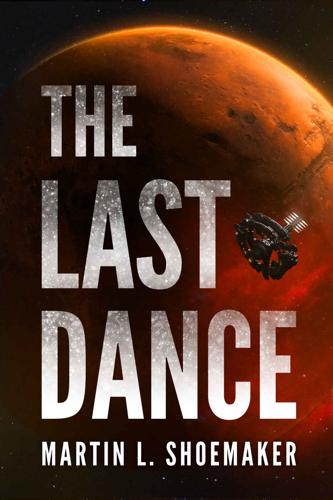
The Last Dance
by
Martin L. Shoemaker
Published 2 Nov 2019
This prototype will only make one loop before it goes in for redesign; but they’re already working on her sister ship, the Aldrin, and that one will be a giant express train from nowhere to nowhere, never stopping. What kind of captain worthy of the title would want duty like that when there are worlds to explore? —Captain Nicolau Aames THE ALDRIN CYCLER FOREWORD BY MARIANNE J. DYSON The Aldrin Express derives its name from Buzz Aldrin, whom most people know as the Apollo 11 astronaut who walked on the moon alongside Neil Armstrong in 1969. Not as many people know that Aldrin was the first astronaut with a PhD (from MIT), and his doctoral thesis was “Guidance for Manned Orbital Rendezvous.” NASA selected him because of this expertise. The other astronauts soon nicknamed him “Dr.
…
I expect our five-month trip to Mars will literally fly by as we continue to discuss and explore a wondrous future in space. Marianne Dyson is an award-winning author and a former NASA flight controller (the topic of her memoir, A Passion for Space). Her recent children’s books include Welcome to Mars: Making a Home on the Red Planet and To the Moon and Back: My Apollo 11 Adventure coauthored with Buzz Aldrin. See www.mdyson.com for more information. A NOTE ON RANKS IN THE SYSTEM INITIATIVE Many of the characters in this book serve in different branches of the International Space Corps chartered under the System Initiative, a future international space program built from the preexisting programs of the member nations.
…
Johnson, couldn’t make the trip from Australia to accept his award at the International Space Development Conference; so he asked if I would attend in his place and read his speech. I eagerly accepted, of course. That is how I found myself having lunch with a number of professionals in the space business, including Apollo 11 astronaut Buzz Aldrin. I managed not to embarrass myself during lunch, and later I went to Colonel Aldrin’s talk about his unique plan for Mars exploration. I still remember the brief story note I wrote that day: “Something aboard a Mars cycler.” So without Bill and Michelle and the Baen Memorial and Rich Johnson, and especially without Buzz Aldrin, this book would not exist.

Accessory to War: The Unspoken Alliance Between Astrophysics and the Military
by
Neil Degrasse Tyson
and
Avis Lang
Published 10 Sep 2018
Also unlike China and India, their military expenditures, according to the Stockholm International Peace Research Institute, constitute less than 3 percent of government spending, compared with China’s 6 percent and India’s 9 percent—not to mention the even greater military expenditures by the two traditional space superpowers, the United States (more than 9 percent of government spending, but 36 percent of global military spending) and Russia (15 percent of government spending).55 For decades before the Canadian Space Agency was established in 1990, Canada had partnered with other countries on space initiatives, especially with the United States. Among the many early partnerships were an Ontario-built storable communications antenna used during the pioneering US manned flights in 1961–62 and Québec-built landing legs for Apollo 11’s lunar module, the vessel that safely landed Neil Armstrong and Buzz Aldrin on the Moon in 1969. Canada was the third country to build its own satellite and the first country to have its own communications satellite in geostationary orbit. More recently, Canada has made high-profile robotics contributions to the US space shuttle and the International Space Station.
…
A similar dissatisfaction with the back-burnering of science is evident in an impassioned, frustrated resignation letter from Donald U. Wise, chief scientist and deputy director of the Apollo Lunar Exploration Office, sent to NASA Associate Administrator Homer Newell in August 1969, just one month after Apollo 11 returned safely to Earth: I came to the Agency because the scientific advisory boards to NASA on which I sat seemed to have little influence on the manned lunar program. After working inside the system to give science a more effective voice, I became convinced that the system was equally refractory to internal scientific advice. . . .
…
Abbe, Ernst, 132, 133 Abrahamson, James A., 250, 251 accelerators, 28–29 accretion, 384 ACES (Atomic Clock Ensemble in Space), 339 ACES (Atomic Clock with Enhanced Stability), 339 achromatic lens, 130, 132 Active Denial/Silent Guardian System, 201, 470–71n Adams, Evangeline, 55 adaptive optics, 154–56, 300, 457n Adaptive Optics for Astronomical Telescopes (Hardy), 156 Advanced KH-11 satellites, 205–6, 343 Advanced LIGO, 461n Advanced Research Projects Agency (ARPA), 181, 216, 222, 270, 490–91n AEHF (Advanced Extremely High Frequency), 354 aerospace industry consolidation after end of Cold War, 11, 411n contracts with NASA, 21 military-space-industrial complex, 161 missile defense–related campaign contributions, 12, 411–12n prosperity after September 11, 2001, 11 aerospace workforce, 21, 22, 27 AFCRL Infrared Sky Survey, 221–22 Africa circumnavigation by ancient sailors, 72–73, 78, 434n early migrations of humans from, 64, 430n travels of the Portuguese, 81 agonic line, 94 Airborne Laser Laboratory, 156 Air Force Space Command in Colorado Springs, 16, 341 contracts with aerospace corporations, 21 control of GPS system, 158, 337 space systems in Gulf War, 331 space war and cyberwar, 235–36, 274, 324–25 Alaska, and harbor creation by H-bombs, 285, 499n albedo, 196–97, 207 Aldebaran, 73 Aldrin, Buzz, 353 Alexander, Edward Porter, 123, 124, 127, 447–48n Alexander the Great, 78 All Quiet on the Western Front, 387 al-Ma’arri, 434n Almagest (Ptolemy), 50 Alnilam, 67 aluminum, 194, 195, 469n, 528n Alvan Clark & Sons, 130, 450n see also Clark, Alvan Amalfi, Italy, 76 American Academy of Arts and Sciences, 112, 247 American Astronomical Society, 7, 149, 155, 378, 463n American Civil Liberties Union National Security Project, 13, 413n American empire, 34–36 American Philosophical Society, 112 American Science and Engineering (AS&E), 225–27 American Security Council, 304, 505n American Security Project, 13 American Sign Language, 446–47n America Retectio, 436n Ampère, André-Marie, 220 Anaximander, 70 ancient astronomy constellations and zodiac, 41 development of, 38–39 eclipses, 44–49 monuments and stoneworks, 41–42 records and predictions of events, 42–45 time measurement units, 39–41 see also astrology Andromeda galaxy, 234 Andropov, Yuri, 258 Anti-Ballistic Missile Treaty (1972), 12, 250, 287, 293, 502n antibiotic resistance, 14 Antikythera Mechanism, 44–45, 422–23n antiwar movements, 8, 10, 410n Apache helicopters, 332 apochromatic lens, 132 Apollo 1 disaster, 291 Apollo 8 mission, 289 Apollo 11 mission, 353, 369 Apollo–Soyuz Test Project, 357, 521n Arago, François, 142–43, 456n Archimedes, 45, 46, 47, 423n Area 51, 197 Arecibo Observatory, 181–82 Arianespace, 363 Aristarchus, 440n Aristotle, 101, 169 Arkhipov, Vasili, 497n Armageddon (movie), 255 armillary spheres, 44, 80, 101, 436n Armstrong, Neil, 353 Arte de Navegar, 80 Art of War (Sun Tzu), 238 ASATs (antisatellite weapons), 257–59, 283, 291, 294, 356, 485n Ashurnasirpal II, 33–34, 420n Assyrian empire, 33–34 asteroids deflection of, 253–55, 256, 484n formation, 384, 385 impacts on Earth, 234, 253, 483n mining of, 385–86 near-Earth objects (NEOs), 253–54, 255, 256 potentially hazardous asteroids (PHAs), 190, 253 radar tracking of, 184, 190 rare earth metals in, 385 astrolabes, 38, 74, 80, 82, 84, 339 astrology about, 49–51, 424–25nn almanacs and periodicals, 57, 426n Henry the Navigator’s horoscope, 79 in India, 54 “lunar cycle effect,” 56 in Nazi Germany, 57–63, 427–28nn, 429nn opposition to, 51–52, 58–59, 425n reliance on in wartime, 52, 425n, 429n stock market and, 55–56 in the United States, 53–54 Vedic astrology, 54 see also ancient astronomy astronomical photography, early history, 143–44, 456n astronomical unit (AU), 440n Astrophysical Journal, 149, 217 astrophysicists antiwar sentiments, 9 collaboration and recent discoveries, 398–400, 404 employment opportunities, 22–23 as lateral thinkers, 150 telescope design and, 101–2, 133 tools and technology used, 149 astrophysics alliance forged with military, 36–37, 150–52, 386 analysis of light and images, 149–50, 151–52, 176, 196, 198–99 and Cold-War science priorities, 29 electromagnetic spectrum and, 176 photography and, 140, 141–44 spectroscopy and, 140, 144–48 spending for vs. military spending, 403–4, 533nn Atacama Desert, 200 Atacama Large Millimeter/submillimeter Array (ALMA), 183, 200, 201, 231 atmosphere transmission of electromagnetic radiation, 199–200, 214, 225 twinkling of stars and, 152–54, 300 water hole, 200–201, 470n atomic bombs, 151, 190, 263, 303, 457n, 474n atomic clocks, 333, 339 Atomic Energy Commission (AEC), 216, 285, 402, 497n, 532n Atoms for Peace, 287, 498–99n AT&T (American Telephone and Telegraph Company), 128, 177–78, 501n Augustine (saint), 51 Australia early presence of modern humans, 64, 430n exploration and colonization, 92 James Cook and, 92 as penal colony, 92 space program, 32 Square Kilometre Array, 183 Azores, 80, 94, 439n Babel-17 (Delaney), 260 Babylonians, 40, 41, 42 Bacon, Francis, 52 Bacon, Roger, 106–7, 162 BAE Systems, 412n Bahcall, John, 7 balance of terror, 285, 497–98n Ball Aerospace and Technologies, 16 BAMBI (Ballistic Missile Boost Intercepts), 271, 278 Barnard’s Star, 344 Barr and Stroud Ltd, 136, 137 Battle of Copenhagen, 115–16 Bausch and Lomb Optical Company, 139, 140, 450n Bay of Pigs, Cuba, 284 Bechtel, 11 Behaim, Martin, 87, 436n Beidou system, 337 Bell, Alexander Graham, 128 Bell Labs (Bell Telephone Laboratories), 178–79, 288, 501n Berkowski, Johann Julius Friedrich, 144 Berlin blockade, 266, 303 Berlin Wall, fall of, 11, 29, 358, 374 B-52 bombers, 332 Big Dipper, 67, 432n Bikini Atoll nuclear bomb tests, 402–3 Bilmes, Linda, 416n bin Laden, Osama, 12, 206, 349 binoculars, 109, 125, 128, 132, 139, 451n Biot, Jean-Baptiste, 456n birds, as clue for wayfinders, 65, 430–31n Blackwater USA, 11, 25 Blanton, Thomas, 497n blending camouflage, 172 blinding, 174–75 Blue Origin, 300 Boeing campaign contributions, 412n in Colorado Springs, 16 prosperity after September 11, 2001, 11, 12 Russian rocket joint ventures, 363, 371 weapons manufactured by, 18, 20 Bolden, Charles, 376 Bonaparte, Napoleon, 115, 122, 130, 447n Bond, William Cranch, 144 Book of Calculation (Fibonacci), 77 Book of Useful Information on the Principles and Rules of Navigation, 67 Borghese, Scipione, 104 Bourdieu, Pierre, 92 Bourne, William, 107 Bowen, Alan, 47–48 Brahe, Tycho, 49 Brahma, 40 Brazil, 81, 310, 431n, 444n, 518n Brilliant Pebbles, 250, 271 British Mariner’s Guide (Maskelyne), 94 Broadmoor Hotel and Resort, 16, 17, 24, 26 Broder, John M., 250 bronze, 44, 69, 422n, 432n Browne, Malcolm, 334–35, 336 Brown, Louis, 185, 187, 190, 464n, 465n, 467n Brunhübner, Fritz, 62–63 B-2 stealth bombers, 198, 303, 470n Buchheim, Robert W., 248, 481–82n Buckland, Michael, 454n Bulganin, Nikolai, 277 Bulletin of the Atomic Scientists, 310–11 Bull Run, First Battle of, 124, 448n, 449n Bunsen, Robert, 147 Burbidge, Margaret and Geoffrey, 402 Burns, Dean, 306 Burrows, William E., 80, 206, 270, 357, 362, 366, 468n Bush, George H.
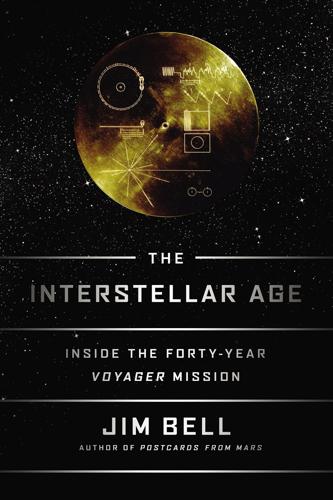
The Interstellar Age: Inside the Forty-Year Voyager Mission
by
Jim Bell
Published 24 Feb 2015
Even the JPL Deep Space Network team got in on the game, increasing the sensitivity of their receivers to deal with Voyager 2’s weaker and weaker radio signals as the spacecraft sped farther away, and adding the capability to communicate with Voyager 2 from the Parkes Radio Telescope in Australia (the one made famous by successfully broadcasting Neil Armstrong and Buzz Aldrin’s Apollo 11 lunar landing live to the world in 1969) during the most critical part of the Uranus flyby—which would be best visible from the Australian DSN stations. As Ed Stone wrote in one of the early scientific papers describing the Voyager 2 results at Uranus, “That all of this worked so well testifies to the high level of expertise and the spirit of teamwork within the Voyager project and supporting organizations.”
…
I have listed these folks among the Acknowledgments because I am truly grateful for their time and patience! Chapter 1. Voyagers the privilege of walking on another world: To be the hit of the party sometime (at least, the kinds of parties I go to . . .), memorize and then recite all twelve of their names! In order of their missions (Apollos 11–12, 14–17): Neil Armstrong and Edwin “Buzz” Aldrin; Pete Conrad and Alan Bean; Alan Shepard and Edgar Mitchell; James Irwin and David Scott; Charles Duke and John Young; and Harrison “Jack” Schmitt and Gene Cernan. so cute with their long necks and bulging eyes!: Does “cuteness” matter in space exploration?
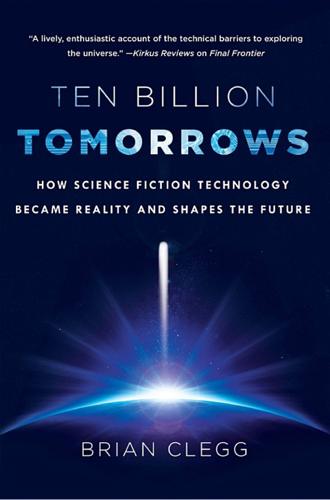
Ten Billion Tomorrows: How Science Fiction Technology Became Reality and Shapes the Future
by
Brian Clegg
Published 8 Dec 2015
In the next chapter we look at a voyage that was too far for the 25–40,000-kilometer (16–25,000 mile) range of the fictional Star Trek transporter, but is still a backyard trip in terms of exploring space. This is the 380,000 kilometer (230,000 mile) journey to the Moon. 13. DESTINATION MOON One of the biggest thrills of my teenage life was being allowed to stay up all night to watch the Apollo 11 Moon landing (the first time I’d ever spent a whole night without going to bed). And something was very clear to me, back then on that long 1969 night. I would be going to the Moon too. Not soon, but before I died. I was realistic. I didn’t expect it to be soon, because I never saw myself as an astronaut.
…
Once suitable equipment has got out there—and initially this would have to be shipped from Earth at great expense—many of the raw materials needed for a colony are available on the surface. But not everything. The obvious missing essential is water. As we have seen, it was assumed at one time that the dark patches on the Moon’s surfaces were oceans, and as we have seen, they were named as such. Mare Tranquillitatis, where Apollo 11 landed—is the Sea of Tranquility. But it turns out that the relatively dark areas are vast pools of solidified ancient lava. (In fact, all the Moon is a mix of shades of dark gray—it only looks bright because, lit by the Sun, it is so intense in contrast to the night sky.) The hostile climate of the Moon means that any surface liquid water would be rapidly lost, boiling away into the vacuum.
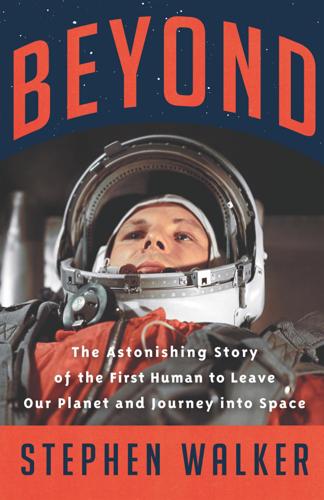
Beyond: The Astonishing Story of the First Human to Leave Our Planet and Journey Into Space
by
Stephen Walker
Published 12 Apr 2021
As well as the Smithsonian example, another Ivan, wearing a spacesuit and strapped to his cosmonaut couch, exists at the Baikonur Cosmodrome Museum, complete with a sign claiming that this Ivan flew on March 25, 1961, and that it was donated to the museum by Korolev himself. As so often with the early Soviet space programme, the truth can be frustratingly elusive, even after sixty years. One only hopes that Perot got the right one. Wernher von Braun’s career reached its astonishing apogee with the Apollo 11 moon landing in 1969. The Saturn V rocket that he and his team designed and built at the Marshall Space Flight Center in Huntsville performed superbly – unlike its Soviet counterpart, the very slightly smaller N-1, which failed spectacularly on all four of its test launches, thus destroying any Soviet hopes of putting a Russian on the moon.
…
Sidey was in the White House cabinet room when the president made this statement ‘Can we leapfrog’: This and other quotations in this meeting from Sidey John F. Kennedy 118–21 ten times as much as the bomb: The wartime Manhattan Project’s estimated cost was $2 billion or approximately $29 billion in 2021. Webb’s higher-end estimate of $40 billion was substantially too high. The Apollo programme cost approximately $25.4 billion (Forbes Apollo 11’s 50th Anniversary: The Facts and Figures July 20, 2019) The bombing began within hours . . . on April 15: SW is indebted to Rasenberger Brilliant Disaster, a fascinating recent account of the Bay of Pigs operation ‘the least covert military operation’: Salinger With Kennedy 147 ‘provide the Cuban people’: Sergei Khrushchev Nikita Khrushchev 435–6 114 Cuban fighters: Rasenberger Brilliant Disaster xiv ‘the grimmest I can remember’ and other quotations: Salinger With Kennedy 147 ‘in the most emotional, self-critical state’: Logsdon John F.
…
Able (monkey) 113 Agaltsov, Colonel General Filipp 362 Agitprop (Department of Propaganda and Agitation, USSR) 365 Akimova, Klavdia 277–8 Albert, Project 111–12, 115 Alekseyev, Semyon 190 Alfa (dog) 10, 11, 12, 14, 15, 168, 299 Anfuso, Vincent 383 Antares lunar module 404 A.P.O. (Avariynyy Podryv Obyekta) (‘Emergency Object Destruction’) (Vostok on-board bomb/device) 11–12, 13, 14–15, 167, 169, 209–10, 226, 234, 257 Apollo programme 25, 74, 189, 198, 350, 396–7, 399–400, 403–4, 407; Apollo 1 189; Apollo 11 407; Apollo 13 74; Apollo 14 404 Armstrong, Neil 417 Army Ballistic Missile Agency, Huntsville, US 56, 59 Atlas rocket 59, 68, 148 Augerson, William 127 Aviation Week 114, 141, 143, 151 Baikonur Cosmodrome Museum, Kazakhstan 407, 416 Balanina, Maria (mother of Sergei Korolev) 92 Barbree, Jay 54–5, 69, 73, 134, 137, 146, 163, 330, 401 Barmin, Vladimir 176, 182 Barnes, Donald 113 Bay of Pigs (1961) 215–18, 255, 376, 397–9, 401 Belka (dog) 10–11, 23, 69–71, 115, 152, 166, 181, 406–7 Bell, David 199, 395, 396 Berle, Adolph 217 Berlin Wall 411 B.F.
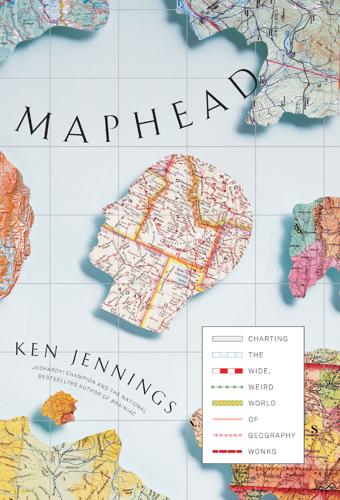
Maphead: Charting the Wide, Weird World of Geography Wonks
by
Ken Jennings
Published 19 Sep 2011
There was the 1944 invasion at Normandy, which succeeded only because of the unheralded contribution of mapmakers who had stolen across the English Channel by night for months before D-Day and mapped the French beaches.* Even the moon landing was a product of mapping. In 1961, the United States Geological Survey founded a Branch of Astrogeology, which spent a decade painstakingly assembling moon maps to plan the Apollo missions. The Apollo 11 crew pored over pouches of those maps as their capsule approached the lunar surface, much as Columbus did during his voyage. It seems that the greatest achievements in human history have all been made possible by the science of cartography. The Library of Congress has had maps in its collection since its founding under President John Adams; in fact, the library’s very first shipment of books, purchased in London in 1801, included three maps and an atlas.
…
CHAPTER 4: BENCHMARKS 56 “This information”: Barry Lopez, “The Mappist,” in Light Action in the Caribbean (New York: Knopf, 2000), p. 159. 58 “River of Doubt”: This ill-fated expedition—the only time, as far as I know, that a U.S. president has defeated flesh-eating bacteria—is fascinatingly detailed in Candice Millard, The River of Doubt: Theodore Roosevelt’s Darkest Journey (New York: Anchor, 2006). 59 Zelig-like role: The Snow and Normandy maps, among many others, can be seen in Jeremy Harwood, To the Ends of the Earth: 100 Maps That Changed the World (Newton Abbot, Devon: Davis & Charles, 2006). 59 The Apollo 11 crew pored: John Noble Wilford, The Mapmakers (New York: Vintage, 2000), p. 427. 59 the library’s very first shipment: Ralph E. Ehrenberg, Library of Congress Geography and Maps: An Illustrated Guide (Washington, D.C.: Library of Congress, 1996). 60 “cover for small detachments”: Mark Monmonier, How to Lie with Maps (Chicago: University of Chicago Press, 1996), p. 127. 60 783 feet by 383 feet: James R.
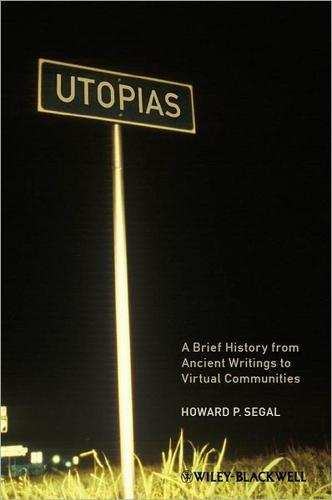
Utopias: A Brief History From Ancient Writings to Virtual Communities
by
Howard P. Segal
Published 20 May 2012
Some cynics dismissed this as a public relations stunt to deflect growing opposition to the Iraq War. And that same administration ended the space shuttle mission. Meanwhile, the fortieth anniversary in 2009 of the first moon landing did generate some enthusiasm for future space travel to Mars and for space colonies. The Apollo 11 crew was honored by President Barack Obama, among others, even as he eliminated a program to return Americans to the moon by 2020 and proposed ending all manned space missions unless funded by the private sector. He did, however, continue his predecessor’s plans for a new American spaceship, the Orion, that could be used for deep space exploration far from the earth.3 The ever-expanding list of products either generated or designed outright by NASA is promoted in, among other places, Spinoff, a journal of commercialized NASA science and technology.
…
Most important, though, was the pre-industrial vision of the founder of Indian independence, Mohandas Gandhi (1869–1948), whose commitment to a Hindu golden age constituted his vision for modern India. Gandhi wished to keep small communities, but less class- and casteridden communities than in his day, as the principal form of Indian life and culture. He stressed simplicity and collective self-sufficiency.82 Notes 1 See Nelson Hernandez, Washington Post, “As NASA Marks Anniversary of Apollo 11, It Looks to Future,” Boston Sunday Globe, July 19, 2009, A10; and Carolyn Y. Johnson, “JFK Had Doubts About Moon Landing,” Boston Globe, May 25, 2011, B1, B4. 2 See Constance Penley, NASA/TREK: Popular Science and Sex in America (New York: Verso, 1997). 3 See Louis Friedman, “NASA’s Down-to-Earth Woes,” Bangor Daily News, March 24, 2010, A5; Joshua Green, “Takeoff: With the Shuttle Program Ending Next Year, What Will Be the New Face of NASA?”

Bold: How to Go Big, Create Wealth and Impact the World
by
Peter H. Diamandis
and
Steven Kotler
Published 3 Feb 2015
Over the years, I’ve developed a series of strategies for tackling these kinds of challenges, none more important than birthing projects above the line of super-credibility. As will become clearer later, getting above that line requires a deep passion. Mine emerged in 1969. I was only eight years old when Apollo 11 landed on the moon, and I decided then and there that going into space was what I wanted to do with my life. I was in my early twenties when I realized NASA was never going to get me there. Constrained by government spending and frightened by the risk of failure, the space agency had become a military-industrial jobs program unlikely to return to the Moon or push onward to Mars.
…
Death.”45 In his widely circulated essay “Google Wins Everything,” Internet entrepreneur and blogger Jason Calacanis puts it this way: “If you work for Larry and are not thinking 10x, don’t expect to keep your job for very long. That insanity-by-design is creating a one-upmanship that hasn’t been seen in the history of mankind. Larry’s campaign, if successful, will make Caesar, Napoleon, Columbus, the Wright Brothers, the Apollo 11 Mission, the Manhattan Project, and our Founding Fathers look limited in scope.”46 PART THREE THE BOLD CROWD * * * CHAPTER SEVEN Crowdsourcing Marketplace of the Rising Billion * * * It’s the fall of 2000. There are now more than 20 million websites on the Internet.1 The browser wars (AOL versus Netscape) are in full swing.

The Last Stargazers: The Enduring Story of Astronomy's Vanishing Explorers
by
Emily Levesque
Published 3 Aug 2020
• • • Preventing people from even using cell phones in the presence of radio telescopes may seem extreme, but radio astronomy can be particularly vulnerable to spurious signals, and separating the commonplace from the cosmic in these telescopes’ data is no easy task. The 210-foot Parkes Radio Telescope sits in a rural sheep paddock about 225 miles west of Sydney, Australia. The largest telescope in the Southern Hemisphere, it briefly became famous when it received and broadcast footage of the 1969 Apollo 11 lunar landing to the world, but it has also mapped the hydrogen gas of the Milky Way and discovered thousands of new galaxies. For years, Parkes also detected funny flashes known as perytons. Named for a mythological creature with a winged stag body that cast the shadow of a human—a creature that looked like one thing but turned out to be something else—the perytons appeared in the Parkes telescope data as brief blasts of radio light.
…
Eventually, they were all but arm-wrestling the thing to get it to turn and then digging it out of the lunar dust to relevel it after each move, taking up valuable time and oxygen. Still, the telescope was deemed a success, and George later went on to launch a similar ultraviolet telescope for use aboard one of the Skylab missions in the 1970s. The moon landings did offer us one additional bonus bit of astronomy. During Apollo 11, Neil Armstrong and Buzz Aldrin placed a special mirror on the lunar surface, designed to reflect lasers shot at the moon by telescopes. This means that by bouncing lasers off these mirrors, astronomers can directly measure the distance between the earth and moon to within a few millimeters; we learned from this that the moon is actually spiraling away from us at a rate of 3.8 centimeters per year.
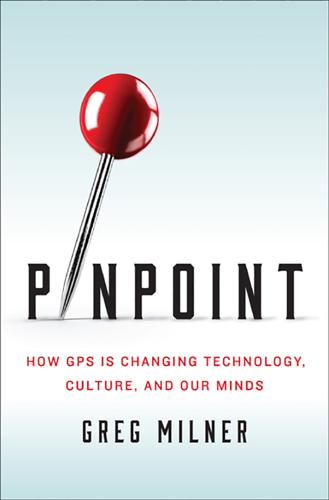
Pinpoint: How GPS Is Changing Our World
by
Greg Milner
Published 4 May 2016
This was a low-level quest, overshadowed by the giddy reach for the stars that characterized the Apollo missions. While so much of the world turned its gaze upward, dreaming of extending humanity’s reach into outer space, these scientists trained their sights on the ground underneath their feet, hoping to reveal the planet’s innermost secrets. In August 1969, less than a month after Apollo 11’s historic landing on the moon, sixty-five geophysicists gathered at Williams College, in Massachusetts, for a meeting convened by NASA to discuss the need for improved techniques to measure positioning, velocity, and acceleration of points on the earth’s surface. The report produced by this meeting—The Terrestrial Environment: Solid-Earth and Ocean Physics, known today as the Williamstown Report—addressed the problem in the one-world rhetoric used by the nascent modern environmental movement (the first international Earth Day was less than a year away): “The planet earth is the only home for the human race for at least several centuries to come. . . .
…
United States, 178 Khomeini, Ayatollah, 84 Kind and Usual Punishment (Mitford), 177 Kitchin, Rob, 118 Kittredge Hall, 31 KLM Airlines, 229 Kon-Tiki, 12 Korean Air Lines Boeing 747, 81–82, 140 Korean War, 89 Korzybski, Alfred, 117–18 Kosovo, Serbian aggression in, 71 Kremlin, 75 Krull, Jay Dee, 126 Kuipers, Benjamin, 123–24 Kuwait, Iraqi invasion of, 62–63, 96 Kuwait City, 63 Kwajalein Atoll, xiv L1, 76, 91, 97–98 L2, 91, 92, 97–98 LaGuardia Airport, 170 Lake, Philip, 206 Lamarck, Chevalier de, 27 Lamarr, Hedy, 54 Landers, Calif., 215 land surveying, 245–51 modern history of, 248–51, 254–55 triangulation used in, 245–49, 251–54 Lang, John, 12 Laos, 51 Larson, Kristine, 217, 228–29 Last, David, 166–67 Las Vegas, Nev., 111, 135, 175 Laufenberg, 158 Leary, Timothy, 172–73, 174 Leclerc, George-Louis, 204 Levine, Judah, 154–55, 166 Lewis, David, 11–14, 18–22 Liang, Sam, 193–94, 200 Libya, 60–61 Lichten, Stephen, 261 Life, 210, 251 light, 156 speed of, xix, 40 Linz, 239–40 Livermore, Calif., 142–43 Locata company, 164, 165–66 London, xv, 25, 44, 55, 67 cab and bus drivers in, 133 Earl’s Court, 156 Hammersmith borough, 156 Long Island, N.Y., 243 LORAN (long-range radio navigation), 27, 37, 76, 81, 166 Loran-C, 76, 81, 85, 86, 157 Los Alamos National Laboratory, 146 Los Angeles, Calif., 141, 202, 203, 210 Northridge earthquake in, 215 Los Angeles Air Force Base, 53, 58 Louisiana, 69 Louisville, Ky., 143 Love, Jack, 194–95 Lowe, Fritz, 233 Machiavelli, Niccolò, 7 machine guns, 49 Macrometers, 213 Madrid, 192 Magellan, Ferdinand, 6, 7 Magellan GPS units, 111–12, 135, 136–37 Magellan Navigation, Inc., 89–90, 96, 98, 100, 126 Magnavox, 55–56, 58, 77, 78–79, 93 magnetic resonance imaging (MRI), 133 Maine, 249 Maloof, Matt, 42 Malys, Steve, 255–56 Mandalay, 251 Manpacks, 92–94, 95 maps, 127, 252–55 city, 130 cognitive, 115–20, 128, 130, 132, 133, 238 comprehensive, 116, 117–18, 128 computer, 241 digital, 122 downloading of, 126 hastily sketched, 124 moving, 122, 123 Pacific Ocean, 10, 13, 14, 263–64 reading and interpreting of, 126 reality, 117–18 strip, 116, 118, 128 territories vs., 117–18 see also Google Maps marine biology, 15 Marine Corps, U.S., 46 Mark, David, 124, 125 Marquesas, 4, 9, 265 Mars, 20 atmosphere on, 258, 262 exploration of, 258–62 Mars Climate orbiter, 259 Marseille, 263 Marshall Islands, 251, 265 Mars Odyssey mission, 259–60 Mars Polar Lander, 259 Mars rovers, 203, 258–59 Mars Science Laboratory, 258, 262 Marston, Glenn, 237 Martin Company, 34 Martinez, Bob, 196 Martínez de Zúñiga, Joaquín, 12 Martin-Mur, Tomas, 258 Maryland, 30, 44, 188 Maskelyne, Nigel, 26 Massachusetts, 184, 208 Massachusetts Institute of Technology (MIT), 48, 209–10, 212–14, 246 MIT Media Lab, 239 mathematics, 205, 246, 255 “Mau,” see Piailug, Pius McClure, Frank, 37–38, 39 McDonald, Larry, 82 McDonald’s, 123 McGranaghan, Matthew, 124, 125 McHugh, Tom, 142 McNamara, Timothy, 131–32 McNeff, Jules, 47, 97, 99 Meades Ranch, 249 Mediterranean Sea, 113–14 Melanesia, 11 Melville, Herman, ix memory, human, 125, 128–29, 130, 237, 238 memory, solid-state, 126 Memphis, Tenn., 143 Mercator, Gerardus, 240 meteorology, 15, 27–28, 204, 227–28 GPS-enabled, 228 methamphetamine, 179 Mexico, 31, 161, 249 microchips, 87 Micronesia, 265 microprocessors, 79, 84 microwaves, 36–37, 41, 78 Milky Way, 257 Minitrack, 30–32, 35, 39, 57 Minnesota, 155 missiles, 47, 209, 250 Atlas ballistic, 43 CALCM, 69 cruise, 62, 69 guided, 37, 62 Hellfire, 66 long-range, 69–70 nuclear, 62, 69 Russian, 81 Scud, 66 tracking of, 37 Missouri, 71, 89 Missouri, USS, 48 Mitchell, Donald, 88 Mitford, Jessica, 177 Mitre, 139 Moby-Dick (Melville), ix modems, 195 Mojave Desert, 215, 259 Molyneaux, Robert, 9 Monaco, 168 Mona Lisa (Leonardo), 99 moon, 24, 26, 252 craters on, 210 landing of Apollo 11 on, 208 landing of Apollo 15 on, 210 moon rover, 210 Moorman, Thomas, 68 Moscow, 251 Moser, Edvard, 129 Moser, May-Britt, 129 Mosul, 69 Mountain City, Nev., 112, 135, 136 MTSAT Satellite Augmentation System (MSAS), 142 Murray, Sara, 197–98 napalm, 51 National Academy of Science, 31, 256 National Aeronautics and Space Administration (NASA), 212, 257 Ames Research Center of, 96 Apollo missions of, 208, 210 Communications, Tracking, and Radar Division of, 261 Jet Propulsion Laboratory (JPL) of, 203, 210, 213, 214, 222, 231–32, 258, 261 Mars program of, 258–62 space shuttle program of, 61, 88 National Geospatial-Intelligence Agency (NGA), 255–56, 261 see also Defense Mapping Agency National Institute of Standards and Technology (NIST), 154–55, 166 National Oceanic and Atmospheric Administration, Earth System Research Laboratory of, 227 National Research Council, 99–100 National Space Policy, 101, 144 Naval Academy, 48 Naval Observatory, U.S., 44, 155 Master Clock at, xv, 154 Naverus, 139 navigation, 6–22, 48, 119–20 Carolinian, 18–21, 118 of carriages, 120 commercial shipping, 38 determining routes in, 17 Doppler-aided, 36–38, 40, 43, 44, 51, 259 estimating distance, speed and time in, 16–17, 19, 22–26, 31, 39, 40, 130 etak compared to, 18–19 experiments in, 127–29 home-centering vs. self-centering systems of, 17, 20, 21–22, 27 improving skills of, 133 inertial, 48, 82 local-reference system of, 17, 20, 21, 22 loss of environmental engagement in, 119, 129, 134 modern technologies of, 27 orientation in, 130–33 passive ranging in, 40–42, 44, 45, 53, 101–2 Polynesian, 6, 8–18 space, 30–45 by sun and stars, 4, 6, 7, 9, 13, 14, 15, 18, 19, 20, 86 tools of, 5, 6, 13, 25, 26–27, 38–39 see also GPS auto navigation units NAVSPASUR (Navy Space Surveillance System), 39–40 Navstar Global Positioning System, 54 Navy, U.S., 37, 40, 42, 46, 56, 251 Naval Research Laboratory (NRL) of, 29, 30, 31, 39, 42–43, 47, 57, 252 Ordnance Bureau of, 38 Navy Navigation Satellite System, 38 Navy Seals, 93 Nellis, Mike, 195, 197, 283 nervous system, 118 Netherlands, 166 neurological pathologies, 118 neutrinos, 155–56 Nevada, 111 Newark Liberty International Airport, 170, 171–72, 181–82 GPS jamming incident at, 200–201, 283–84 Newell, Homer, 29, 35 New England Datum, 249 New Guinea, 4, 86 New Haven, Conn., 184 New Jersey, 170–72, 249 New Jersey Turnpike, 170–71, 172, 181–82, 200, 281 New Mexico, 44, 146, 151 New Mexico penitentiary, 195 New Orleans, La., 192, 249 Newton, Isaac, 246 New York, N.Y., xv, 81, 164, 239–40, 245, 251 Coney Island, 249 distinguishing uptown from downtown in, 17 Greenwich Village, 17 Kips Bay, 236 Manhattan, 236 Queens, 243 Staten Island, 220 Times Square, 167 traffic patterns in, 192 transportation in, 17, 145, 192 World Trade Center in, 17, 170 New York City Marathon, 220–21 New York Herald Tribune, 34 New York Stock Exchange (NYSE), 34 New York Times, 173 New York Times Magazine, 86 New York World-Telegram and Sun, 35 New Zealand, 4, 12 NextGen, 142 NextNav company, 192 Nighthawk stealth aircraft, 66 NIMCOS company, 195 Nimer, Richard, 195 Nixon, Richard M., 51 North America, 25, 142, 215, 230, 242, 250, 254 electrical grid of, 158, 160 North American Aerospace Defense Command (NORAD), xiii North American Datum of 1927 (NAD27), 249–51 North Atlantic Treaty Organization (NATO), 71 North Korea, 166 North Stradbroke Island, Australia, 113 North Vietnam, bombing of, 51, 70 Norway, 251 NTS-2 satellite, 58–59 nuclear waste, 146 Oakland, Calif., 203 Obama, Barack, 255 oceanography, 15, 38 oceans: positional awareness on, 24–27 shipwrecks on, 26 see also specific oceans Odishaw, Hugh, 29 odometers, 120, 121, 243 Oetting, Valerie, 90 O’Hare Airport, 141 Ohio, 158, 164 Ohio State University, Mapping and Charting Research Laboratory of, 250–51 O’Keefe, John, 129, 252 Omega, 27 Omnitracs system, 182 Operation Allied Force, 71 Operation Desert Storm, see Gulf War Operation Eagle Claw, 77 Operation El Dorado Canyon, 61–62 Oregon, 111, 112, 202, 225 Origin of Continents and Oceans, The (Wegener), 205, 206 O-rings, 92–93 ornithology, 15 Oro worship, 7–8 Ortelius, Abraham, 204 Orwell, George, 177 oscillators, 41, 43, 77 oscilloscopes, 59, 79 Owens Valley, 214 Pace, Scott, 46, 68, 97–98 Pacific Ocean, xiv, 18–20, 26, 106–8, 122, 183, 218, 221–22, 229, 249 canoe travel on, 5, 9, 11, 14–15, 18–19, 264, 268 currents and winds of, 13, 14–15 exploration of, 4–10, 26, 27, 106–7 first detailed map of, 7 islands of, 4–13, 22, 27, 106–8, 251 maps of, 10, 13, 14, 263–64 ring of fire in, 221, 229 seismic disturbances in, 202 shipping charts of, 27 swell patterns of, 13, 14 Pacific Plate, 208 Pacific Rim, 4, 12 Palatucci, Joe, 242–43 Palo Alto, Calif., 77 Pangea, 3–4, 205 Pangea Ultima, 3 Papeete, 265 Paris, xv, 24, 154, 155, 167, 246 Eiffel Tower in, 167 Park Avenue Audio, 236–38 Parkinson, Brad, 45, 48, 50, 52–54, 56–58, 60–61, 65, 70, 81, 100, 140, 153, 165–66, 185, 230, 250, 272 particle accelerators, xix Pasadena, Calif., 203, 226 passive positioning systems, satellite-based, 40 passive ranging, 40–42, 44, 45, 53, 101–2 Pattabiraman, Ganesh, 192–93 Pave Low III helicopters, 65–66 PCM signals, 156 Pearl Harbor, bombing of, 34 Penn Station (New York City), 237 Penticton, 111 peregrine falcons, 237 Permanent GPS Geodetic Array, 214, 215 Permilab particle physics facility, 155 Persian Gulf, 63, 96 Peru, 12 Peterson Air Force Base, xiii Phasor measurement units (PMU), 159–61 Philippines, 12 photogrammetry, 251 photography, 235–39, 243 physics, 15, 28, 155, 204 Piailug, Pius “Mau,” 265–66 Picard, Jean, 245–46 pigeons, 174 PlaceMe, 193 planets, 24–27, 259 Plate Boundary Observatory, 215, 218 plates, tectonic, 215, 253, 258 continental, 207–8 movement of, 3–4, 202–8, 209, 214, 216, 232, 255 North American, 208, 221, 222 oceanic, 207, 208 Okhotsk, 221n Pacific, 208, 215, 221 Philippine Sea, 221 Point Arena, Calif., 249 Poland, 244 Polaris nuclear submarines, 37 police, 178–79, 181–82 British, 187–88, 197–98 German, 185–87 Irish, 187–88 Polynesia, 18, 21, 106, 264 Polynesians, 4–18 migration of, 11, 12–13, 21, 106, 264, 268 navigation of, 6, 8–18 origins of, 12 Polynesian Triangle, 264 Pong (video game), 121 Port Elizabeth, N.J., 170 Portis, Charles, 3 Precision Market Insights, 192 prime meridian, 25 prisons, 195, 197 privacy, xx, 177, 186–87, 190–91, 192–94, 200 Probation (magazine), 177 Project Moonbeam, 31 Project Moonwatch, 31 Project Vanguard, 29–35, 252 Pro Tech company, 196 proximity beacons, 121 psilocybin, 173 psychology, 116–18, 119, 131–32, 172–77 experiments in, 125, 127–29, 173–77, 277 psychotherapy, 173 Puea, 8 Pueblo, Colo., 75 Pullen, Sam, 181 Pyrenees Mountains, 246 Qihoo 360, 153 quadrants, 13 Qualcomm, 182 quasars, 209, 257, 261 radar, 27, 51, 66–67, 122, 142, 168, 229 GPS-assisted, 67 radiation, 43, 214, 258 radioactive materials, 146, 207 radio signals, xviii, 27, 30–31, 39, 54, 71, 91, 138, 171, 195 of celestial objects, 209 ham, 31 software vs. hardware components of, 149 transmission of, 210 Ra’iatea, 7, 9, 106 range measuring, 40 Rapa Nui, 4 rat experiments, 115–17, 118–19, 129, 133 Rea, Don, 90 Reagan, Ronald, 82, 140 Receiver Autonomous Integrity Monitoring (RAIM), 139–40 Red Army, 250 Red Army Faction, 185 Redoubt, Mount, 229–30 Regensburg, 49 Rehnquist, William, 180 relativity, xix, 267 Remote Oceania, 4 Resolution, HMS, 106–7 Rhodes, 168 Richmond Times, 34 Ring of Fire, 4 Rio Grande Valley, 40 Riyadh, 63–64 rockets, 28–29, 32–35 failure of, 33–35 Rockwell Collins, 58–60, 72, 78–79, 92, 93, 97 Rocky Mountains, 73 Rome, 55, 158–59, 164 Rosen, Milt, 252 Rotuma, 10 route discs, 120 Royal Institute of Navigation, 166 Royal Observatory, 25, 44 Royal Society, 7 Russia, xvii, 144, 166 Russian space agency, 88 Rutan 76 Voyager aircraft, 126 Saarbrücken, 127 Sahul, 4 Saigon, 64 St.

Augmented: Life in the Smart Lane
by
Brett King
Published 5 May 2016
We also know that Chinese, Indian, European and US satellites have since taken photographs of the Apollo landing sites on the moon, showing ample proof that Armstrong and co. did irrefutably walk on the moon. Eight missions in all made it to the moon—Apollo 10 and 13 orbited the moon but did not land—but of the six missions that made it to the moon (i.e., landed), more than 840 pounds of moon rock, soil and core samples (just 48.5 pounds of that material came from the Apollo 11 mission) were collected. For those who ask why we haven’t returned to the moon, the answer is simple. The Apollo programme was an undertaking of massive proportions involving at its peak 4.4 per cent of the US federal budget, the equivalent of around US$200 billion in 2015. Less than a decade after the final Apollo mission, the US space agency’s budget had shrunk to less than 1 per cent, and today less than US$7 billion a year is spent on flight programmes by the National Aeronautics and Space Administration (NASA).
…
He ran a profiling algorithm over its social and media presence and mentions and tried a correlation with its hiring and patent releases to see if its momentum was backed up by a growing team. The results were promising so he asked Alexa to monitor chatter from the venture community and search traffic in respect to the company, and report back in a week. He then settled back and put his glasses into VR mode, dimming the house lights so that he could try out his new Apollo 11 simulator. Later, his PAI gently pinged him. His readings: 6,000 calories burned for the day, including 42 splat points (minutes in which his heart rate was above 83 per cent of his maximum heart rate). In a few days, he had a Master’s track meet with Santa Monica Track Club and was on track to run a sub-six minute mile for the 44th year in a row.
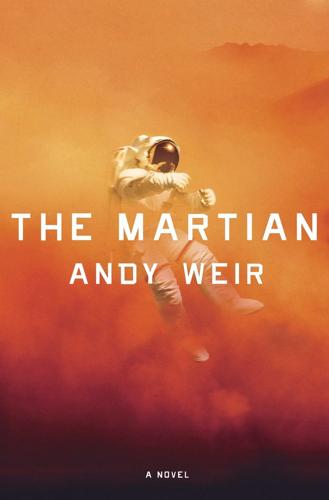
The Martian
by
Andy Weir
Published 1 Jan 2011
They’re sad that they lost a crewmate, but they’d be devastated if they found out they’d abandoned him alive.” Annie looked to Venkat. “You’re on board with this?” “It’s a no-brainer,” Venkat said. “Let ’em deal with that emotional trauma when they’re not flying a spaceship around.” “This’ll be the most talked-about event since Apollo 11,” Annie said. “How will you keep it from them?” Teddy shrugged. “Easy. We control all communication with them.” “Fuck,” Annie said, opening her laptop. “When do you want to go public?” “What’s your take?” he asked. “Mmm,” Annie said. “We can hold the pics for twenty-four hours before we’re required to release them.
…
“I’ll oversee the launch, then hand cruise and landing over to Venkat’s guys.” “Media?” Teddy said, turning to Annie. “I’m giving daily updates to the press,” she said, leaning back in her chair. “Everyone knows Watney’s fucked if this doesn’t work. The public hasn’t been this engaged in ship construction since Apollo 11. CNN’s The Watney Report has been the number one show in its time slot for the past two weeks.” “The attention is good,” Teddy said. “It’ll help get us emergency funding from Congress.” He looked up to a man standing near the entrance. “Maurice, thanks for flying out on short notice.” Maurice nodded.

Pure Invention: How Japan's Pop Culture Conquered the World
by
Matt Alt
Published 14 Apr 2020
In fact, the story is more nuanced: The engineer Kozo Ohsone, who is generally credited as the head of the Walkman development effort, spoke about this at length to Seiji Munakata, “Kanrishitsu no Bakko de Sonii Kara Hitto ga Kieta” (“Too Many Managers Are Why Sony’s Hits Dried Up”), Nikkei Business, May 30, 2016, https://business.nikkei.com/atcl/interview/16/031800001/052700007/. See also Yasuo Kuroki, Uookuman Kakutatakaeri (Walkman Struggles) (Tokyo: Chikuma Shobo, 1990), 46. Apollo astronauts: David Kamp, “Music on the Moon: Meet Mickey Kapp, Master of Apollo 11’s Astro-Mixtapes,” Vanity Fair, December 14, 2018, https://www.vanityfair.com/hollywood/2018/12/mickey-kapp-apollo-11-astro-mixtapes. This caused a great deal of consternation: Morita, Made in Japan, 79–80. anything you put in your ears to hear with: Nathan, Sony, 154. Perhaps this was true abroad, too: Life, October 24, 1960, 43. Today, headphones represent a ten-billion-dollar-a-year industry: Grand View Research, “Earphones & Headphones Market Size, Share & Trends Analysis Report by Product,” June 2019, https://www.grandviewresearch.com/industry-analysis/earphone-and-headphone-market.
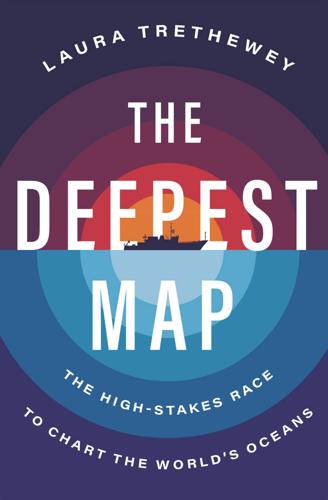
The Deepest Map
by
Laura Trethewey
Published 15 May 2023
In interviews conducted thirty years after his death, she still spoke of Bruce as though he were sitting there beside her: “Now Bruce could give you some more profound observations than I could,” she said in one characteristic aside, still deferring to her longtime boss.85 Marie often struggled to support her work drafting new maps of the seafloor. No matter how popular the Tharp-Heezen maps of the seafloor became, they were eclipsed by the Space Race, the mania for all things moon shot that climaxed in 1969 when Apollo 11 landed on the moon. The world had moved on to a new frontier, and public investment in ocean mapping had dwindled. Near the end of her life, Marie began to gain more recognition for her work, and she welcomed curious historians, journalists, and writers into her living room. Despite the tragedies and setbacks, she sounded upbeat in those last interviews, thankful for what she had achieved.
…
abyssal plains, 17–18, 84, 86, 193, 201, 208 Abyssal Zone, 51, 233 Advisory Committee on Undersea Features (ACUF), 112–13 Ahiarmiut people, 138–39 Albert I, Prince of Monaco, 55–56, 61, 166 Alfred Wegener Institute, Bremerhaven, 73, 168–69 Allen, Paul, 8, 12 Allseas, 206, 216 Amazon, 240–41 Americas migration theories of, 177–81 myth of empty America, 203 Amundsen, Roald, 10, 146 Angel Falls, Venezuela, 18 Anowtalik, Mary, 139 Antarctica, 240–41 Antarctic Treaty, 93, 241 antisubmarine warfare, 56, 70, 83, 124–25 Apalachee people, 179–80 Apollo 11, 91 Aqqiumavvik Society, 134–35, 141, 144, 147 Archimède (submersible), 45 Arctic Ocean climate change and, 131–33, 136, 137–38, 146–47 depth of, 130 maps of, 88, 126, 128–29, 132, 135, 137, 144–46 Molloy Hole of, 14, 17, 130, 233 uncharted island in, 168 weather window for diving in, 21, 22–23 Arviat, Nunavut, Canada, 129, 130–35, 136, 137–44, 147, 149, 155 astronomy, 73–74 Atlantic Ocean.
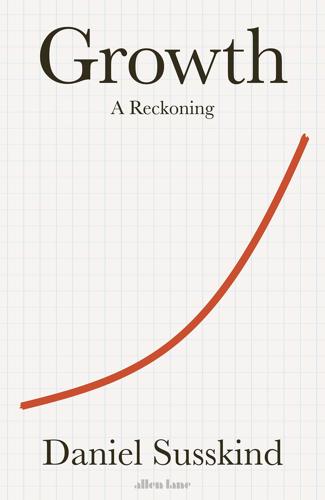
Growth: A Reckoning
by
Daniel Susskind
Published 16 Apr 2024
‘When an aggressive part of the world is strong and quite successfully committed to rapid growth,’ wrote Domar, ‘the other can disregard this objective only if it is tired of its own existence as a society.’75 That is an important reason why, in the middle of the twentieth century, political leaders stopped asking ‘How big is our economic pie?’ and instead began to ask ‘How can we make our economic pie as big as it can be?’ Today, some wryly say that the Apollo 11 moon landing was the greatest achievement of the Soviets, for if it were not for the pressure they imposed on the Americans the latter would not have been so determined to attempt it. Along the same lines, I would say that the greatest achievement of the Soviets was, in fact, the Western world’s pursuit of growth, for if it were not for the pressure they imposed on the Americans the latter would not have been so determined to take up the task.
…
, Nasdaq, 21 June 2021, www.nasdaq.com/articles/which-companies-spend-the-most-in-research-and-development-rd-2021-06-21. 41 www.gov.uk/government/news/allocations-announced-for-record-level-25-billion-rd-budget#:~:text=UKRI%20’s%20Research%20%26%20Development%20budget,agenda%20through%20its%209%20councils. 42 Gruber and Johnson, quoted in ‘The Case for More State Spending on R&D’, The Economist, 16 January 2021. 43 ‘The Case for More State Spending on R&D. 44 ‘The Case for More State Spending on R&D’ chuvpilo.medium.com/whos-ahead-in-ai-research-in-2020-2009da5cd799. 45 Tim Fernholz, ‘NASA Has Always Needed Private Companies to Go to the Moon’, QZ, 24 June 2021. 46 These examples are from Alex Knapp, ‘Apollo 11’s 50th Anniversary: The Facts and Figures Behind the $152 Billion Moon Landing’, Forbes, 20 July 2019. 47 See Mariana Mazzucato, The Entrepreneurial State (London: Anthem Press, 2013) and Mariana Mazzucato, ‘It’s a Myth that Entrepreneurs Drive New Technology’, Slate, 1 September 2013. 48 www.census.gov/library/stories/2021/12/net-international-migration-at-lowest-levels-in-decades.html. 49 Stuart Anderson, ‘Immigrants and Billion-Dollar Companies’, National Foundation for American Policy Brief (2018); ‘Tech Immigrants: A Map of Silicon Valley’s Imported Talent’, Bloomberg, 6 June 2014. 50 Thanks to @scienceisstrat1 for a terrific Twitter thread capturing these statistics.
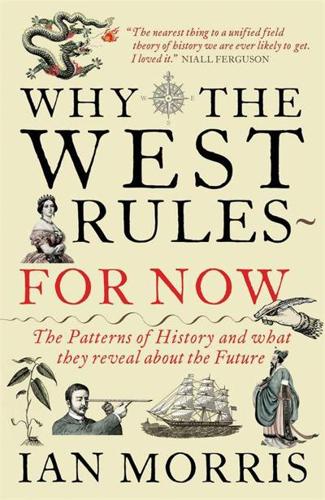
Why the West Rules--For Now: The Patterns of History, and What They Reveal About the Future
by
Ian Morris
Published 11 Oct 2010
Index Abelard, Peter, 370–71 Abraham, 351 Abu Hureyra (Syria), 90–91, 94, 97, 104, 122 Achaemenids, 249 Acheulean hand axes, 47–50 Act of Union (Britain, 1707), 472n Adam, African, 71 Adams, Thomas, 618 Adrianople, battle of, 313 Aeneas, 241, 244 Afghanistan, 249, 271, 604 Soviet invasion of, 548 African-Americans, 71 Agassiz, Louis, 91 agriculture, see farming Ahhiyawa, 197–98, 218 Ahuramazda, 249, 269 Ai, Marquis, 233 AIDS, 536, 603 ‘Ain Ghazal (Jordan), 100, 102, 124 ‘Ain Mallaha (Israel), 86, 88, 91, 94, 96, 100 Ainu, 450 Akaiwasha people, 218 Akhenaten, Pharaoh, 261–62 Akkadian Empire (Mesopotamia), 189, 192–94, 209 Albert, Prince, 6, 9–11, 14, 18, 19, 32, 36 Alberti, Leon Battista, 419, 420n Aleutian Islands, 421 Alexander of Macedon (the Great), 186–87, 268–71, 275, 292 Alexandria (Egypt), 352 Allen, Paul, 542 ‘Ali, 357, 358, 361, 444 al-Qaeda, 605 Altamira (Spain), 73–75, 74, 79–80 Alvarez Cabral, Pedro, 430 Amarna (Egypt), 197, 215 America, 160, 428, 482, 486, 519–20, 564 diseases in, 295 European colonization of, 19, 460, 462–67 farming in, 117–18 Ice Age in, 64, 65, 68, 75, 81, 91 native peoples of, 19, 109, 119, 430, 450, 464, 522 oil in, 511 prehistoric, 80, 84–85 Vikings in, 371, 421; see also United States American Journal of Human Genetics, 111 American Revolution, 260, 488, 490 Amorites, 191, 192, 194, 209, 353 Analects (Confucius), 256 Anatolia, 197, 199, 200, 225, 233n, 250, 311, 352, 366, 372, 401, 444 Anban (China), 125, 126 ancestor cults, 102, 231 Andun, King, 273 Anglo-Saxons, 346 Angola, 535 An Lushan, 355, 356, 375, 424 anti-Semitism, 514 Antonina, 345, 346 Antony, 283, 284 Anyang (China), 212–15, 220–22, 229 Apocalypse Now! (film), 520n Apollo 11, 182 Apollo 11 Cave (Namibia), 77 Apple computers, 542 Aquinas, Thomas, 371 Arabia, 16, 67, 275, 349 Arabs, 349–52, 360, 362, 370, 377, 427, 566 in China, 342, 407n, 478 lands conquered by, 33n, 350, 352–54, 356–57, 365, 367, 445, 563–64 modern, 535, 548 technologies of, 395–96 Arameans, 218, 220 Archaeology (magazine), 125 Arctic Dryas, 92 Argentina, 464 Arikamedu (India), 274, 275 Aristides, 280 Aristotle, 260, 268, 324, 370, 468, 537 Arkwright, Richard, 496 Armenia, 328 Army, U.S., 537, 539, 618 War College, 615 Around the World in Eighty Days (Verne), 507, 511 Arzawa, 198 Ashoka, 263 Ashur-dan II, King, 235–37 Ashurnasirpal II, King, 236–37 Asian Tigers, 543, 546 Asimov, Isaac, 92–93, 577, 580–81, 614 Assad, Lake (Syria), 90, 94, 96, 101 Assassins, 367 Assaye, battle of, 489 Assyria, 219, 239, 243, 249, 262, 276–79, 369, 445, 528, 610 collapse of, 220 Hittites and, 197–99 language of, 138, 214 revival as gangster state of, 235–37 Tigllath-Pileser III’s rule of, 245–48, 303, 316, 335, 567 Astounding Science Fiction (magazine), 93 Atahualpa, King, 460 Atapuerca (Spain), 54–56 Atenism, 261–62 Athens, 240, 241, 250, 256, 260, 268, 296, 524 atomic bomb, see nuclear weapons Attila, 315–16 Auel, Jean, 57, 69 Augustus, Emperor, 283–85, 313, 320 Austen, Jane, 572 Australia, 16, 68, 70, 75, 77, 159, 410, 519, 520, 602 Austria, 446, 448, 526, 528 Avars, 349 Avignon (France), 398, 401 Axial thought, 285, 322 first-wave, 254–56, 259–63, 329, 562, 569 Renaissance compared to, 420, 476 second-wave, 324, 325–27, 330, 351, 353, 463 social development and, 271 Aztecs, 139, 433, 515 Ba’ath Party, 90 Babylon, 138, 197–200, 214, 215, 219–21, 247–51, 278, 349 Back to the Future (film), 572 backwardness, advantages of, 34, 36, 179, 195, 196, 217, 241, 332, 404, 552, 564, 584, 619 for Arab migrants, 351 in China, 207, 264, 334, 562, 585, 587, 615 Habsburgs and, 466 in Japan, 584 for Mongols, 389 for Muslim world, 571 for Macedonians, 268 in Mesopotamia, 499, 561 for Romans, 264 in Soviet Union, 530 in United States, 510 Bacon, Francis, 468–69, 473 Bactria, 271, 292 Baghdad, 357–59, 362, 364, 366, 370, 391, 401 Bai Juyi, 355–56 Balkans, 310, 313–15, 348, 401, 431, 526, 605 “Ballad of East and West, The” (Kipling), 620–21 Baltic region, 112–14, 127–29, 310, 466 Bamboo Annals, 232 Bank of England, 530 Bao Si, 242–43, 355 Barbegal (France), 287 Barker, Graeme, 107 Basiliskos, 316, 317 Battle of the Red Cliffs, The (film), 304 Beijing, 201, 265n, 441, 432, 465, 478, 482, 483, 523, 588–90, 605 Boxer Rebellion in, 211 Britain and, 506, 515, 517, 518 culture in, 436 fall of, 453, 454 Forbidden City in, 205, 528 Gorbachev in, 549 Imperial Academy in, 210 Mongol burning of, 389 Nixon in, 546–47 population of, 152, 482n wages in, 438, 501, 502 Belgium, 160, 446, 510 Belgrade, bombing of Chinese embassy in, 605 Belisarius, 345, 346 Belize, 121 Bell, Alexander Graham, 567 Belloc, Hilaire, 12 Benedict XIII, Pope, 401 Bentley, Edmund, 29 Benz, Karl, 510 Berlin Wall, 550 Bible, 81n New Testament, 14, 255, 325 Old Testament, see Hebrew Bible Bierce, Ambrose, 26 Bin Wong, 18 Birmingham University, 22 Black Death, see bubonic plague Black Hand, 526, 605 Blombos Cave (Africa), 64 Blue Gene supercomputers, 596 Bodhisattvas, 322, 329 Bohemia, 368 Bolivia, 460 Bolsheviks, 528 Bombay–Calcutta railroad, 507 Bonesetter’s Daughter, The (Tan), 51 Boniface VIII, Pope, 398 Boniface IX, Pope, 401 Book of Changes, 479 Book of Lord Shang, 257 Book of Martyrs (Fox), 436 Borneo, 127 Boswell, James, 490–91, 495 Botox, 594 Boulton, Matthew, 491–93, 495–97, 502, 504, 567, 568, 573 Bourbons, 551 Boxer Rebellion, 211, 525 Boyne, battle of, 20 Brain Interface Project, 595 Brando, Marlon, 520n Brazil, 430, 520 Brezhnev, Leonid, 542 Britain, 33, 35, 39–40, 158, 347, 398, 404, 451, 466–70, 472, 521, 525, 534–37, 553, 608, 610, 611, 615 American colonies of, 463–64 China and, 7–15, 25, 40, 143, 145, 147–48, 211, 484, 506, 515–18, 520, 524, 572–73 Christianity in, 353 civil service of, 339n; Civil War in, 452–53 emigration to North America from, 509 Enlightenment thought in, 468–73 exploration and, 416 farming in, 290, 368–69 French wars against, 486–89, 500 Habsburgs and, 461 India and, 7, 273–75, 339n, 495 industrial revolution in, 13, 19–21, 25, 40, 379, 382, 494–98, 500, 501–507, 510–12, 572, 597, 620 Ireland and, 450, 451, 505 medieval, 194 plague in, 397 prehistoric, 80, 189 privateers from, 462–63 Renaissance in, 419 Roman, 274, 290, 307, 311, 314, 320 Royal Navy of, 148, 511, 517 social development of, 147–49, 157, 159–60, 163, 168 trade of, 466–67, 485 Victorian, 136, 506, 513 Vikings in, 371 and World Wars, 528–29 British Broadcasting Company (BBC), 475 British East India Company, 7, 484, 515 bronze, 208–10, 212–14, 221, 231–34, 410 for coins, 251, 377–78 for ritual vessels, 208, 210, 212, 221, 231–33, 243 for tools, 181, 234 for weapons, 128, 181, 191, 200, 208, 234, 396 Brunelleschi, Filippo, 438 bubonic plague (Black Death), 396–401, 420, 437, 505, 520, 574, 603 in Byzantium, 346–48 in China, 355, 397, 401, 405 in Europe, 397–99, 427, 438, 446, 447, 455, 466, 467, 506 in Islamic nations, 397, 398 Buddha, 255, 256, 262, 274, 322, 324, 375–76, 398, 404–405, 440 Buddhism, 255, 256, 263, 351, 357, 393, 395, 420, 437, 525, 563 in Bactria, 271 in China, 321–23, 326, 328–29, 334, 339–42, 375–76, 378, 419, 423–24, 478, 543, 546 Christianity compared with, 324–28 in Japan, 440 Mahayana, 322, 324, 325 Bulgaria, 313 Bulletin of the Atomic Scientists, 608 Bush, George W., 588 Business Week, 553 Byzantine Empire, 317, 343–49, 363, 373, 457, 566, 616 Arabs and, 352, 356–57 religious conflicts in, 352, 361–62 Turkic attacks on, 366, 372, 401, 403 Caboto, Giovanni (John Cabot), 416, 417, 430 Caesar, Julius, 228, 283, 419 Caffa (Crimea), 397 Cairo (Egypt), 359n, 364, 371, 392 Calicut (India), 429, 431 California, University of; Davis, 19 Irvine, 18, 20 Los Angeles, 18n California Institute of Technology, 18n “California School” of history, 19–20 Caligula, Emperor, 307 Calvinism, 448 Cambodia, 360 Cambridge University, 23, 107, 365, 475–76, 581 Cambyses, King, 249 Canada, 601 Candide (Voltaire), 280 Cann, Rebecca, 71 Cao Cao, 303–304 Cao Xueqin, 503 Carlson, Robert, 596n Carlson’s Curve, 596 Carlyle, Thomas, 472 Carpenter’s Gap (Australia), 77 Carthage, 242, 250, 268, 270, 315–17, 345 Casanova, Giovanni Giacomo, 540 Çatalhöyük (Turkey), 100, 102, 105, 123, 124 Catholicism, 20, 362, 372, 398–99, 401, 404, 448, 453, 477–78 Cavalli-Sforza, Luca, 110–12 Çayönü (Turkey), 102–103, 105, 125 Chang, Kwang-chih, 124, 125, 204, 205, 208 Chang’an (China), 153, 289, 293n, 298–99, 305, 306, 321, 337–38, 340, 342, 355, 359, 377 Chariots of the Gods?
…
Whenever this happy coincidence failed to arise, people must have gathered nearer to or even above the surface. Exposed to wind, sun, and rain for twenty thousand years, few traces of their artwork survive. “Few traces” is not the same as “no traces,” though, and sometimes we get lucky. At the wonderfully named Apollo 11 Cave in Namibia, slabs of stone with drawings of rhinos and zebras peeled off the wall, fell to the floor, and were preserved under deposits that formed between 19,000 and 26,000 years ago, and some Australian examples are even older. At Sandy Creek, mineral deposits that built up over part of a carving on a cave wall can be dated to about 25,000 years ago and fragments of pigment are 26,000 to 32,000 years old, while at Carpenter’s Gap part of a painted cave wall fell into 40,000-year-old occupation debris, making it even earlier than Chauvet.
…
It was these shouts to the gods that originally drew me to archaeology. In 1970 my parents took my sister and me to see a film of Edith Nesbit’s Edwardian classic The Railway Children. I think I liked it, but the short feature that ran before it blew my mind (as people used to say in those days). Until that evening I had been obsessed with Apollo 11 and wanted to be an astronaut, but the B movie—a documentary (of a sort) based on Erich von Däniken’s book Chariots of the Gods?—made me realize that archaeology was the way to go. Like Arthur C. Clarke in 2001 (which, like Chariots of the Gods?, was published in 1968), von Däniken claimed that space aliens had visited Earth in ancient times and taught humans great secrets.

Making the Modern World: Materials and Dematerialization
by
Vaclav Smil
Published 16 Dec 2013
In terms of thrust/weight ratio, rocket engines have advanced from less than 20 for the PGM-11 that propelled Redstone, America's first ballistic missile in 1958, to nearly 140 by the early 1970s when the Kuznetsov group designed the NK-33, the world's most powerful liquid oxygen/kerosene engine that never carried out its intended mission to the Moon. To compare these specific masses by using the same units as in the case of car and airplane engines, when the Saturn C 5 rocket propelled Apollo 11 on its path to the Moon (in July 1969) its mass/power ratio (even after counting all the fuel) was merely 0.001 g/W. Reduction of specific mass has also been impressive in the case of the largest stationary prime movers: the mass/power ratios of steam turbogenerators installed in thermal power plants are 2 orders of magnitude lower than the rates for the best late-nineteenth century steam engines.
…
These improvements are among the most appreciated instances of the dematerialization process, and in the case of computers this trend has been even more significant because their declining mass has been inversely related to their performance: the machines are not only smaller, their power has increased as they have become lighter, a result of the remarkably long duration of Gordon Moore's law, formulated in 1965 at a time when the most complex integrated circuit had 50 transistors. Moore's original forecast was for the doubling of transistor density per integrated circuit every year, but a decade later he extended the doubling period to two years (Moore, 1965 1975). Comparisons of declining computer weight often start with the Apollo 11 guidance system that was used to steer and then to land the capsule on the Moon in August 1969. That computer had just 2 kB RAM and with mass of 32 kg that prorated to 16 g/B (Hall, 1996). In 1981 IBM's first personal computer had 16 kB RAM and mass of 11.3 kg or just 0.7 g/B. In 2011, my new Dell Studio laptop had 4 GB RAM and weighed 3.6 kg, resulting in a specific mass of mere 0.0000009 g/B.

Think Like a Rocket Scientist: Simple Strategies You Can Use to Make Giant Leaps in Work and Life
by
Ozan Varol
Published 13 Apr 2020
We can keep building pedestals and wait for a magical monkey to show up reciting Shakespeare (spoiler: there are no magical monkeys). Or we can focus on the important instead of the easy, and try to teach that monkey to talk, one syllable at a time. THERE’S A SCENE at the beginning of the movie Apollo 13. Jim Lovell, the backup commander for the Apollo 11 mission, watches with admiration as Armstrong and Aldrin take their first steps on the lunar surface. “It’s not a miracle,” Lovell says. “We just decided to go.” This isn’t unbounded optimism—an attitude that says once we dream big, the Eagle will magically materialize on Tranquility Base. Instead, it’s a combination of optimism and pragmatism—the sheer audacity that combines starry-eyed dreams with a step-by-step blueprint for turning the seemingly unreasonable into reality.
…
No one told us, “You’d better think hard about how you take that very first step because you get one step and that’s it.” We repeatedly fell. With each fall, our bodies learned what to do and what not to do. By learning not to fall, we learned how to walk. Nothing comes to existence perfectly formed. Rome, as the saying goes, wasn’t built in a day. The Apollo 11 spacecraft that put Armstrong and Aldrin on the Moon didn’t just spring out of the factory. It took numerous iterations—through the Mercury, Gemini, and earlier Apollo missions—to get it right. For scientists, each iteration is progress. If we get a glimpse into the dark room, that’s a contribution.

Elon Musk
by
Walter Isaacson
Published 11 Sep 2023
Like Musk, he was a childhood addict of science fiction, racing through the shelves of Isaac Asimov and Robert Heinlein books at his local library. As a five-year-old in July 1969, he watched television coverage of the Apollo 11 mission that culminated with Neil Armstrong walking on the moon. He calls it “a seminal moment” for him. Later, he would fund a series of missions that recovered from the Atlantic Ocean the Apollo 11 rocket engine, which he installed in a niche off the living room of his house in Washington, DC. His exhilaration about space turned him into one of those hardcore Star Trek fans who knows every episode.
…
At almost every encounter, he maniacally hammered home the message: “A fully reusable rocket is the difference between being a single-planet civilization and being a multiplanet one.” Musk brought this message to the 2014 annual black-tie dinner of the century-old Explorers Club in New York City, where he was given the President’s Award. He shared the stage with Bezos, who accepted an award for the work of his team in recovering the engine of Neil Armstrong’s Apollo 11 spacecraft. The dinner featured dishes designed to appeal to the overly adventurous, such as scorpions, maggot-covered strawberries, sweet-and-sour cow penis, goat-eyeball martinis, and whole alligators carved tableside. Musk was introduced with a video showing his successful rocket launches. “You are kind enough not to show our first three launches,” he said.
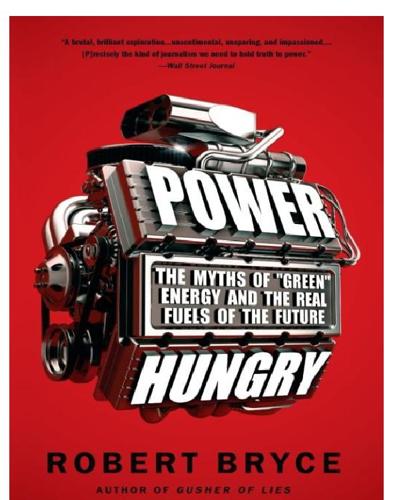
Power Hungry: The Myths of "Green" Energy and the Real Fuels of the Future
by
Robert Bryce
Published 26 Apr 2011
Chapter 1 1 Areva, All About Nuclear Energy: From Atom to Zirconium (Paris: Areva, 2008), 8. 2 For Hannibal, see John Noble Wilford, “The Mystery of Hannibal’s Elephants,” New York Times, September 18, 1984, http://www.nytimes.com/1984/09/18/science/the-mystery-of-hannibal-s-elephants.html?sec=health. For Saturn V, see Boeing Integrated Defense Systems, “Apollo 11 Factoids,” n.d., http://www.boeing.com/defense-space/space/apollo11/factoids.html. 3 BP Statistical Review of World Energy 2009, http://www.bp.com/liveassets/bp_internet/globalbp/globalbp_uk_english/reports_and_publications/statistical_energy_review_2008/STAGING/local_assets/2009_downloads/renewables_section_2009.pdf.
…
Thus, the Fusion engine has 9.2 times greater power density than the engine from the Model T. 14 Vaclav Smil, Energies: An Illustrated Guide to the Biosphere and Civilization (Cambridge: MIT Press, 1999), 123. 15 Ibid., 120. 16 Jad Mouawad and Kate Galbraith, “Plugged-In Age Feeds a Hunger for Electricity,” New York Times, September 20, 2009, http://www.nytimes.com/2009/09/20/business/energy-environment/20efficiency.html?scp=2&sq=mouawad%20and%20electricity&st=cse. 17 International Energy Agency, World Energy Outlook 2008, 180. 18 Ibid., 390. 19 Boeing Integrated Defense Systems, “Apollo 11 Factoids,” n.d., http://www.boeing.com/defense-space/space/apollo11/factoids.html. 20 Announced by an unnamed American Airlines pilot during Dallas to Austin flight, July 11, 2009. 21 John Kiewicz, “Top Fuel by the Numbers,” Motor Trend, February 2005, http://sciencececc.ep.profweb.qc.ca/physique/Documents/Mecanique/Top_Fuel_by_the_Numbers.pdf. 22 Federation of American Scientists, n.d., http://www.fas.org/man/dod-101/sys/land/m1.htm. 23 CarandDriver.com, “We Drive a Honda F1 Car—The Big Day,” n.d., http://www.caranddriver.com/features/09q1/we_drive_a_honda_f1_car-sport/the_big_day_page_3. 24 MotorTrend.com, n.d., http://www.motortrend.com/new_cars/04/ferrari/f430/index.html. 25 InternetAutoguide, n.d., http://www.internetautoguide.com/car-specifications/09-int/1999/acura/tl/index.html. 26 “2010 Ford Fusion Review.” 27 John Pearley Huffman, “Generations,” May 8, 2003, http://www.edmunds.com/insideline/do/Features/articleId=93327#3. 28 Calculated by author from home A/C unit, which draws 19.2 amps at 220 volts, for 4,224 watts. 29 Wikipedia, “Honda Super Cub,” http://en.wikipedia.org/wiki/Honda_Super_Cub. 30 Based on author’s personal Yard Machines lawnmower. 31 Measured at author’s home with a Kill A Watt, August 27, 2009. 32 “Home Wattage Calculator,” n.d., http://www.poweredgenerators.com/wattage-calculator.html.
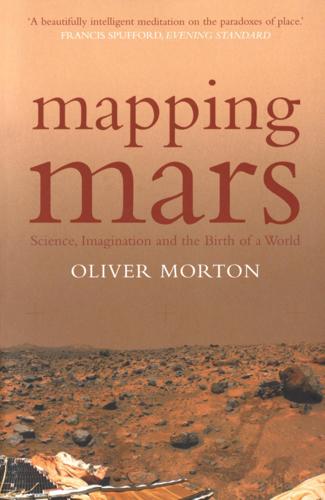
Mapping Mars: Science, Imagination and the Birth of a World
by
Oliver Morton
Published 15 Feb 2003
—John Keats, “On First Looking into Chapman’s Homer” On 13 February 1969, nine days before Mariner 6 set off for Mars and five months before Neil Armstrong was to step onto the dust of the Sea of Tranquillity, the newly inaugurated president, Richard Nixon, asked his vice-president, Spiro Agnew, to explore the options for a post-Apollo space program. Agnew became enthused. When Apollo 11 made its historic landing that July, he talked of committing the nation to the goal of sending people to Mars. The report of Agnew’s Space Task Group, offered to the president in September 1969, discussed this possibility and many others—but more or less ignored the question of how much it was going to cost.
…
Stan Robinson, Bob Zubrin, Matt Golombek, Chris McKay, and all the other specialists brought in to add to the commentary will be looked to for response; some will be lost for words. (How old will they be? I don’t know.) Some of them may cry. Some of us watching will certainly cry. But it’s only fair to say that the majority will be less strongly affected. To most it will be an entertainment. There will be a pause—a pause long planned and scheduled. (On Apollo 11, the crew was ordered to take a nap after landing, though they didn’t.) Then the first EVA will be prepared. We’ll probably be able to watch some of the suiting-up; we’ll see a face with which we have become familiar vanish under a helmet, its visor strongly tinted against the hard ultraviolet rays outside.
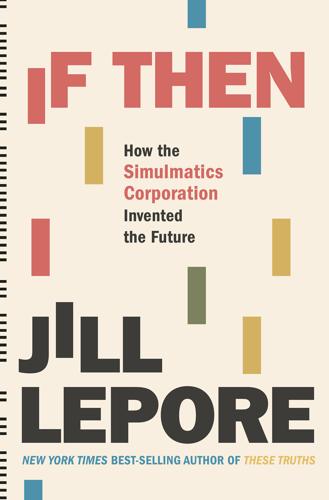
If Then: How Simulmatics Corporation Invented the Future
by
Jill Lepore
Published 14 Sep 2020
Leaders of the civil rights movement would come to view the space race and the arms race as a flight of a different sort, a flight from justice, a flight from commitment, a white flight. “It will cost thirty-five billion dollars to put two men on the moon,” the National Urban League’s Whitney Young would complain. “It would take ten billion dollars to lift every poor person in this country above the official poverty standard this year.”45 At the launch of Apollo 11, headed for the moon, protesters would carry signs reading, “$12 a day to feed an Astronaut. We Could feed a Starving Child for $8.” “We may go on from this day to Mars and to Jupiter and even to the heavens beyond,” the head of the Southern Christian Leadership Conference would say, “but as long as racism, poverty, and hunger and war prevail on the earth, we as a civilized nation have failed.”46 The unease ran deeper, too.
…
Abelson, Robert, 118, 130, 133, 310 “Abraham ’58: A Nuclear Fantasy” (Wheeler), 174 advertising — computer models from advertising agencies, 152–54, 360n — by Eisenhower campaign, 18, 20, 21–22 — “Great Computer Hoax” of 1962, 154 — growth after World War II, 15 — presidential election of 1952, 14, 15, 20, 21–23 — presidential election of 1956, 43–44 — Simulmatics marketing to advertising agencies, 138–39, 152–53, 322, 356n — Stevenson opposition to political advertising, 15, 20, 21, 22, 43, 65 — targeted advertising by Simulmatics, 5 Age of Jackson, The (Schlesinger), 94 Albee, Edward, 85, 146 Alsop, Stewart, 23 American Freedom of Residence Fund, 14 American National Election Study, 34 American Power and the New Mandarins (Chomsky), 291 American Voting Behavior (Burdick, Brodbeck), 37 antiwar movement — at Harvard, 297–98 — march on the Pentagon, 251–53, 286 — National Mobilization Committee to End the War in Vietnam, 235, 251, 286 — New York protests in 1967, 233–34, 235 — overview, 234–35 — protests against Project Cambridge, 292–93, 295–98, 315, 385–86n — San Francisco protests in 1967, 235 — Science Action Coordinating Committee (SACC), 291–92 — student attacks on Pool and Simulmatics, 285, 292–93, 295–96, 298–300, 303, 315, 385n — student protest pamphlets and posters, 49, 255, 276, 293, 299, 386n — student protests against ARPANET, 296 — Students for a Democratic Society (SDS), 199, 242, 276, 286, 292, 295, 296–97, 299 — surveillance of, 305, 307, 315 — teach-ins, 199–200, 225, 234, 251, 292, 294 — see also Vietnam War Apollo 11, 78 Apple Macintosh, 317 Aquaman, 30, 109 Arbuckle, Mrs., 155, 164 Arendt, Hannah, 78 Armies of the Night, The (Mailer), 233, 252 Arnold, William, 243–44 ARPA (Advanced Research Projects Agency) — ARPANET, 284, 296, 310–11, 312, 313–15, 316, 318 — complaints about Simulmatics, 221, 224, 236–37, 240–41, 244, 245–48, 254, 265, 290 — counterinsurgency, 200, 213, 216 — dynamic modeling, 200, 213–14, 216–17 — Eisenhower creation of, 77–78 — Licklider and, 284, 296, 310, 370n ARPA (Advanced Research Projects Agency) (continued) — network building, 152 — offices in Saigon, 207 — Pool’s presentation to, 169–70, 363n — Project Agile, 213 — Project Cambridge, 283, 284–85, 296 — reaction to Hoc’s projects, 251, 267 — Simulmatics contracts, 221, 231, 240, 243, 254, 267, 284 — “TV Hamlets” study, 246–47, 248 — Vietnamese spoken by Americans, investigation, 220 artificial intelligence — Alex Bernstein playing chess with an IBM 704, 67, 68, 70, 73, 74–75 — Artificial Intelligence Lab at Stanford, 312 — Artificial Intelligence Project at MIT, 76, 170, 311 — automation and simulation related to, 71–72 — Dartmouth conference in 1956, 73, 74–75, 87, 89 — defined, 5 — history of man vs. machine chess match, 72–73 — origin of term, 71 — see also computer revolution Aspin, Les, 303 Atlas Shrugged (Rand), 127 atomized society, 277, 312, 316, 322 Attwood, William, 103 automation and unemployment fears, 69–70, 99, 129–30 Bagdikian, Ben, 191 Ballantine Ale, 27, 173 Ball, George — on precision of McNamara’s predictions, 208 — Stevenson 1952 campaign, 20, 22, 23, 62–63 — Stevenson’s death and, 370n — warnings about Vietnam escalation, 163–64, 194, 213 Baran, Paul, 282, 284, 337n Barlow, John Perry, 319 Baudrillard, Jean, 4 Baxter, Leone, 16, 17, 273 Bay of Pigs invasion, 141, 156 BBDO (Batten, Barton, Durstine & Osborn), 20, 152, 153, 321, 359nn behavioral sciences — “Behavioral Science and National Security” congressional hearings, 211 — conservative opposition to, 57 — data science and, 324–25, 326–27, 389n — defined, 36–37 — laws of nature compared to, 324, 389n — predictive analytics, 5, 327 — profit motive and money for universities, 324–25, 326 — proper public role of, 172–73 — psychoanalysis and, 58 Belknap, George, 117 Bellevue Hospital, 90–91 Bellow, Saul, 56, 58–59, 186, 344n Berelson, Bernard, 34 Berkeley protests in 1964, 196–98 Bernstein, Alex — counterinsurgency research proposal, 216, 370n — Dartmouth artificial intelligence conference, 73, 74–75, 87 — early life and career, 68 — election simulation, 78–79 — Greenfield and, 79 — marketing for Simulmatics, 136, 152 — marriage, 74 — Media-Mix simulation, 138, 359–60n — Moynihan and, 260 — playing chess with an IBM 704, 67, 68, 70, 73, 74–75, 100 — preparation for 1962 Times election coverage, 154–55, 166, 362n — Project Macroscope, 92 — as psychoanalyst, 303 — Simulmatics stock offering and, 139 — on Turing’s machine, 73 — in Venezuela, 209, 210 Bernstein, Carl, 309, 310 Bernstein, June Atlas, 74 Best Man, The (Vidal), 11, 63–64 big data, 279, 282, 325 Billion-Dollar Brain, The (Deighton), 125 Bork, Robert, 308 Boulding, Kenneth, 36–37, 38 Bowles, Chester, 112 brainwashing, 20–21, 93 Brain-Washing in Red China (Hunter), 20 Brando, Marlon, 27, 40, 101, 173 Brand, Stewart, 310, 311–12, 314, 317–18 Brinkley, David, 192 Brin, Sergey, 6, 55 Brown, Claude, 256–57, 258, 287 Brown v.
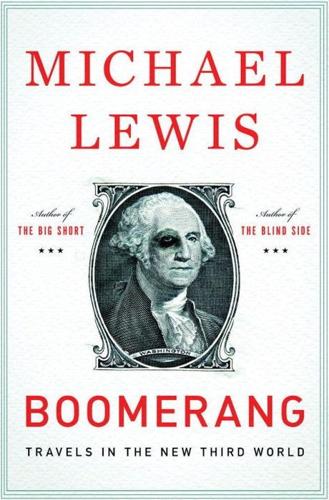
Boomerang: Travels in the New Third World
by
Michael Lewis
Published 2 Oct 2011
Small boys on sleds rocket down the slope beside it, giving not a rat’s ass that they are playing at ground zero of the global calamity. It all looks the same as it did before the crash, even though it couldn’t be more different. The fuse is burning its way toward the bomb. When Neil Armstrong took his small step from Apollo 11 and looked around, he probably thought, Wow, sort of like Iceland—even though the moon was nothing like Iceland. But then, he was a tourist, and a tourist can’t help but have a distorted opinion of a place: he meets unrepresentative people, has unrepresentative experiences, and runs around imposing upon the place the fantastic mental pictures he had in his head when he got there.
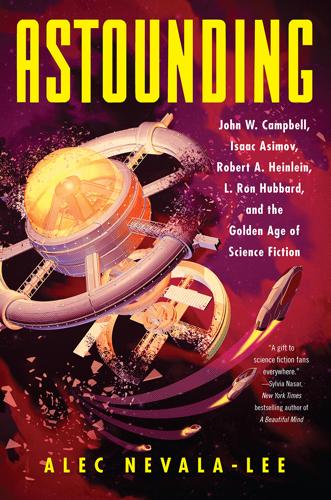
Astounding: John W. Campbell, Isaac Asimov, Robert A. Heinlein, L. Ron Hubbard, and the Golden Age of Science Fiction
by
Alec Nevala-Lee
Published 22 Oct 2018
They went afterward to Sleepy Hollow Cemetery in Concord, where they paused before the grave of Emerson, who had written over a century earlier, “If the stars should appear one night in a thousand years, how would men believe and adore.” Two months later, Asimov, who was not yet fifty, published his hundredth book. IN MARCH 1969, HEINLEIN FLEW WITH GINNY TO A FILM FESTIVAL IN RIO DE JANEIRO, WHERE HE met the director Roman Polanski. Later that year, he attended the launch of the Apollo 11 mission, which he called “the greatest spiritual experience I’ve undergone in my life,” telling the anchorman Walter Cronkite, “This is the greatest event in all the history of the human race. . . . Today is New Year’s Day of the Year One.” It was a moment in which reality and science fiction seemed close enough to touch.
…
abortion, 130, 254, 257, 269, 277, 278 Ace Magazines, 181 Ackerman, Forrest J, 106, 237, 238, 272, 286 “Ad Astra” (Asimov), 94–95, 96 “Affirmations” (Hubbard), 233–34, 260, 450n “Against the Fall of Night” (Clarke), 244 AIDS, 403, 406 Air Trails and Science Frontiers Magazine, 236, 241–42, 245–46 Alaska, 127, 130–31, 132 Aldrin, Buzz, 350 Algol, USS, 179, 201–2 “All” (Heinlein), 64, 118, 120 All About Radiation (Hubbard), 332 Allen, John, 323 Allen, Woody, 398, 495n “—All You Zombies—” (Heinlein), 339 Amazing Stories, 6, 30, 75, 100, 463n Asimov’s story, 93, 94 Campbell’s stories, 30–33, 37, 57, 61 American Chemical Society, 221 American Fiction Guild, 84, 86 American Institute of Advanced Therapy, 270 American Journal of Psychiatry, 256 American Medical Association, 287 American Museum of Natural History, 325 American Red Cross, 46, 154, 172 American Rocket Society, 204 Amis, Kingsley, 415n Amis, Martin, 399, 409 Analog Science Fact & Fiction, 8, 325–26, 333, 350, 355, 358, 360, 367, 370, 374, 387, 401 Anderson, Poul, 317, 360–61, 362, 374, 387, 484n “—And He Built a Crooked House—” (Heinlein), 120 “—And Now You Don’t” (Asimov), 222 anti-Semitism, 96, 164–65, 366–67, 487n Apollo 11, 350–51 Apollo 17, 381–83 appendicitis, 38, 68 Arabian Nights, The (Hubbard), 25, 88–89, 129 Arcot stories (Campbell), 32–33 “Arena” (Star Trek episode), 371 Argosy, 30 Armstrong, Neil, 245, 350 Arnold, John, 473n Arwine, John, 117, 158, 160, 225 Ashwell, Pauline, 366, 488n Asimov, Anna Berman, 47–51 Asimov, David, 3, 342, 346, 349, 398–99, 406 Asimov, Gertrude Blugerman background of, 162 death of, 406 divorce from Isaac, 397, 398 marriage and family life, 166, 167, 221, 222, 223, 342, 343–44, 346 meeting and marriage, 161–63, 164 during World War II, 167, 170, 204, 208, 218, 219 Asimov, Isaac Astounding and, 76, 90–97, 133–42, 248, 346 birth of, 47 at Boston University, 222–23 Campbell’s legacy and, 386–87 celebrity of, 2, 4, 220–21, 347, 349 at Creativity Conference (1963), 2–3 death of, 406–7 dianetics and, 282–83, 294–95 on The Dick Cavett Show, 396–97 early life of, 14, 47–52 early writings of, 90–97 education of, 51–52, 90, 97, 220–22 family history of, 47–48 Foundation series, 10, 140–41, 167, 207, 220, 222, 275, 343, 349, 400 Futurians and, 99–100, 102–4, 103, 133–34, 141 Galaxy stories, 283–85, 343 health issues of, 399, 400–401, 404–6 Heinlein and, 114, 165–66, 226–27, 338–39, 344, 385, 390, 404 HIV and AIDS, 401, 405–6 later writings of, 342–49, 398 legacy of, 399–400, 407–8 marriages and family life, 2, 161–63, 164, 166, 342, 343, 346–47, 349, 397, 398–99, 404.
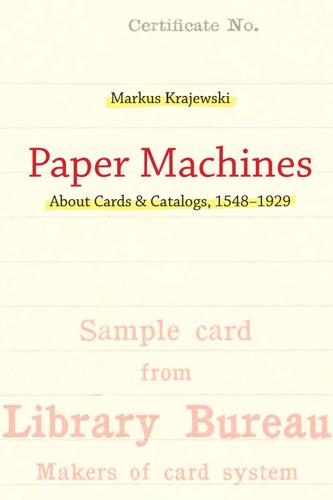
Paper Machines: About Cards & Catalogs, 1548-1929
by
Markus Krajewski
and
Peter Krapp
Published 18 Aug 2011
Meyers Großes Konversations=Lexikon. 1906. Article “Buchdruckerkunst.” Vol. 3, 6th newly revised edition, 528–532. Leipzig: Bibliographisches Institut. Meynen, Gloria. 1997. Bürokratien von Imperien, Bibliotheken und Maschinen. M.A. thesis, Humboldt Universität Berlin. Meynen, Gloria. 1998. Büroformate: Von DIN A 4 zu Apollo 11. In Work@Culture: Büro. Inszenierung von Arbeit, ed. Herbert Lachmeyer and Eleonora Louis, 81–88. Klagenfurt: Ritter Verlag. Michel, Paul. 2002. Ordnungen des Wissens: Darbietungsweisen des Materials in Enzyklopädien. In Populäre Enzyklopädien: Von der Auswahl, Ordnung und Vermittlung des Wissens, ed.

Buyology
by
Martin Lindstrom
Published 14 Jul 2008
The rock doesn’t come from the Berlin Wall—it’s even more exceptional than that. The rock you have in 08/08/2009 10:45 74 of 83 file:///D:/000004/Buy__ology.html your hand is an authentic moon rock, a chunk of the roughly six ounces of lunar detritus that Neil Armstrong and his fellow astronauts brought back home with them during their 1969 Apollo 11 mission. A moon rock is pretty special. There are a limited number of them in the world. And after all, it comes from the moon. What an exquisite present, you think. You’re shocked, genuinely overcome. The fact of the matter is that I found the rock by the side of the road, put it in my pocket, and threw it into a box.
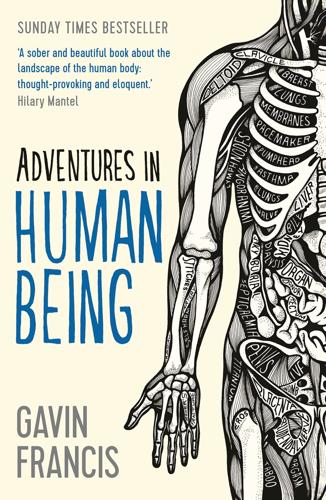
Adventures in Human Being (Wellcome)
by
Gavin Francis
Published 28 Apr 2015
Wellcome Image Collection. p. 204 ‘X-ray of Right Total Hip Replacement’, from the US National Institute of Health. p. 211 Romería poster from 2011, courtesy of Chemi Marquez. p. 213 Skeleton of the foot (medical aspect) (figure 290 in Gray’s Anatomy, 1918 edition). p. 221 Photograph by Edwin Aldrin, Apollo 11, courtesy of NASA. Index A abdomen kidney 131–45 large bowel and rectum 156–62 liver 146–55 About Looking (Berger) 40 acrylic 39 Adamson, P. B. 110–12 Aeneid (Virgil) 111 afterbirth 186–96 alanine transaminase (ALT) 147 albumin 147, 155 anatomy 1–2, 7–8, 214–22 and beauty 158 Bell 54, 56, 96 brain 9–10 breast 94 ear 61–2 eye 35 face 44–51 foot 213–14 hand 125 heart 83, 86 Homer 107 Leonardo 50 lung 79–80 shoulder 108–9 Anaxagoras 53 anger 50, 58, 59 angor animi 85 Antarctica 109–10 aortic valve 83, 86–8 Aristotle 33, 89, 133, 171 arms 110, 113–14 shoulder 103–9, 113 wrist and hand 115–28 Armstrong, Neil 210 astronomy 33, 35–6 asylums 15–16 Aurora Leigh (Browning) 115 Australopithecus afarensis 212–13 Avicenna 176 Ayurvedic medicine 72–3 azoospermic 165 B Babylon 150 Bacon, Roger 33 balance 60–62 Bamforth, Ian 199 Bárány, Robert 65 Barbet, Pierre 126–7 Bartholin’s glands 173 Battle of Maldon, The 42 beauty 158 Bedlam 15 Bell, Charles 53–5, 56–7, 96, 110 Bell, John 53, 54 Bell Jar, The (Plath) 26, 28 Bell’s palsy 45, 51–3, 55–6, 57–8, 59 benign paroxysmal positional vertigo (BPPV) 64–8 Berger, John 40–43 bilirubin 149, 155 Bini, Lucio 21–2 Bischoff, Theodor 177 Blake, William 40 Blind Man, A (Borges) 37 blindness 34, 36–7 Blomberg, Sven 40 blood albumin 147 heart 82–9 and hip 201, 202 internal loss 104 and kidneys 133–5 and liver 147, 149–50 septicaemia 148–9, 153–4 test results 146–7 transfusions 141 Book of Imaginary Beings, The (Borges) 34 Borges, Jorge Luis 31, 34, 36–7, 39, 41, 42–3 Botox 56, 58 bowels 156–8 boxer’s fracture 117–20 brachial plexus 108–9 brachial stun 106–8 brain carina 78 neurosurgery of the soul 7–14 seizures, sanctity and psychiatry 15–28 vertigo 63 breast 92–9 breath 71, 73, 78–9 bronchial breathing 74 Browne, Sir Thomas 53, 219, 227 Browning, Elizabeth Barrett 115 Bruno, Giordano 34 Burns, Robert 97 C Callatiae 190 Cameron, Ewen 23 camphor 19–20 cancer 155 breast 3, 92–9 lung 74–5, 76–8, 80–81 womb 180–85 Cardiazol 20–21 carinas 77–8 carotid artery 71, 72, 121 Cataract (Berger) 40–41 cataracts 34, 36, 38–41 catatonia 20–21 caul 191–2 Cenacolo (Leonardo da Vinci) 47–9, 50, 57 Cerletti, Ugo 21–2 Chawla, Hector 34–5 chest breast 92–9 heart 82–91 lung 71–81 child abuse 122–4 China 191, 192 Chinese medicine 72–3, 132 collarbone 105–6 Collins, Brigid 96–9 coma 3, 147–9, 152–5 conception 165–70, 173, 174–9 corrugator supercilli 45 cremation 207–8 crepitation 74 Crimean War 112 crucifixion 125, 126–8 cryogenics 195–6 cutting 121–4 D da Vinci, Leonardo 1, 49–50 anatomy 50, 222 The Last Supper 47–9, 50, 57 muscles and facial expression 46–9, 50, 56, 57 placenta 189 Darwin, Charles 56–7, 59 David Copperfield (Dickens) 191–2 De Motu Cordis (Harvey) 88 de Zerbis, Gabriele 133 death 71–2, 81, 206–7 angor animi 85 cremation 207–8 womb cancer 180–86 deliberate self-harm (DSH) 121–4 della Torre, Marcantonio 50 Demirel, Selçuk 41 depression 16–19, 27–8 depressor anguli oris 45 Descartes 9–10, 85 Deuteronomy 191 dialysis 135 diastole 83, 84 Dibb, Michael 40 Dickens, Charles 191–2 Diomedes 113–14 dizziness 60, 63–8 Doors of Perception (Huxley) 40 Duncan, Andrew 15 dura mater 12, 14 E ear 60–68 ectopic pregnancy 166 Edinburgh psychiatric hospital 15–19 Royal Botanic Garden 143–5 Western General Hospital 93–4 see also University of Edinburgh Einstein, Albert 33 electroconvulsive therapy (ECT) 16–19, 21–8 electroencephalograms (EEGs) 24 eloquent brain 13 emergency medicine 2, 103, 115–16, 122, 124 angor animi 85 death 71–2 Emerson, Ralph Waldo 44 Empedocles 32 emphysema 76 epilepsy 10–14, 19–20 Epley, John 65–8 Eros 173–4 Essays on the anatomy of the expression in painting (Bell) 56 Exequy (King) 82 Expression of the Emotions in Man and Animals, The (Darwin) 57, 59 expressions 3, 46–9, 50, 56, 57, 58–9 eye 31–43, 71, 72 Eyeless in Gaza (Huxley) 40 Ezekiel 150 F face 3, 44–59, 78 fairy tales 3, 151–3 fascism 21 fear 50, 58, 59 feet 127–8, 210–22 Fergusson, Robert 15 fetoliths 166 fibrillation 85–6 fibroadenomas 94–5 fibrocystic change 94, 95 Fillan, St 143 Findlater, Gordon 214, 216, 218, 219 Finlay, Alec 131, 143–5 First World War 112 Fisher, Carrie 28 footprints 212–13, 221–2 Forestus 167 Fortunate Man, A (Berger) 42 Fox, Chris 40 Frankenstein (Shelley) 7 Frazer, James 192, 193 Freud, Sigmund 28, 173–4 Frissure (Jamie) 92, 99 frontalis 45, 50, 52, 58, 59 G Galen 110, 167, 172, 176 gamma glutamyltransferase (GGT) 115, 147 Genesis 202–4, 208–9 genitalia 165–79 Gerentocomia (de Zerbis) 133 glaucoma 36 Glaucus 113–14 glia 20 Gold of Tigers, The (Borges) 37 Golden Bough, The (Frazer) 192, 193 gout 214 Gräfenberg, Ernst 172 Greeks eyes 32–3 faces 53 heart 89 Homer 3, 103, 106–8, 110–12, 113–14 kidneys 133 lungs 72–3 Omphalos 190 seizures 19 Thanatos 173–4 vertigo 60, 64 Grimm, Jacob and Wilhelm 146, 151–3 H Halving, The (Robertson) 87, 88, 90–91 hand 125–6, 214 boxer’s fracture 117–20 crucifixion 125, 126–8 Hanging Man, The (Plath) 26 Harvey, William 88 head ear 60–68 eye 31–43 face 44–59 injuries to 111, 112 see also brain healing 3, 92–9, 132–3, 142–4 Heaney, Seamus 194–5 heart 82–91, 149–50 heel 127–8 Here Is Where We Meet (Berger) 42 Heredity 2 (Jamie) 98 Herodotus 186, 190 Hippocrates 15, 64, 109, 167 hips 199–209 Hitler, Adolf 21 Hollis, Richard 40 Homer 3, 103, 106–8, 110–12, 113–14 Hooke, Robert 134 Hungary 191 Huxley, Aldous 40 I Iceland 192 Iliad, The (Homer) 3, 103, 106–8, 110–12, 113–14 increased vocal resonance 74 Indonesia 192–3 infertility 165, 168–70, 174–9 inner ear 60–8 IVF 175–6, 177–8 J Jacob and the angel 202–4, 208–9 Jamie, Kathleen 92, 95–8 Jannini, Emmanuele 172 Japan 192 Joyce, James 31, 156 Jung, Carl 174 K Kepler, Johannes 33, 34 Kesey, Ken 26 kidney 131–45 Killin 143–4 King, Bishop Henry 82 ‘Kist’ (Collins) 98 Kodama, Maria 42 Kolff, Willem 135 Kristmundsdottir, Fanney 9–10 L Laetoli 212–13, 221 Lancet 177 large bowel 156–8 larynx 79 Last Supper, The (Leonard da Vinci) 47–9, 50, 57 Leakey, Mary 212–13 legs feet and toes 210–22 hips 199–209 Leonardo da Vinci see da Vinci, Leonardo levator labii superioris alaeque nasi 45, 50, 58, 59 light 33–4 limbs feet and toes 210–22 hip 199–209 shoulder 103–14 wrist and hand 115–28 lips 78 liver 146–55 liver function tests (LFTs) 147, 155 lobotomy 21 Logos 174 lower limb feet and toes 210–22 hip 199–209 lung 71–81, 151 M McDowall, David 141–2 Maleficent (Disney) 153 Malpighi, Marcello 134 Mantel, Hilary 84 march fractures 214 Marcus Aurelius 171 Married Love (Stopes) 177 Meduna, Ladislas 20–21 meiosis 165 men fertility 191 infertility 165, 177 Logos 174 orgasm 170–73 rectum 157 menstruation 177 Mental Health Act 18 metacarpals 125 Micrographia (Hooke) 134 military medicine 109–10 Milton, John 36, 37, 40 mitral valve 83 Mona Lisa (Leonardo da Vinci) 47 Monro, Alexander (Secundus) 217 Montaigne (Emerson) 44 Morton’s neuromas 214 Mossbawm (Heaney) 194–5 moxibustion 132 muscles face 44–53, 57–8 forearm 119 hand 125 larynx 79 Mussolini, Benito 21 N Napoleonic Wars 54–5 nerves face 50–53, 55–6, 57–8 injury 112–13 shoulder 108–9 Neuroanatomy Teaching Laboratory 7–8 neurology 21 neurosurgery 10–14 neurotransmitters 25 Newton, Isaac 33, 134 nightstick fracture 111 nose 78–9 O Omphalos 190, 194 On Dizziness (Theophrastus) 60 On Nature (Parmenides) 71 On the Sacred Disease (Hippocrates) 15 One Flew Over The Cuckoo’s Nest (Kesey) 26 ophthalmology 31–43 orbicularis oculi 45, 58 organ donation 139–42, 143–5 orgasm 167–8, 170–73, 176 osteochondritis 201 ovulation 167, 169, 172, 177 P pacemakers 85–6 palsy 51–3, 55–6, 57–8, 59 Paracelsus 19–20 Parmenides 71 pelvis afterbirth 186–96 genitalia 165–79 womb 180–85 Perceforest 152 Pinard stethoscope 90 pineal body 9–10 placentas 3, 186–96 plantar fasciitis 214 Plath, Sylvia 26, 28 Plato 32–3, 34 Prometheus 150 psychiatry 15–28 psychotherapy 28 psychotic depression 16, 27–8 pudendal nerve 170–72 pulmonary valve 83 pump-head 87–8, 89 R radial artery 121 rectum 156–61 Robertson, Robin 86, 87, 88, 90–91 Rodin, Auguste 158 Romans 110 crucifixion 126–8 female sexuality 167 infertility 176 swords 111 Royal Botanic Garden, Edinburgh 143–5 Russia 192 S saccule 61–2, 65 sacrum 171 Sade, Marquis de 167 Sadler, John 177 Samson Agonistes (Milton) 40 schizophrenia 20, 22 Scottish ECT Accreditation Network (SEAN) 26 seagull murmur 87 seasickness 63 Seed, The (Hippocrates) 167 seizures 10–14 camphor-induced 19–20 Cardiazol induced 20–21 electroconvulsive therapy 18, 19, 21–5 electroencephalograms 24 self-harm 121–4 septicaemia 148–9, 153–5 sexuality 167–8, 170–3 Sforza, Francesco 46–7 Shakespeare, William 36, 53, 150 Shelley, Mary 7 shock therapy 16–19, 21–8 shoulder 3, 103–14 Sicke Woman’s Private looking Glass, The (Sadler) 177 Sinclair, Iain 53 Skene’s glands 172 skin 136 sky burial 142 sleeping beauties 152–3 Snow White 146, 151–3 Song of Myself (Whitman) 180, 223 soul and brain 9–10 and face muscles 46 and heart 88 and lips 78 speech 11–13, 23 sperm 165, 171, 172–3 stem cells 195–6 Sterne, Laurence 165 stethoscopes 74, 89–90 stigmata 128 stones 132–3, 142–4 Stopes, Marie 177 stroke 52, 64 Svevo, Italo 199–200 systole 83, 84 T Tacitus 150 Taigh (Finlay) 131, 143–5 Taylor, William 173 Teucer 106–8, 111 Theophrastus 60 Tibet 131–3, 142–3, 202 toes 210–11 transplantation 131, 135–42, 143–5 tricuspid valve 83 Tristram Shandy (Sterne) 165 tumours see cancer U ulna 111 Ulysses (Joyce) 156 umbilical cords 3, 186–7, 195–6 University of Edinburgh 7–8, 216–20 Unsystematic Anatomy (Bamforth) 199 upper limb shoulder 103–14 wrist and hand 115–28 utricle 61, 65 V vagina 78, 172 Vasari, Giorgio 49 vertigo 60, 63–8 Vesalius 133–4 vibrators 167–8 Virgil 111 vision 31–43 vocal cords 79 Volsunga Saga 42 W Warner, Marina 151, 153 Waterloo, Battle of 54–5, 110 Ways of Seeing (Berger) 40 Western General Hospital 93–4 Whitman, Walt 180, 223 womb 180–85, 187 women breast cancer 92–9 eating placenta 190–91 Eros 174 fertility 177 infertility 165–6, 169, 176–7 orgasm 166–8, 170–73, 176–7 rectum 157 womb cancer 180–85 Woolf, Virginia 219 wrist 115, 121, 125–6 X X-rays 76, 77, 158, 160–62 Z Zohar 203 zygomaticus 44–5, 52, 58 WELLCOME COLLECTION is the free visitor destination for the incurably curious.

Fred Dibnah's Age of Steam
by
David Hall
and
Fred Dibnah
Published 1 Jan 2003
Once the Elizabeth and Mary retired, this vessel would make or break Cunard, and the only way the company could succeed was if it adapted to the changing times. It wasn’t easy for a firm that had established many of the traditions of the industry. Queen Elizabeth II’s keel was laid in June of 1965 in the same slipway where the Queen Mary had been built thirty years earlier. QEII made her first crossing in May of 1969 – it was just two months before Apollo 11 would land on the moon. In a time when man was preparing to go to the moon, crossing the ocean over the course of days in a steamship seemed prehistoric! She travelled at an average speed of 28.02 knots (51.9 kmph), taking four days, sixteen hours and thirty-five minutes. She was welcomed to New York with a traditional fanfare, but most people realized that this was the last time a new liner would steam in to the harbour.

Empire of AI: Dreams and Nightmares in Sam Altman's OpenAI
by
Karen Hao
Published 19 May 2025
People are more convinced by imagery than facts.” Those at the extreme end of the AI safety spectrum with the highest levels of p(doom) grew increasingly unsettled by the seeming uncomplicated optimism with which Altman and the rest of the company viewed this history. OpenAI had at one point also organized a screening of Apollo 11, a documentary about the US Apollo program to launch the first man to the moon, which was one of Silicon Valley’s other favorite analogies. “Why would you ever talk about the Manhattan Project if you could just say ‘Apollo program’? Why bring along that baggage?” an extreme Doomer says. One scene from Oppenheimer stuck with him in particular: the moment before the Trinity test, the first ever detonation of an atomic bomb, when Oppenheimer, played by Cillian Murphy, calculates that the chances of it blowing up the world are “near zero.”
…
See also effective altruism Amazon, 41, 46, 142, 161 data centers, 274–75, 277, 287 Mechanical Turk, 194 American Sign Language, 254 Amodei, Daniela, 55–56, 58, 144–45, 156, 157, 230 Amodei, Dario, 55–58 AI safety and risks, 55–56, 57–58, 87, 122–27, 131, 133, 134, 145–46, 147, 149–52, 156–57, 362 Altman’s firing, 366 at Anthropic, 58, 60, 115, 128, 157, 213–14, 230 background of, 55 The Divorce, 57–58, 156–57, 181, 213, 230, 233, 242, 353 Dota 2, 129, 144–45 founding of OpenAI, 28, 55 GPT-2, 125, 129–32, 150 GPT-3, 133–34, 134–35, 144–45, 156 Nest, 134–35, 144–45, 150, 151, 156, 244 promotion to director of research, 125, 133 scaling, 129–33, 156–57 Android, 100, 239 “anonymous crowd work” model, 206 Antel, 291–92 Anthropic, 6, 60, 115, 157, 233 Claude, 261, 358, 379, 400, 404–5, 406 founding of, and The Divorce, 58, 128, 157, 213, 230 Frontier Model Forum, 305–6, 309 FTX bankruptcy and, 257–58 Leike joins, 388 valuation, 18 AP Bio, 245–46 APEC CEO Summit, 2 APIs (application programming interfaces), 150–51. See also specific APIs Apollo 11 (movie), 317 Apollo program, 317 Appen, 137, 195, 197–202 Apple, 30, 202, 334, 402 Arancibia, Alexandra, 285–87, 296–99, 300 Arizona, 15, 279, 281, 292 arms race, 16–17 Arrakis, 269, 374 arsenic, 282 artificial general intelligence.
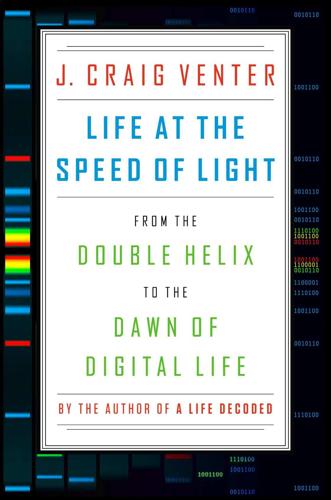
Life at the Speed of Light: From the Double Helix to the Dawn of Digital Life
by
J. Craig Venter
Published 16 Oct 2013
The current evidence suggests that DNA has a maximum lifetime of around 1.5 million years when held at ideal preservation temperatures,13 though it is possible that the dry, cold conditions on Mars might have enabled it to last longer. But, as underscored by the fact that scientists are still arguing over the significance of Viking data collected in the 1970s, the best hope we have of detecting life on Mars is gathering direct evidence of it. Ever since Apollo 11 returned the first extraterrestrial samples in the form of forty-nine pounds of moon rock to Earth, it has been a fervent hope that samples of soil from Mars could be obtained for study on Earth. The argument has been that scientists on Earth can make a more thorough and detailed analysis of samples than would be possible by robotic means on the planet itself.

Alan Partridge: Nomad: Nomad
by
Alan Partridge
Published 19 Oct 2016
Quite camp but maybe that’s the tinsel. ‘No,’ I say, for some reason out loud. I’m tired and irritated – what is wrong with me? I pry the torch from my now sore lips, switch it off, and then climb down the loft ladder, jumping the last two steps (as I always do) so I look like Neil Armstrong dismounting the steps of Eagle, the Apollo 11 lunar module – not so much a moon landing, as my landing (my emphasis). I nod appreciatively. ‘Nice line, Alan.’ I don’t even bother slinking back to bed. I shower up and get ready for work. *** ‘Like the name of a cartoon Belgian detective said in a Scottish accent, it’s 10:10.’11 It’s later that morning and I’m ten minutes into my daily radio show Mid Morning Matters.12 ‘The song you just heard was “Midnight Train to Georgia”.
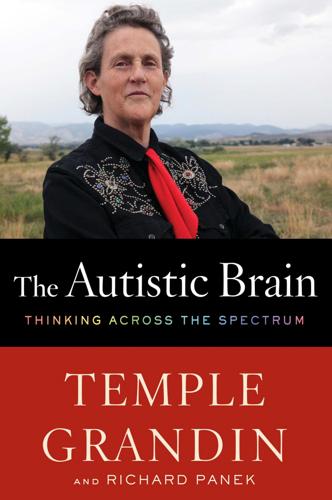
The Autistic Brain: Thinking Across the Spectrum
by
Temple Grandin
and
Richard Panek
Published 15 Feb 2013
I had deliberately chosen an image that he wouldn’t have seen before—in this case, an advertisement for a technology company that I found in an old issue of Scientific American I’d grabbed off a nearby shelf. I wanted to see how he expressed himself in words. He studied the picture, and then he turned to his keyboard. Apollo 11 on a horse, he typed rapidly. Then he ran around the library flapping his arms. When he returned to the keyboard, I showed him a picture of a cow. We don’t eat those in India, he typed.5 Then he ran around the library flapping his arms. I asked him another question, but I no longer remember what it was.

Reinventing Capitalism in the Age of Big Data
by
Viktor Mayer-Schönberger
and
Thomas Ramge
Published 27 Feb 2018
system to classify the planet’s life forms: Wilfrid Blunt, Linnaeus: The Compleat Naturalist (Princeton: Princeton University Press, 2002), 185–193. led to the theory of evolution: Roland Moberg, “The Development of Protoecology in Sweden,” Linné on Line, University of Uppsala, 2008, http://www.linnaeus.uu.se/online/eco/utveckling.html. The moon landing required: “Apollo 11 Mission Report,” NASA, n.d., http://www.hq.nasa.gov/alsj/a11/A11_PAOMissionReport.html. 10,000 scientists from over one hundred countries: Roger Highfield, “LHC: Scientists Jockey for Position in Race to Find the Higgs Particle,” Telegraph, September 10, 2008, http://www.telegraph.co.uk/news/science/large-hadron-collider/3351478/LHC-Scientists-jockey-for-position-in-race-to-find-the-Higgs-particle.html.
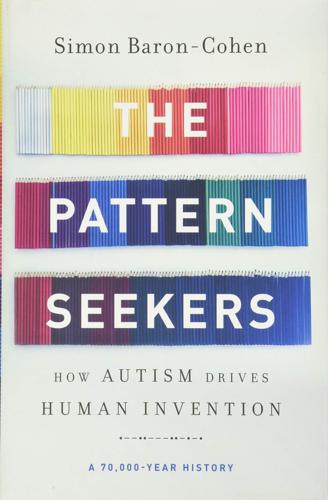
The Pattern Seekers: How Autism Drives Human Invention
by
Simon Baron-Cohen
Published 14 Aug 2020
Beaumont (1973), “Border cave—A progress report,” South African Journal of Science 69, 41–46. Note that there are even older “notched” bones dated back to 80,000 years, but the meaning of the notches is less clear. See R. Vogelsang et al. (2010), “New excavations of Middle Stone Age deposits at Apollo 11 Rockshelter, Namibia: Stratigraphy, archaeology, chronology, and past environments,” Journal of African Archaeology 8(2), 185–218. The speculation that the Lebombo bone was used to measure the length of the menstrual cycle or the lunar cycle comes from P. Beaumont and R. Bednarik (2013), “Tracing the emergence of paleoart in sub-Saharan Africa,” Rock Art Research 30(1), 33–54.
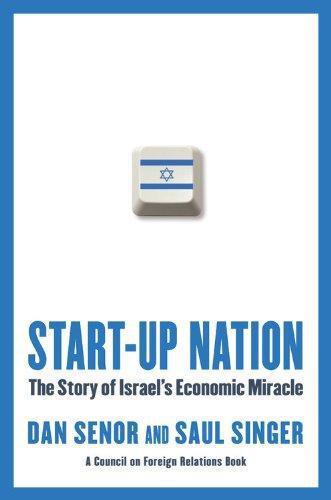
Start-Up Nation: The Story of Israel's Economic Miracle
by
Dan Senor
and
Saul Singer
Published 3 Nov 2009
But why had Riesenfeld mentioned the case to us? What was the connection to Israel, or to its innovation economy? The Apollo 13 crisis occurred on April 15, 1970, when the spaceship had traveled three-fourths of the way to the moon. It was less than a year after Neil Armstrong and Buzz Aldrin had stepped off Apollo 11. NASA was riding high. But when Apollo 13 was two days into its mission, traveling two thousand miles per hour, one of its primary oxygen tanks exploded. This led astronaut John Swigert to utter what has by now become a famous line: “Houston, we’ve had a problem.” The flight director, Gene Kranz, was in charge of managing the mission—and the crisis—from the Johnson Space Center in Houston.
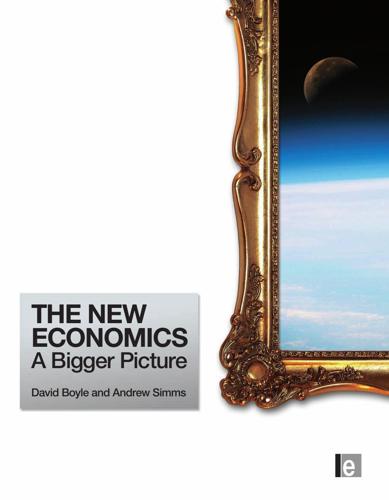
The New Economics: A Bigger Picture
by
David Boyle
and
Andrew Simms
Published 14 Jun 2009
The idea that inward investment should revert to local ownership after 20 years, beyond the normal time horizon of investment, would probably be welcomed too, but for the opposite reason. Most investors look no further than 20 years; providing them with perpetual ownership because they provided the capital and initial management is therefore overpaying them. Increase local production When the Apollo 11 spacecraft landed on the moon in 1969, the astronauts carried with them a much publicized series of meals in tubes and plastic wrappers – to which you added water – which became iconic images of the future. The fact that we have in some ways gone in the opposite direction – huge kitchens, bestselling cooks and TV cookery programmes, foodie magazines and organic supermarkets – demonstrates that the technocratic vision of the big food companies may already be going into reverse.
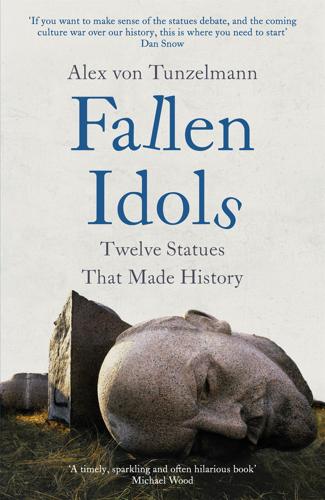
Fallen Idols: Twelve Statues That Made History
by
Alex von Tunzelmann
Published 7 Jul 2021
Above all, imperial Britain’, The New York Times, 18 August 2017. 20Sushmita Pati, ‘ “A nation set in stone”: Insight into the politics of statuary in Delhi (1950-65)’, Economic and Political Weekly, 28 July 2012, p. 235. 21Quoted in ‘Statue of George V and other British figures trouble Indians’, The New York Times, 31 July 1966. 22Ibid. 23Quoted in McGarr, ‘“The viceroys are disappearing”’, p. 825. 24Quoted in ‘Statue of George V and other British figures trouble Indians’, The New York Times. 25Quoted in Sanjoy Hazarika, ‘Delhi cupola waits twenty years for the Mahatma’, The New York Times, 29 May 1988. 26Author’s interview with Rana Safvi, 1 January 2021. 27Sameet Yasir, ‘Gandhi’s killer evokes admiration as never before’, The New York Times, 4 February 2020. 28Debika Ray, ‘The rise of the monumental statue in modern-day India’, Apollo, 11 March 2019. 29Corey Flintoff, ‘In India, once marginalized now memorialized’, NPR, 28 October 2011; ‘Is India’s poverty line of 65 US cents a day fair?’, BBC News, 5 November 2011. 30‘Mayawati should reimburse public money spent on building statues, observes Supreme Court’, Scroll.in, 8 Feb 2019, https://scroll.in/latest/912521/mayawati-should-reimburse-public-money-spent-on-building-statues-observes-supreme-court. 31Krishnadas Rajagopal, ‘Why no questions raised on 182-m high Sardar Patel statue, Mayawati asks in SC’, The Hindu, 2 April 2019. 6: ‘The Horror!
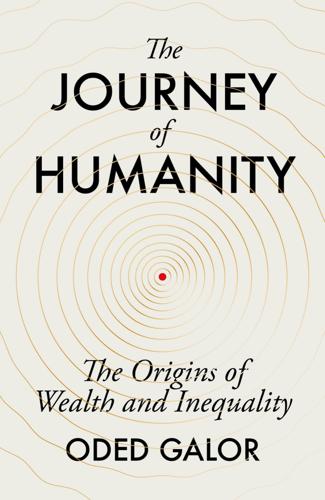
The Journey of Humanity: The Origins of Wealth and Inequality
by
Oded Galor
Published 22 Mar 2022
Those writings, however, fired the starting gun of a process that within a few thousand years would lead to the Epic of Gilgamesh, the Mahabharata, the Arabian Nights, Virgil’s Aeneid, Shikibu’s The Tale of Genji, Dante’s Divine Comedy, Shakespeare’s Hamlet, Cervantes’s Don Quixote, Goethe’s Faust, Hugo’s Les Misérables and Dostoevsky’s Crime and Punishment. Meanwhile, the Newcomen steam engine set in motion the technological leap that, in just 250 years, would allow the Soviets to launch sputnik into space and the Americans to land humans aboard Apollo 11 on the moon. The textile industry was the cutting edge of the Industrial Revolution, the high-tech sector of its day. A pantheon of British inventors – most notably John Kay, Richard Arkwright, James Hargreaves, Edmund Cartwright and Samuel Crompton – designed sophisticated machines that automated much of the textile manufacturing process.
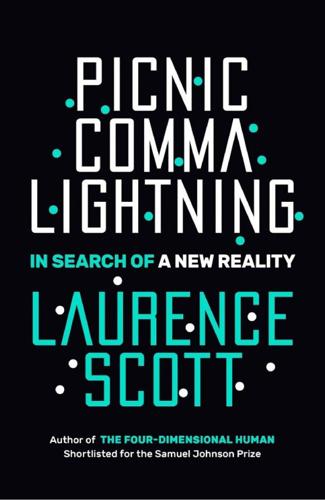
Picnic Comma Lightning: In Search of a New Reality
by
Laurence Scott
Published 11 Jul 2018
As a result, Aldrin held centre stage. With a 70-millimetre Hasselblad camera, Armstrong took these pictures of his pilot, as well as the famous, hesitant photograph of Aldrin standing in the Sea of Tranquillity, Armstrong himself reflected as a tiny highlight in Aldrin’s visor. The idea that the Apollo 11 landing was fake is fundamental to Flat Earth theorists, and so once again we see the camera-operator, however unevenly, cleaved in two, symbolic of both valour and deception. The Best Picture Just as the notion of ‘the story’ can refer either to what really happened or to a ruse, so the photographic image is a similarly two-sided representation of reality.
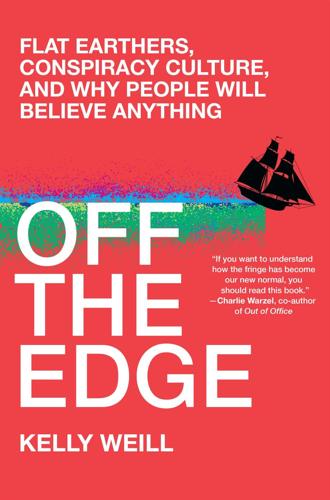
Off the Edge: Flat Earthers, Conspiracy Culture, and Why People Will Believe Anything
by
Kelly Weill
Published 22 Feb 2022
Some of the pictures have been blatantly doctored. Studio shots, probably.” Shenton’s talk of staged photographs was an echo from the future. Although moon-landing truthers are among some of the twenty-first century’s most famous skeptics, the conspiracy theory was nearly as obscure as Flat Earthism when the Apollo 11 crew landed on the moon for the first time in July 1969. In fact, one of the first groups to question the moon landing did it in jest. The six-hundred-member Man Will Never Fly Memorial Society launched three years after the International Flat Earth Research Society and parodied the Flat Earth group at annual meetings, in which members got drunk and pretended to believe air travel was impossible.
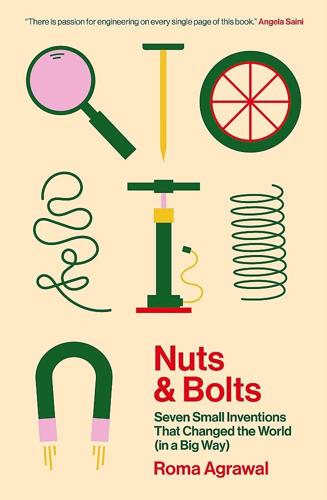
Nuts and Bolts: Seven Small Inventions That Changed the World (In a Big Way)
by
Roma Agrawal
Published 2 Mar 2023
‘The Past and Future Space Suit’. American Scientist, vol. 103, no. 5, 2015. https://doi.org/10.1511/2015.116.338. Campbell, Dallas. Ad Astra: An Illustrated Guide to Leaving the Planet. Simon & Schuster, 2017. CBS News. ‘The Seamstresses Who Helped Put a Man on the Moon’. 14 July 2019. https://www.cbsnews.com/news/apollo-11-the-seamstresses-who-helped-put-a-man-on-the-moon/. Cheng, Allen, Christine A. Williamitis, and Mark S. Slaughter. ‘Comparison of Continuous-Flow and Pulsatile-Flow Left Ventricular Assist Devices: Is There an Advantage to Pulsatility?’ Annals of Cardiothoracic Surgery, vol. 3, no. 6, November 2014.
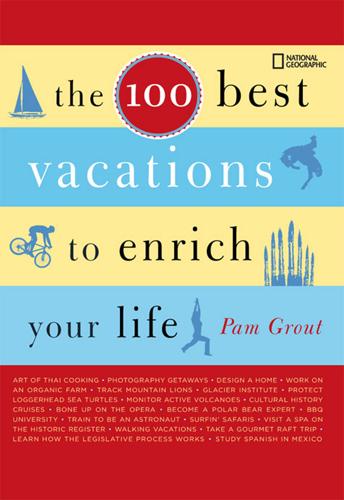
The 100 Best Vacations to Enrich Your Life
by
Pam Grout
Published 14 May 2007
Baynes’s little operation along the North Platte River also offers a one-day wagon train trek ($200) most days from June into the first part of September, as well as canoe and log cabin rentals. HOW TO GET IN TOUCH Oregon Trail Wagon Train, Route 2, Box 502, Bayard, NE 69334, 308-586-1850, www.oregontrailwagontrain.com. U.S. SPACE ACADEMY train to be an astronaut HUNTSVILLE, ALABAMA We came in peace for all mankind. —Apollo 11 lunar module plaque 73 | Houston, we have a vacation. If you’ve ever suffered from celestial wanderlust or dreamed of being an astronaut (and what self-respecting kid hasn’t?), it’s time to get off your duff and head to Space Camp. Don’t even think about trying the “but I’m too old excuse” John Glenn was 77 when he last ventured into space.

Thinking in Pictures: And Other Reports From My Life With Autism
by
Temple Grandin
Published 10 Jan 2006
He had to be prompted after he typed each short sentence to keep him on task and to prevent him from running across the room. To make sure that he was not using prerehearsed phrases, I asked Tito to tell me about a picture he had never seen before. The picture was from an advertisement and it showed an astronaut on a horse. Tito immediately typed “ Apollo 11 on a horse. ” This convinced me that Tito was not being cued by his mother. Tito's description of how he thinks and feels indicates that the different subsystems in his brain are not working together. He has written about a thinking self and an acting self. When I questioned him about visual perception he typed that he saw fragments of color, shapes, and motions.
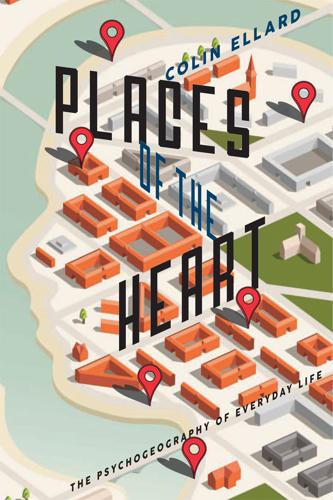
Places of the Heart: The Psychogeography of Everyday Life
by
Colin Ellard
Published 14 May 2015
Furthermore, the computing power of these devices exceeds by a wide margin the performance of computers that were available just a few decades ago. A single iPhone 5s, for example, which will soon be a model so antiquated that my teenaged children would be embarrassed to be seen with it in public, contains more memory and processing power than all of the computing equipment that powered the Apollo 11 mission to the moon. The same phone’s graphic capabilities outstrip the performance of the famous Cray supercomputers of the 1970s by a factor of a thousand.4 Much has been made of the transformation of everyday life that has been fueled by the development of this remarkable technology; it is beyond the ambit of this book for me to recount very much of it.
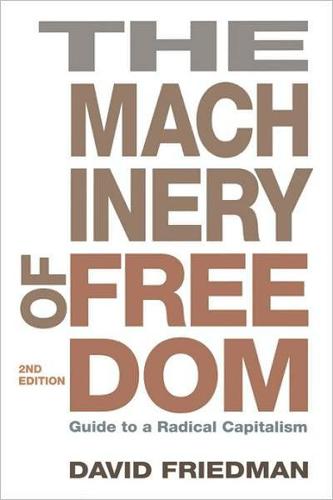
Machinery of Freedom: A Guide to Radical Capitalism
by
David Friedman
Published 2 Jan 1978
This job could perhaps be done better by firms whose sole business was such arbitration. A potential arbitrator has a multibillion dollar market now almost completely in the hands of a government monopoly selling low quality services at an exorbitant price. All you need to go into business is honesty, ingenuity, hard work, and luck. MIGHT HAVE BEEN Since Apollo 11 opposition to the space program has come almost entirely from critics on the left, who argue that it consumes resources badly needed on Earth. Few of them made that objection to Sputnik. Perhaps they object, not to the space race, but to America winning it, just as many of them oppose, not our intervention in Vietnam, but our choice of sides.

The Narcissist Next Door
by
Jeffrey Kluger
Published 25 Aug 2014
When the paper’s editors discovered what Blair had been doing, it responded the way any good publication should—which was to fire him on the spot and retract or correct all of the errors he had introduced into the paper’s pages. But for the Times, there was more. In its Sunday, May 11, 2003, edition, the paper published a 7,249-word story telling the tale of Blair—the kind of length not even the most globally important stories get. In the paper’s July 21, 1969, edition, the front-page story reporting the Apollo 11 moon landing ran just 3,151 words, less than half the column inches the editors determined that the decidedly less epochal tale of Blair warranted. And that didn’t even include the actual retractions—the whole point of the exercise—which went on for thousands of additional words in the same edition.

The Battery: How Portable Power Sparked a Technological Revolution
by
Henry Schlesinger
Published 16 Mar 2010
By the end of his life, he held more than eighty patents. However, his true gift was for speculating on future technology, and at several points his predictions proved uncannily accurate. He imagined space flight, including multistage rockets, space walks, and radar along with a manned lunar landing by 1970—missing the Apollo 11 date by about a year. What Gernsback either unleashed or promoted was the age of the radio hobbyist. Thousands of hobbyists around the country began building their own radio sets, first relying on units such as the Telimco, then improvising as they went along. Car batteries, spark coils, and even homemade batteries provided the power as they scavenged parts to build increasingly powerful transmitters.
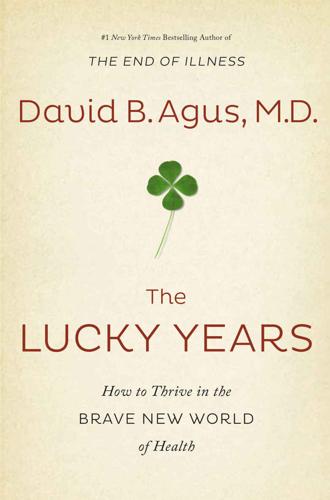
The Lucky Years: How to Thrive in the Brave New World of Health
by
David B. Agus
Published 29 Dec 2015
To my dear children, Sydney and Miles: On May 25, 1961, President John Fitzgerald Kennedy proclaimed, “I believe that this nation should commit itself to achieving the goal, before this decade is out, of landing a man on the moon and returning him safely to the earth.” On July 20, 1969, Neil Armstrong with the Apollo 11 crew fought to land the lunar module before it ran out of fuel. Armstrong eventually took that first step on the moon. The average age of the remarkable team at Mission Control in Houston was twenty-six years old. That means the scientists and engineers in Mission Control were just eighteen years old when Kennedy made his 1961 statement.

When the Money Runs Out: The End of Western Affluence
by
Stephen D. King
Published 17 Jun 2013
First of all, though, it's time to go back to the dreams of my youth, dreams that took us to the moon and led us to thoughts of life on Mars. CHAPTER ONE TAKING PROGRESS FOR GRANTED One of my earliest childhood memories was waking up at some ridiculously early hour of the morning to watch the late Neil Armstrong step out of the Eagle – Apollo 11's lunar module – and utter his now famous ‘one small step’ mini-speech. In the years that followed – alongside millions of other young boys – I became obsessed with space travel. I read articles and books which predicted – with considerable confidence, I might add – that lunar colonies would soon be established and that humans would be heading to Mars before the end of the twentieth century.
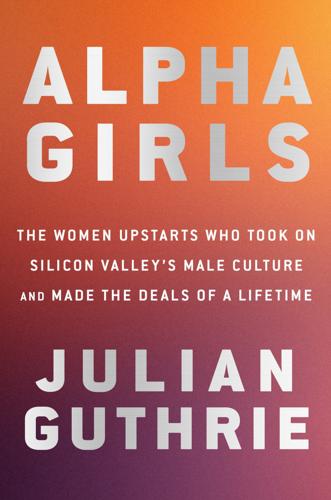
Alpha Girls: The Women Upstarts Who Took on Silicon Valley's Male Culture and Made the Deals of a Lifetime
by
Julian Guthrie
Published 15 Nov 2019
Could a digital bazaar become a significant thing? Wouldn’t shoppers want to flip through the pages of a book before buying it, or talk to an expert in a wine store, or try on a dress? The baffled disconnect reminded Magdalena of July 1969, when she was ten years old, growing up in Turkey, and listening to the news that Apollo 11 had landed a man on the moon. She had gushed about the historic landing for days afterward and couldn’t comprehend the shrugs or apathy. “What’s wrong with you guys?” she implored her friends. “America spent the money! Came up with the technology! This is a new frontier!” The incomprehension felt similar today, though the frontier this time was the nascent but boundless Internet.

Chasing New Horizons: Inside the Epic First Mission to Pluto
by
Alan Stern
and
David Grinspoon
Published 2 May 2018
The solution to this challenge was called the “fail-safe” data transmission. When he conceived it, Alan likened it to astronaut Neil Armstrong’s “contingency sample” collection, the first thing Armstrong did after stepping onto the Moon in 1969. Then the logic was to have something to show scientifically for the mission of Apollo 11 in case something went immediately wrong, and he and Buzz Aldrin had to suddenly abandon their moonwalk before more comprehensive lunar sampling could take place. Channeling the same logic, Alan asked Leslie’s PEP team to draw up a list of imaging, spectroscopy, and other data sets that could be fit into a fail-safe data transmission to be sent back to Earth just hours before the flyby’s closest approach, when the craft was still far enough from Pluto that there was no significant possibility of a lethal impact.
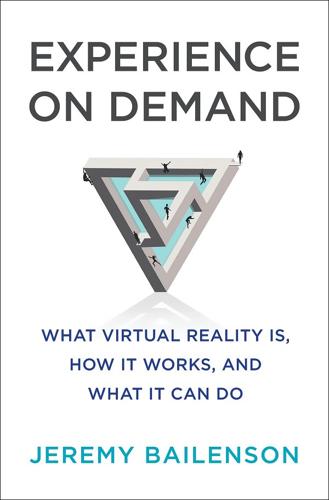
Experience on Demand: What Virtual Reality Is, How It Works, and What It Can Do
by
Jeremy Bailenson
Published 30 Jan 2018
He was nearing the end of the nine-day mission to the moon, and it had been packed with constant activity—scientific experiments, equipment monitoring, piloting the lunar module, collecting rocks, not to mention fraught hours dealing with equipment malfunctions during the descent to the surface. Once there, Mitchell, along with Apollo 11 veteran Alan Shepard, had also gone on two moonwalks, including one when Shepard famously hit golf balls with a club he’d fashioned from a 6-iron head and a lunar excavation tool. Mitchell’s primary duties on Apollo 14 were to perform science experiments during the trip to the moon and on the surface, and he was also the pilot of the landing module.
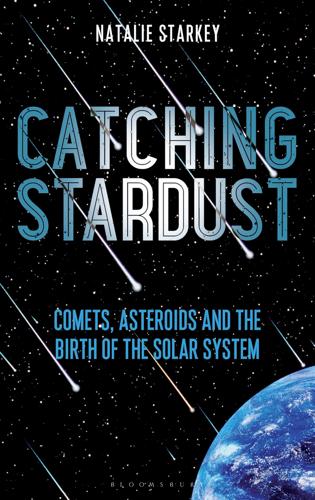
Catching Stardust: Comets, Asteroids and the Birth of the Solar System
by
Natalie Starkey
Published 8 Mar 2018
One of the major costs of a space mission is the amount of rocket fuel required to launch a payload from the surface of the Earth to escape Earth’s gravity and start its journey into space. Therefore, the amount of science that can be achieved on a space mission is severely limited by rocket motor design and thrust. The less fuel that’s needed the better, and the more likely a mission is to get funded and to be able to spend money on more exciting things. When Apollo 11 launched to the Moon in 1969, its total weight on the launch pad was 2,800 tonnes, of which fuel was 2,100 tonnes, or roughly 75 per cent. By contrast, the Apollo Lunar Module weighed 16 tonnes, less than 1 per cent of the launch weight. Of course, sturdy construction materials are generally heavy, and light ones are weak, so this is a key area of instrument planning.

Heart of the Machine: Our Future in a World of Artificial Emotional Intelligence
by
Richard Yonck
Published 7 Mar 2017
Many companies are betting on just that, doing the research and development they hope will lead to tomorrow’s predominant computing technology. What does this mean in real-world terms? It has been noted that the smartphones so many of us use each and every day have far more processing power and storage than the entire Apollo 11 moon landing program from more than four decades before. Perhaps an even more impressive statistic was reported by Udi Manber and Peter Norvig of Google when they wrote in 2012: When you enter a single query in the Google search box, or just speak it to your phone, you set in motion as much computing as it took to send Neil Armstrong and eleven other astronauts to the moon.
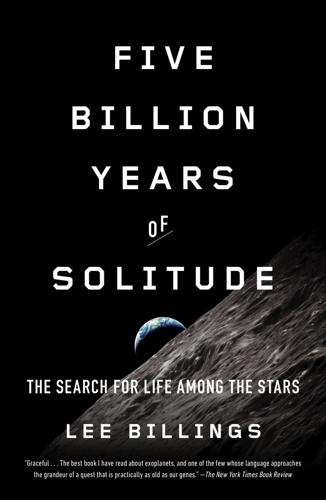
Five Billion Years of Solitude: The Search for Life Among the Stars
by
Lee Billings
Published 2 Oct 2013
Light from the Earth of Thales, Democritus, and other ancient Greeks now washes over the blazing newborn stars and shimmering molecular clouds of the Christmas Tree Cluster, just over 2,500 light-years distant. The Earth in the skies of the giant planets circling the Sun-like star HR 8799 has just begun transmitting in radio and perfecting the internal combustion engine. The first television transmissions of the 1930s now roll over the ice-blue stars of Regulus, and news of 1969’s Apollo 11 lunar landing has just reached the aging yellow suns of Capella. Whether any of this has actually found an audience somewhere out there, we cannot yet say. For all we know, the lively broadcast from Earth may be the only one of its kind in the observable universe. Viewed from the vicinity of the closest stars and compressed into a short time-lapse movie, our solar system’s birth and evolution would present an eerie picture.
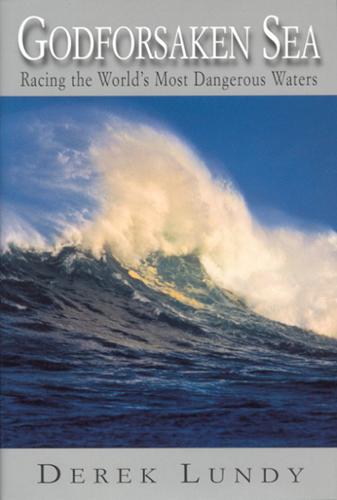
Godforsaken Sea
by
Derek Lundy
Published 15 Feb 1998
The Apollo astronauts, graduating from their warplanes to little capsules that were catapulted with negligible safety margins into orbit or to the barren wilderness of the moon, are the only humans who have been farther from the planet earth than sailors on the planet ocean. I remember reading that as the landing module from Apollo 11 was rising from the moon’s surface to dock with the mother ship the pulse rate of the mission commander, Neil Armstrong, rose to only ninety beats a minute. Even allowing for the calming effects of experience and preparation, this was the reaction of a man whose emotional and physiological response to danger is quite different from mine.

Falter: Has the Human Game Begun to Play Itself Out?
by
Bill McKibben
Published 15 Apr 2019
The appeal to human solidarity, to fellow feeling, reaches its limits at the borders of consciousness. So, we’d best get started soon if we’re going to get started at all. Epilogue Grounded I was eight years old in July 1969, and so, almost from the start, my dawning sense of the outside world included the larger universe. I watched Apollo 11 from hours before liftoff to the end of the mission a week later, switching off the television only for occasional bouts of parentally mandated sleep and for trips to the backyard, where I would stare at the moon in wonder. I memorized all the NASA acronyms (LEM, for “lunar excursion module”; EVA for “extravehicular activity,” which is to say, walking on another heavenly body).
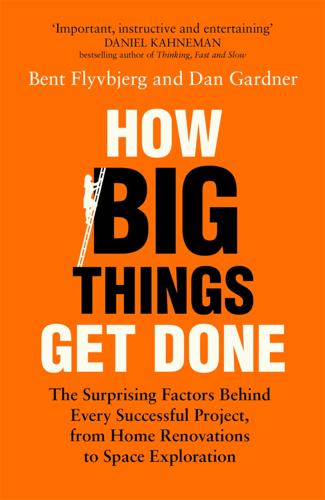
How Big Things Get Done: The Surprising Factors Behind Every Successful Project, From Home Renovations to Space Exploration
by
Bent Flyvbjerg
and
Dan Gardner
Published 16 Feb 2023
That’s what NASA effectively did with Project Apollo, as it conducted individual missions to test each of the steps that would be required to get to the moon and back: getting into orbit, maneuvering to another spacecraft, docking. Only when NASA had mastered a step did it go on to the next one. And only when it had mastered as many of the steps as it could test did it send Apollo 11 to the moon. But this sort of testing is almost never possible for big projects because it is too expensive. Project Apollo cost roughly $180 billion in 2021 dollars.26 Worse, it can be dangerous. The astronauts in Project Apollo all knowingly risked their lives. Three died. The “minimum viable product” model comes close to the impossible ideal by doing enough testing to bring the product up to the “minimum viable” standard before releasing it into the real world to get that valuable feedback.
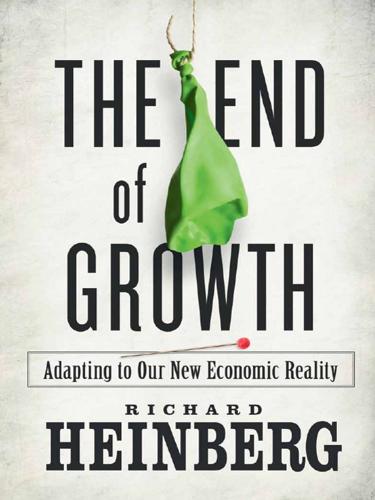
The End of Growth: Adapting to Our New Economic Reality
by
Richard Heinberg
Published 1 Jun 2011
My first computer was an early laptop, circa 1986. It cost $1600 and had no hard disk — just two floppy drives — plus a small non-backlit, black-and-white LCD screen. It boasted 640K RAM internal memory and a processing speed of 9.54 MH. I thought it was wonderful! Its capabilities dwarfed those of the Moon-landing Apollo 11 spacecraft on-board computer, developed by NASA over a decade earlier. My most recent laptop cost $1200 (that’s a lot to pay these days, but it’s a deluxe model), has a 250 gigabyte hard drive (holding about 200,000 times as much data as you could cram onto an old 3.5 inch floppy disk), 4 Gigs of internal memory, and a processing speed of 2.4 gigahertz.

Time Travelers Never Die
by
Jack McDevitt
Published 10 Sep 2009
Dave grinned, pleased that Shel had taken it so well. “There’s room for both of us,” he said. “Thanks.” Shel didn’t really need the money. They gave up on Camelot, and made the final stop on their grand tour, though neither knew it at the time, on the beach at Cape Kennedy, July 16, 1969, where they relaxed and watched the launch of Apollo 11. And the subject came up again. “You know,” said Shel, when it was over and the applause had died down, “I like the idea of collecting art.” “What did you have in mind?” “Michelangelo.” “That’s a good place to start.” “I mean, why bother with some relatively minor-l eague stuff when we could go get a portrait or something by him?”
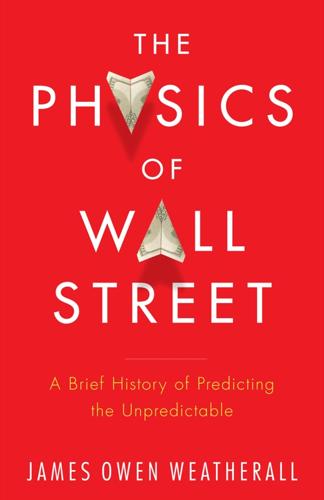
The Physics of Wall Street: A Brief History of Predicting the Unpredictable
by
James Owen Weatherall
Published 2 Jan 2013
On July 20, 1969, Neil Armstrong and Buzz Aldrin became the first men to set foot on the surface of the moon. America and its allies rejoiced — finally, an American victory in the space race. And almost immediately, the physics job market collapsed. As the space race accelerated, so too did America’s commitment to the war in Vietnam. The success of the Apollo 11 mission gave Nixon an excuse to divert funds from NASA and other research groups to the military effort. By 1971, NASA’s budget was less than half of what it had been in 1966 (in real terms). Meanwhile, college enrollment began to drop, largely because the Baby Boom years were over. Once the “Boomers” had graduated, universities stopped hiring new faculty members.
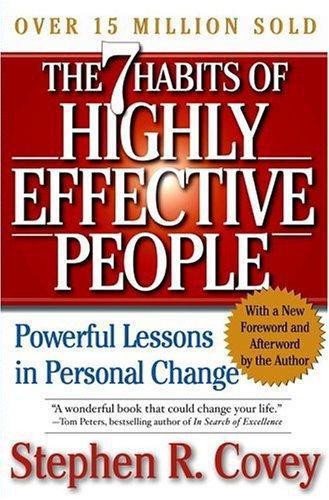
The 7 Habits of Highly Effective People: Powerful Lessons in Personal Change
by
Stephen R. Covey
Published 9 Nov 2004
We weave a strand of it everyday and soon it cannot be broken." I personally do not agree with the last part of his expression. I know they can be broken. Habits can be learned and unlearned. But I also know it isn't a quick fix. It involves a process and a tremendous commitment. Those of us who watched the lunar voyage of Apollo 11 were transfixed as we saw the first men walk on the moon and return to earth. Superlatives such as "fantastic" and "incredible" were inadequate to describe those eventful days. But to get there, those astronauts literally had to break out of the tremendous gravity pull of the earth. More energy was spent in the first few minutes of lift-off,in the first few miles of travel, than was used over the next several days to travel half a million miles.
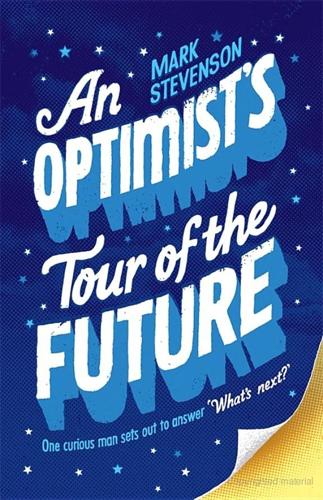
An Optimist's Tour of the Future
by
Mark Stevenson
Published 4 Dec 2010
(Of course if all those minerals ever made it to Earth, they would flood the markets, so the twenty-trillion-dollar valuation would plummet – but there’s still potentially big money in space-mining.) Others suggest that if we could afford to get more of our world leaders to see the Earth from space, they might embrace environmentalism and see the value of increased cooperation among nations. Apollo 11 astronaut Mike Collins said, ‘The overriding sensation I got looking at the Earth was, my God that little thing is so fragile out there,’ while Apollo 8’s Frank Borman told Newsweek that looking back at the Earth brought home the thought that ‘this really is one world and why the hell can’t we learn to live together like decent people?’

The Cancer Chronicles: Unlocking Medicine's Deepest Mystery
by
George Johnson
Published 26 Aug 2013
But we had hoped to be bestowed with some new laboratory finding, a promising clinical trial, some kind of Anderson magic. With the rest of the day to fill, we took a tour of the Lyndon B. Johnson Space Center south of central Houston and saw the old Mission Control Center, the nexus of operations for Apollo 11 when a human first walked on the moon. Anything seemed possible then. Back in the city we visited the Rothko Chapel. Years before when we had lived in New York, Mark Rothko and Jackson Pollock were two of our favorite artists at the Museum of Modern Art. Pollock’s drip paintings always left me feeling that I was peering inside the frenetic workings of a human brain—ideas looping and sparking in motions that teetered between order and chaos.
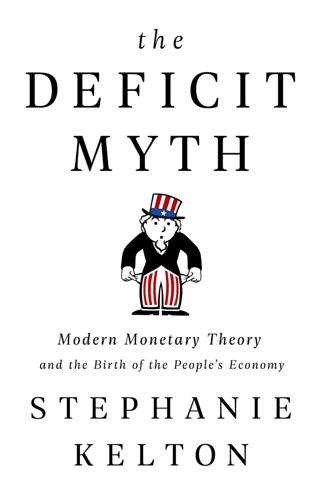
The Deficit Myth: Modern Monetary Theory and the Birth of the People's Economy
by
Stephanie Kelton
Published 8 Jun 2020
To manage the inflation risk, his administration pressured unions and private industry, urging them to keep wage and price increases to a minimum to avoid driving inflation higher. It worked. The economy grew, unemployment fell sharply, and inflation remained below 1.5 percent for the first half of the decade.47 Eight years after that famous speech, NASA’s Apollo 11 mission safely landed the first human beings on the moon. Today, almost all of us benefit in one way or another from that historic endeavor. As the economist Mariana Mazzucato put it, “the launching of Sputnik in 1957 by the Soviets led to an eruption of panic among US policy makers.”48 That panic gave rise to a space race that paved the way for the development of many of the things we now take for granted.

Dark, Salt, Clear: Life in a Cornish Fishing Town
by
Lamorna Ash
Published 1 Apr 2020
Each time I go on a new boat, I feel it is like meeting a stranger unwilling to give anything of herself away, just yet. I learn that the Filadelfia (PZ – Penzance – 542), is a 79-foot beam trawler. She was built in 1969, the same year man felt the Moon beneath his feet for the first time and, like Apollo 11 she is a voyager, transporting man away from familiar landscapes into the unknown, protecting her crew from the mysterious waters existing just outside her thick, steel, yellow-painted shell. It is often said we know more about the entirety of space than we do of the oceans whose ebbing borders touch our earth, as if it were more natural that the human eye be trained upwards through telescopes than down into the world’s depths.

Brotopia: Breaking Up the Boys' Club of Silicon Valley
by
Emily Chang
Published 6 Feb 2018
But when the ENIAC was introduced in the press in 1946, these six critical women were not mentioned or photographed. (If you saw the movie Hidden Figures, you get the idea.) In 1962, three black women working as NASA mathematicians helped calculate the flight paths that put John Glenn into orbit. A woman, Margaret Hamilton, also headed up the team that wrote the code that plotted Apollo 11’s path to the moon. At the time, the term “programmer” had the negative connotation of referring to women’s work. That’s because computers still involved a lot of manual, mechanical labor that was less like doing higher mathematics than like running a telephone switchboard. Computers were also associated with typing, a skill mostly acquired by secretaries, almost all of whom were then female.
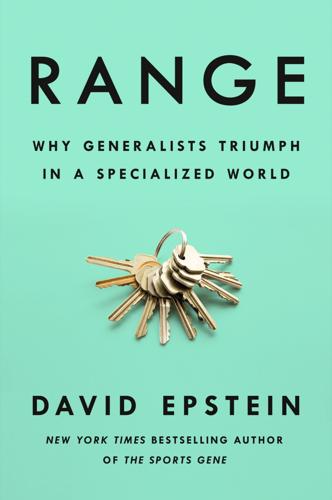
Range: Why Generalists Triumph in a Specialized World
by
David Epstein
Published 1 Mar 2019
But internally the Good Judgment Project incentivized collective culture. Commenting was an expectation; teammates were encouraged to vote for useful comments and recognized for process milestones, like a certain number of lifetime comments. Prior to Challenger, there was a long span when NASA culture harnessed incongruence. Gene Kranz, the flight director when Apollo 11 first landed on the moon, lived by that same mantra, the valorized process—“In God We Trust, All Others Bring Data”—but he also made a habit of seeking out opinions of technicians and engineers at every level of the hierarchy. If he heard the same hunch twice, it didn’t take data for him to interrupt the usual process and investigate.

Through the Glass Ceiling to the Stars: The Story of the First American Woman to Command a Space Mission
by
Eileen M. Collins
and
Jonathan H. Ward
Published 13 Sep 2021
Kennedy, Jr., his wife, and her sister had disappeared somewhere between New Jersey and Martha’s Vineyard. Like the rest of the country, we were shocked and saddened to watch the terrible story unfold over the weekend. Despite this awful news, excitement was building for our launch early Tuesday morning. July 20 was also the thirtieth anniversary of the Apollo 11 lunar landing. Neil Armstrong, Buzz Aldrin, and Michael Collins were coming to KSC for a celebration of that anniversary, and they planned to stay for our launch. I invited Lisa Reed and her training team to KSC as our guests to see us off. They were so wonderful in helping us prepare that I wanted to be sure they had a small reward for their hard work.
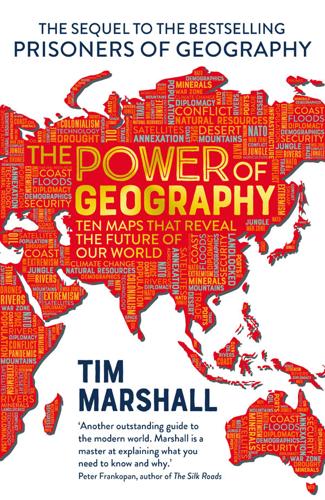
The Power of Geography: Ten Maps That Reveal the Future of Our World
by
Tim Marshall
Published 14 Oct 2021
In 1944 a V-2 became the first object fired into space, reaching a height of 176 kilometres following a vertical take-off. After the war von Braun and 120 other scientists were brought to the USA along with captured V-2s to begin work on the American space project, and twenty-four years later he was in the Kennedy Space Center watching as Apollo 11 set off for the first Moon landing. The Russians were busy too, and at times led the race. In the early twentieth century a self-educated and reclusive scientist, Konstantin Tsiolkovsky, was working on theories of spaceflight and was the first to work out that the escape velocity required to get into space was 8 kilometres a second and could be achieved using liquid fuel and multi-stage rockets.
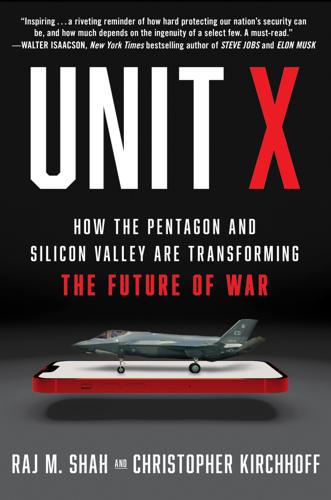
Unit X: How the Pentagon and Silicon Valley Are Transforming the Future of War
by
Raj M. Shah
and
Christopher Kirchhoff
Published 8 Jul 2024
Tribute notes and flowers were piled on either side of the door. On a cold January day ten weeks later, official Washington gathered to lay him to rest. The service was held in the cavernous National Cathedral. Carter would have liked that the sun was shining through a stained-glass window holding a moon rock, enshrined there by the crew of Apollo 11. The service was a time and a place where everyone who believed in the future Ash had envisioned came together once again. President Biden gave the eulogy. The Secretaries of State and Defense also spoke. The entire Joint Chiefs of Staff sat in a pew. Carter was the second of two giants to fall.

Nerds on Wall Street: Math, Machines and Wired Markets
by
David J. Leinweber
Published 31 Dec 2008
Upton Sinclair wrote, “It is difficult to get a man to understand something when his salary depends upon his not understanding it.” When I first tried to get some traction on understanding these issues, I hoped that this would turn out to be an unforeseeable, unavoidable confluence of independent events. It wasn’t. If Apollo 11 had ended up a pile of wreckage in the Sea of Tranquility, we might attribute it to a random accident or a bad component. If the same thing happened to Apollo 12, 13, 14, 15, 16, and 17, that conclusion would be unsupportable. Alan Greenspan and a few others are to be commended, if not applauded, for acknowledging their errors.
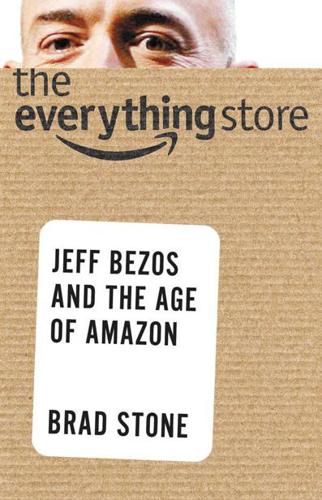
The Everything Store: Jeff Bezos and the Age of Amazon
by
Brad Stone
Published 14 Oct 2013
Star Trek was a fixture in the Bezos household in Houston, and they watched reruns in the afternoon after school. “We were all Trekkies. It got to the point where Jeff would quote the lines, he was so captivated,” says Jackie Bezos. The program reinforced a budding fascination with space exploration that had begun when he was five and watched the Apollo 11 moon landing on his family’s old black-and-white television. His grandfather, who two decades earlier had worked in the military’s research and development wing, the Advanced Research Projects Agency, or ARPA (now DARPA), also stoked this obsession, telling stories of rockets, missiles, and the coming wonders of space travel.
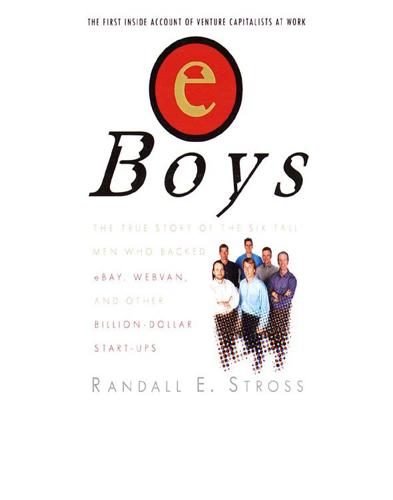
eBoys
by
Randall E. Stross
Published 30 Oct 2008
One unidentified venture capitalist described Webvan as a “moonshot,” a daring, high-risk venture, and the reporter wondered alternatively whether the company would end up becoming “the Internet era’s equivalent of Waterworld, a disaster so epic it becomes an American legend.” Such comparisons were made casually, but they are worthy of a second look because they throw into relief how Webvan was actually quite different from either a big-budget space program or a big-budget movie. One obvious difference was cost: Apollo 11’s 1969 landing on the moon was the culmination of eight years of manned space programs that had spent $24 billion. The Webvan moon-shot was a bargain, by comparison. It would be headed for an IPO having only burned up $50 million in capital. Not all start-ups that launch untested technology can start off with an ante of that size—Iridium, for example, burned through a $5 billion investment before its creditors and shareholders learned that there were virtually no customers for $5-a-minute wireless phone service anywhere around the globe.

Arriving Today: From Factory to Front Door -- Why Everything Has Changed About How and What We Buy
by
Christopher Mims
Published 13 Sep 2021
IMUs are now used in rockets, satellites, airplanes, drones, smartphones, smartwatches, and, of course, the autonomous driving systems in vehicles of every kind, including TuSimple’s trucks. Doc Draper’s first ever IMU, tested in 1949, weighed 3,000 pounds. One put into guided missiles in the early 1960s weighed about 120 pounds. A much-refined version of that IMU that flew on the Apollo 11 spacecraft in 1969 was the size of a volleyball and could be lifted by one person. Fast-forward to the present, through the commercialization of the integrated circuit and countless subsequent generations of Moore’s law, and the IMU in your phone or smartwatch has shrunk until it’s now about the size of a sesame seed—three millimeters square and 0.6 millimeters thick.

Deep Medicine: How Artificial Intelligence Can Make Healthcare Human Again
by
Eric Topol
Published 1 Jan 2019
With this system, if it can be used at hospitals in rural cities, then it will make the medical experience much better.”55 There are only twenty eye doctors for every million people in China, recapitulating the general trend for the country, where the proportions of various specialists to the population as a whole are one-third or less the proportions found in the United States. China is using more than 130 medical AI companies to promote efficiency and expand access in its healthcare system.56 Behind all this is major support. In 2018, the Chinese government issued its manifesto to become the world leader in AI, making the endeavor its own version of an Apollo 11 moon shot.57 Although there has been a talent gap between China and the United States, with the United States having a great many more computer scientists with AI expertise, that gap is quickly closing. Since 2014, more research papers have been published on DNN in China than in the United States.
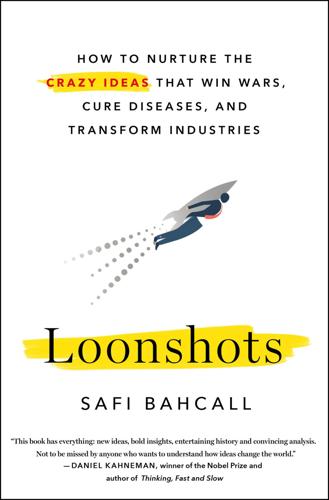
Loonshots: How to Nurture the Crazy Ideas That Win Wars, Cure Diseases, and Transform Industries
by
Safi Bahcall
Published 19 Mar 2019
His ideas were dismissed by academics and the military in the United States. A New York Times editorial stated that Goddard “seems to lack the knowledge ladled out daily in high schools,” namely that of Newton’s law on action and reaction, which made rocket flight impossible. (Forty-nine years later, the day after the successful launch of the Apollo 11 rocket to the moon, the paper issued a retraction. It announced that rockets did not in fact violate the laws of physics and that “the Times regrets the error.”) Scientists in Germany, however, had taken Goddard’s ideas seriously. They began their program after reading his papers. Years later, a German officer being grilled by American officers about their V-2 rocket program exclaimed, “Why don’t you ask your own Dr.
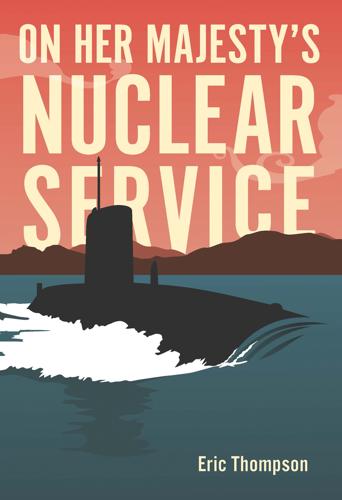
On Her Majesty's Nuclear Service
by
Eric Thompson
Published 18 Apr 2018
It was the first time they had exercised with a real submarine and to mark the occasion, the first helicopter lowered a box of Sea King ties as a memento. But that was not the only first of the day. I was on low-stress periscope watch, quietly surveying the Cornish coast, when news came in that man had landed on the Moon. Apollo 11 had made it. Better still, the first human to set foot on the moon was a Naval Officer – Neil Armstrong was a US Navy pilot. There was I sunbathing through the periscope in an antique submarine while up there on the Moon was a blood brother. Yes, I was definitely playing non-league football. That night, I surveyed the Moon in great detail through our high-powered Search Periscope and tried to imagine another human being up there on its surface. **** Andrew was a maid-of-all-work.

Tripping on Utopia: Margaret Mead, the Cold War, and the Troubled Birth of Psychedelic Science
by
Benjamin Breen
Published 16 Jan 2024
After the Communication Research Institute’s funding ran out in 1968, he had found a position at a Maryland psychiatric research lab that allowed him to continue his LSD experiments. But early in 1969, he resigned from the position and moved to the Esalen Institute in Big Sur to take a series of self-exploration courses. After they ended, he stuck around. While the Apollo 11 mission was heading to the moon in July 1969, Lilly was inhabiting a succession of hot tubs, treehouses, and verandas, reassessing his life. At one point, he began dictating what he called “a series of metaprograms in blank verse” into his tape recorder while standing at dawn on a cliff overlooking the Pacific.

The Everything Blueprint: The Microchip Design That Changed the World
by
James Ashton
Published 11 May 2023
Engineers and customers alike are primarily interested in what these chips are capable of, rather than numerical bragging rights. Progress is shrinking a room-sized machine to a portable gadget; it is the iPhone, the ‘everything device’ that offers 100,000 times more processing power than the computer that guided Apollo 11 to the first moon landing in 1969. It is collapsing together numerous appliances – the phone, camera, calculator and games console – because it can, because the technology meets the vision. Making microchips is a global endeavour. The sand from which silicon is extracted could be dug from one of several leading mines such as the Quartz Corporation’s Spruce Pine facility in North Carolina and then shipped to the village of Drag in northern Norway for refinement – the first sign that high-value, light-weight goods mean distance is no object.
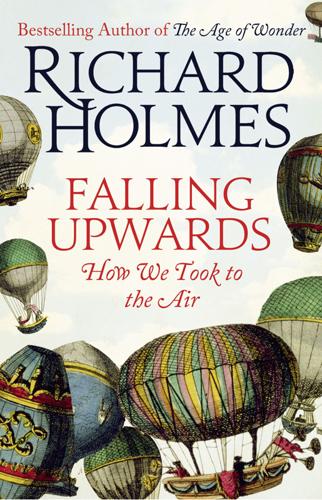
Falling Upwards: How We Took to the Air
by
Richard Holmes
Published 24 Apr 2013
‘Airabelle’, the heavenly cow, a regular favourite at the annual Albuquerque Balloon Fiesta, New Mexico, a folksy icon of American good humour and goodwill. The renowned ‘mass dawn ascent’ at the Albuquerque Fiesta, photographed by Richard Holmes, 2010. ‘Earthrise’, the famous environmentalist image, this time photographed from Apollo 11, July 1969. ‘The dream of flight is to see the world differently.’ Footnotes fn1 A transcendent cluster of philanthropic balloons also appears in the classic French film The Red Balloon, but with happier consequences. Shot in the backstreets of Paris, significantly in the time of recovery after the Second World War, it was directed by Albert Lamorisse and won both an Oscar and the Palme d’Or for short films at Cannes in 1956.

Machines of Loving Grace: The Quest for Common Ground Between Humans and Robots
by
John Markoff
Published 24 Aug 2015
The political battle over the human in the loop was waged over two divergent narratives: that of the heroic astronauts landing on the surface of the moon and that of the specter of a catastrophic accident culminating in the deaths of the astronauts—and potentially, as a consequence, the death of the agency. The issue, however, was at least temporarily settled when during the first human moon landing Neil Armstrong heroically took command after a computer malfunction and piloted the Apollo 11 spacecraft safely to the lunar surface. The moon landing and other similar feats of courage, such as Wally Schirra’s decision not to abort the earlier Gemini flight, have firmly established a view of human-machine interaction that elevates human decision-making beyond the fallible machines of our mythology.

Geek Heresy: Rescuing Social Change From the Cult of Technology
by
Kentaro Toyama
Published 25 May 2015
Like India today, the United States was buoyed by an entrepreneurial spirit. A battle against America’s rent-seeking political corruption was fought effectively in the nineteenth century.10 Consumer culture, now burgeoning in India, was all but invented in the United States circa 1920. And Indian pride in their Mars orbiter echoes American sentiment toward Apollo 11, the world’s first moon landing. Despite huge differences in culture and history, there is no denying the commonalities among societies that experience socioeconomic growth. I grew up partly in Japan and partly in America. Despite the differences between the two countries, the repeating patterns of modernization were evident: Infrastructure tends to improve, technology to proliferate, government to become more efficient, parents to have fewer children, industrial employment to overtake agriculture, and gender disparities to shrink.11 When I landed in India, I felt a sense of déjà vu.

Happy City: Transforming Our Lives Through Urban Design
by
Charles Montgomery
Published 12 Nov 2013
—Buckminster Fuller, 1969 In 1969 a consortium of European industrial interests charged a young American economist with figuring out how people would move through cities in the future. There was a lot of money to be made by whoever could divine the single technology most likely to capture the market in the coming decades. It was the era of James Bond gadgets and Apollo 11. Everyone was sure that some fabulous new machine would emerge to change everything. Eric Britton dove into the task. He gave his clients a thorough accounting of even the most fantastical possibilities. He keeps the faded report on a shelf in his apartment, a few blocks from the Luxembourg Gardens in Paris’s Sixth Arrondissement.
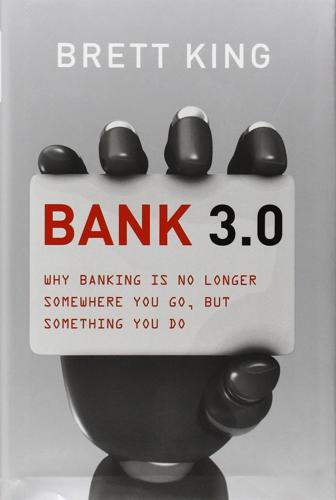
Bank 3.0: Why Banking Is No Longer Somewhere You Go but Something You Do
by
Brett King
Published 26 Dec 2012
Well, that computer, which was at the height of computing technology in the ’70s, had around 32k of memory and ran at a clock speed of 1.024 MHz. When the IBM PC XT launched in 1981 it was already about eight times faster than the Apollo computer. The current iPhone 4S is roughly two million times more powerful than the Apollo 11 Guidance Computer that landed men on the moon. In fact, the first iPhone model (the 2G as it is now known) had more computing power in one handheld device than NASA had in its entirety in 1970. Figure 9.2: Apollo Guidance Computer (circa 1970) Credit: Draper Labs Those little musical greeting cards with a chip inside them to play a tune have more computing power than all the Axis and Allied forces had combined in World War II.

Entangled Life: How Fungi Make Our Worlds, Change Our Minds & Shape Our Futures
by
Merlin Sheldrake
Published 11 May 2020
now known as astrobiology: In response to Lederberg’s concerns about interplanetary infection, NASA developed ways to sterilize spacecraft before departure from Earth. These have not been entirely successful: There is a thriving volunteer population of bacteria and fungi aboard the International Space Station (Novikova et al. [2006]). When the Apollo 11 mission returned from the first trip to the moon in 1969, the astronauts were isolated in stringent quarantine in a converted Airstream trailer for three weeks (Scharf [2016]). several hours a day: It had been known that bacteria are capable of acquiring DNA from their surroundings since the work of Frederick Griffith in the 1920s, later confirmed by Oswald Avery and his colleagues in the early 1940s.

Tobacco: A Cultural History of How an Exotic Plant Seduced Civilization
by
Iain Gately
Published 27 Oct 2001
They succeeded in their first objective in 1962 when John Glenn, a cigar smoker, became the first American to orbit the earth. He was presented with his own weight in cigars upon his return from space. The United States’ second off-world objective was achieved in 1969 when Space Commander Neil Armstrong, climbed down out of the Apollo 11 mission’s lunar module and stepped on to luna firma. He was later joined by Space Captain Buzz Aldrin on the face of the ancients’ Goddess of Love. Commander Armstrong was a pipe smoker in the true explorer’s mould, although he did not take his instrument of pleasure with him into space. Nevertheless, this small step by a smoker, yet giant for mankind, was a measure of the distance the weed had travelled from humble scrub to accompanying humanity (internally) to the moon and back.
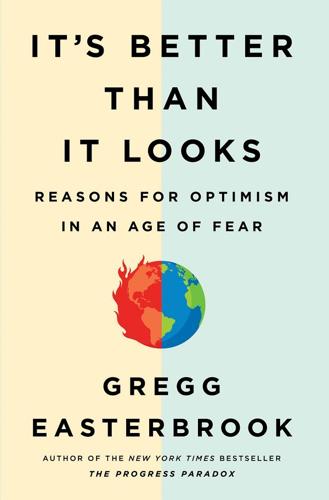
It's Better Than It Looks: Reasons for Optimism in an Age of Fear
by
Gregg Easterbrook
Published 20 Feb 2018
The second play was Arthur Miller’s A View from the Bridge, which premiered in 1955, just before Miller wed Marilyn Monroe. The illegal immigrants believed by the play’s protagonist to be ruining America are not from Syria or Yemen, rather, from Italy. The movie was Easy Rider, premiering the same month as the Apollo 11 moon landing and starring Jack Nicholson. The musical was West Side Story, which premiered on Broadway in 1957. The Jets gang wants the Sharks gang out of New York City. Members of the Jets consider the Sharks encroaching foreigners, though the latter are from Puerto Rico, where, since 1917, anyone born is a US citizen.
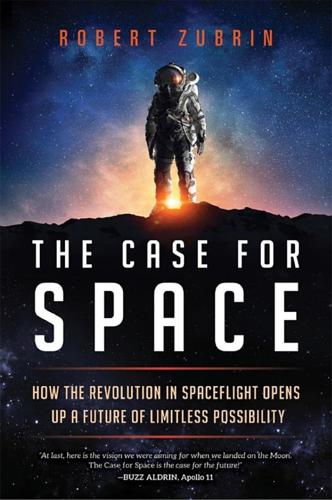
The Case for Space: How the Revolution in Spaceflight Opens Up a Future of Limitless Possibility
by
Robert Zubrin
Published 30 Apr 2019
He applies a rigor to mission plans that NASA can only admire—though it doesn't—and try to emulate. His realism is the key to our larger future.” —Gregory Benford, author of The Berlin Project “At last, here is the vision we were aiming for when we landed on the Moon. The Case for Space is the case for the future!” —Buzz Aldrin, Apollo 11 “Zubrin is one of our generation's thought leaders in space exploration, and with The Case for Space he makes another major contribution to humanity's journey to the stars. We are several human generations since Apollo, yet nation-states have retreated from their once-bold path beyond our planet.
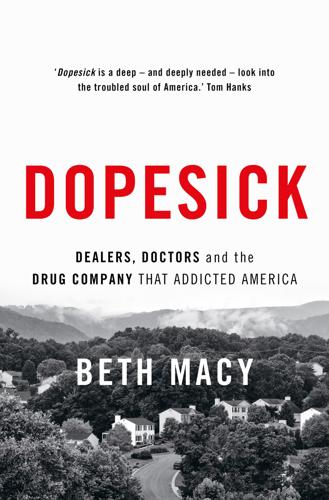
Dopesick: Dealers, Doctors and the Drug Company That Addicted America
by
Beth Macy
Published 4 Mar 2019
The company was virtually unheard of when a trio of research psychiatrists and brothers—Mortimer, Raymond, and Arthur Sackler—bought it from its original Manhattan-based owners in 1952, with only a few employees and annual sales of just $20,000. The new owners made their initial fortunes specializing in such over-the-counter products as laxatives, earwax remover, and the antiseptic Betadine, used to wash down the Apollo 11 spacecraft after its historic mission to the moon. Expanding internationally in the 1970s, the Sacklers acquired Scottish and British drug companies and paved the way for their entry into the pain-relief business with the development of an end-of-life painkiller derived from morphine, MS Contin, in 1984.

More Everything Forever: AI Overlords, Space Empires, and Silicon Valley's Crusade to Control the Fate of Humanity
by
Adam Becker
Published 14 Jun 2025
“K–T extinction,” May 29, 2024, www.britannica.com/science/K-T-extinction. 83 Peter Brannen (@PeterBrannen1), Twitter (now X), December 10, 2018, https://x.com/PeterBrannen1/status/1072174222967898112. 84 Ibid. 85 Dvorsky, “Humans Will Never Colonize Mars.” 86 This is the speed that the Apollo missions reached on hitting Earth’s atmosphere: W. David Woods, Kenneth D. MacTaggart, and Frank O’Brien, “Apollo 11 Day 9, Part 2: Entry and Splashdown,” Apollo Flight Journal, last modified March 3, 2021, www.nasa.gov/history/afj/ap11fj/27day9-entry.html. This is also roughly the speed that any object leaving the moon at its escape velocity would reach after falling from the Moon’s orbit down to Earth’s atmosphere—just as the Apollo missions did. 87 Mike Brown, “SpaceX Mars City: Legal Experts Respond to ‘Gibberish’ Free Planet Claim,” Inverse, November 3, 2020, updated February 20, 2024, www.inverse.com/innovation/spacex-mars-city-legal. 88 Ibid. 89 For much, much more on the ways developing space technology can make the world less safe, see Deudney’s excellent Dark Skies.
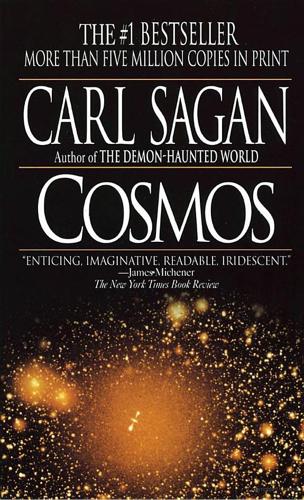
Cosmos
by
Carl Sagan
Published 1 Jan 1980
But the Voyager spacecraft will plunge on, penetrating the heliopause sometime in the middle of the twenty-first century, skimming through the ocean of space, never to enter another solar system, destined to wander through eternity far from the stellar islands and to complete its first circumnavigation of the massive center of the Milky Way a few hundred million years from now. We have embarked on epic voyages. *Or, to make a different comparison, a fertilized egg takes as long to wander from the fallopian tubes and implant itself in the uterus as Apollo 11 took to journey to the Moon; and as long to develop into a full-term infant as Viking took on its trip to Mars. The normal human lifetime is longer than Voyager will take to venture beyond the orbit of Pluto. *We even know what gifts they brought the Court. The Empress was presented with “six little chests of divers pictures.”

Endurance: A Year in Space, a Lifetime of Discovery
by
Scott Kelly
and
Margaret Lazarus Dean
Published 14 Aug 2017
It’s a great Twitter moment, unplanned and unscripted, and it gets thousands of likes and retweets. Not long after, a reply appears from Buzz Aldrin: “He’s 249 miles above the earth. Piece of cake. Neil, Mike & I went 239,000 miles to the moon. #Apollo11.” There is no good way to engage in a Twitter debate with an American hero, so I don’t. In my mind, I reflect on the fact that the crew of Apollo 11 spent eight days in space, traveling half a million miles; by the time I’m done I will have spent a total of 520 days in space and will have traveled over two hundred million miles, the equivalent of going to Mars and back. Only later, when the Twitter chat is over, do I have the chance to reflect that I just experienced being trolled, in space, by the second man on the moon, while also engaging in a Twitter conversation with the president.

Concretopia: A Journey Around the Rebuilding of Postwar Britain
by
John Grindrod
Published 2 Nov 2013
The green space between the homes had been done away with, and the meanly proportioned houses were crammed together, separated only by the width of an alleyway. Here was a version of Span that had shrunk in the wash. ‘Happiness is an adopted frog,’ announced an advert in The Times in June 1969, a month before Apollo 11 landed on the moon. ‘Come home to New Ash Green.’ The blurb was persuasive – invasive, almost. ‘Span is building a village with your children in mind.’18 The advert campaign was pure Mad Men, slick and shameless. ‘A complete village, entire in itself, with a choice of 18 brilliantly designed “homes for all seasons”’ went another.
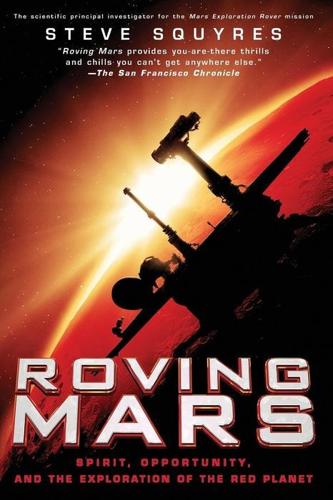
Roving Mars: Spirit, Opportunity, and the Exploration of the Red Planet
by
Steven Squyres
Published 2 Aug 2005
He opened it while sitting in the back of the room during the Opportunity science assessment meeting. It didn’t take him long to figure out that somebody was putting him on, but for about five seconds the look on his face was priceless. We’re a very happy team tonight. And we’ve finally picked a name for our little hole in the ground. We’re going to call it Eagle Crater, after the Apollo 11 Lunar Module, using the ships-of-exploration theme that didn’t quite make the cut back at Gusev. And it’s also got a nice little double meaning. If you’re golfing on a par three hole, an eagle is a hole in one. OPPORTUNITY SOL 48 We’ve done it. The Mössbauer spectrum of the Berry Bowl is down, and it’s got by far the strongest hematite signal we’ve ever seen.
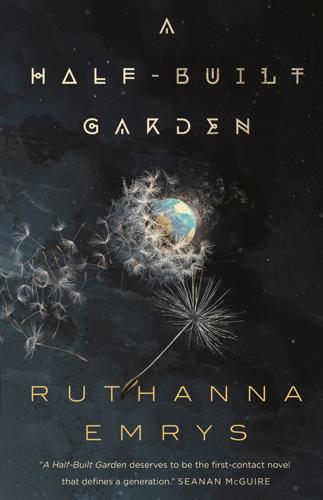
A Half-Built Garden
by
Ruthanna Emrys
Published 25 Jul 2022
Grand arched windows looked out over possibly-no-longer-functional balconies and the white-columned, red-roofed buildings beyond. The hallways had been lined with “Treasures of Earth,” which is to say everything they’d been able to pry loose from the Smithsonian. Perfectly preserved trilobites and a hadrosaur skull mixed with an Apollo 11 spacesuit, an oil painting of fantastically cragged mountains, a statue of a woman with such an expression of peace on her face that it took my breath away. But it was the side rooms—still marble-floored, but recognizably kin to the conference rooms I’d seen before—that ultimately caught my attention.

The War Below: Lithium, Copper, and the Global Battle to Power Our Lives
by
Ernest Scheyder
Published 30 Jan 2024
Lithium was used to make greases during the Second World War, giving tanks operated by the Allies an advantage over their Nazi rivals. After the war, lithium was used to help build hydrogen bombs, the development of which by the United States made it the largest lithium producer in the world thanks to mines that would be developed in North Carolina and a brine evaporation facility in Nevada. Buzz Aldrin, the Apollo 11 astronaut, speaks fondly in his memoir of a lithium derivative known as lithium hydroxide, largely because it helps absorb carbon dioxide—a critical function in the recesses of space.5 For reasons that are still unclear to modern medicine, lithium has some kind of balancing effect on nerve receptors in the human brain.

Physics of the Future: How Science Will Shape Human Destiny and Our Daily Lives by the Year 2100
by
Michio Kaku
Published 15 Mar 2011
(In 1903, the Times declared that flying machines were a waste of time, just a week before the Wright brothers successfully flew their airplane at Kitty Hawk, North Carolina. In 1920, the Times criticized rocket scientist Robert Goddard, declaring his work nonsense because rockets cannot move in a vacuum. Forty-nine years later, when Apollo 11 astronauts landed on the moon, the Times, to its credit, ran the retraction: “It is now definitely established that a rocket can function in a vacuum. The Times regrets the error.”) The lesson here is that it is very dangerous to bet against the future. Predictions for the future, with a few exceptions, have always underestimated the pace of technological progress.
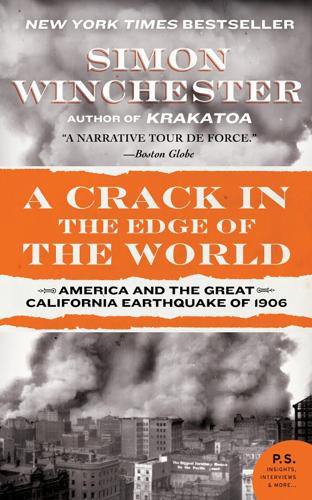
A Crack in the Edge of the World
by
Simon Winchester
Published 9 Oct 2006
(Only two other luminaries of the town are thought worthy of mention, and both are by contrast memorably forgettable: one a heavily moustachioed hero of the Civil War who fought at Vicksburg; the other the screenwriter of The Bells of St Mary’s, who also happened to have invented a device allowing naval vessels to lift mines harmlessly from the seabed.) The town’s website is where all this is so serendipitously revealed. It opens with a scratchy sound recording of an unnamed baritone reading a launch-pad countdown. He follows this with the announcement of the liftoff, in July 1969, of the Apollo 11 spacecraft, a ship that is destined, he says gravely, for the moon. And while his voice is intoning on what turns out to be an original NASA recording, an image of the moon swirls and grows steadily bigger on the screen – until it is eventually replaced, with a booster’s flourish, by an image of a bustling community and, in bold, the name of the town: Wapakoneta.

More: The 10,000-Year Rise of the World Economy
by
Philip Coggan
Published 6 Feb 2020
Another tricky issue is adjusting prices for changes in the quality of products; in other words, when we get a lot more features for the same price. This book’s introduction recounted the changes in the quality of light from fires to candles to LED bulbs. A smartphone has more computing capacity than NASA did when it sent Apollo 11 to the moon.8 A modern TV is lighter, less prone to failure, and carries many more channels than did its counterpart in the 1970s. Economists try to make adjustments for these “hedonic” improvements but may not get it right. All these objections also apply to the GDP deflator. So as well as overestimating or underestimating inflation, economists may be overstating or understating real GDP growth.

Track Changes
by
Matthew G. Kirschenbaum
Published 1 May 2016
In 1973, when he served as president of the Science Fiction Writers of America, Pournelle believed there were fewer than twenty SF authors in the country who could make a living from sales of their writing.22 But the times were rapidly changing. Interest in the SF genre had been piqued by real-world events throughout the 1960s, a decade that began under the shadow of Sputnik 1 and concluded with the Apollo 11 moon landings in fulfillment of John F. Kennedy’s pledge. The same decade saw the debut of Star Trek in 1966 and Kubrick’s 2001: A Space Odyssey in 1968; Frank Herbert’s Dune (1965), meanwhile, proved that written SF could also produce blockbusters. Science fiction was increasingly in demand, but changes in the publishing landscape were also mitigating away from the dominance of SF’s early serial publications and more toward novels as the basic economic unit of the genre.23 Increased reader demand, coupled with greater expectations for long-form work: that meant opportunity, but it also “presented a problem,” as Pournelle notes in a typical summation: “In order to make a living at writing I had to write a lot, and writing is hard work.
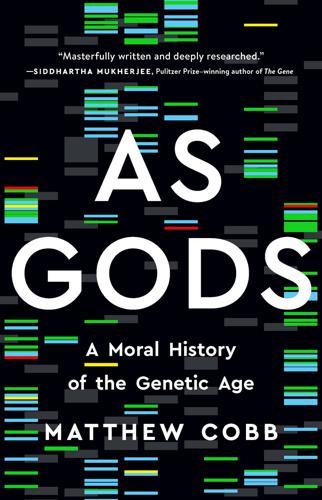
As Gods: A Moral History of the Genetic Age
by
Matthew Cobb
Published 15 Nov 2022
Nevertheless, the term ‘Andromeda Strain’ soon mutated from Crichton’s original alien epidemic to mean any out-of-control infection, including one created accidentally. It became a microbial synonym for ‘Frankenstein’. Scientists could protest that The Andromeda Strain was science fiction, but a plague from space was exactly what NASA had been afraid of when the Apollo 11 astronauts returned from the Moon and were immediately quarantined. Recombinant DNA looked exactly like the realisation of science fiction’s dreams and was fêted as such. And as fiction is fond of telling us, dreams can become nightmares. Australian newspaper cartoon from 1976 explaining the controversy over recombinant DNA, showing how the issue spread all around the world
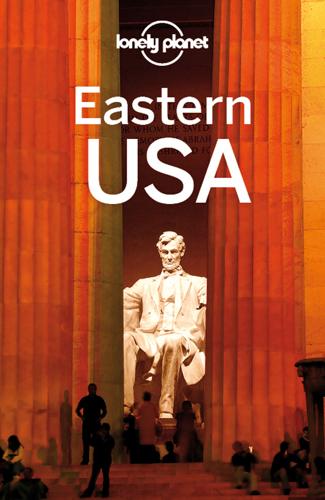
Eastern USA
by
Lonely Planet
Be prepared for lines and bag checks. National Air & Space Museum MUSEUM (cnr 6th St & Independence Ave SW) The Air & Space Museum is the most popular Smithsonian museum; everyone flocks to see the Wright brothers’ flyer, Chuck Yeager’s Bell X-1, Charles Lindbergh’s Spirit of St Louis and the Apollo 11 command module. An IMAX theater, planetarium and ride simulator are all here (adult/child $9/7.50 each). More avionic pieces reside in Virginia at the Steven F Udvar-Hazy Center (Click here), an annex to hold this museum’s leftovers. National Museum of Natural History MUSEUM (cnr 10th St & Constitution Ave SW) A favorite of the kids, the Museum of Natural History showcases dinosaur skeletons, an archae- ology/anthropology collection, wonders from the ocean, and unusual gems and minerals, including the 45-carat Hope Diamond.
…
The complex comprises open-air animal enclosures, an aviary, gardens and a planetarium. In nearby Hampton, the Virginia Air & Space Center ( 757-727-0900; www.vasc.org; 600 Settlers Landing Rd; adult/child $12/10; 10am-5pm Mon-Wed, to 7pm Thu-Sun) will fascinate budding aeronautic geeks with exhibits like the Apollo 11 command module and a DC-9 passenger plane. IMAX films cost extra. Virginia Beach With 35 miles of sandy beaches, a 3-mile concrete oceanfront boardwalk and nearby outdoor activities, it’s no surprise that Virginia Beach is the largest city in the state (population 438,000) and a prime tourist destination.
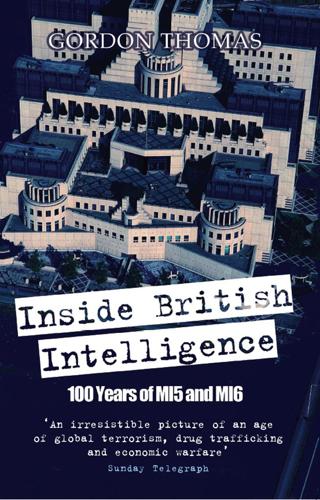
Inside British Intelligence
by
Gordon Thomas
Her enemy, as in India, would be Soviet spies, only instead of typing up reports of their activities for her MI5 boss in Delhi, she would be on the first rung of tracking them down herself. It was a heady prospect, which filled her with excitement as the train rumbled under the streets of London. Passengers were reading newspapers filled not only with the continuing threat of the cold war but the successful NASA mission of the Apollo 11 manned flight to the moon. A feat so extraordinary it had involved twenty thousand contractors employing three hundred thousand skilled workers. It was capped by Neil Armstrong planting his size 9½ boot on the lunar surface and pronouncing, “That’s one small step for [a] man, one giant leap for mankind.”
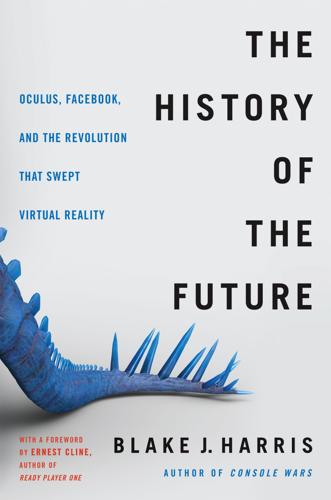
The History of the Future: Oculus, Facebook, and the Revolution That Swept Virtual Reality
by
Blake J. Harris
Published 19 Feb 2019
But the professor in him couldn’t help it. Or maybe, now in retrospect, that was why he became a professor. “So there’s this thing called a kinematic singularity,” LaValle explained, speaking in a pedantic-very-unpretentious Jeff Goldblum–esque manner. “It’s related to gimbal lock, which you might remember in relation to Apollo 11—No takers? That’s okay, interesting story for another day!—the long story short is that when you’re dealing with 3-D transformation, if you don’t really, really know what you’re doing, then quick movements straight up and straight down will misalign the tracking system.” Iribe opened his mouth but didn’t know how to reply.
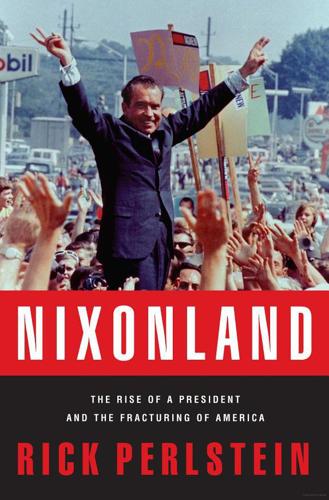
Nixonland: The Rise of a President and the Fracturing of America
by
Rick Perlstein
Published 1 Jan 2008
And if it wasn’t enough that men were also about to fulfill JFK’s dream of walking on the moon, and on Richard Nixon’s watch, a certain Kennedy brother, surfing so gracefully heretofore, had just suffered a calamitous wipeout. He was returned to the cover of Time—wearing a neck brace and a pained, guilty expression. CHAPTER NINETEEN If Gold Rust AT 11:15 P.M. ON JULY 18, 1969, THE APOLLO 11 ASTRONAUTS WERE CIRCLING the moon and in Martha’s Vineyard a ’67 Oldsmobile veered from a ten-foot-wide bridge near the road to the Chappaquiddick ferry. It was found eight hours later by two boys looking for a fishing spot. Fire department scuba divers pried out a dead body inside. The police chief tracked the license number to the driver, who had escaped, then wandered to a nearby restaurant, asked friends to drive him to the inn where he was staying, then walked around “for a period of time,” never mentioning he had been in an accident.
…
At First Division Headquarters, the camera panned over the crowd, the traditional mocking banners (WELCOME, BING CROSBY!)—but many weren’t wearing shirts; most had shaggy hair; some wore mustaches and necklaces with garish medallions. Tom Sawyer–faced Neil Armstrong, the first man to step on the moon, an icon of the new square chic—he brought his fraternity pin along on Apollo 11—did a question-and-answer session. The NBC cameras trained upon a blond nurse in hippie sunglasses asking him in all earnestness “when you’re going to take the first woman to the moon.” Armstrong answered with leering innuendo. Bob chimed in with a joke about diet-conscious ladies: “I’m sure they’ll all go when they find they can go up there and be weightless.”
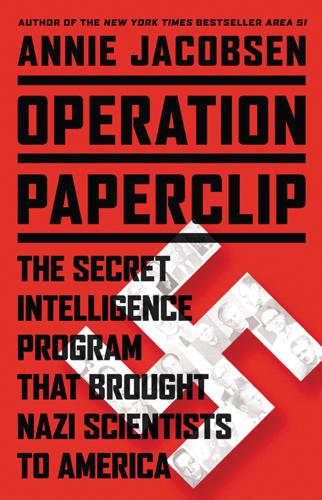
Operation Paperclip: The Secret Intelligence Program That Brought Nazi Scientists to America
by
Annie Jacobsen
Published 11 Feb 2014
The judge prosecuting the Essen-Dora trial also took the testimony of General Dornberger, in Mexico, where the now-retired Dornberger spent winters with his wife. Some months later, von Braun and Dornberger corresponded about the matter. “In regards to the testimony, fortunately I too have heard nothing more,” wrote von Braun. No news was good news for both men. After the Apollo 11 moon landing in July 1969, columnist Drew Pearson—whose fierce exposés of Major General Dr. Walter Schreiber had helped to banish the man from America—wrote in his column that von Braun had been a member of the SS. But von Braun’s glory had reached epic proportions, and Pearson’s article went by relatively unnoticed.
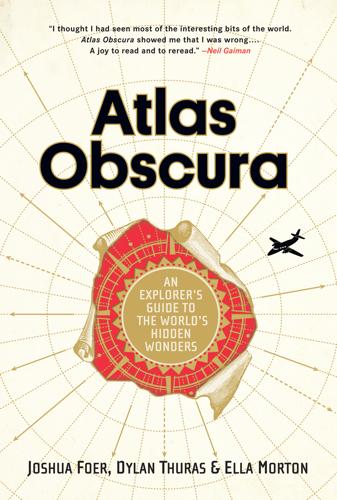
Atlas Obscura: An Explorer's Guide to the World's Hidden Wonders
by
Joshua Foer
,
Dylan Thuras
and
Ella Morton
Published 19 Sep 2016
Christopher Rader, then age twelve, submitted a crowd-pleasing drawing of Darth Vader. The sci-fi villain is not the cathedral’s only unconventional architecture. Other decorative sculptures include a raccoon, a girl with braces, and a grinning man holding an umbrella. One of the stained glass windows honors the Apollo 11 moon landing and contains a fragment of lunar rock. 3101 Wisconsin Avenue, NW, Washington. You will need binoculars to see Darth Vader. From inside the cathedral, go through the wooden doors near the Abraham Lincoln statue. Stand on the grass to your right and turn around to look at the closest tower.

This Is How They Tell Me the World Ends: The Cyberweapons Arms Race
by
Nicole Perlroth
Published 9 Feb 2021
We still do not know where—with two glaring exceptions—these zero-days came from, whether they were developed “in-house” by TAO or Israel’s Unit 8200 or procured off the underground market. What we do know is that the worm—in its final form, 500 kilobytes—was fifty times bigger than anything discovered before it. It was one hundred times the kilobytes required to send Apollo 11 to the moon. And it was pricey, easily worth millions of dollars. But, held against a single $2 billion B-2 bomber, it was a Costco bargain. Each of the seven zero-days played a critical role in getting their worm into the Natanz computers and crawling its way into the centrifuges. The first was a zero-day in Microsoft software that allowed the worm to jump from the infected thumb drive onto Natanz’s computers.

USA Travel Guide
by
Lonely, Planet
Be prepared for lines and bag checks. National Air & Space Museum MUSEUM (cnr 6th St & Independence Ave SW) The Air & Space Museum is the most popular Smithsonian museum; everyone flocks to see the Wright brothers’ flyer, Chuck Yeager’s Bell X-1, Charles Lindbergh’s Spirit of St Louis and the Apollo 11 command module. An IMAX theater, planetarium and ride simulator are all here (adult/child $9/7.50 each). More avionic pieces reside in Virginia at the Steven F Udvar-Hazy Center (Click here), an annex to hold this museum’s leftovers. National Museum of Natural History MUSEUM (cnr 10th St & Constitution Ave SW) A favorite of the kids, the Museum of Natural History showcases dinosaur skeletons, an archae- ology/anthropology collection, wonders from the ocean, and unusual gems and minerals, including the 45-carat Hope Diamond.
…
The complex comprises open-air animal enclosures, an aviary, gardens and a planetarium. In nearby Hampton, the Virginia Air & Space Center ( 757-727-0900; www.vasc.org; 600 Settlers Landing Rd; adult/child $12/10; 10am-5pm Mon-Wed, to 7pm Thu-Sun) will fascinate budding aeronautic geeks with exhibits like the Apollo 11 command module and a DC-9 passenger plane. IMAX films cost extra. Virginia Beach With 35 miles of sandy beaches, a 3-mile concrete oceanfront boardwalk and nearby outdoor activities, it’s no surprise that Virginia Beach is the largest city in the state (population 438,000) and a prime tourist destination.
…
KENNECOTT’S BINGHAM CANYON COPPER MINE The view into the century-old mine (www.kennecott.com; Hwy 111; per vehicle $5; 8am-8pm Apr-Oct) , 20 miles southwest of SLC, is slightly unreal. Massive dump trucks (some more than 12ft tall) look no larger than toys as they wind up and down the world’s largest excavation. The 2.5-mile-wide and 0.75-mile-deep gash, which is still growing, is visible from space – and there’s a picture from Apollo 11 inside the museum to prove it. Overall, it’s a fascinating stop. Activities Within easy reach on the east side of the Wasatch mountain range, Big and Little Cottonwood Canyons not only have excellent skiing but opportunities for hiking, mountain biking and camping. For more, see Click here.
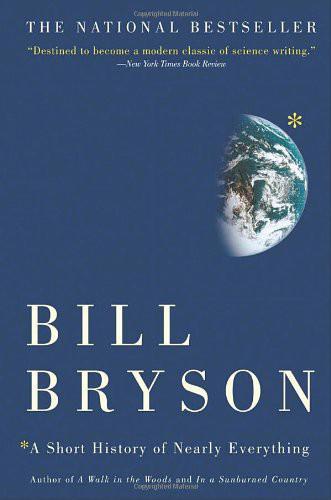
A Short History of Nearly Everything
by
Bill Bryson
Published 5 May 2003
The fireball exploded above Murchison, a town of six hundred people in the Goulburn Valley north of Melbourne, and came raining down in chunks, some weighing up to twelve pounds. Fortunately, no one was hurt. The meteorite was of a rare type known as a carbonaceous chondrite, and the townspeople helpfully collected and brought in some two hundred pounds of it. The timing could hardly have been better. Less than two months earlier, the Apollo 11 astronauts had returned to Earth with a bag full of lunar rocks, so labs throughout the world were geared up—indeed clamoring—for rocks of extraterrestrial origin. The Murchison meteorite was found to be 4.5 billion years old, and it was studded with amino acids—seventy-four types in all, eight of which are involved in the formation of earthly proteins.
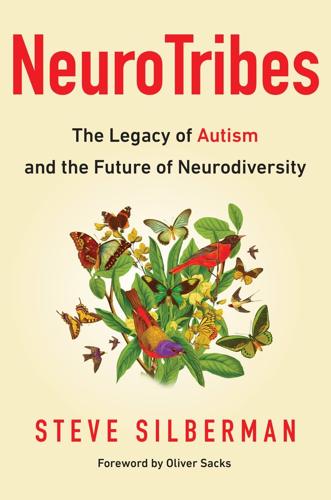
NeuroTribes: The Legacy of Autism and the Future of Neurodiversity
by
Steve Silberman
Published 24 Aug 2015
But this conference, organized by parents, was different: between the formal workshop sessions, speakers and participants commingled in the hallways and the dining room, sharing information on equal terms. Speech therapists, psychologists, and biochemists chatted informally with family members about their research. Most of the participants were too engaged by what was going on around them to pay much attention to the other historical milestone taking place that week: the landing of Apollo 11 on the moon. The air in the Sheraton Palace was electric as parents spontaneously formed support groups to address issues that weren’t acknowledged in the medical literature, such as the challenges of raising autistic girls, or parenting children who were blind as well as autistic. Rimland and Lovaas were on the speakers list, as was Eric Schopler, a former graduate student of Bettelheim’s at the University of Chicago who had gone head-to-head with him for scapegoating parents.
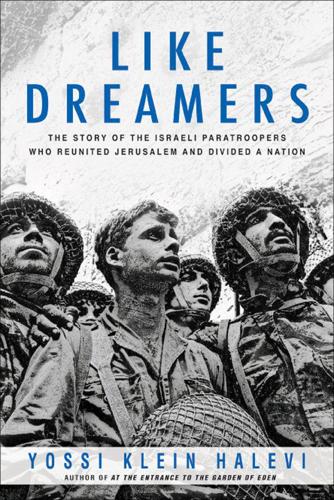
Like Dreamers: The Story of the Israeli Paratroopers Who Reunited Jerusalem and Divided a Nation
by
Yossi Klein Halevi
Published 4 Nov 2014
The paratroopers took turns napping, four men alert, three asleep. Arik didn’t sleep. Despite a cool wind, his shirt was damp with sweat. A full moon rose. Voices from an Egyptian position just across merged with the slowly moving water. No commandos appeared. Preparing to decamp as the first light broke, Arik looked up at the sky and suddenly remembered: Apollo 11 was approaching the moon. In the coming hours, a human being would take his first steps on its surface. The whole world was watching the future on television, and here he was, lying in the mud of the Middle East. FORTY-FIVE DAYS AFTER arriving at the canal, Arik returned to Tel Aviv. He had refused to take leave.
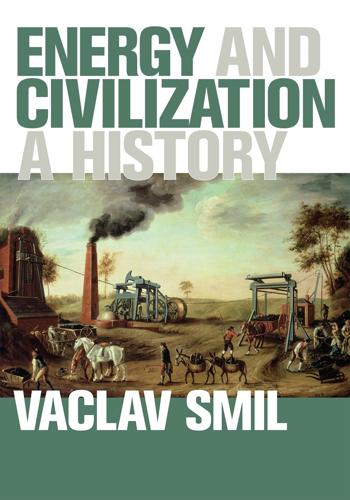
Energy and Civilization: A History
by
Vaclav Smil
Published 11 May 2017
Minuteman weapon system ICBM tested 1961 U.S. nuclear-powered aircraft carrier Enterprise launched Manned space flight (Yuri Gagarin) 1962 Transatlantic television relay (Telstar) 1964 Shinkansen (Japan National Railways) starts operation 1966 U.S. jumbo jet aircraft Boeing 747 ordered 1969 British-French supersonic aircraft Concorde takes off Boeing 747 in commercial service U.S. Apollo 11 spacecraft lands on Moon 1970s Radio and television satellite broadcasting Concerns about fossil fuel supplies Acid rain over Europe and North America Japanese car exports soar 1971 First microprocessors (Intel, Texas Instruments) 1973 OPEC’s first round of crude oil price increases (until 1974) 1975 Brazil starts producing automotive ethanol from sugar cane 1976 Concorde in commercial service Unmanned U.S.

The Emperor of All Maladies: A Biography of Cancer
by
Siddhartha Mukherjee
Published 16 Nov 2010
With their voices now muted in Washington, with little sympathy in the House and no friend in the Senate, the Laskerites were forced to revamp the strategy for their crusade—from backstage political maneuvering to front-stage public mobilization. In retrospect, that turn in their trajectory was well-timed. The success of Apollo 11 may have dramatically affected the Laskerites’ own view of their project, but, more important perhaps, it created an equally seismic shift in the public perception of science. That cancer could be conquered, just as the moon had been conquered, was scarcely a matter of doubt. The Laskerites coined a phrase to describe this analogy.
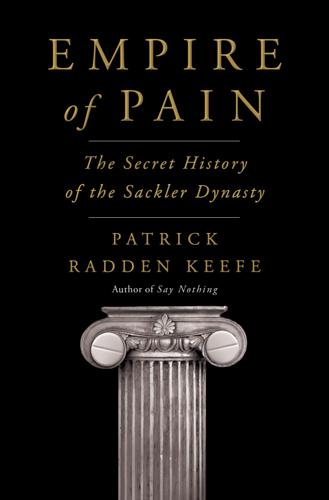
Empire of Pain: The Secret History of the Sackler Dynasty
by
Patrick Radden Keefe
Published 12 Apr 2021
When Columbia launched the first big exhibit of Arthur’s Asian art, in Low Library—the one that was staged by the window designer from Tiffany—Richard brought his roommate along to the show. “It was a big deal for Richard,” Kapit said. “He was so excited to see those beautiful objects.” The “whole family,” Kapit realized, “had a thing about Asian art and Asian beauty.” * * * On July 24, 1969, the Apollo 11 space capsule hurtled through earth’s atmosphere at twenty-five thousand miles per hour, shedding flaming shards of protective casing so that it resembled a giant fireball. Inside were the astronauts Neil Armstrong, Buzz Aldrin, and Michael Collins, who had just made history by walking on the moon.

Roller-Coaster: Europe, 1950-2017
by
Ian Kershaw
Published 29 Aug 2018
The gap in 1964 between television ownership in East and West Germany, for example, was fairly small: 42 per cent to 50 per cent of households. By 1970 Sweden had the greatest number of television sets proportionate to its population (312 sets for every 1,000 inhabitants) of any country in Europe, but Hungary (171 sets) was not far behind Ireland, Italy and Austria. On 20 July 1969 the landing on the moon by the Apollo 11 spacecraft and the first steps taken by mankind on its surface by Neil Armstrong and Buzz Aldrin were watched across the globe as extraordinary pictures were relayed by satellite to the largest television audience ever recorded up to that time – an estimated 530 million viewers worldwide. Televised sport was by this time becoming an integral part of popular culture.

1,000 Places to See in the United States and Canada Before You Die, Updated Ed.
by
Patricia Schultz
Published 13 May 2007
BEST TIMES: Wed noon for free talks in the American Treasures gallery; evenings at the Madison Building’s Mary Pickford Theater for showings of films from the museum’s collection. The Final Frontier THE NATIONAL AIR AND SPACE MUSEUM Washington, D.C. For those in thrall with the notion of flight, this is your place. Under one roof you’ll find Charles Lindbergh’s Spirit of St. Louis, Chuck Yeager’s Glamorous Glennis Bell X-1, the Apollo 11 command module, the Skylab space station, and some moon rocks collected by Apollo 17. Orville and Wilbur Wright made history’s first manned flight in 1903, but the Smithsonian’s aeronautical collection actually predates that by 17 years, beginning with its 1876 acquisition of a group of Chinese kites.
…
—JFK, Sept. 12, 1962 KENNEDY SPACE CENTER Cape Canaveral, Florida Set amid 150,000 acres of marshland and mangrove swamp, Kennedy Space Center has been the headquarters of American rocketry and space exploration since the launch of the unmanned Bumper 8 research rocket in July 1950. Eleven years later Alan Shepard lifted off from the Cape’s Pad 5 to become the first American in space, and in July 1969 Apollo 11 blasted off from Pad 39A, carrying Neil Armstrong, Buzz Aldrin, and Michael Collins to the moon. Since the end of the Apollo missions in 1972, the base has been home to America’s space shuttle and International Space Station programs, and to unmanned missions that have traveled to Mars and beyond.

The Rough Guide to Australia (Travel Guide eBook)
by
Rough Guides
Published 14 Oct 2023
Included in the entry fee is access to the Motor Museum, which features some impressive automobiles from as far back as 1920, and the last Cadillac Elvis ever owned. The quirky Henry Parkes Museum features artefacts and local memorabilia from the last century. Parkes Observatory Newell Hwy, 20km north of Parkes • Daily 8.30am–4.15pm • Free • http://parkes.atnf.csiro.au The Parkes Observatory radio telescope was used for tracking the Apollo 11 mission to the moon, and featured in the 2000 film The Dish. The observatory’s visitor centre has displays on space and the observatory’s work, and continuously screens the 22-minute Invisible Universe and a changing roster of short 3D films. Arrival and information Parkes By plane You can fly here from Sydney (1–6 daily; 1hr–1hr 40min) with Regional Express.
…
Men in rugged circumstances Comrades (Bill Douglas, 1986). The second half of masterful, magical Comrades sees the Tolpuddle Martyrs exiled to Australia, a land of surreal, sometimes brutal, encounters and epic beauty. The Dish (Rob Sitch, 2000). Light-hearted take on how Australia saved NASA during the broadcasting of the 1969 Apollo 11 moon landing from New South Wales’ Parkes Space Observatory, and an aside on how the country’s technological skills are often overlooked. Starring Sam Neill. Gallipoli (Peter Weir, 1980). A deservedly classic buddy movie in which a young Mel Gibson strikingly evokes the Anzacs’ cheery idealism and the tragedy of their slaughter.
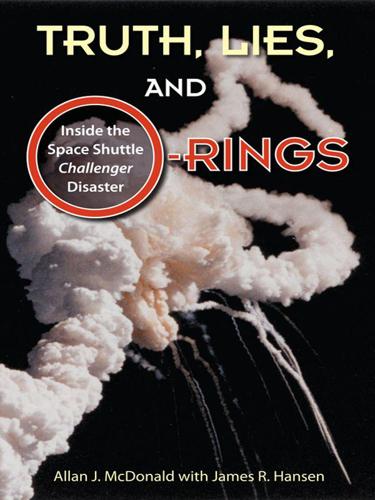
Truth, Lies, and O-Rings: Inside the Space Shuttle Challenger Disaster
by
Allan J McDonald
and
James R. Hansen
Published 25 Apr 2009
Prior to the appearance of this impressive book, most interpretations of the Challenger disaster had been highly critical of the role played by Alabama's NASA Marshall Space Flight Center. In his 1998 autobiographical survey of American space history, Liftoff: The Story of America's Adventure in Space (NASA/Grove Press), even the fair-minded Michael Collins, command module pilot for the historic Apollo 11 mission, had come down hard on Marshall. “Huntsville has become a castle whose occupants have pulled up the drawbridge, leaving the moat full of serpents,” Collins wrote. MSFC was “the only part of NASA that did not cooperate fully” with the Rogers Commission investigating the Challenger accident.

Growth: From Microorganisms to Megacities
by
Vaclav Smil
Published 23 Sep 2019
The history of ubiquitous artifacts illustrates two opposite mass trends: miniaturization of commonly used components and devices on one hand (a trend enabled to an unprecedented degree by the diffusion of solid-state electronics), and a substantial increase in the average mass of the two largest investments modern families make, cars and houses, on the other. The declining mass of computers is, obviously, just an inverse of their growing capability to handle information per unit of weight. In August 1969, the Apollo 11 computer used to land the manned capsule on the Moon weighed 32 kg and had merely 2 kB of random access memory (RAM), or about 62 bytes per kg of mass (Hall 1996). Twelve years later, IBM’s first personal computer weighed 11.3 kg and 16 kB RAM, that is 1.416 kB/kg. In 2018 the Dell laptop used to write this book weighed 2.83 kg and had 4 GB RAM, or 1.41 GB/kg.

Western USA
by
Lonely Planet
KENNECOTT’S BINGHAM CANYON COPPER MINE The view into the century-old mine (www.kennecott.com; Hwy 111; per vehicle $5; 8am-8pm Apr-Oct), 20 miles southwest of SLC, is slightly unreal. Massive dump trucks (some more than 12ft tall) look no larger than toys as they wind up and down the world’s largest excavation. The 2.5-mile-wide and 0.75-mile-deep gash, which is still growing, is visible from space – and there’s a picture from Apollo 11 inside the museum to prove it. Overall, it’s a fascinating stop. Activities Within easy reach on the east side of the Wasatch mountain range, Big and Little Cottonwood Canyons not only have excellent skiing but opportunities for hiking, mountain biking and camping. For more,Click here. Church Fork Trail HIKING (Millcreek Canyon, off Wasatch Blvd; admission $3) Looking for the nearest workout with big views?

Coastal California Travel Guide
by
Lonely Planet
RICHARD NIXON LIBRARY & MUSEUM The Nixon Library ( GOOGLE MAP ; %714-993-5075; www.nixonfoundation.org; 18001 Yorba Linda Blvd, Yorba Linda; adult/child 5-11yr/student/senior $16/6/10/12; h10am-5pm Mon-Sat, 11am-5pm Sun; p) offers a fascinating walk though America’s modern history and that of this controversial native son of Orange County (1913–94), who served as president from 1969 to 74. Noteworthy exhibits include a full-size replica of the White House East Room, recordings of conversations with Apollo 11 astronauts on the moon, access to the ex-presidential helicopter – complete with wet bar and ashtrays – and excerpts from landmark TV appearances including the Kennedy-Nixon debates and Nixon's famous self-parody on the Laugh-In comedy show. Exhibits about Watergate, the infamous scandal that ultimately brought down Nixon's administration, also figure prominently.

Southwest USA Travel Guide
by
Lonely Planet
KENNECOTT’S BINGHAM CANYON COPPER MINE The view into the century-old mine (www.kennecott.com; Hwy 111; per vehicle $5; 8am-8pm Apr-Oct), 20 miles southwest of SLC, is slightly unreal. Massive dump trucks (some more than 12ft tall) look no larger than toys as they wind up and down the world’s largest excavation. The 2.5-mile-wide and 0.75-mile-deep gash, which is still growing, is visible from space – and there’s a picture from Apollo 11 inside the museum to prove it. Overall, it’s a fascinating stop. UNIVERSITY FOOTHILLS DISTRICT Utah Museum of Natural History MUSEUM (http://umnh.utah.edu; 200 Wakara Way; adult/child $7/5, 10am-5pm Mon-Sat) The massive Rio Tinto Center makes a suitable home for the museum’s prize Huntington Mammoth, one of the most complete fossils of its kind in the world.
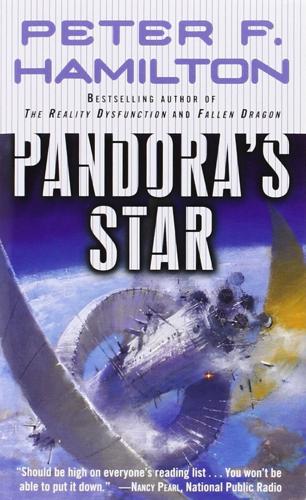
Pandora's Star
by
Peter F. Hamilton
Published 2 Mar 2004
Wilson didn’t even begrudge her that; political correctness wouldn’t allow it any other way. And NASA was ever mindful of pleasing as many people as possible. Commander Lewis was busy taking a high-resolution photo of his historic footprint. A requirement that had been in the NASA manual for the last eighty-one years, ever since Apollo 11 got back home to find that embarrasing omission. Lieutenant Commander Orchiston was going down the ladder—a lot faster than Commander Lewis. Wilson stepped into the airlock. He couldn’t even remember the time the little chamber took to cycle; it never existed in his personal awareness. Then it was him backing out onto the ladder.

The Rough Guide to England
by
Rough Guides
Published 29 Mar 2018
Major refurbishments have created some fantastic new displays, including the Zaha Hadid-designed Maths Gallery, though with redesigns ongoing, some areas are closed for the foreseeable future. On the ground floor, Exploring Space follows the history of rockets and space, with a full-size replica of the Apollo 11 landing craft which deposited US astronauts on the moon in 1969. Making the Modern World displays iconic inventions of modern science and technology, including Robert Stephenson’s Rocket of 1829. Other galleries cover flight – including flight simulators and a vast gallery of flying machines – energy and materials.